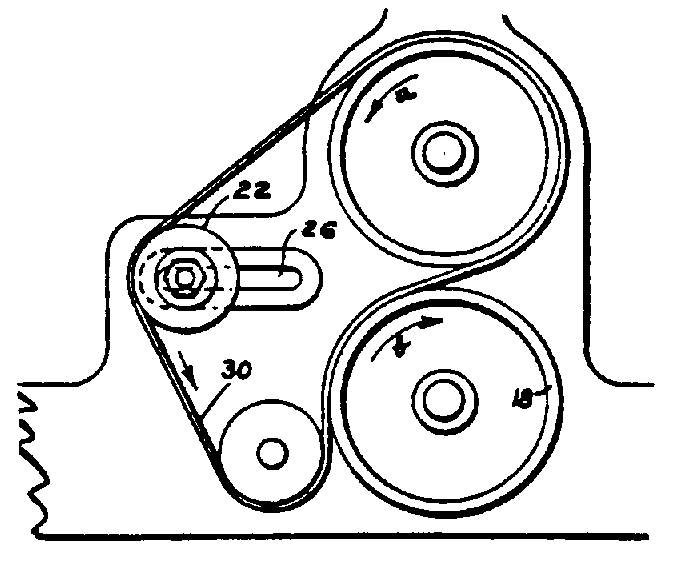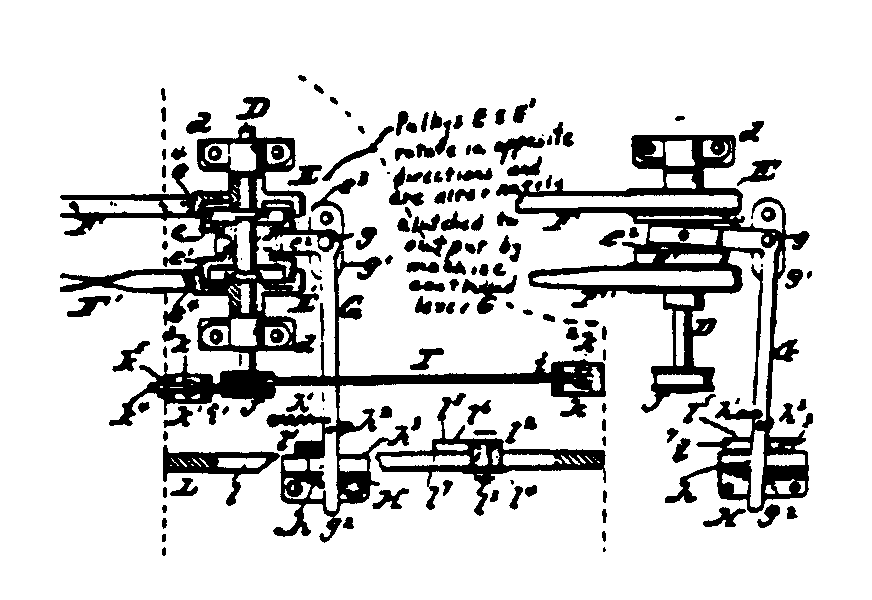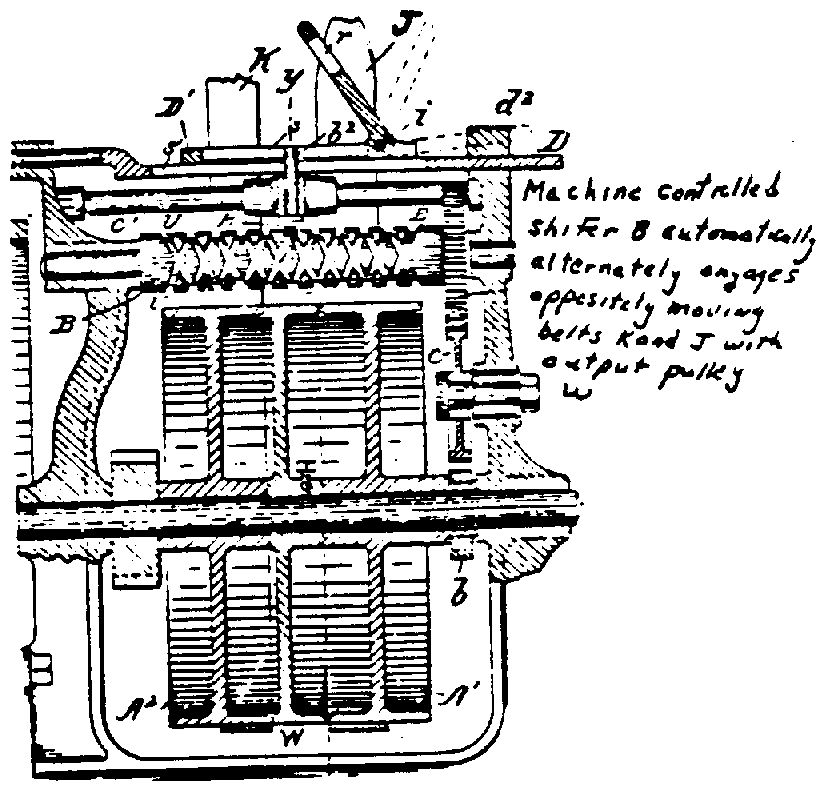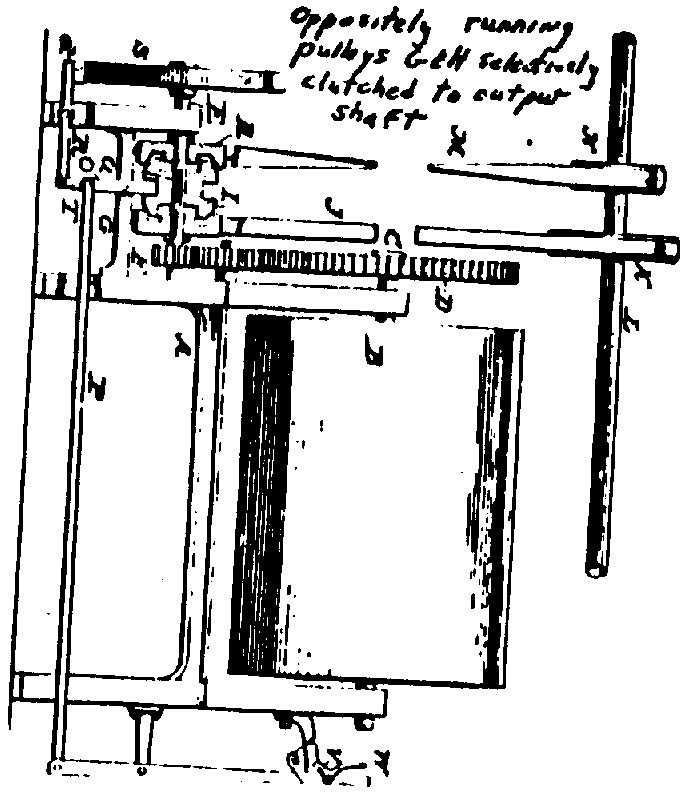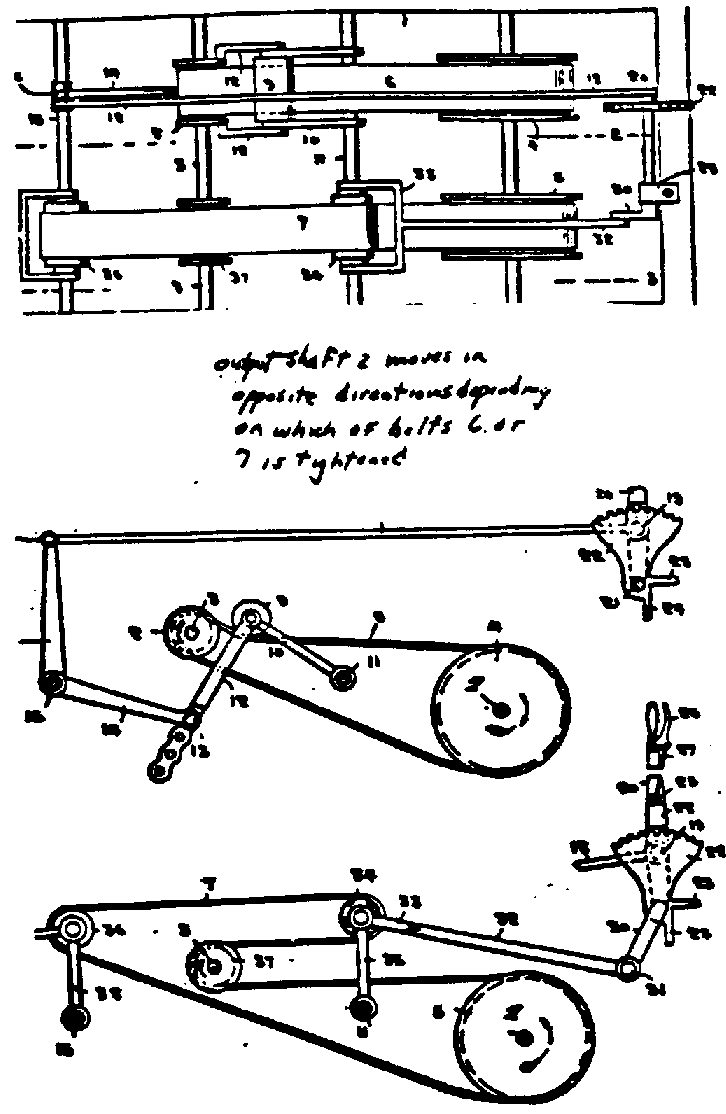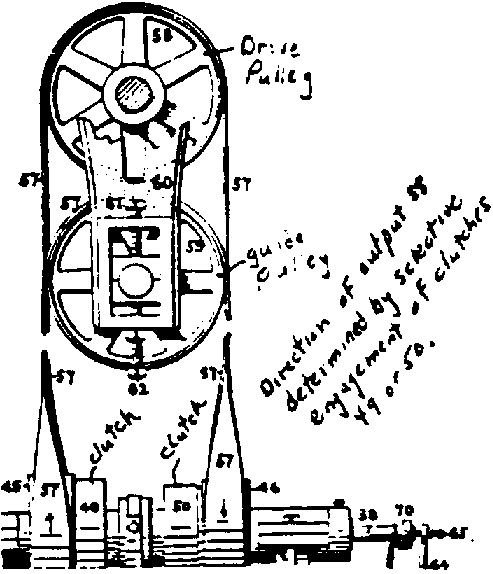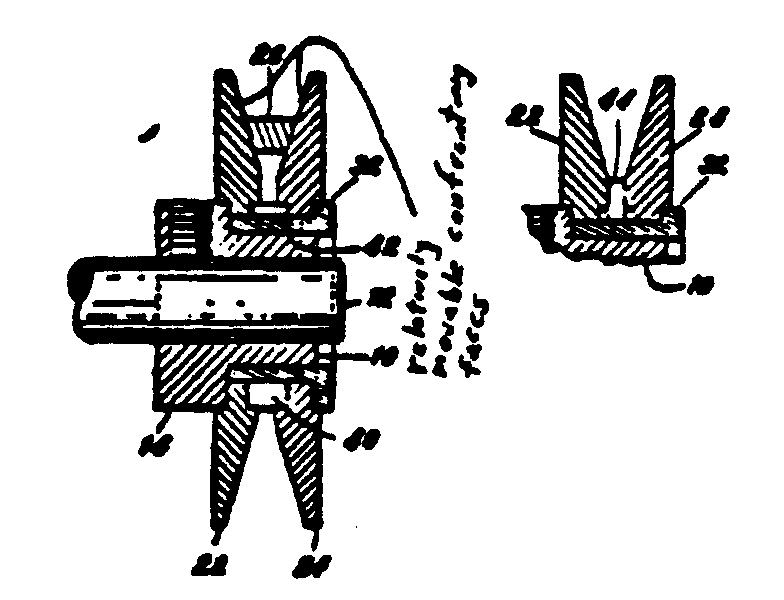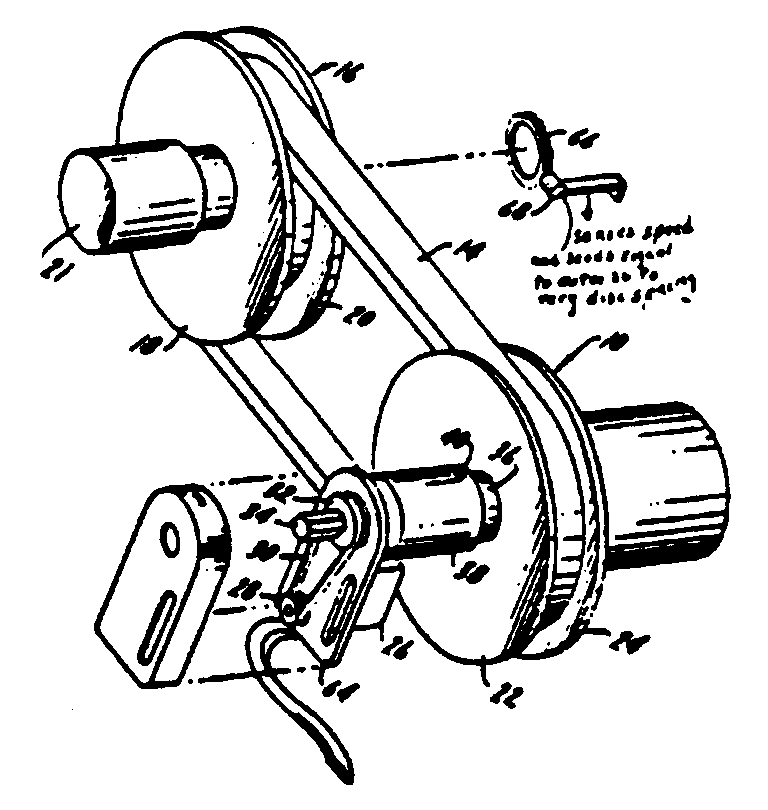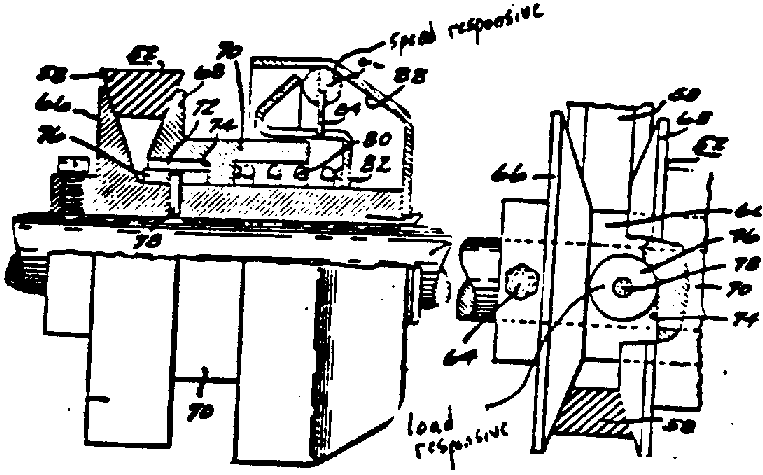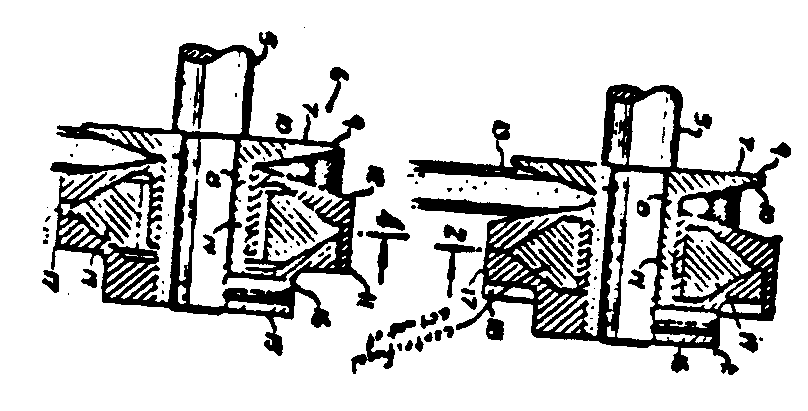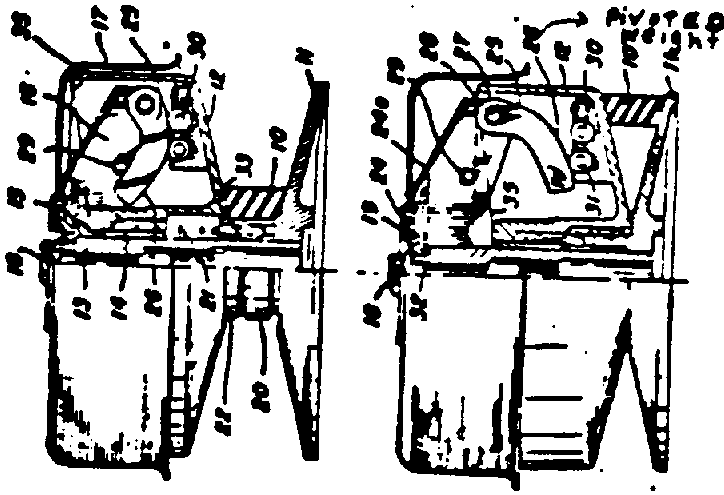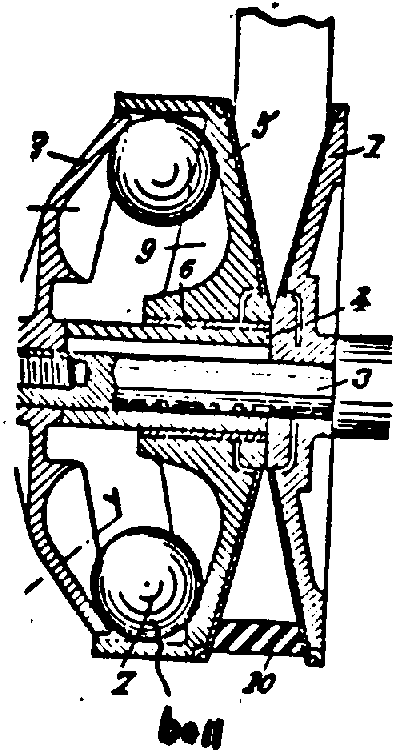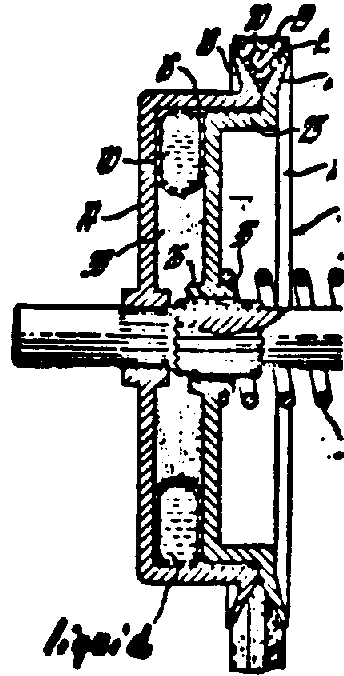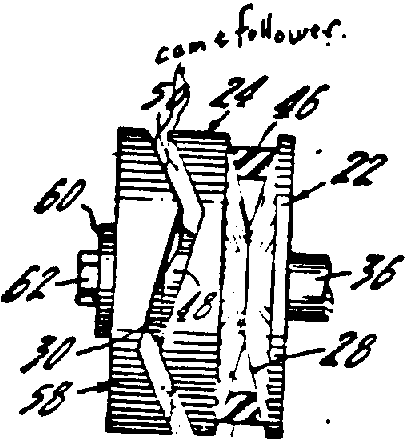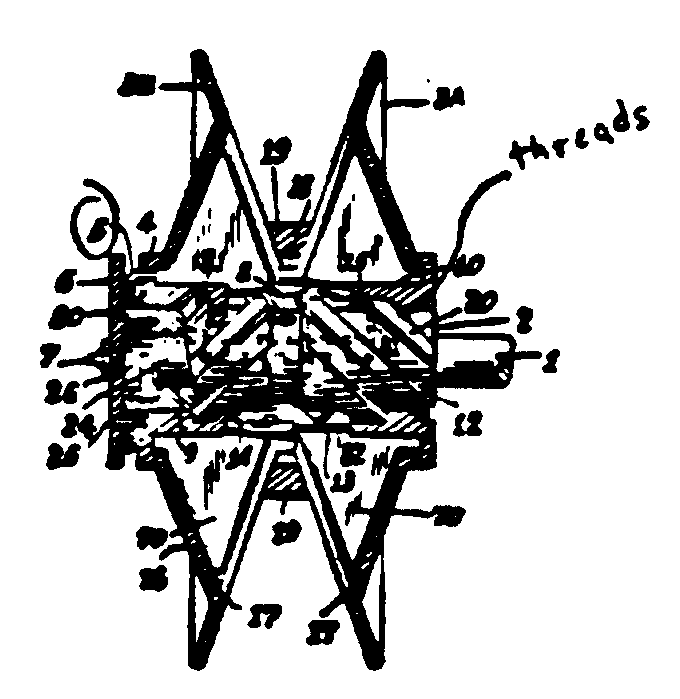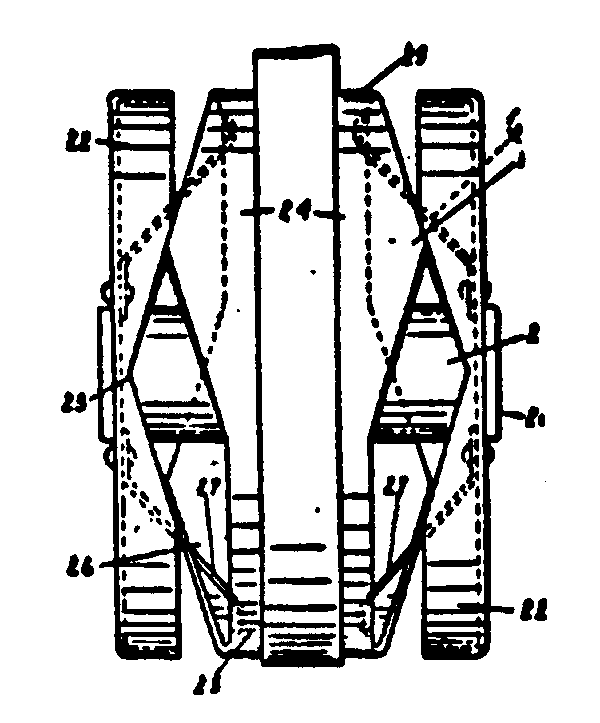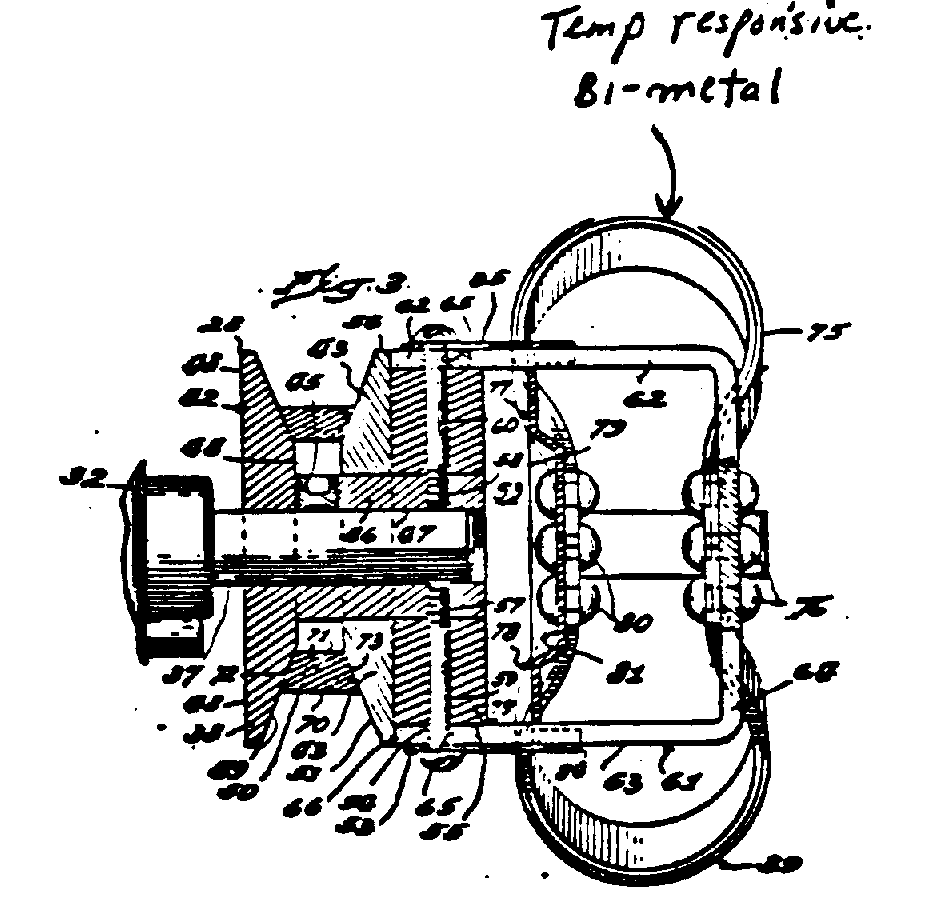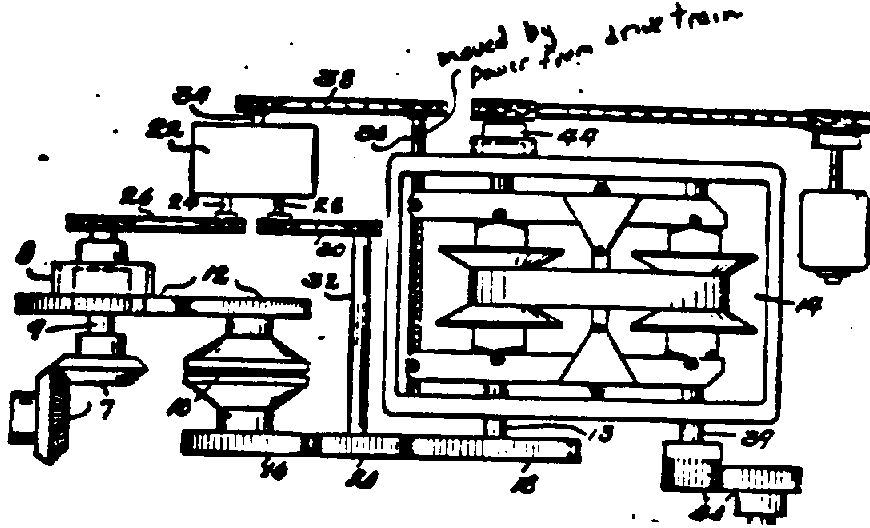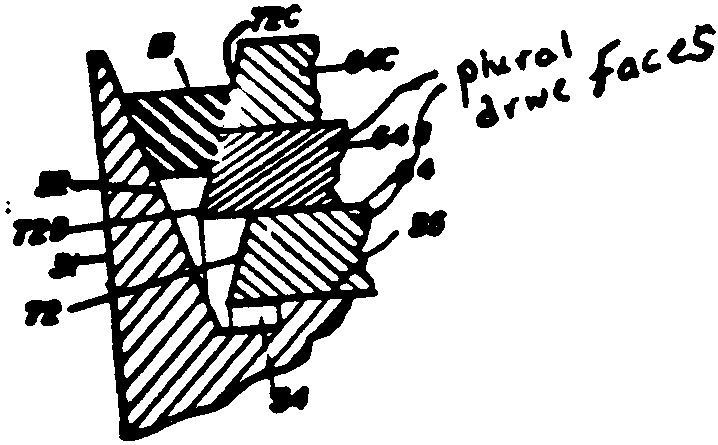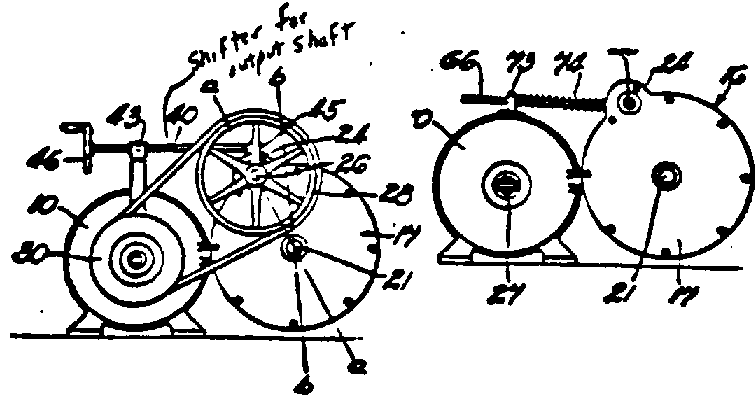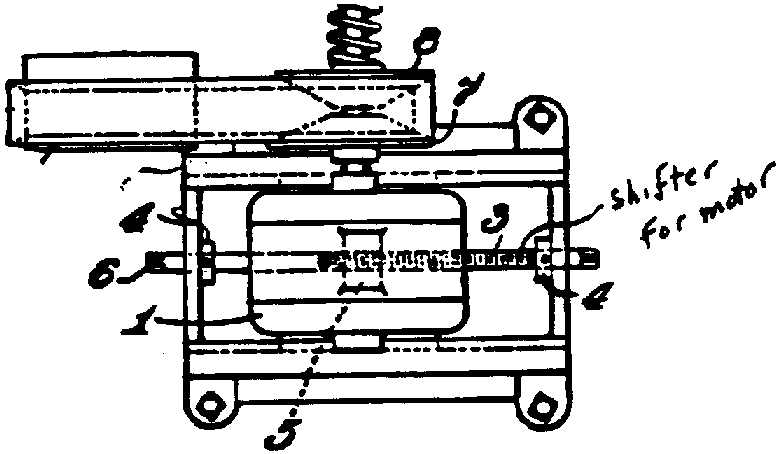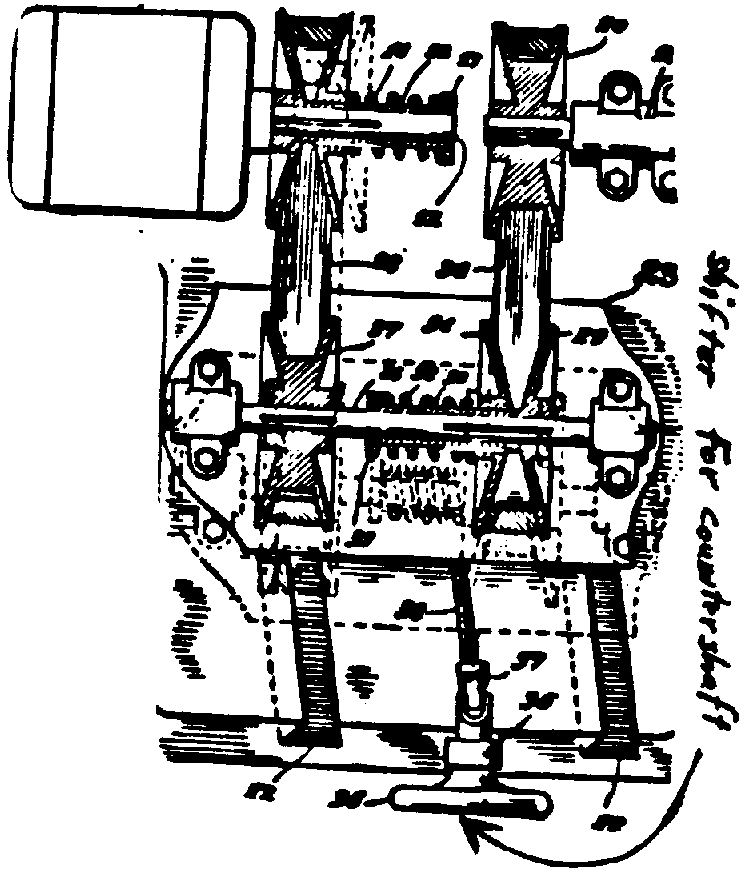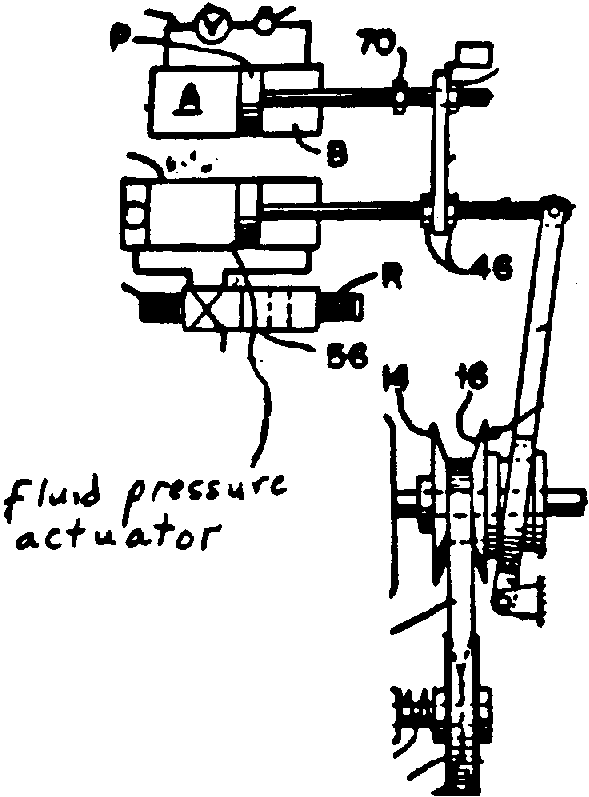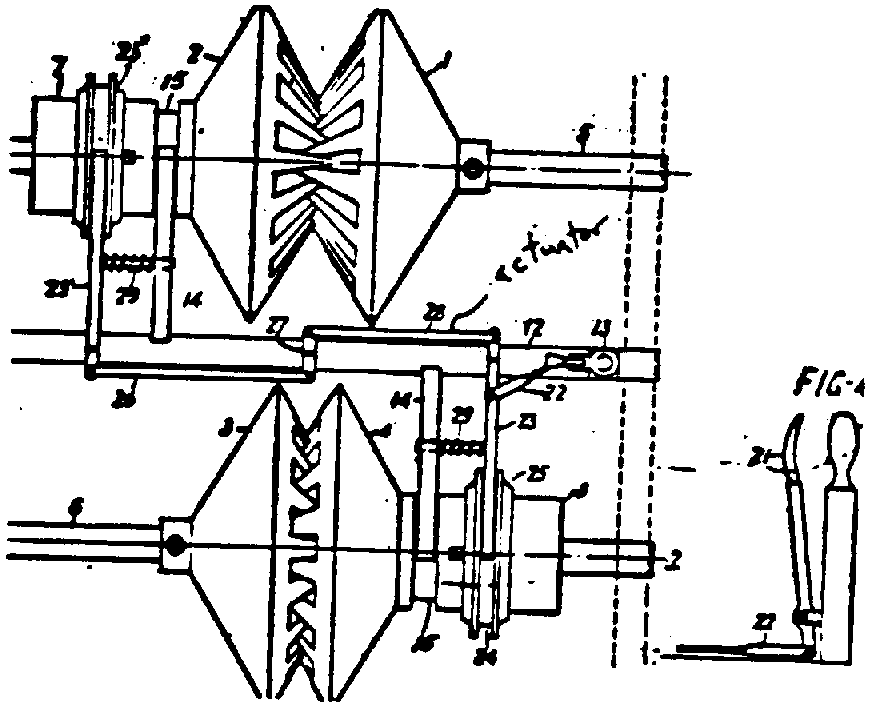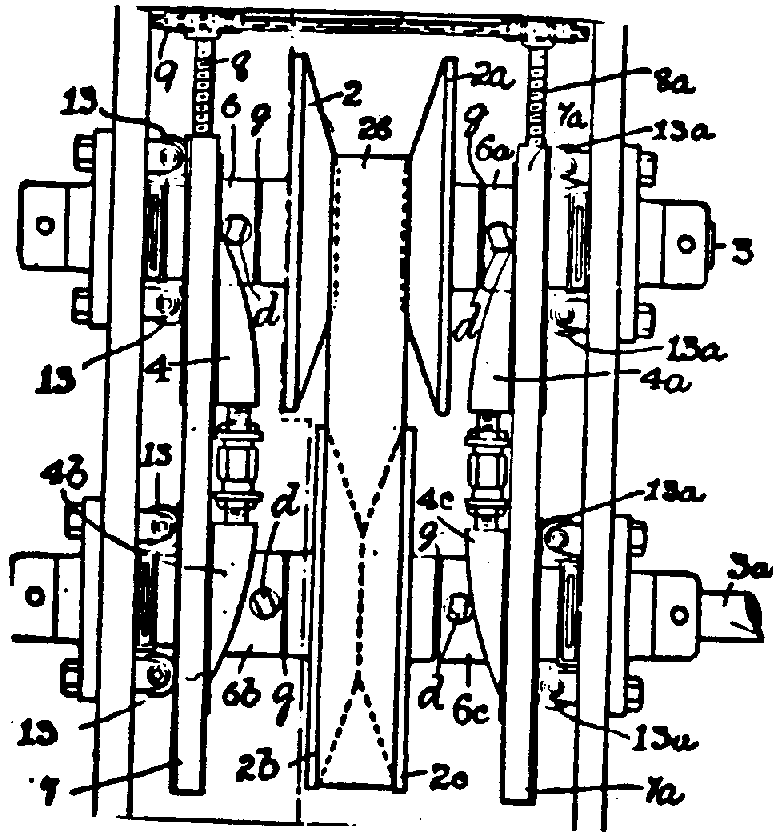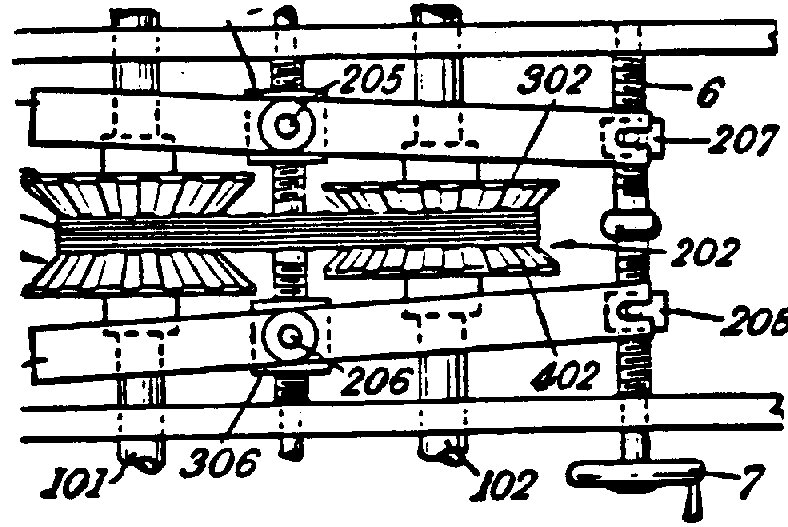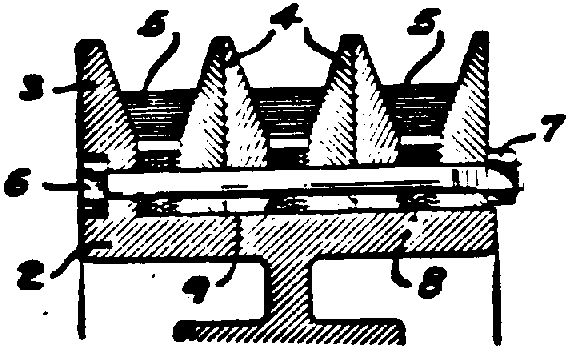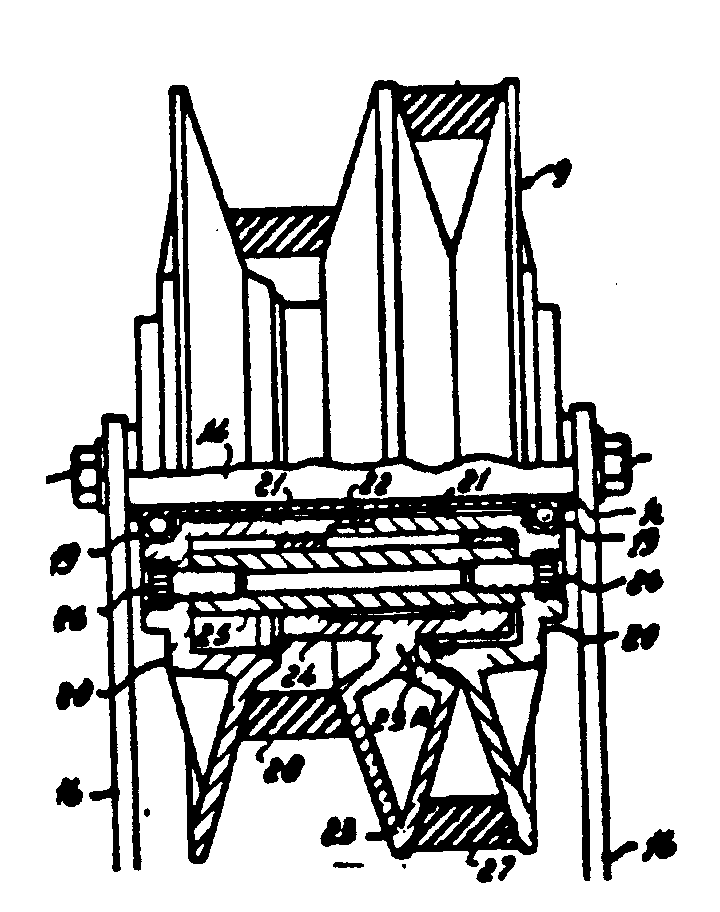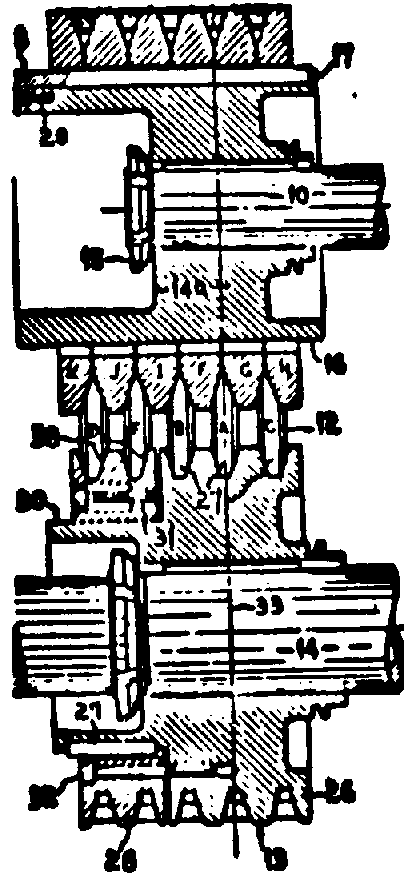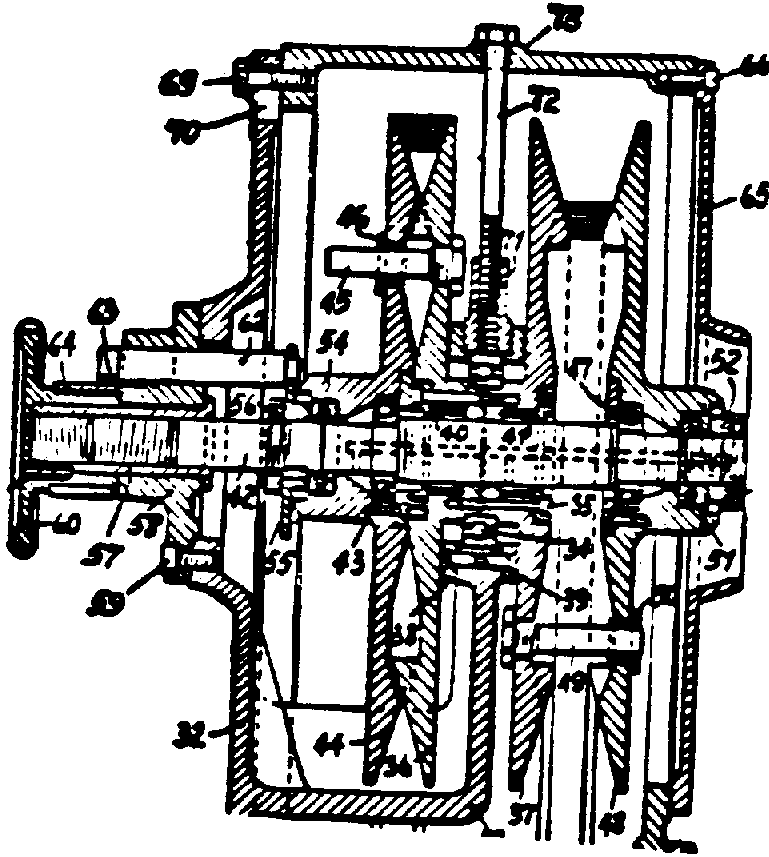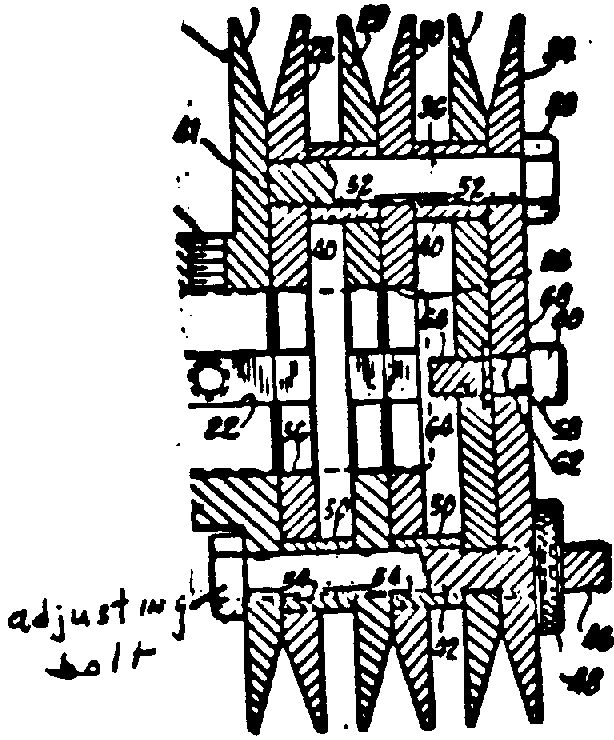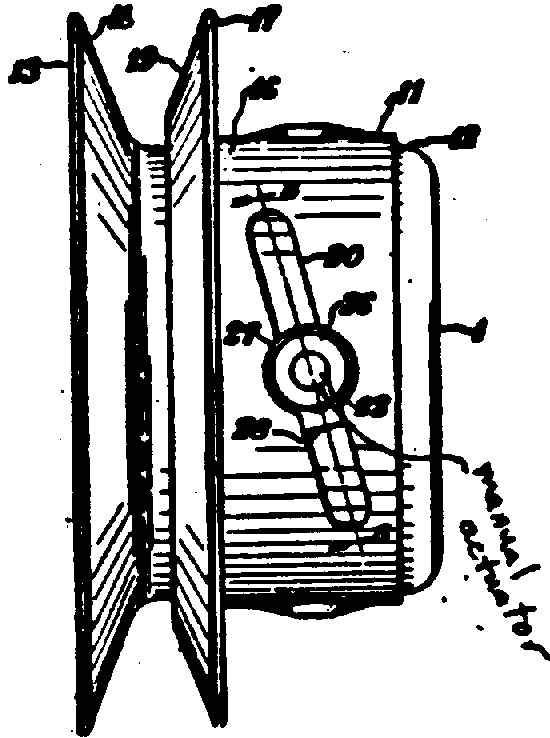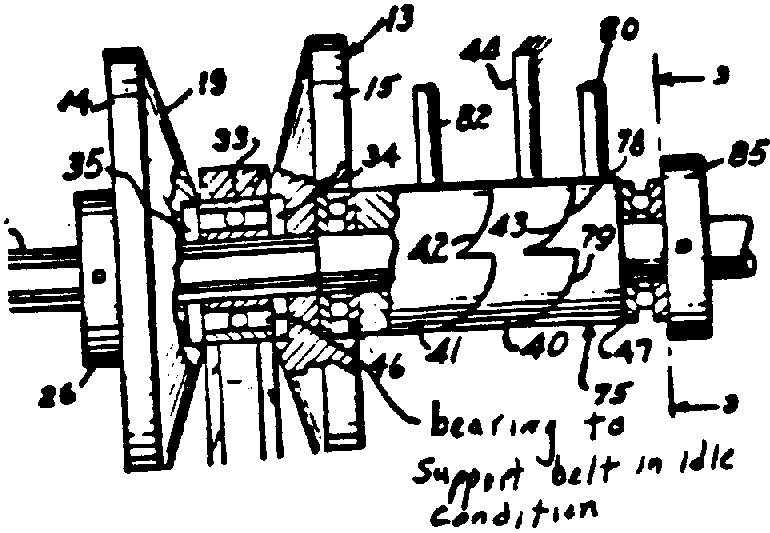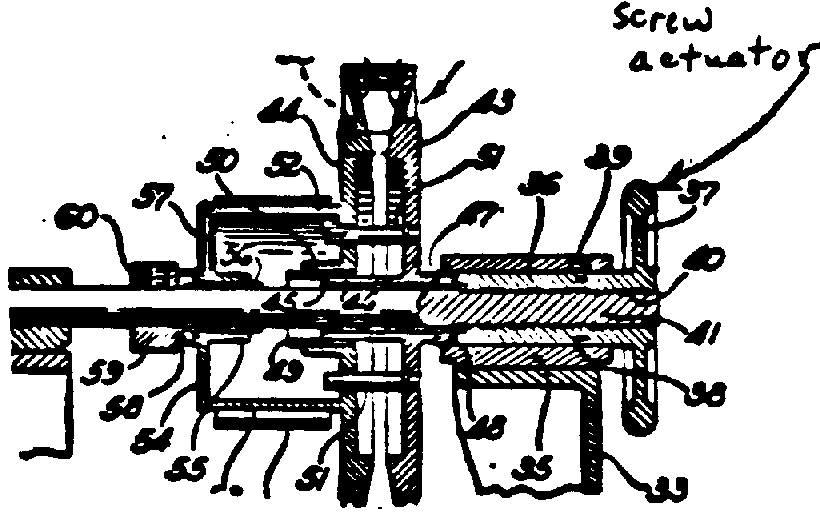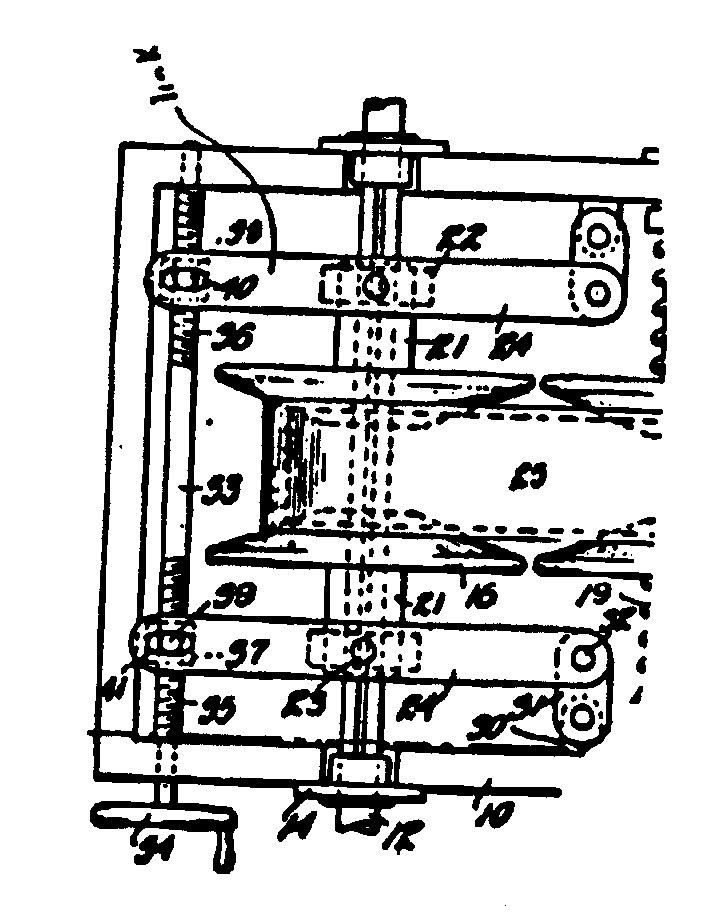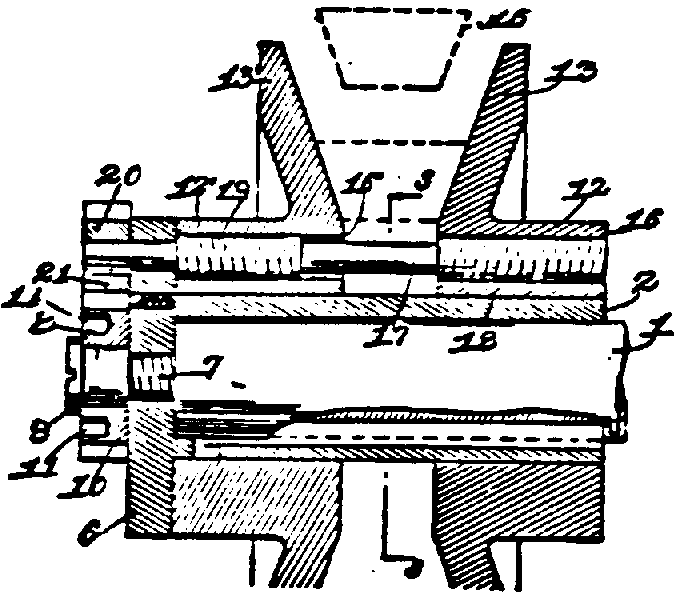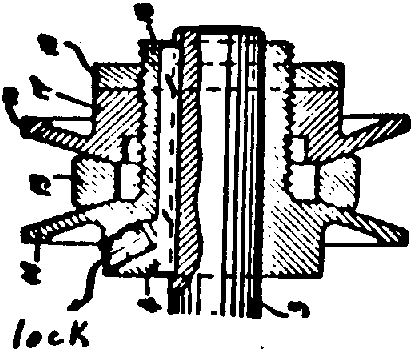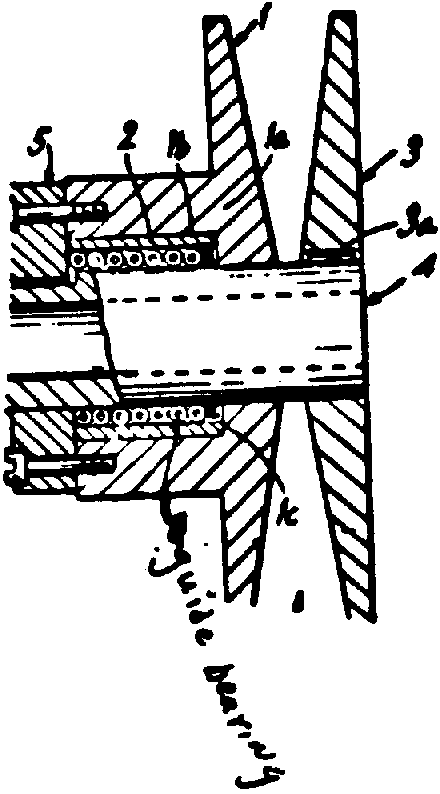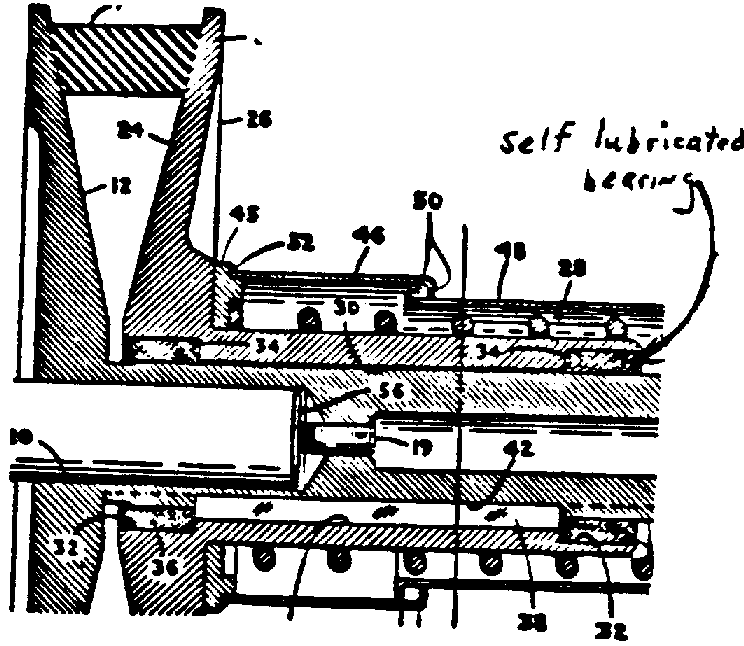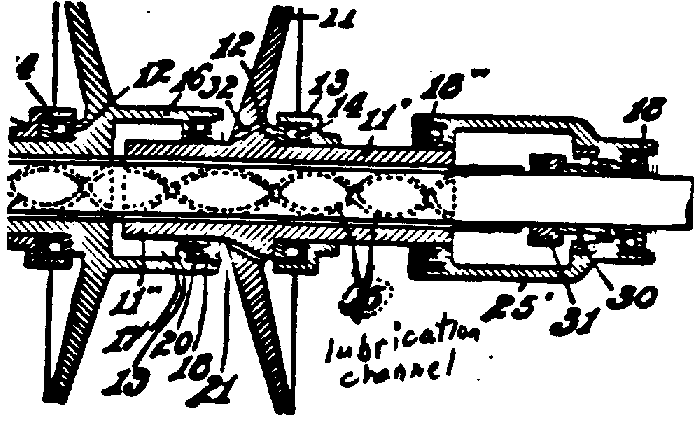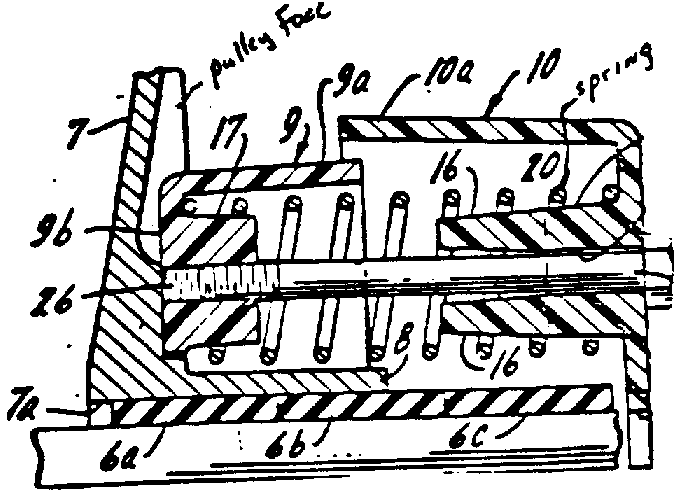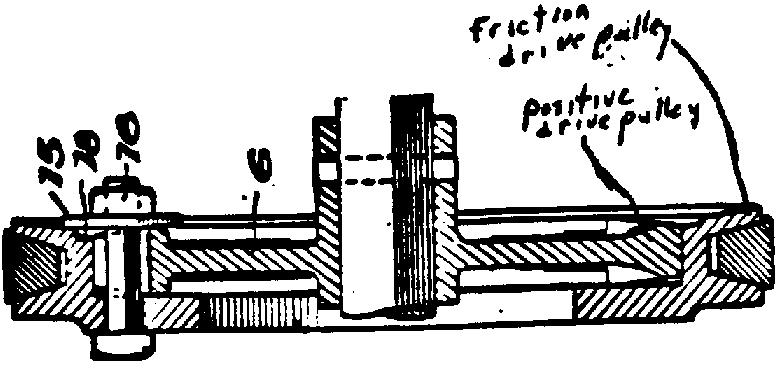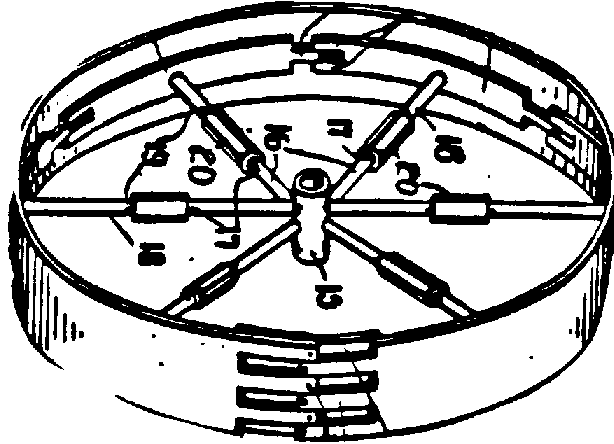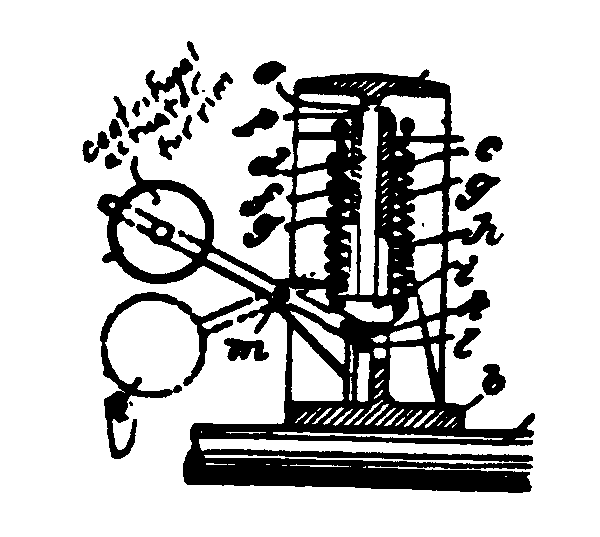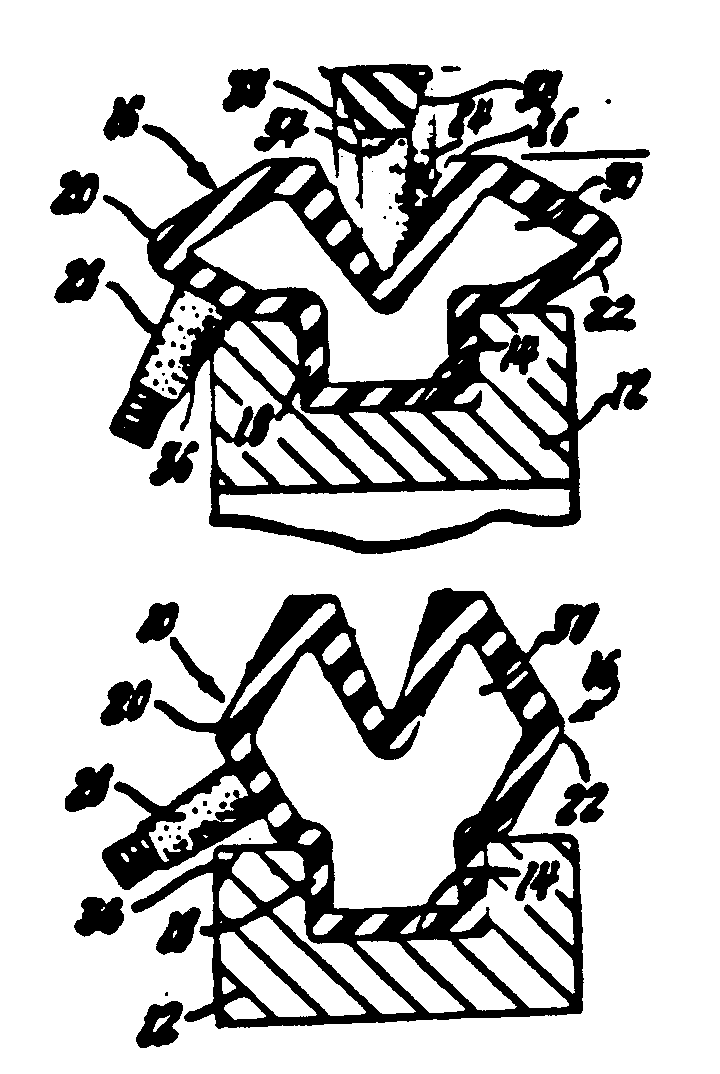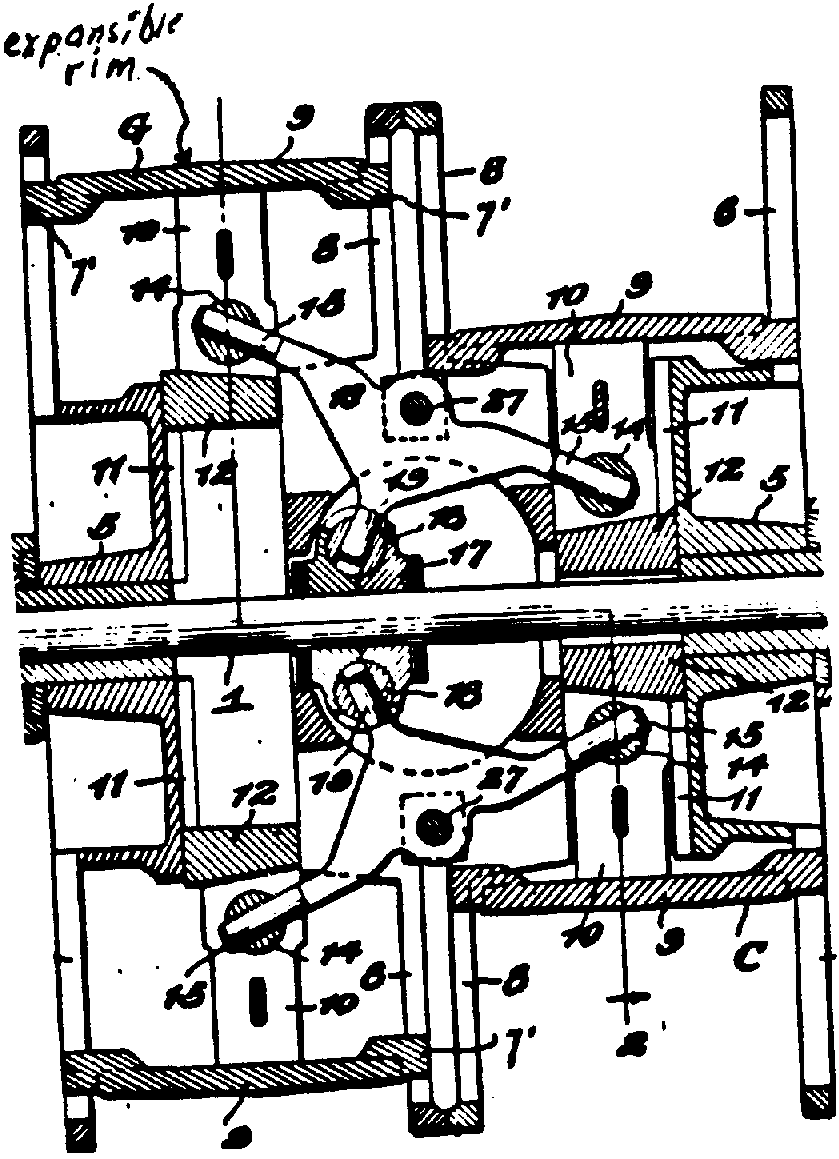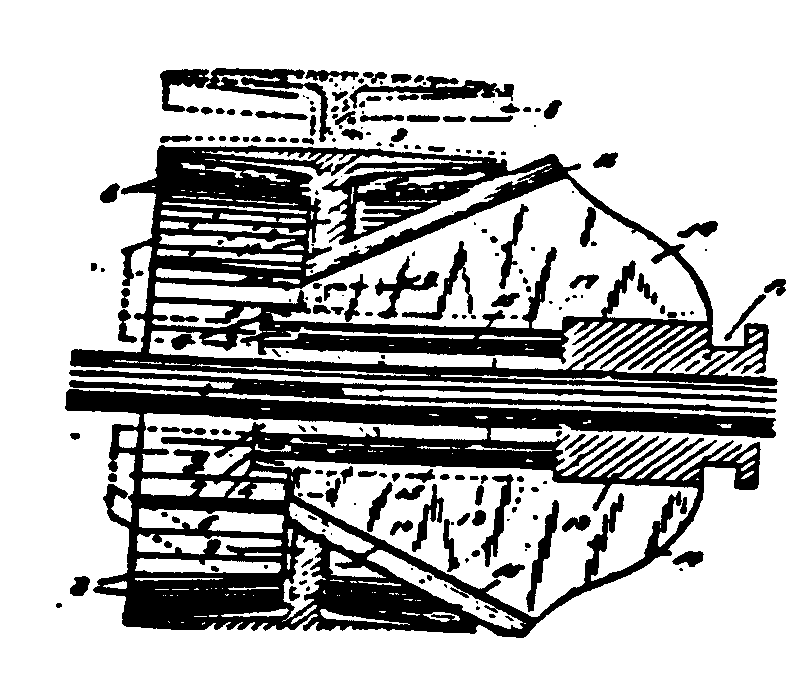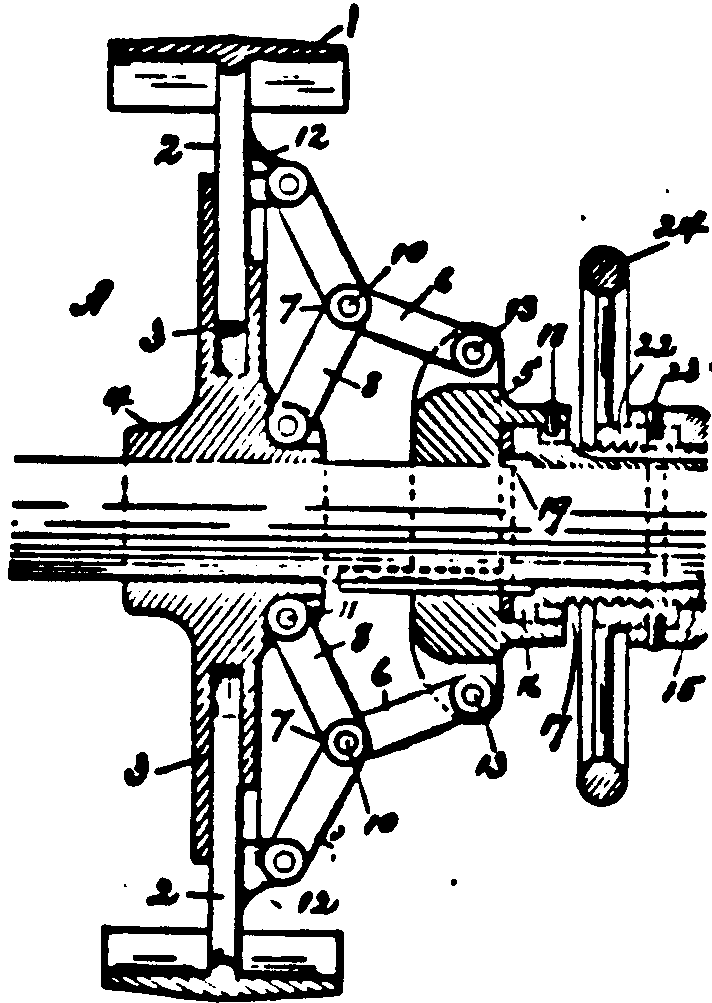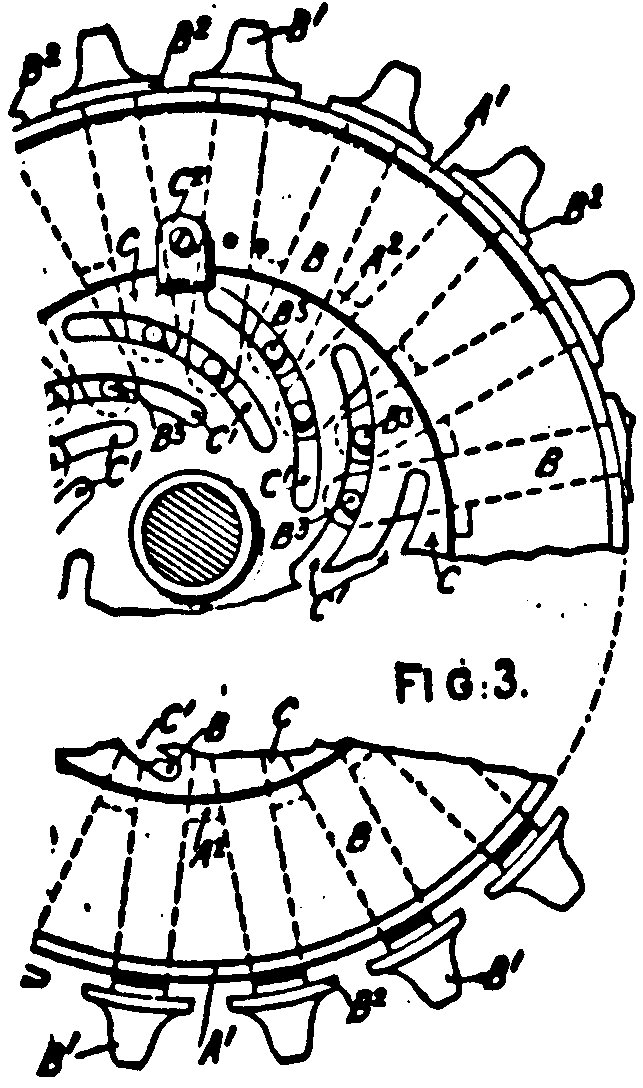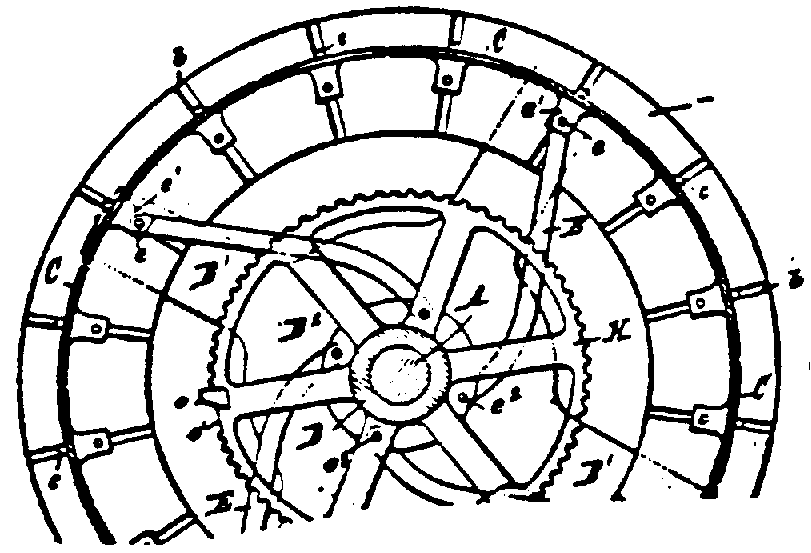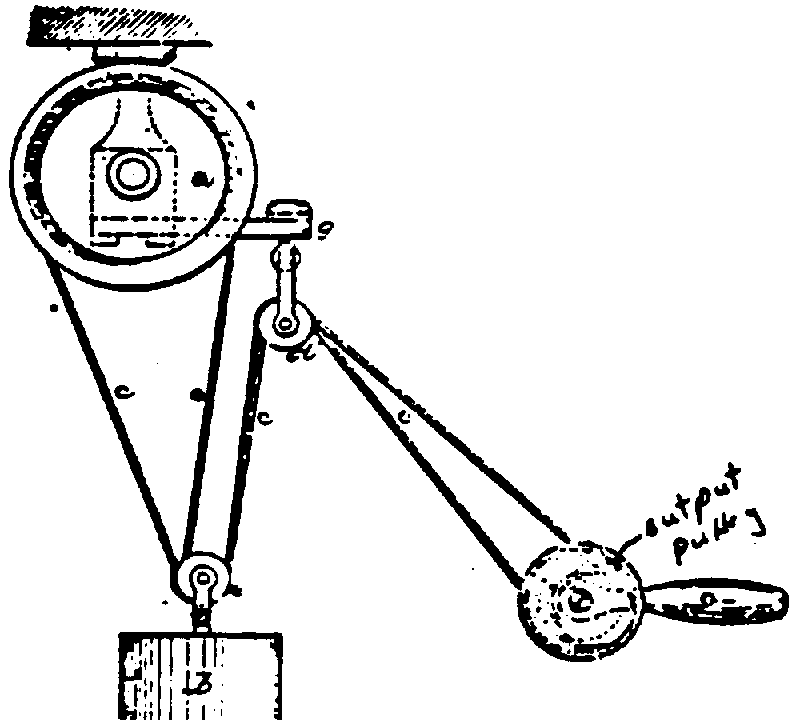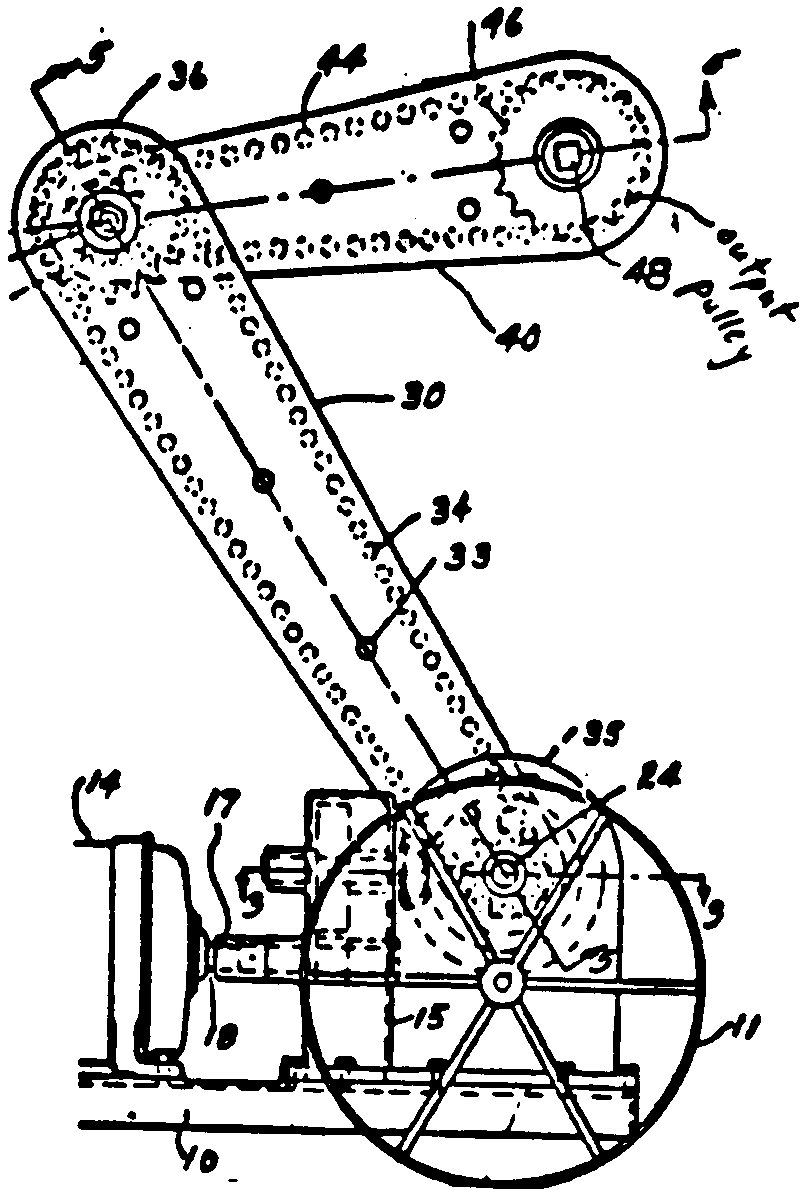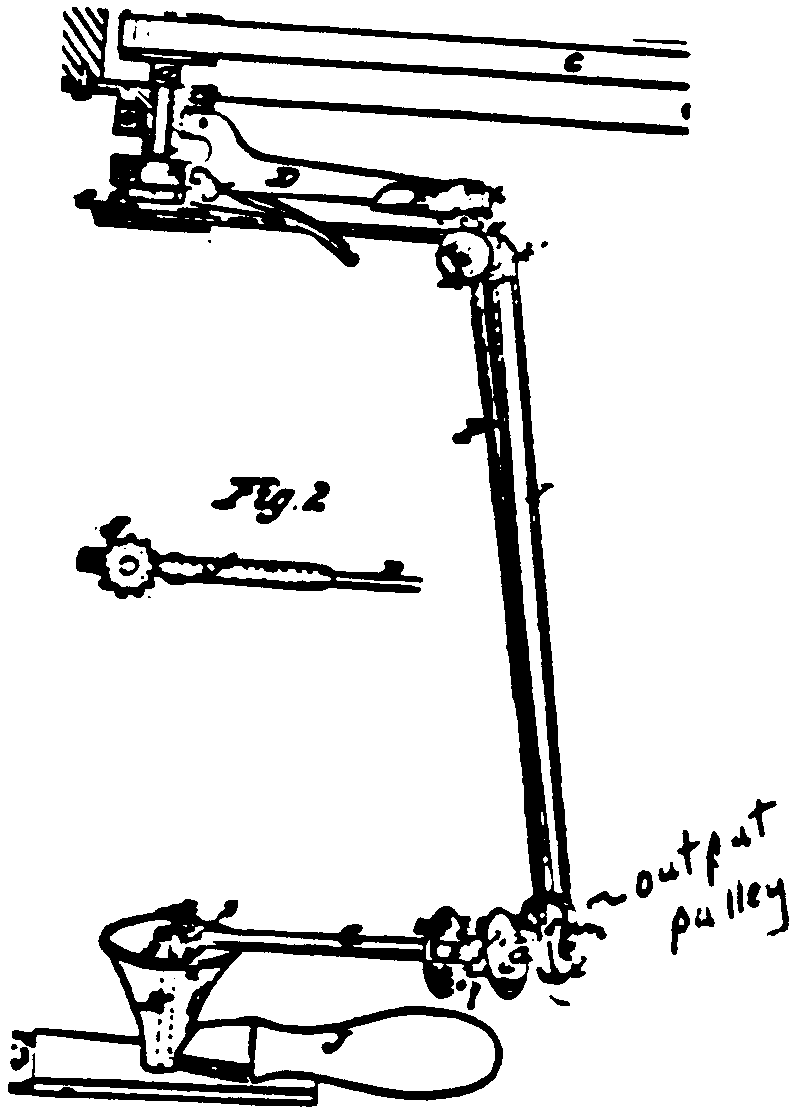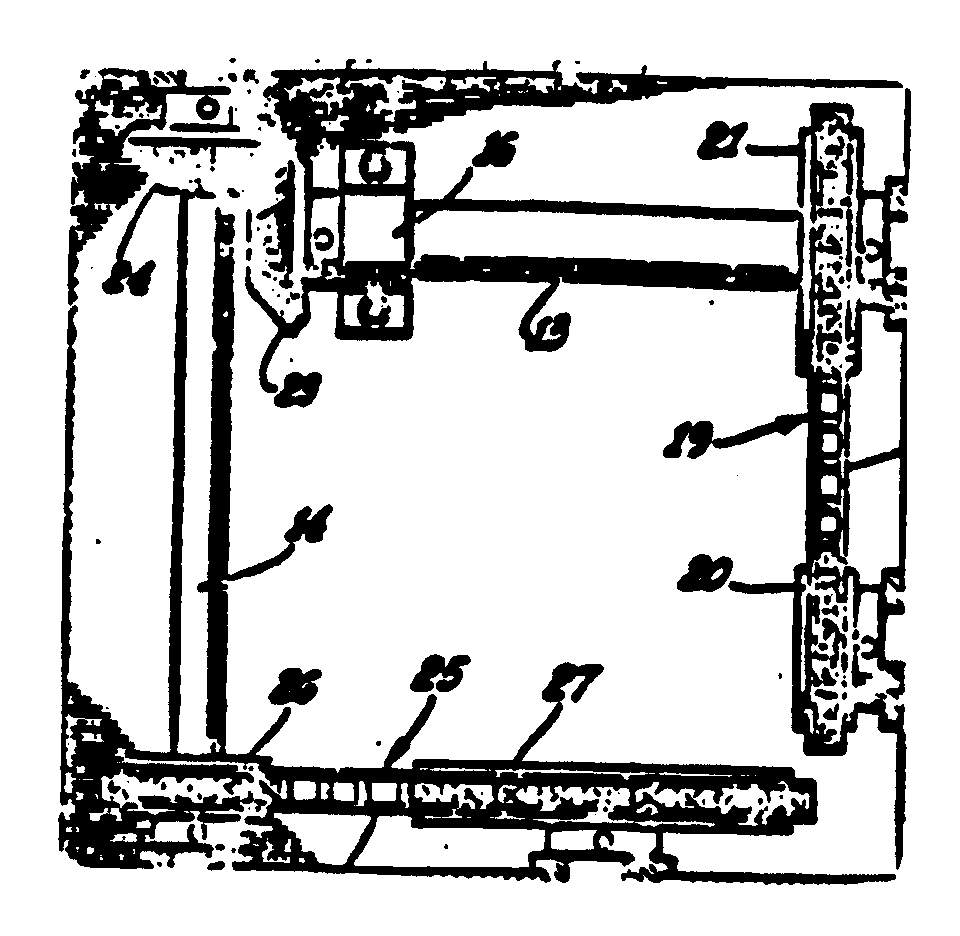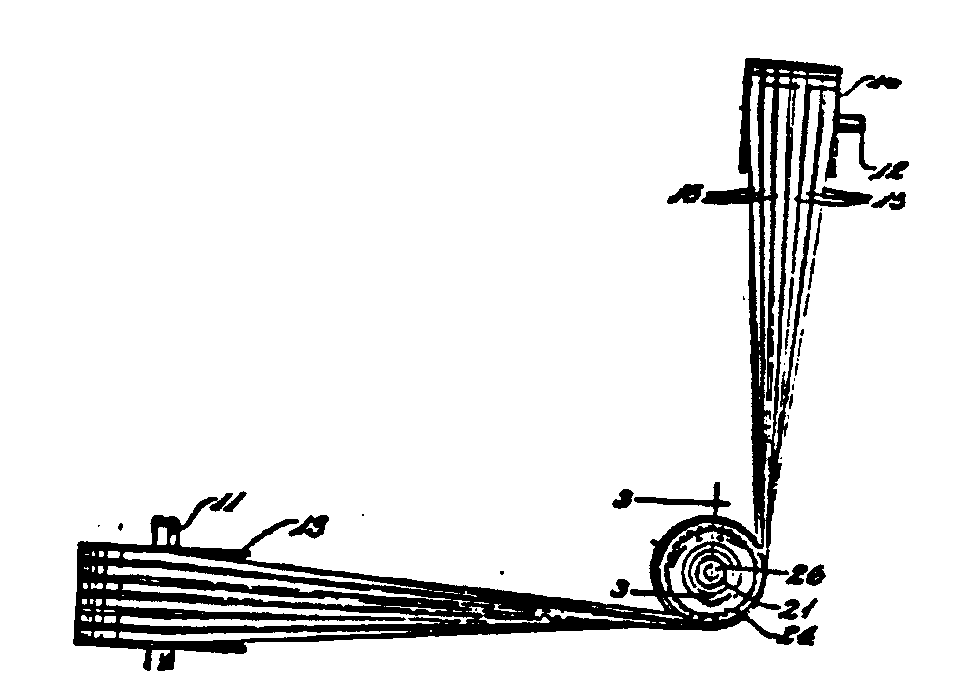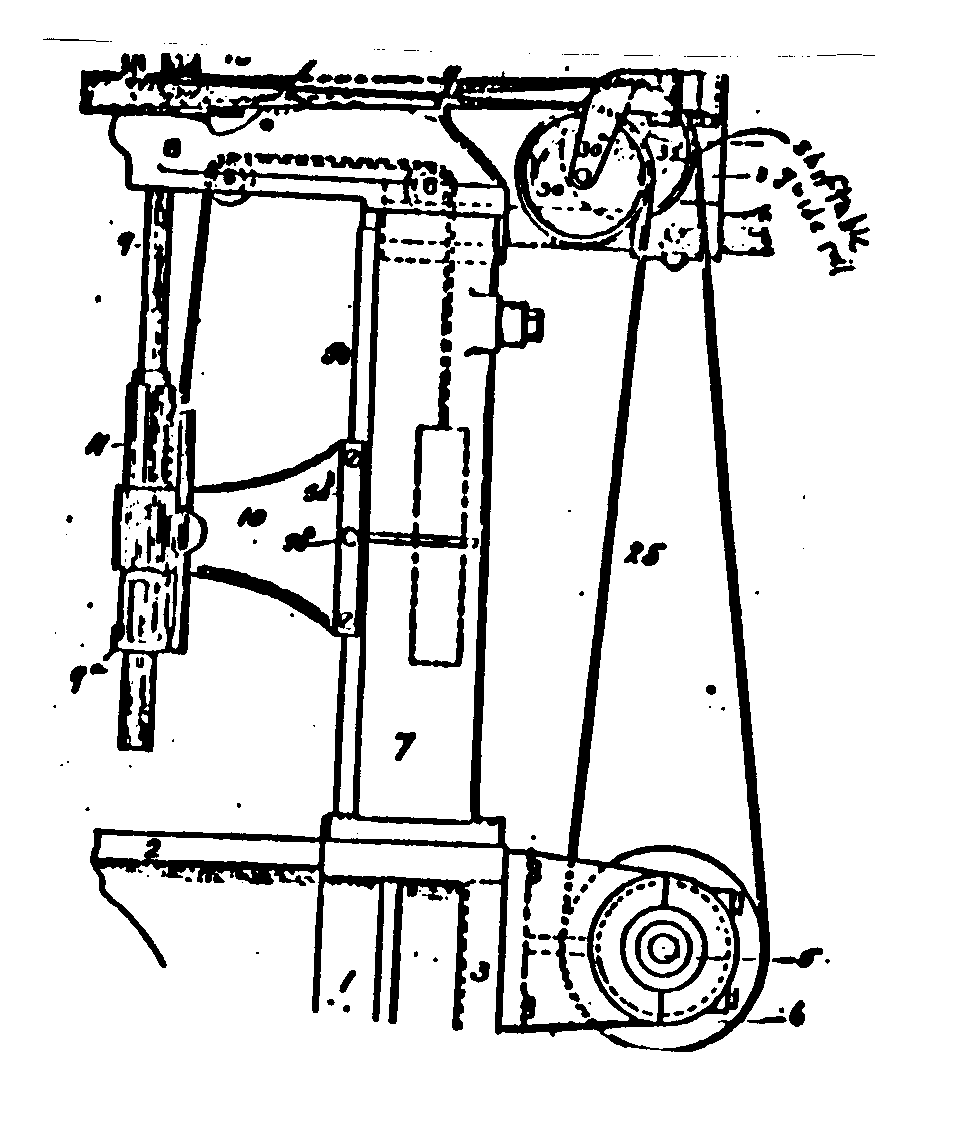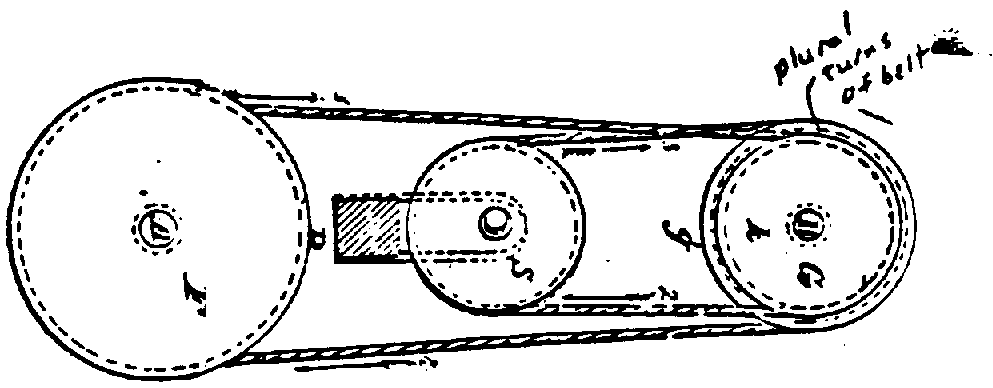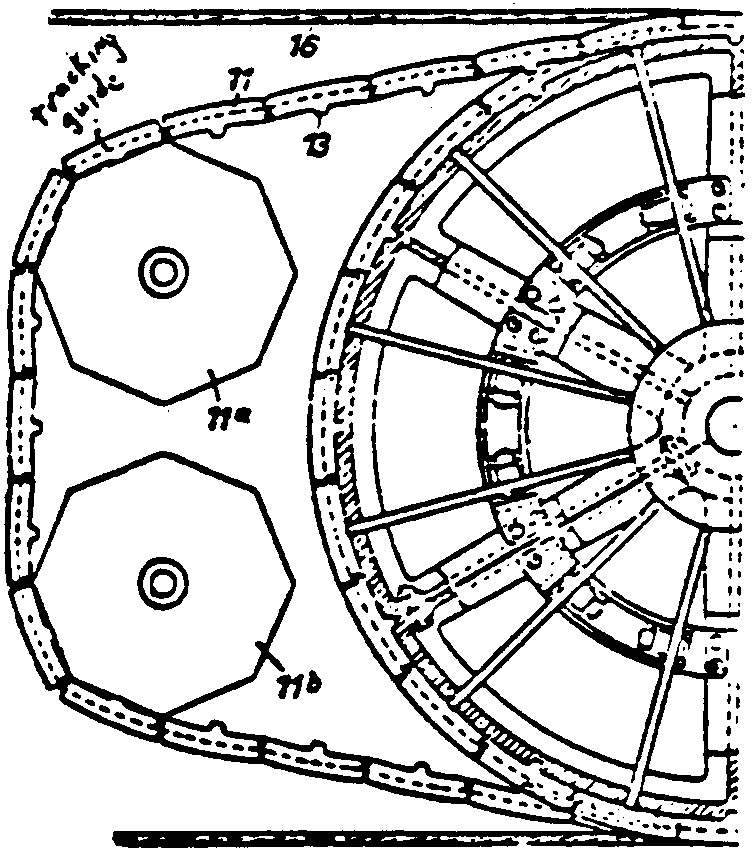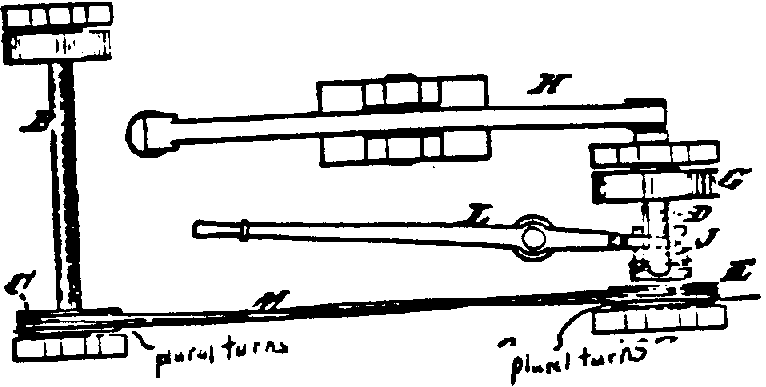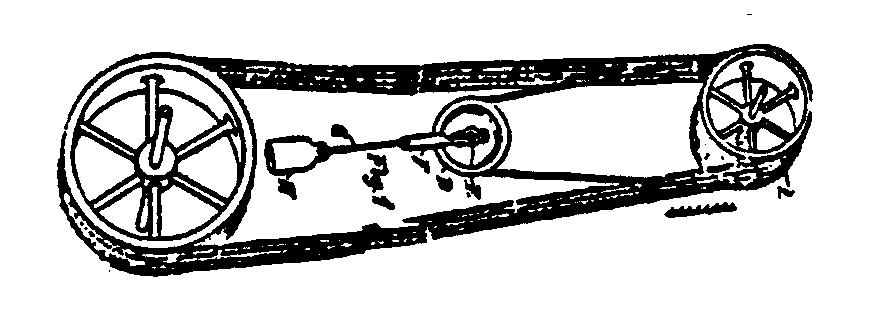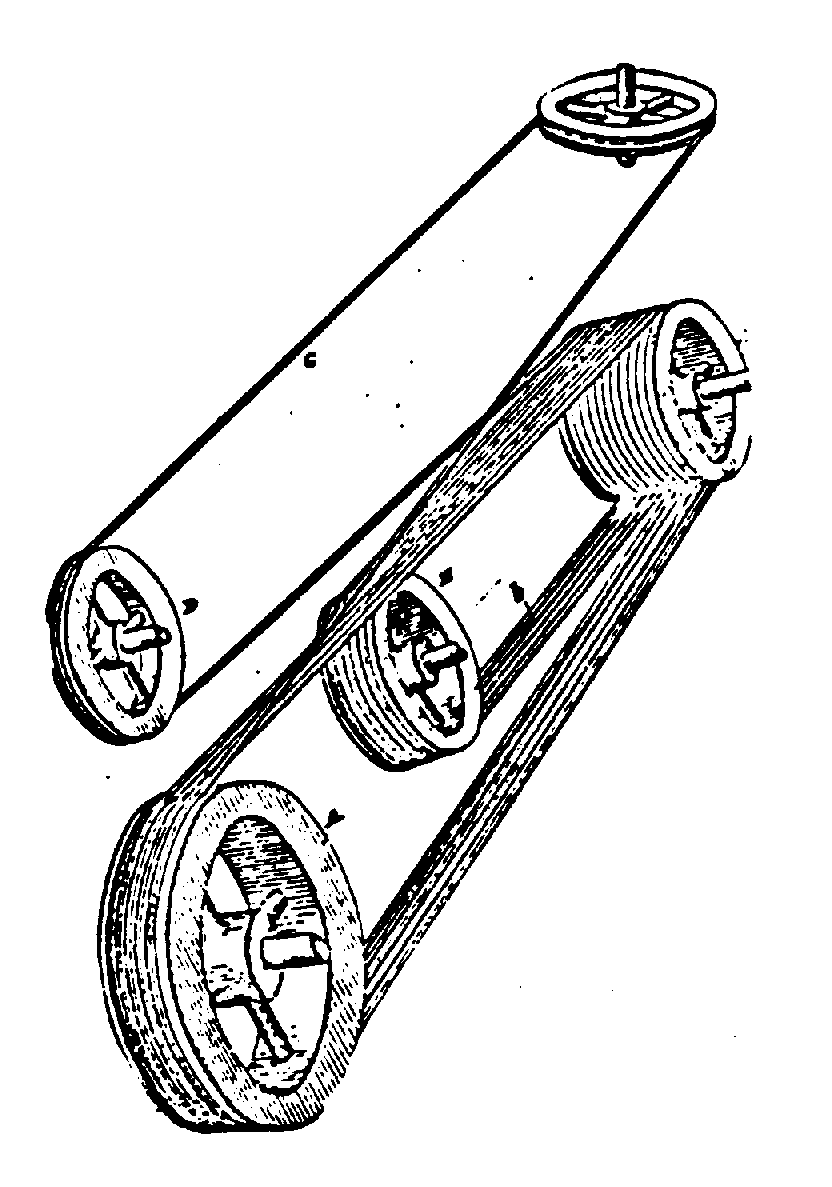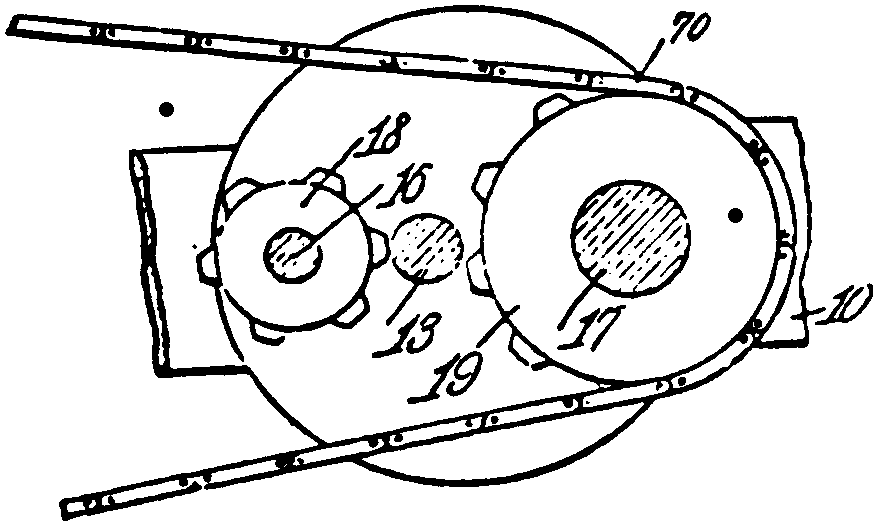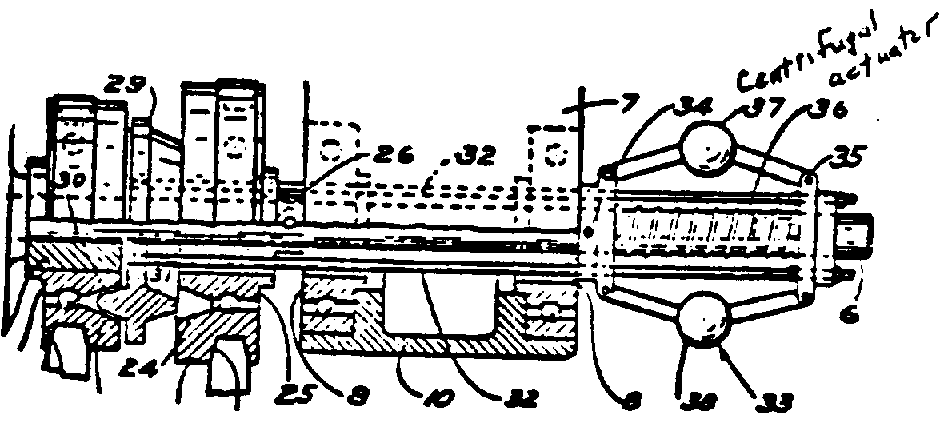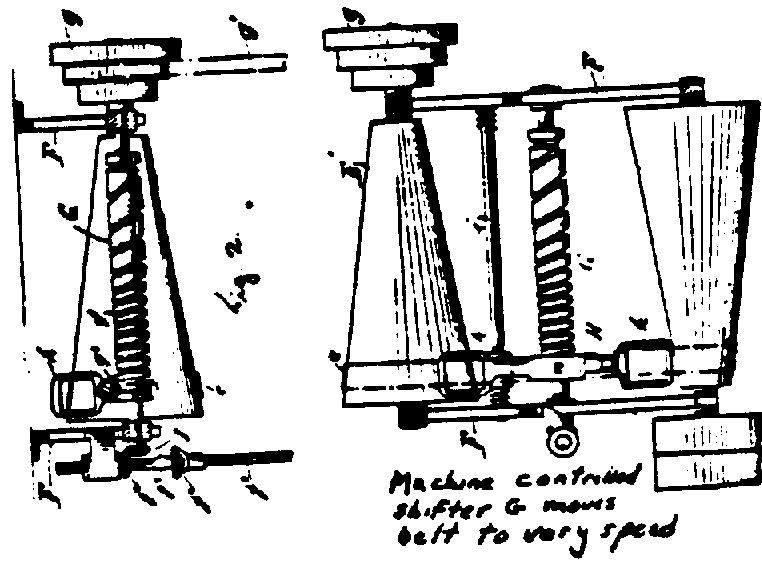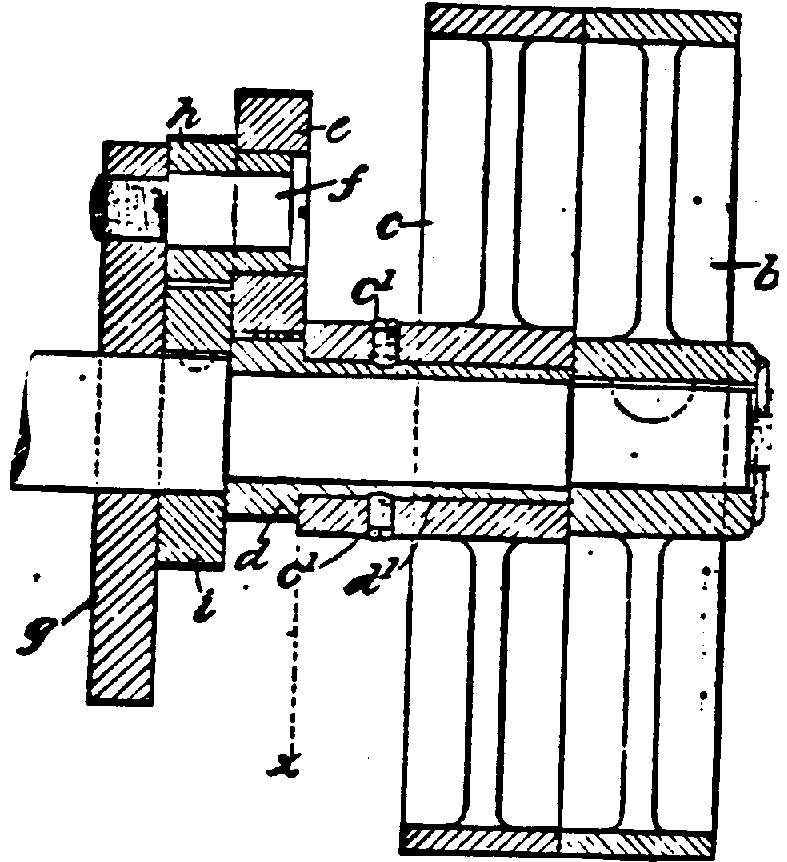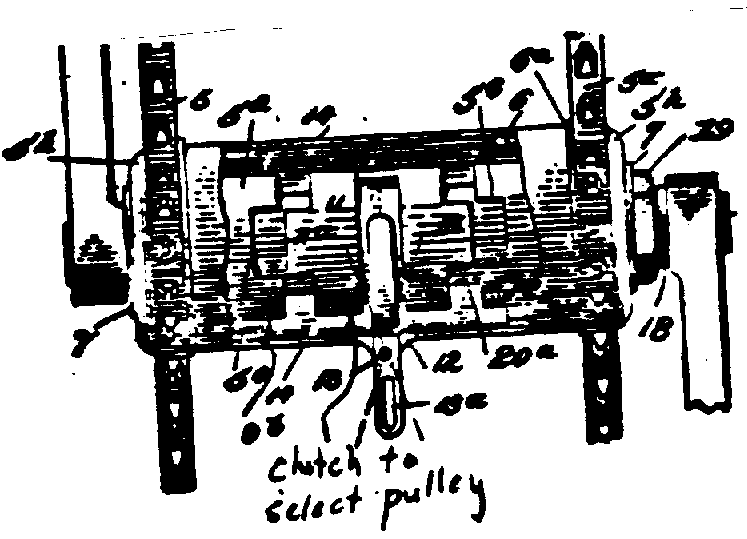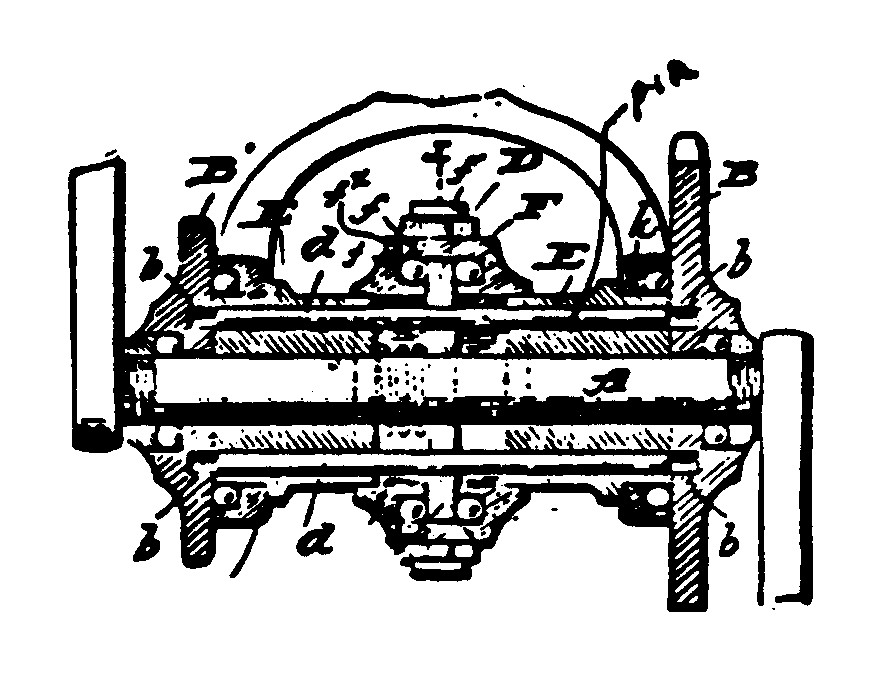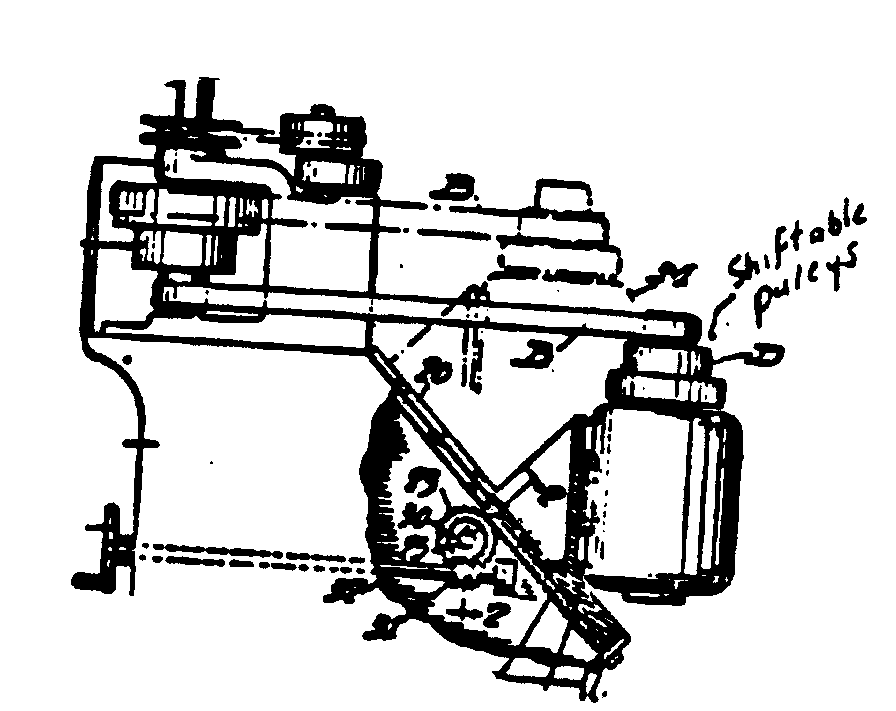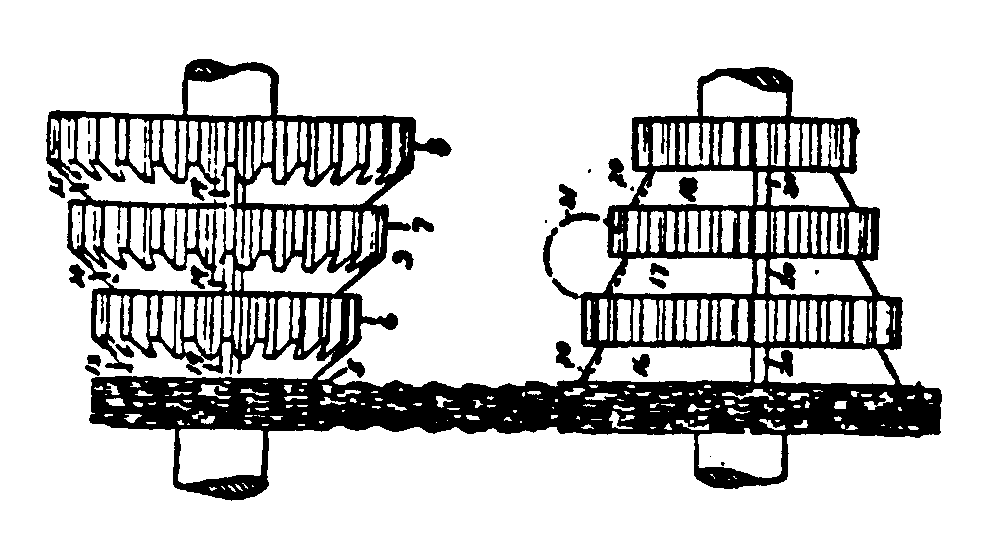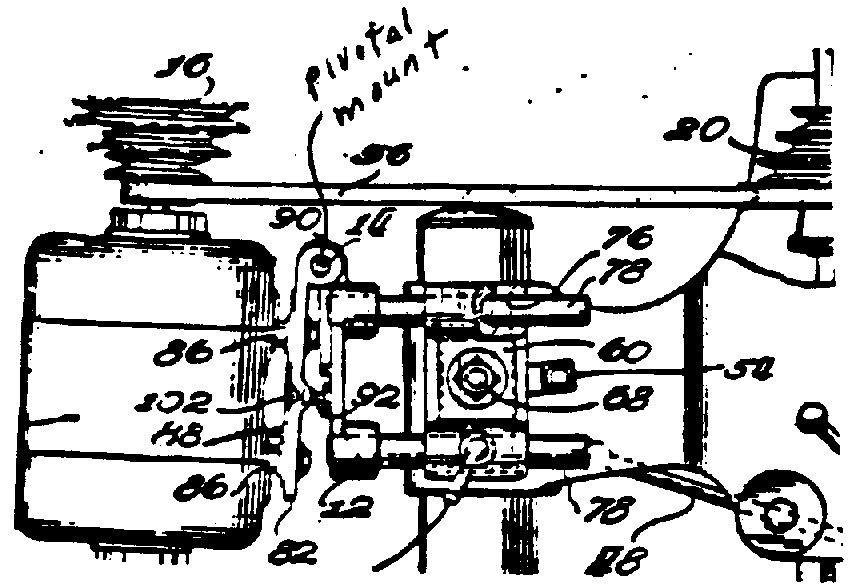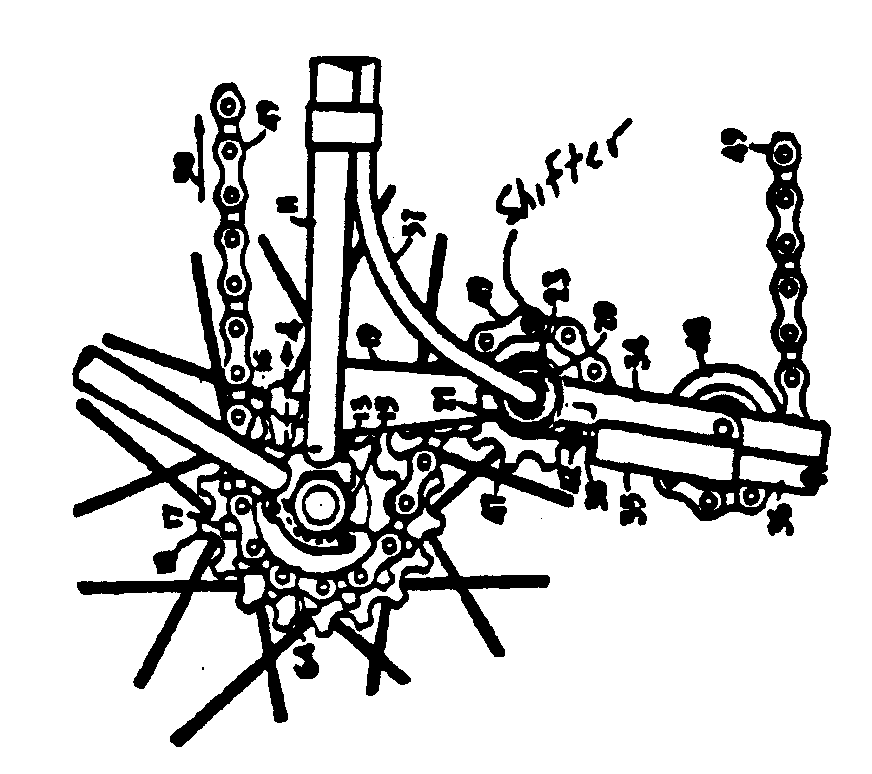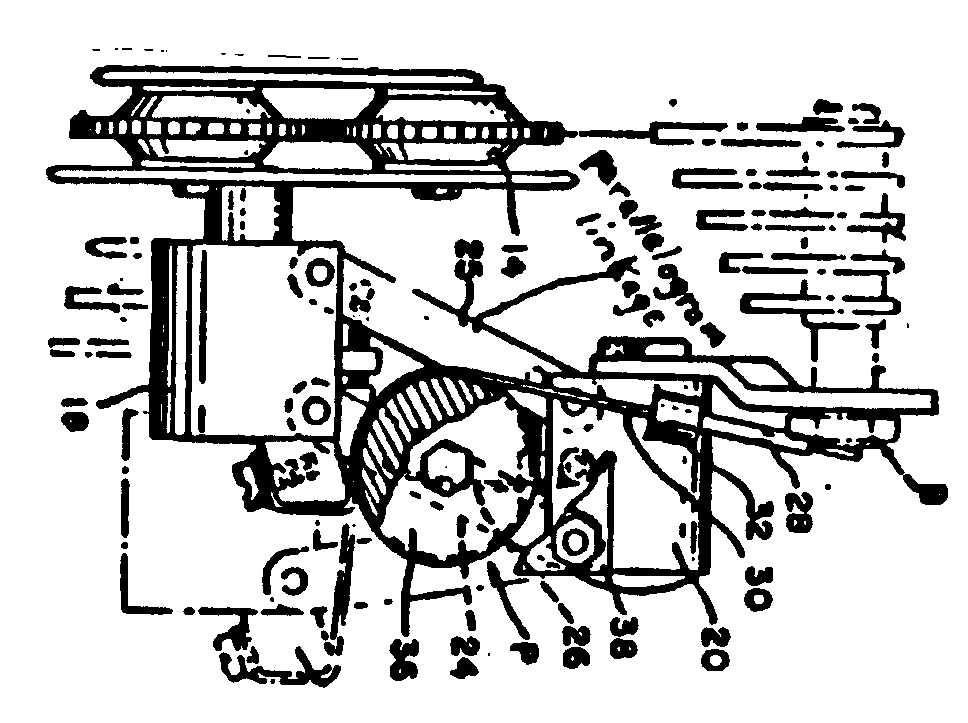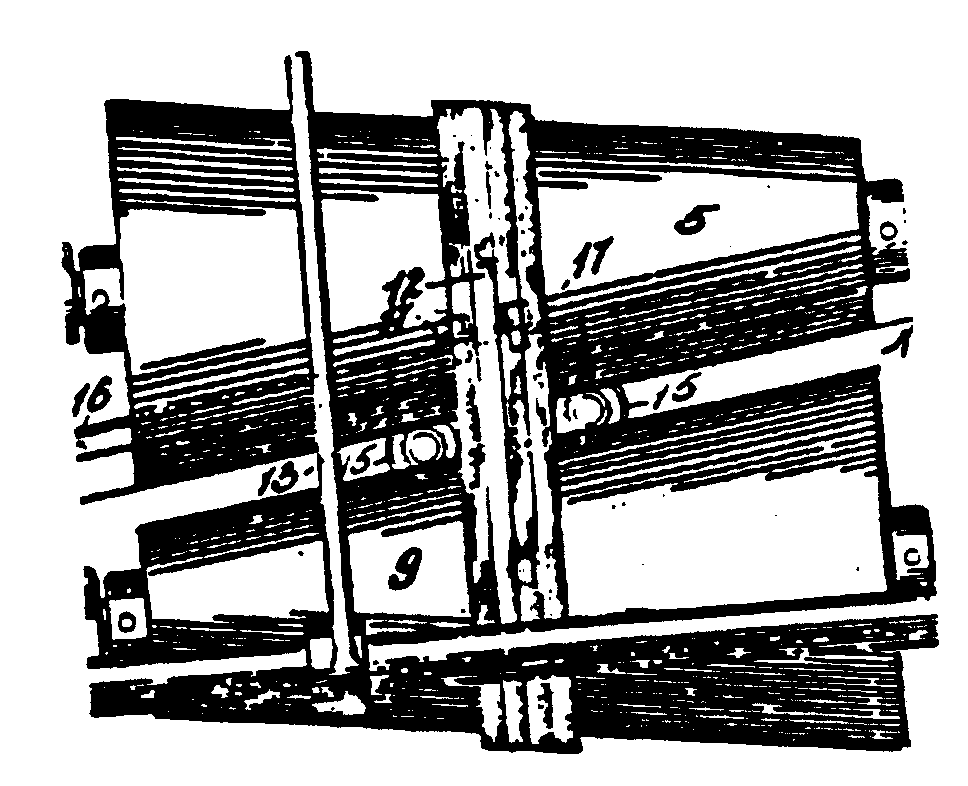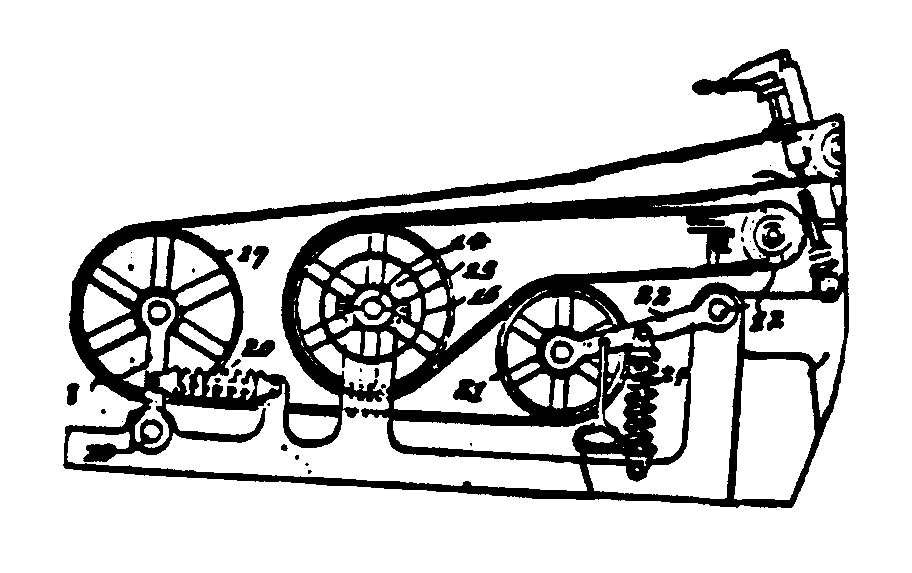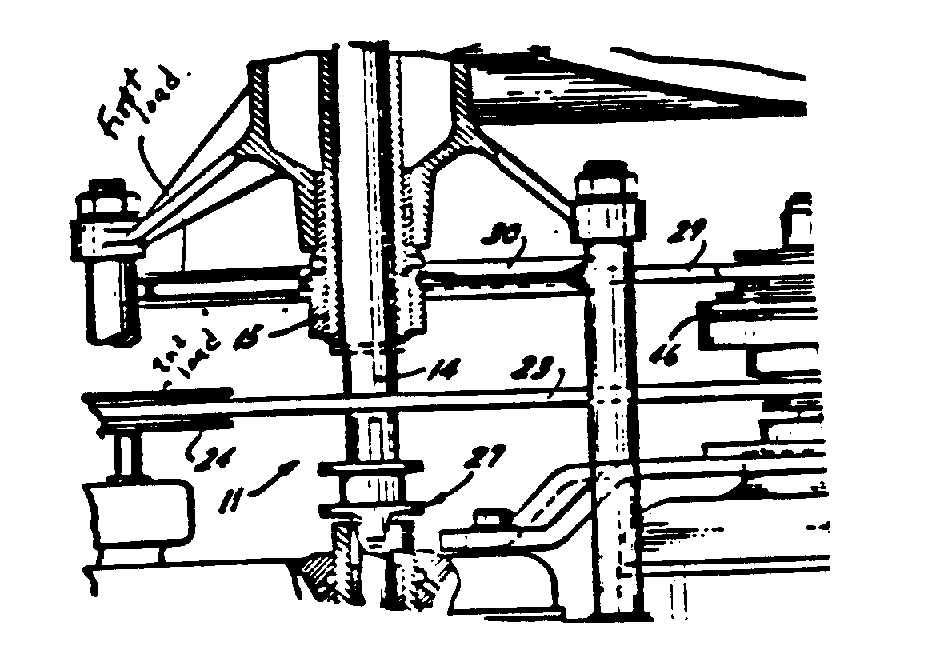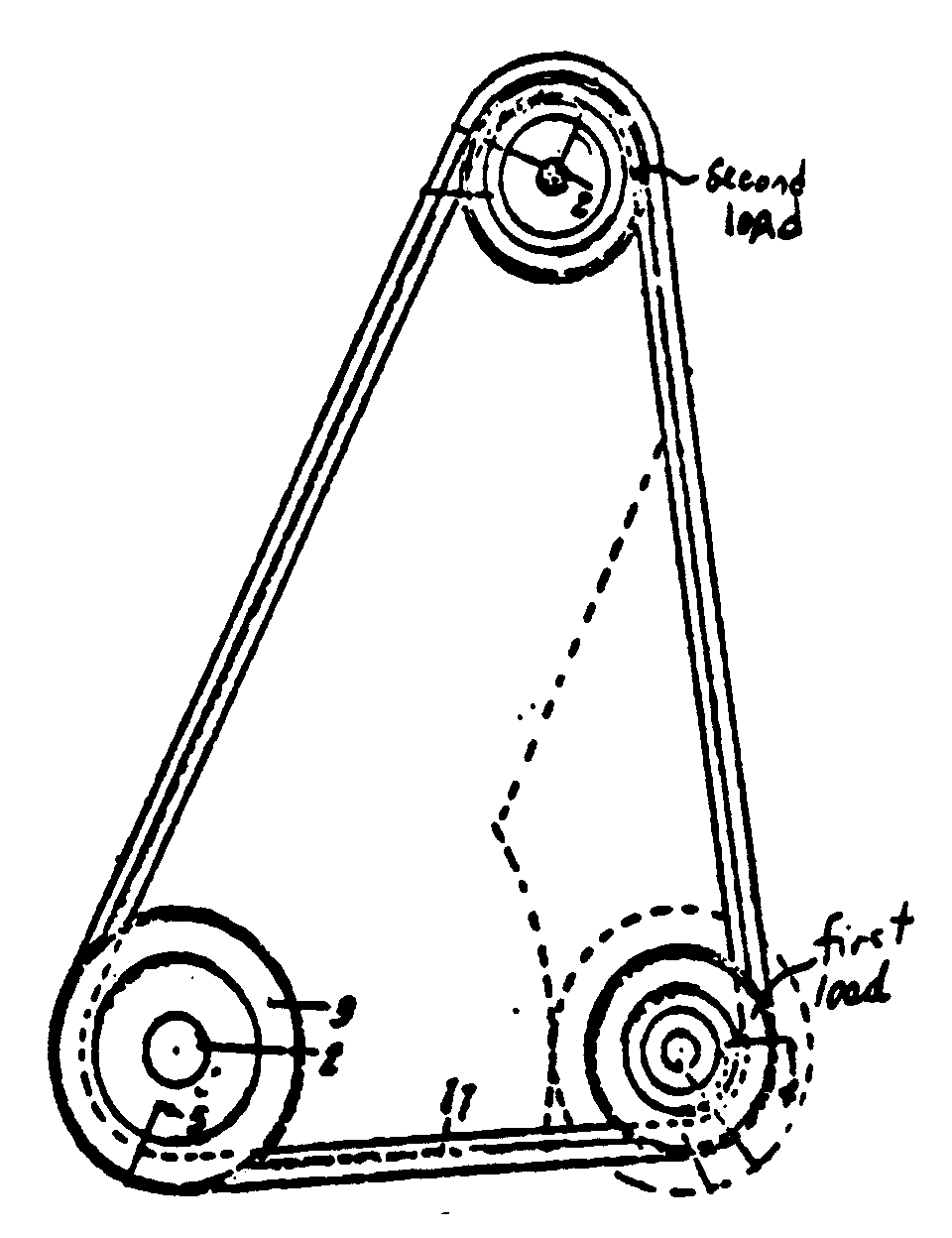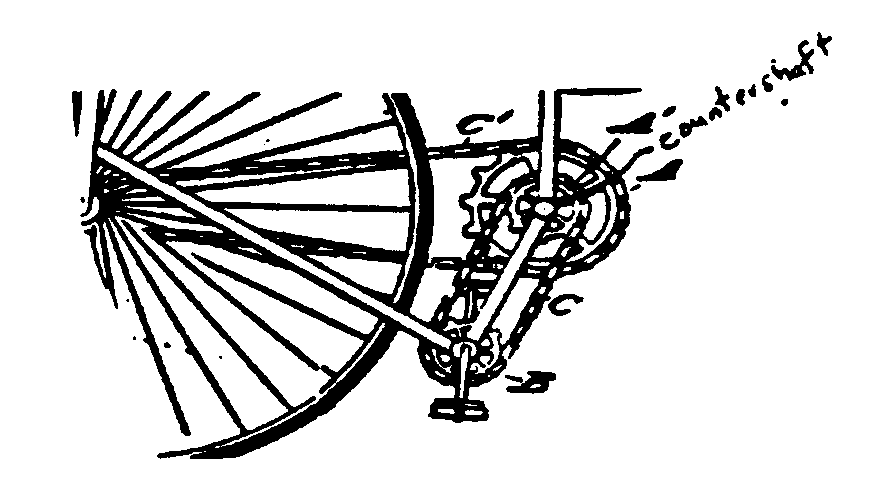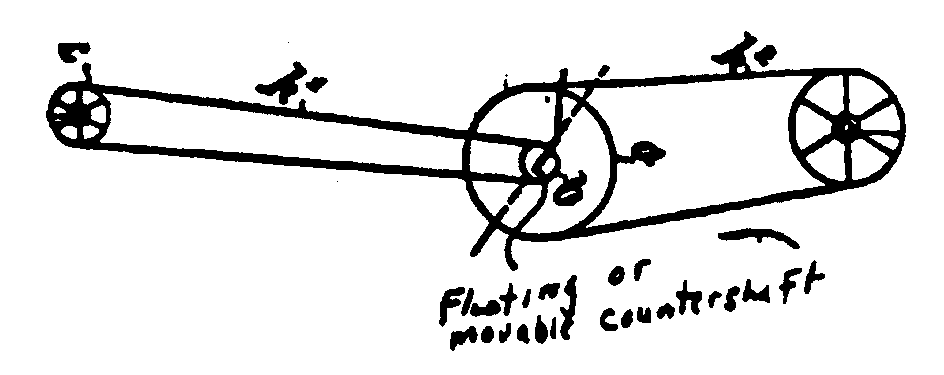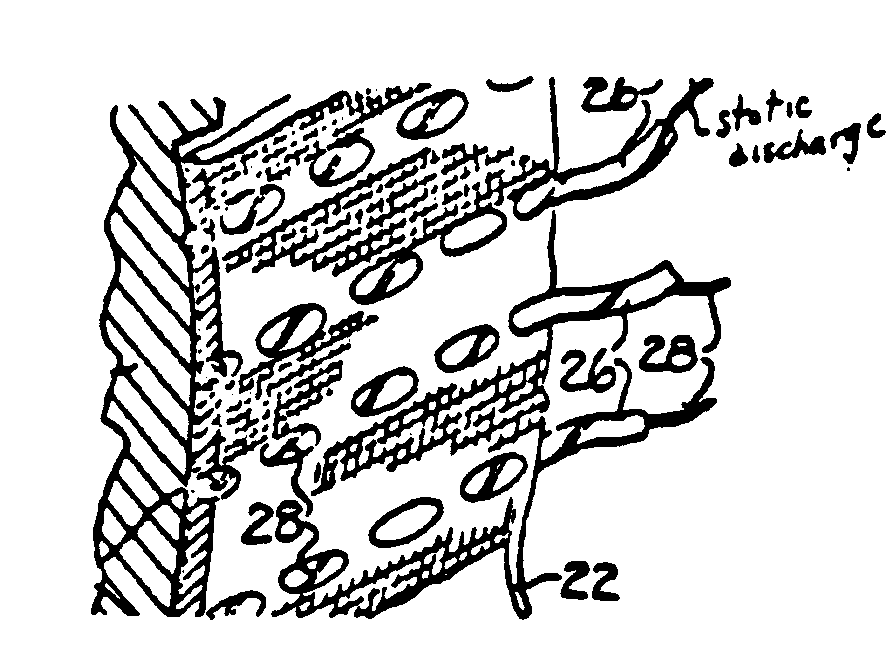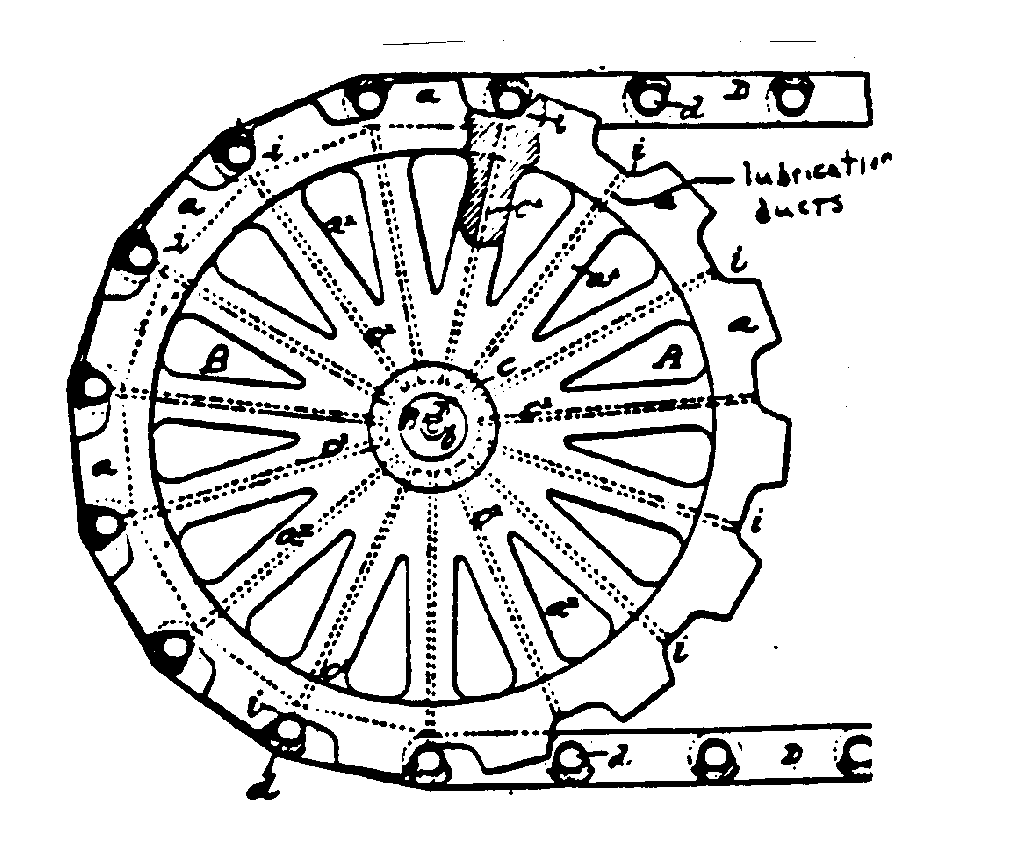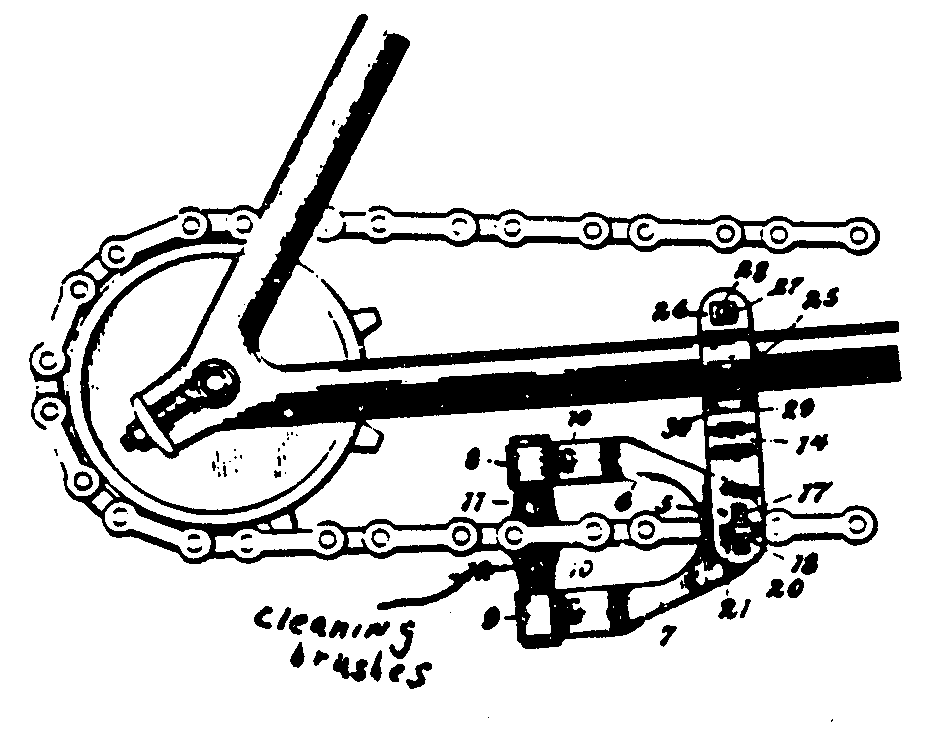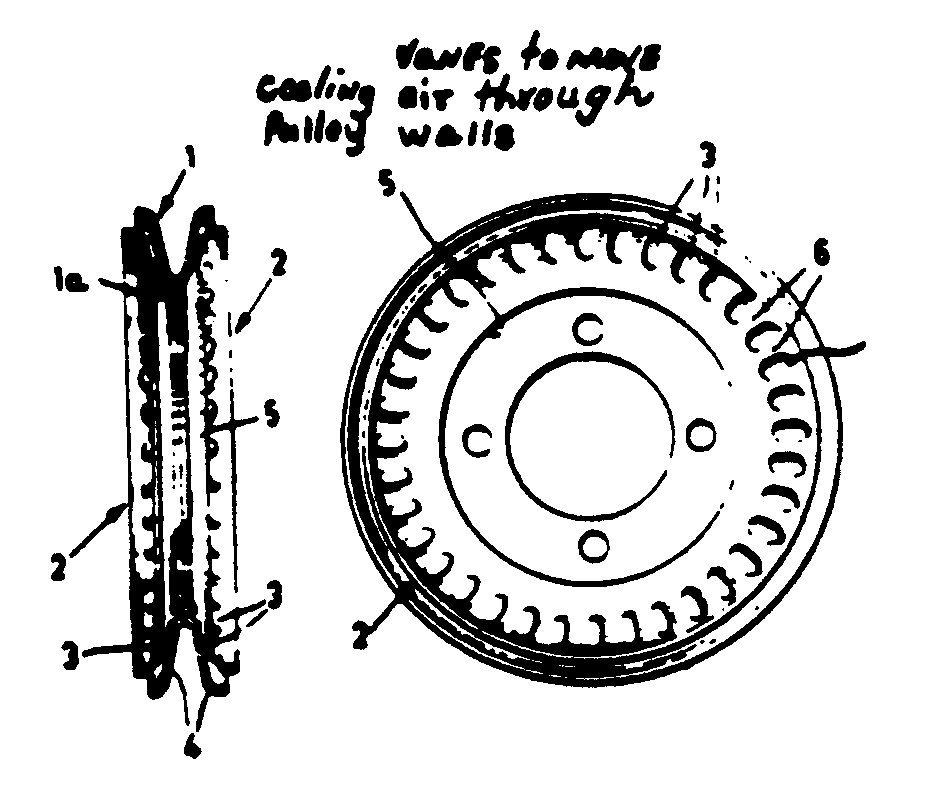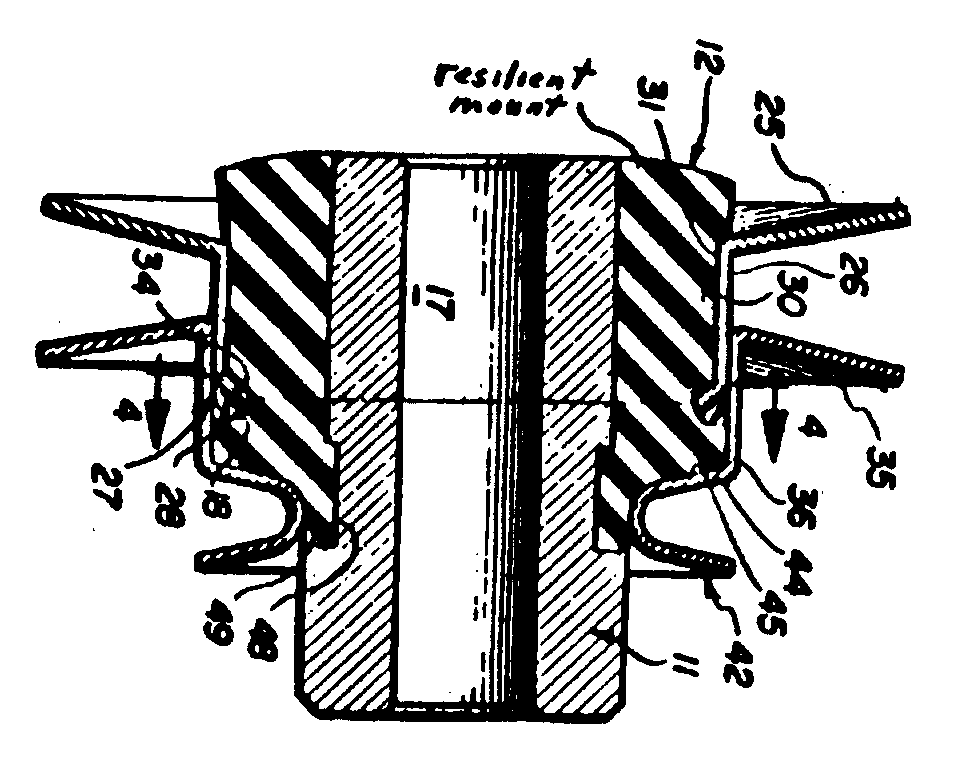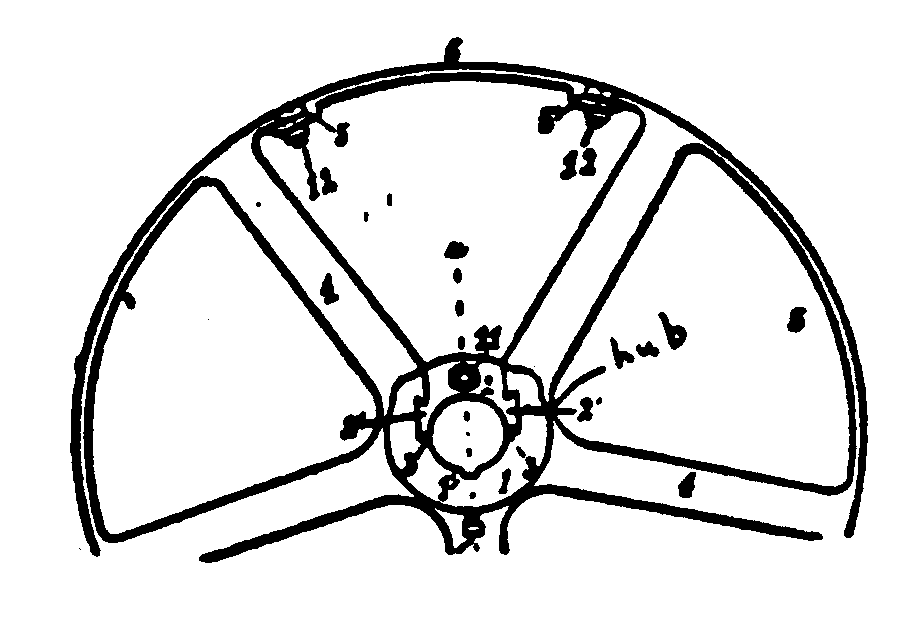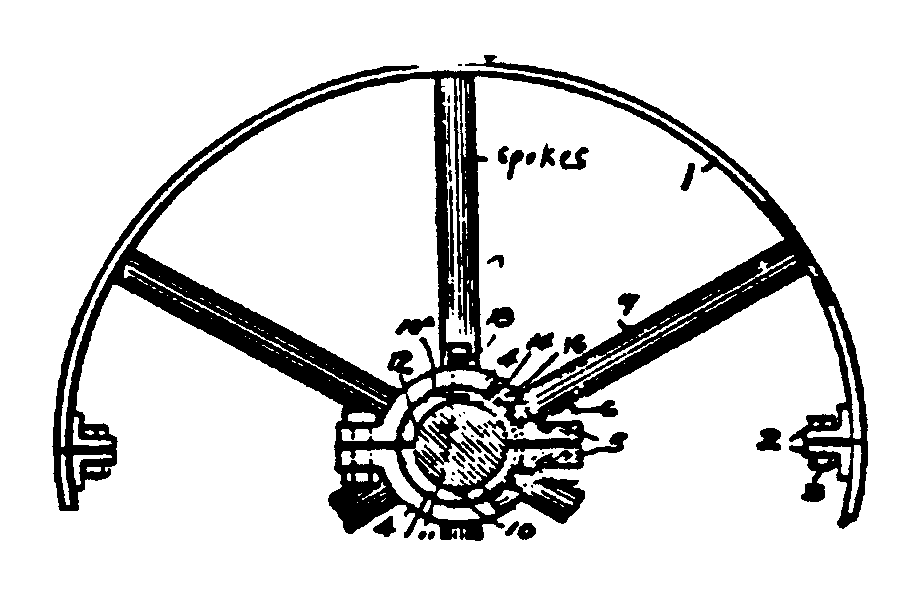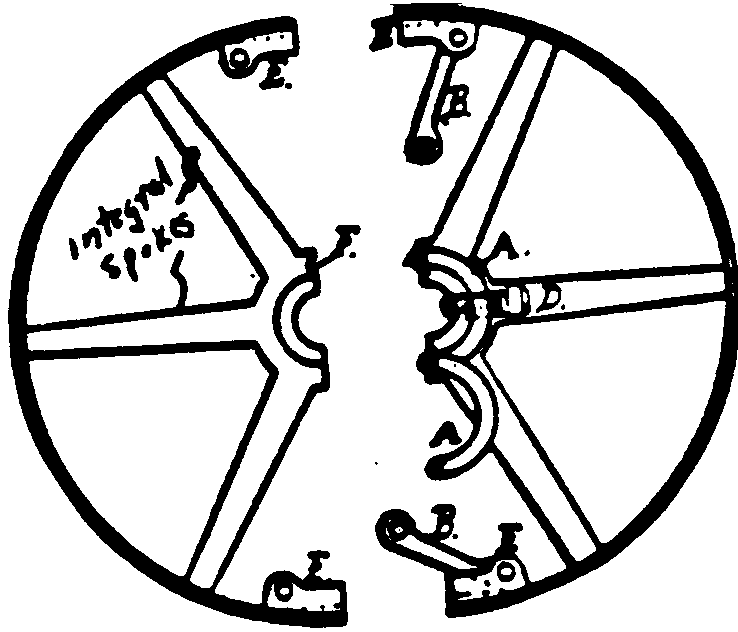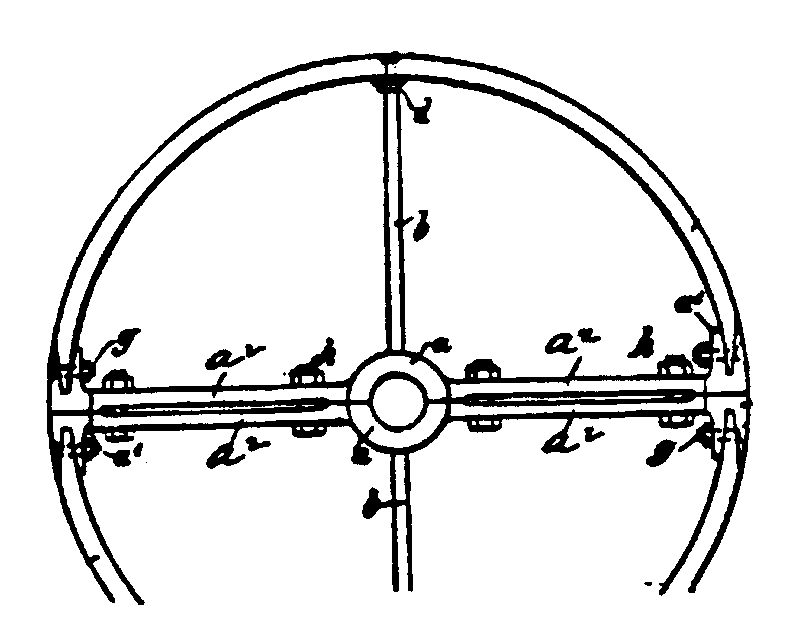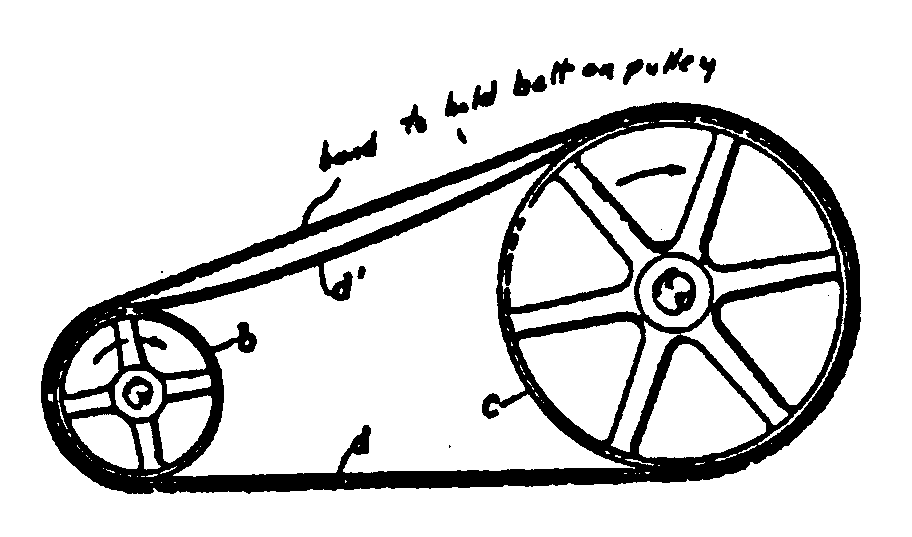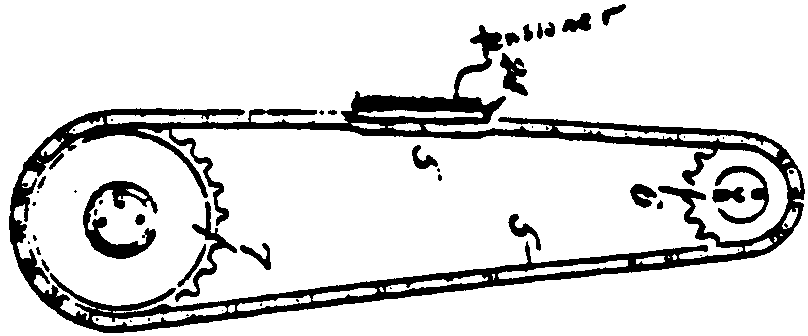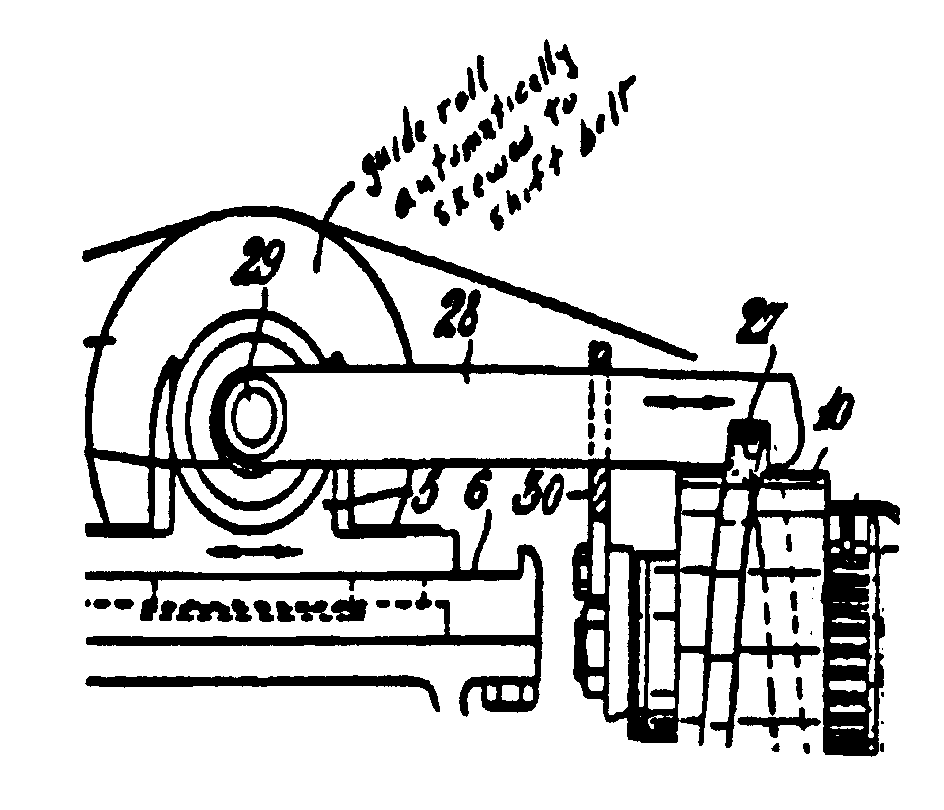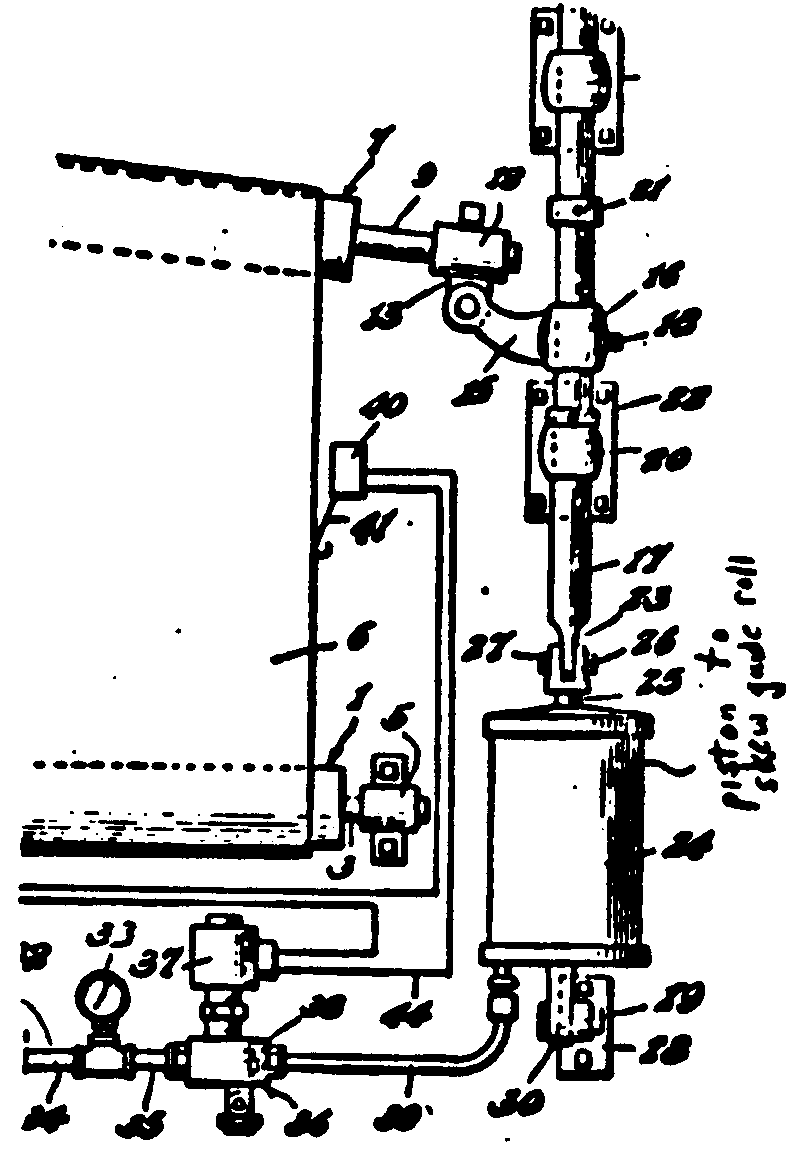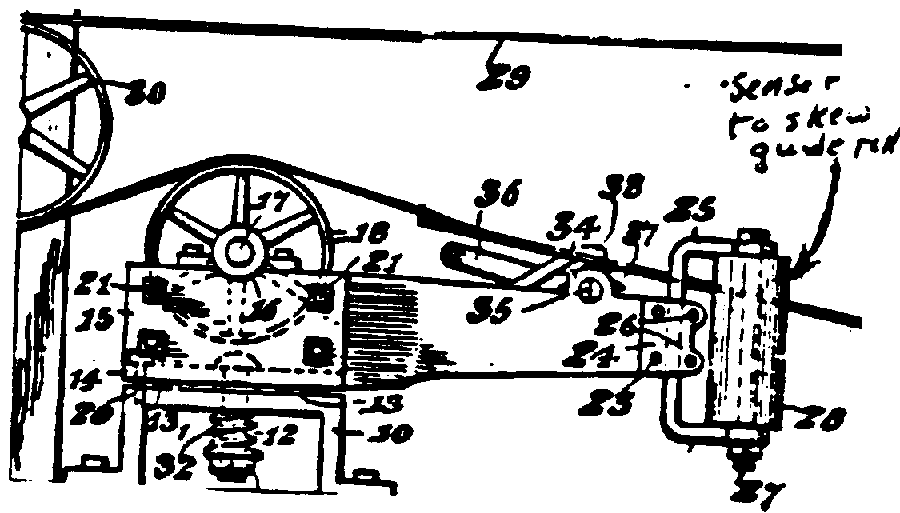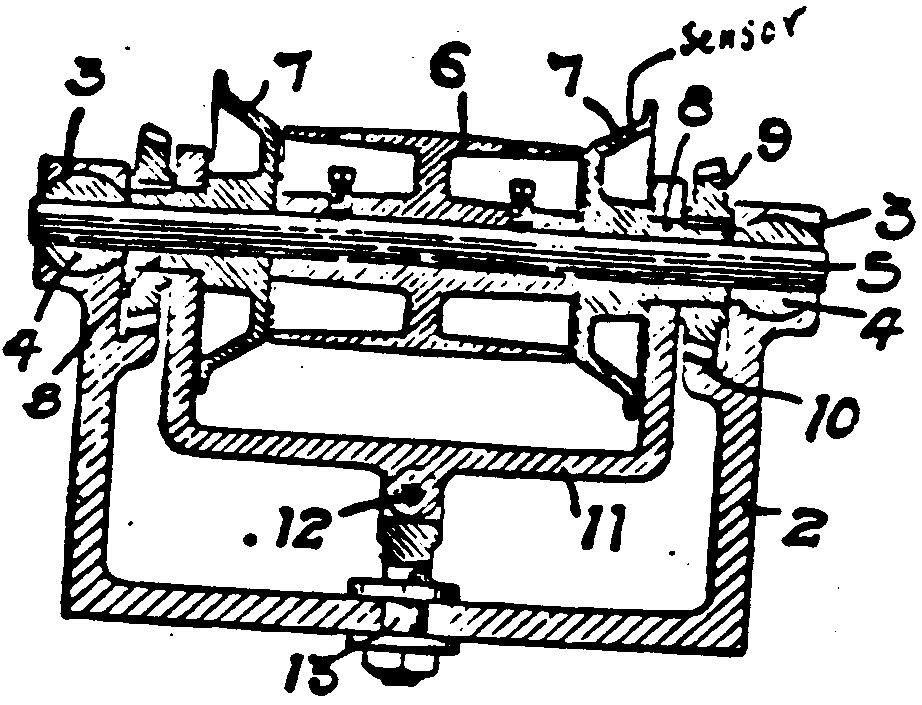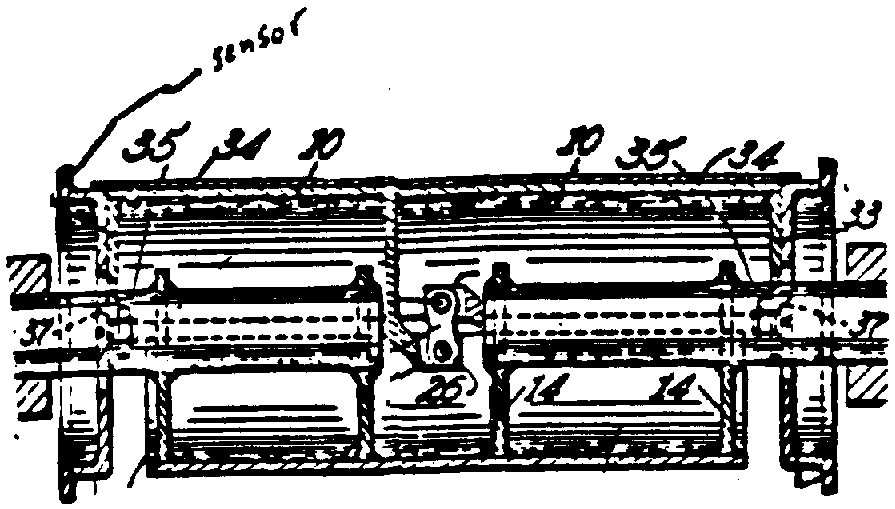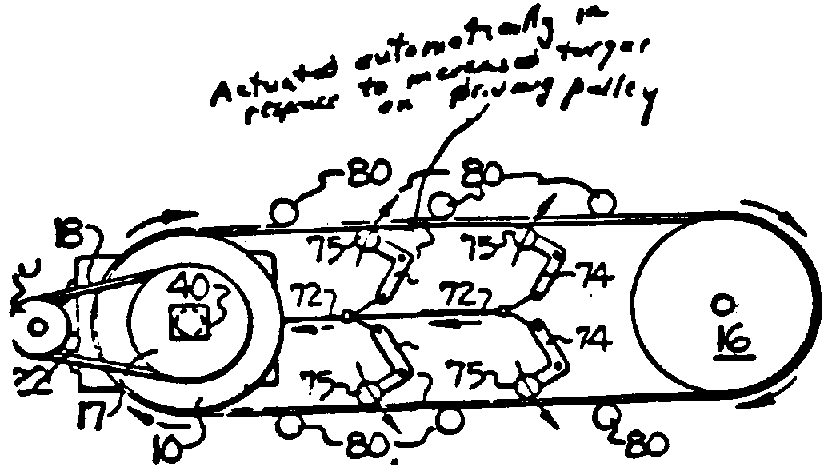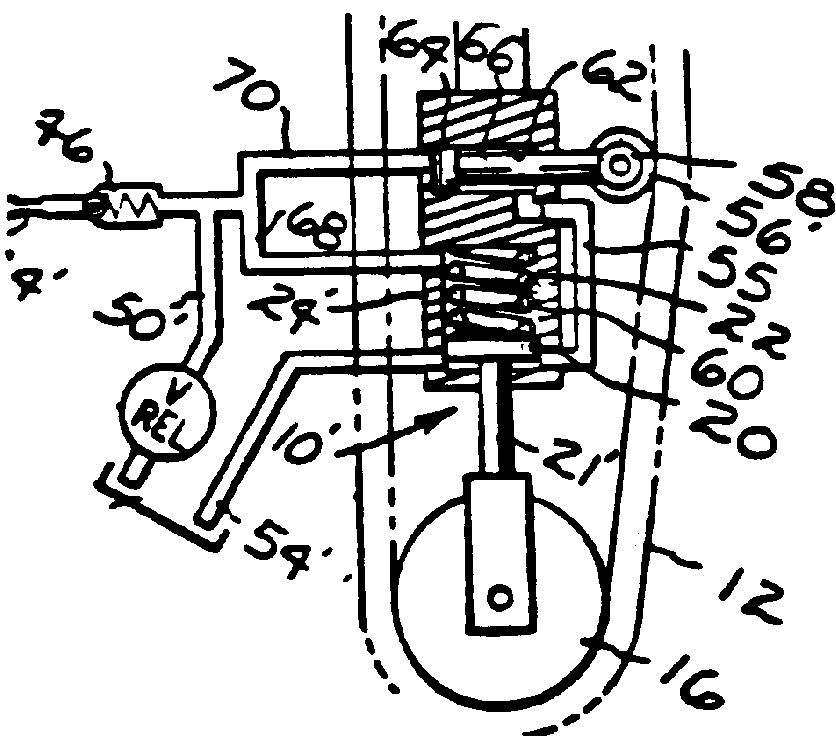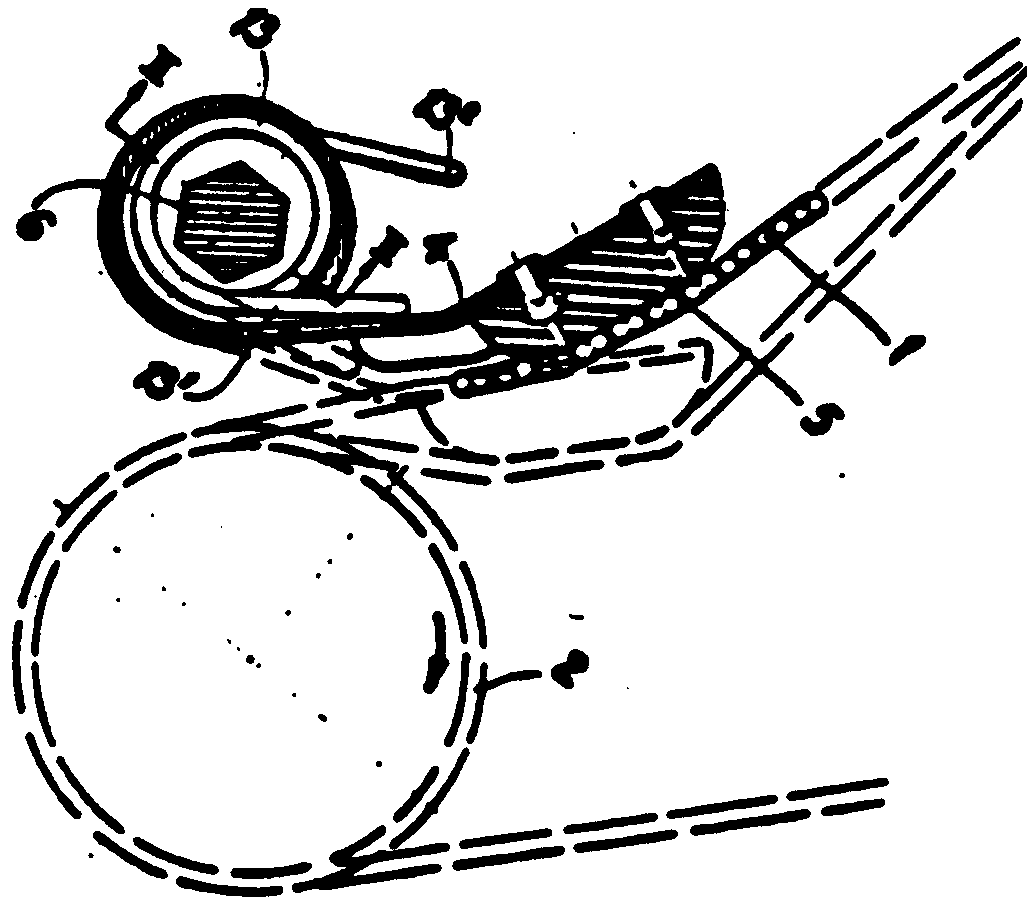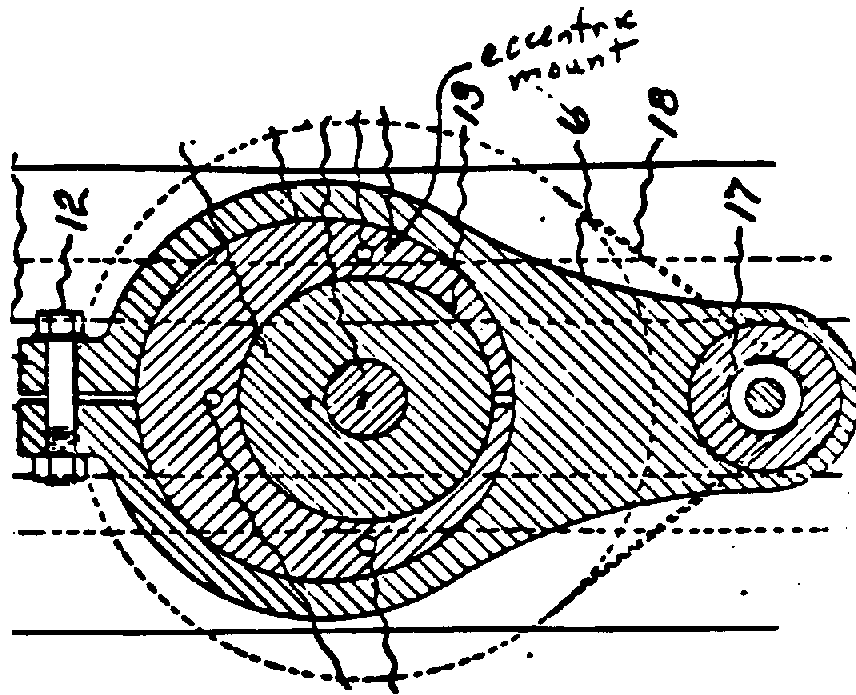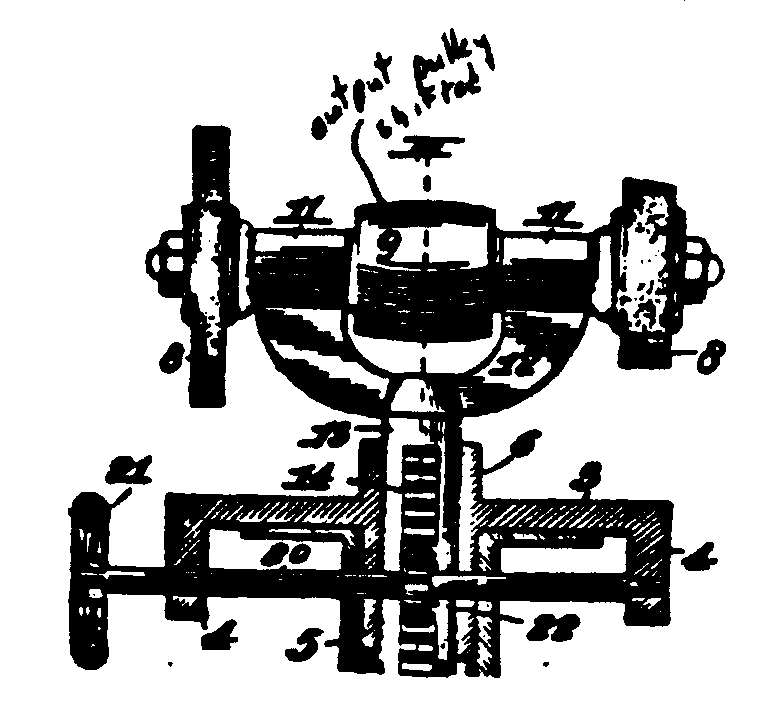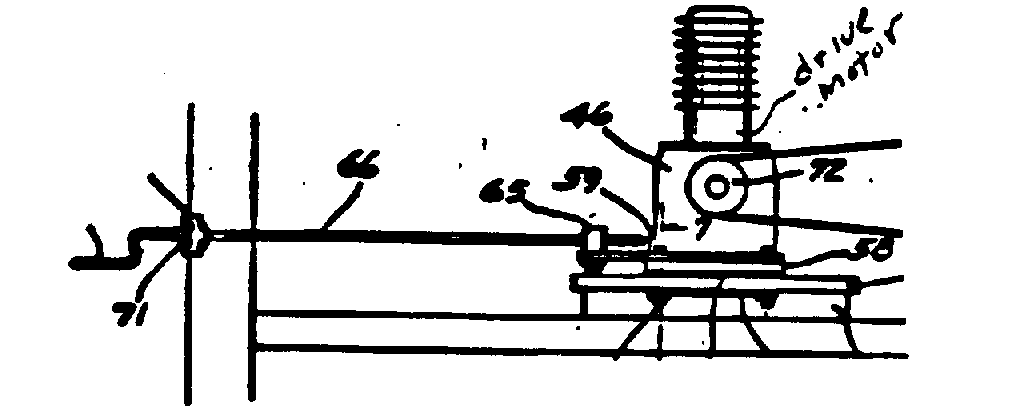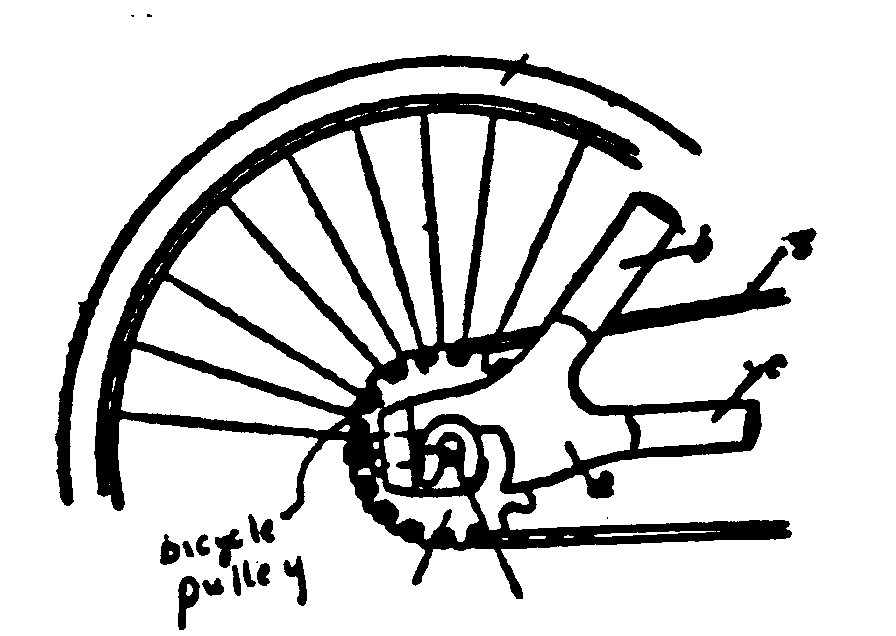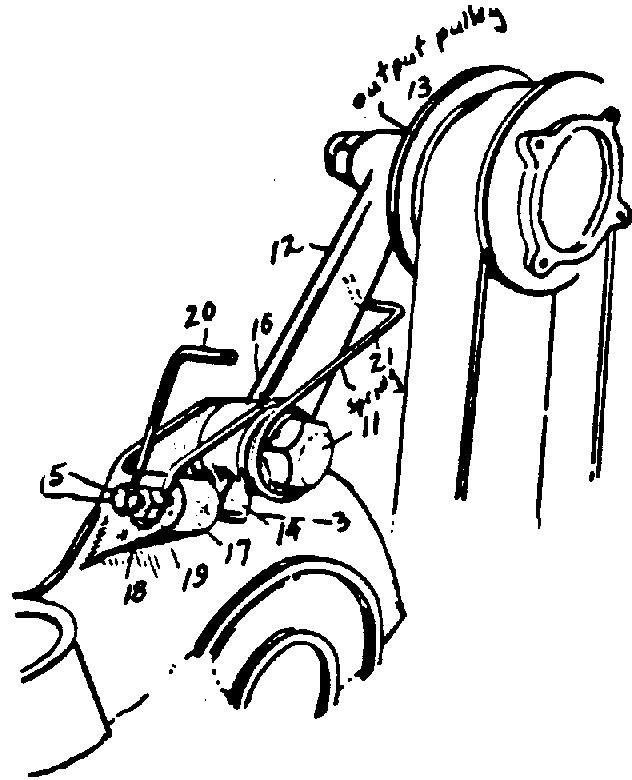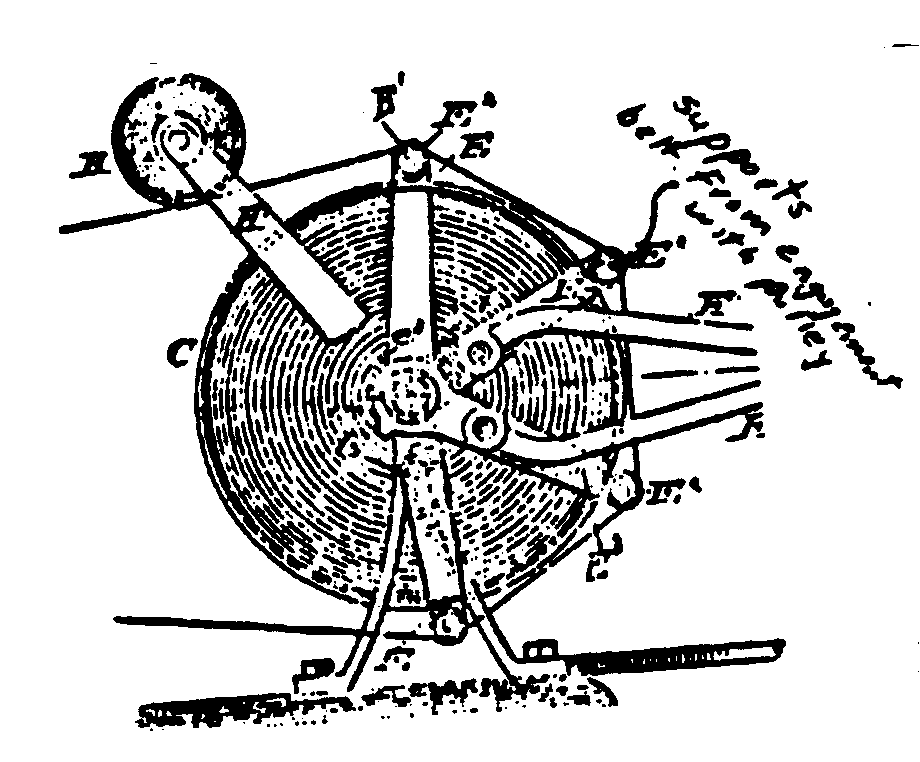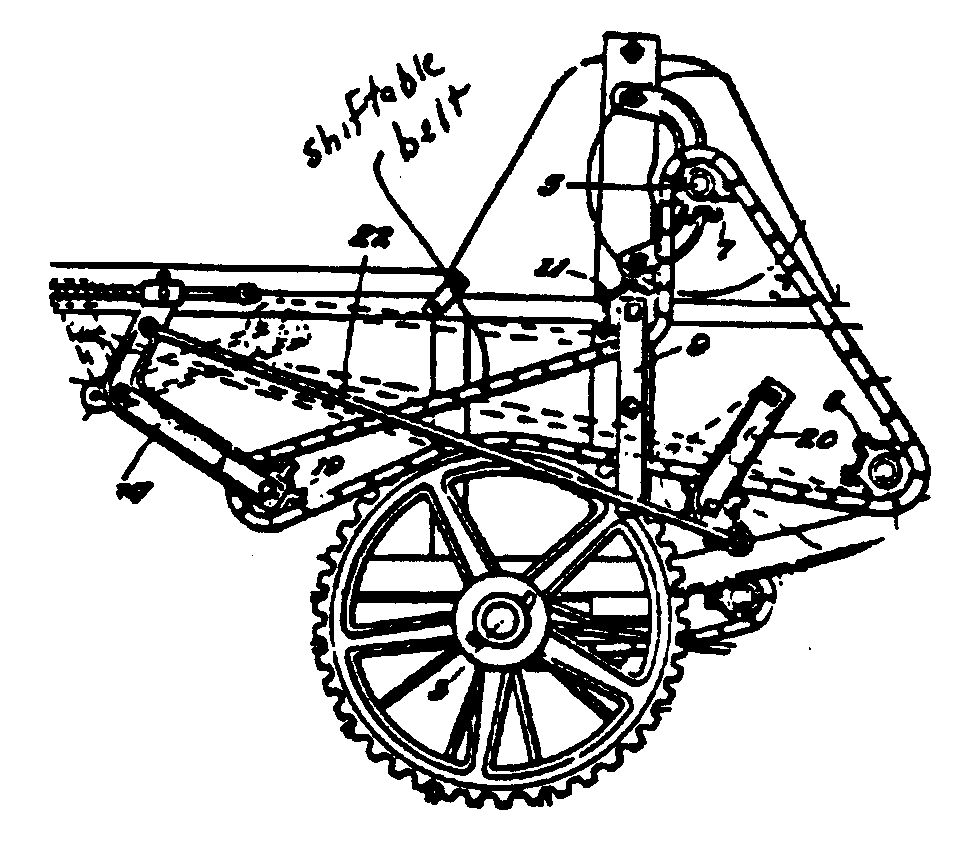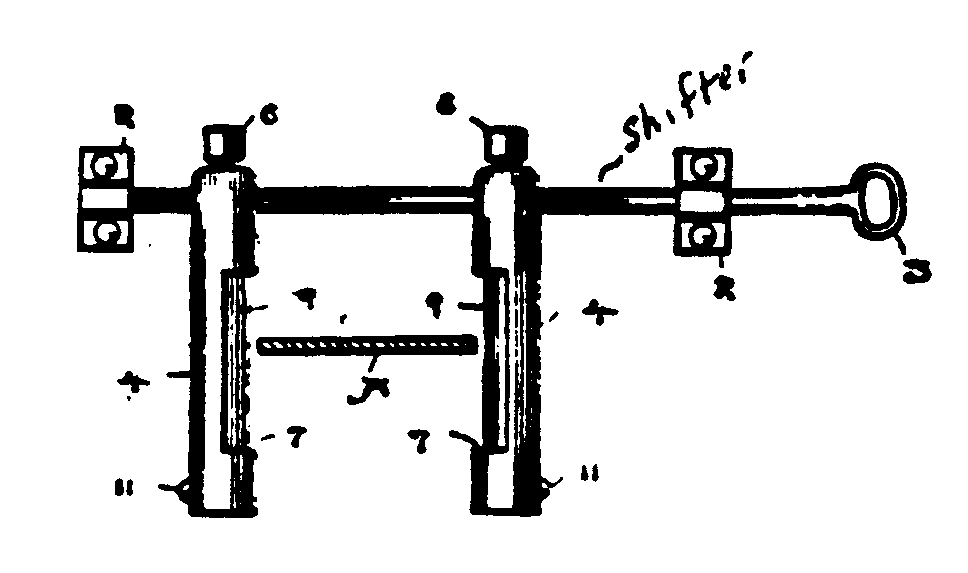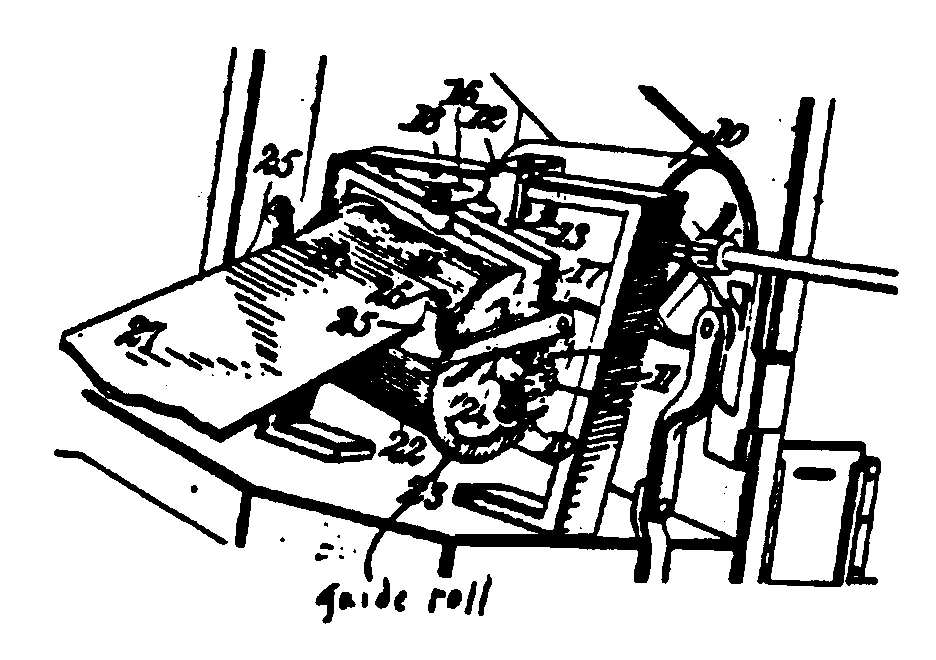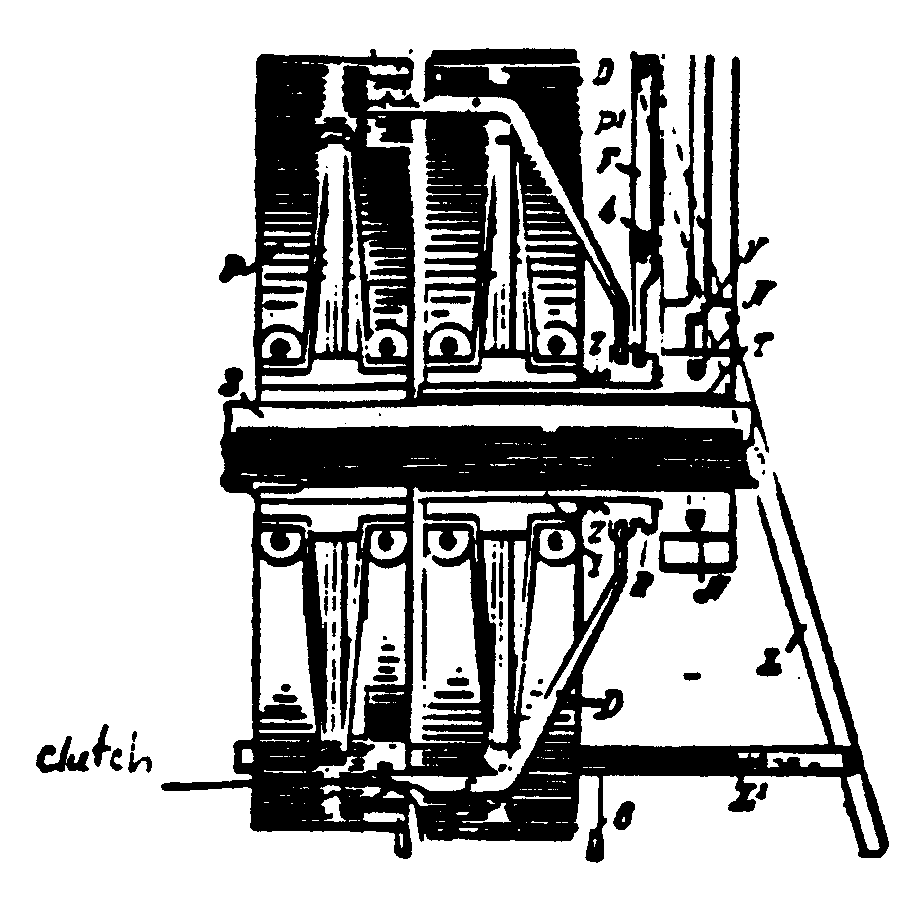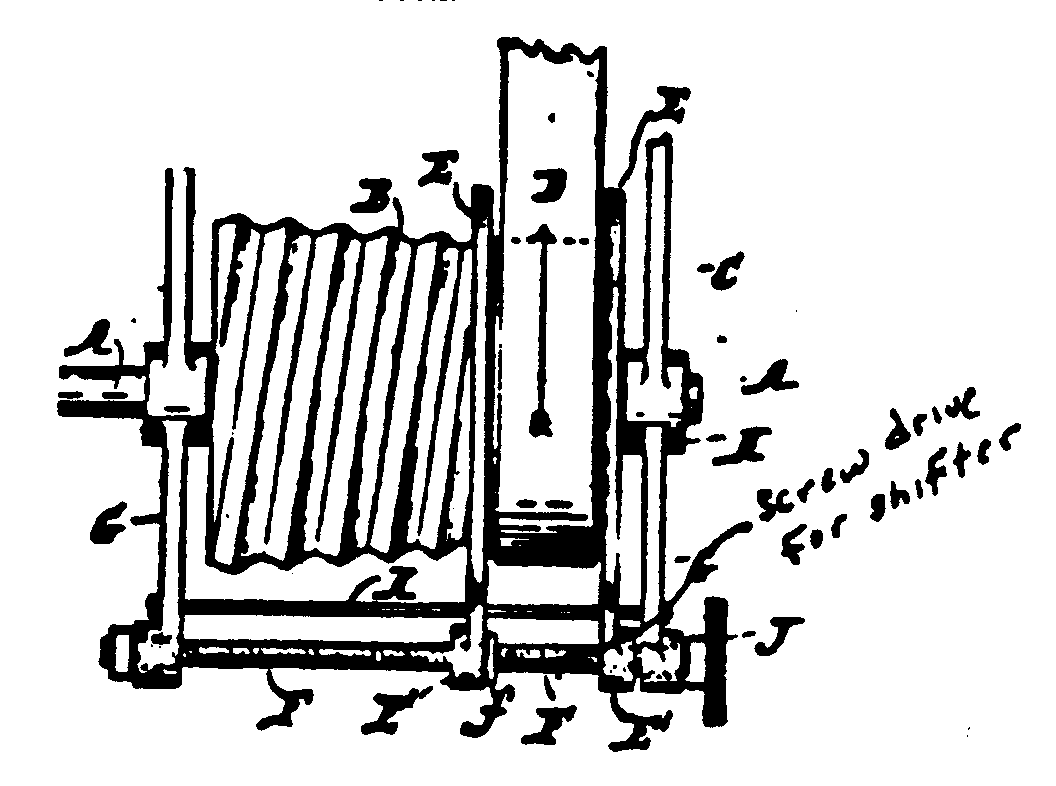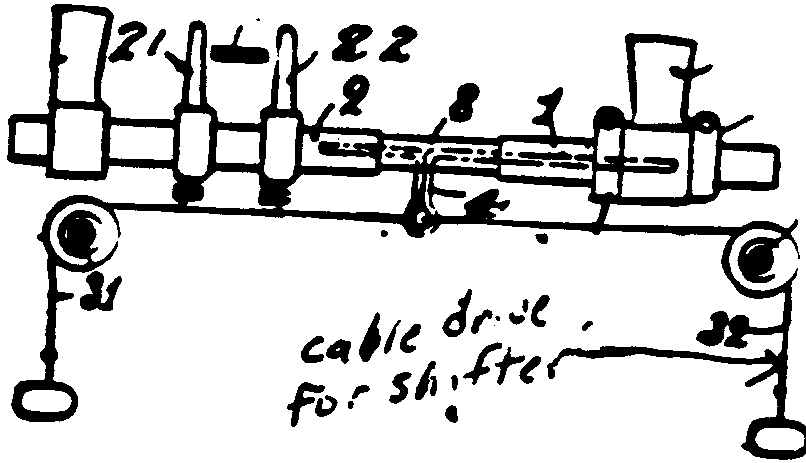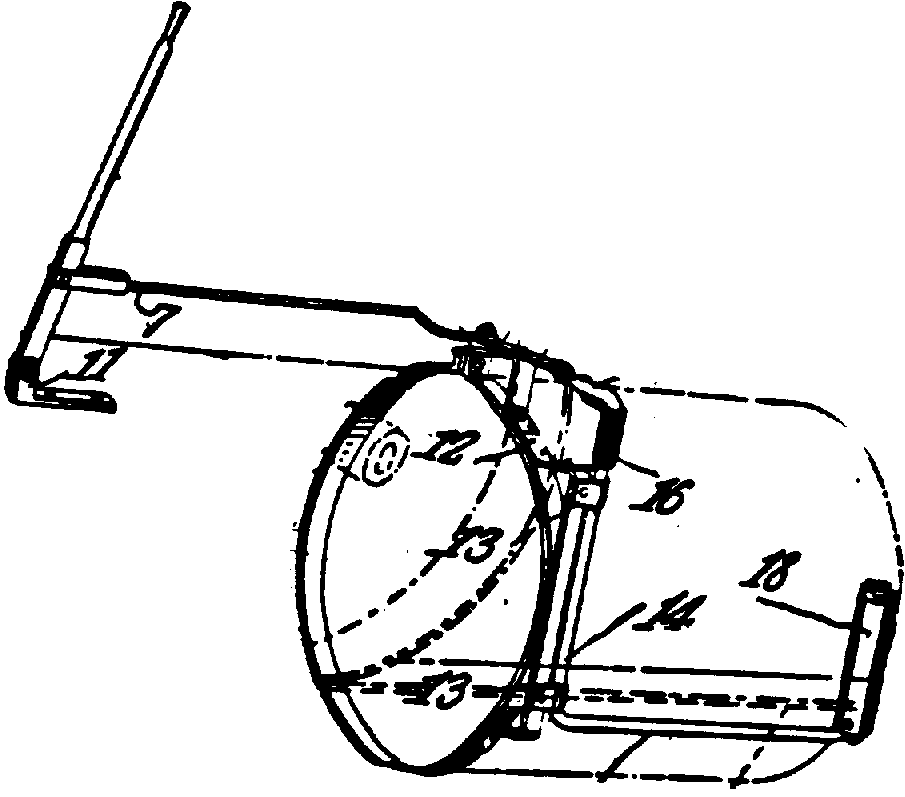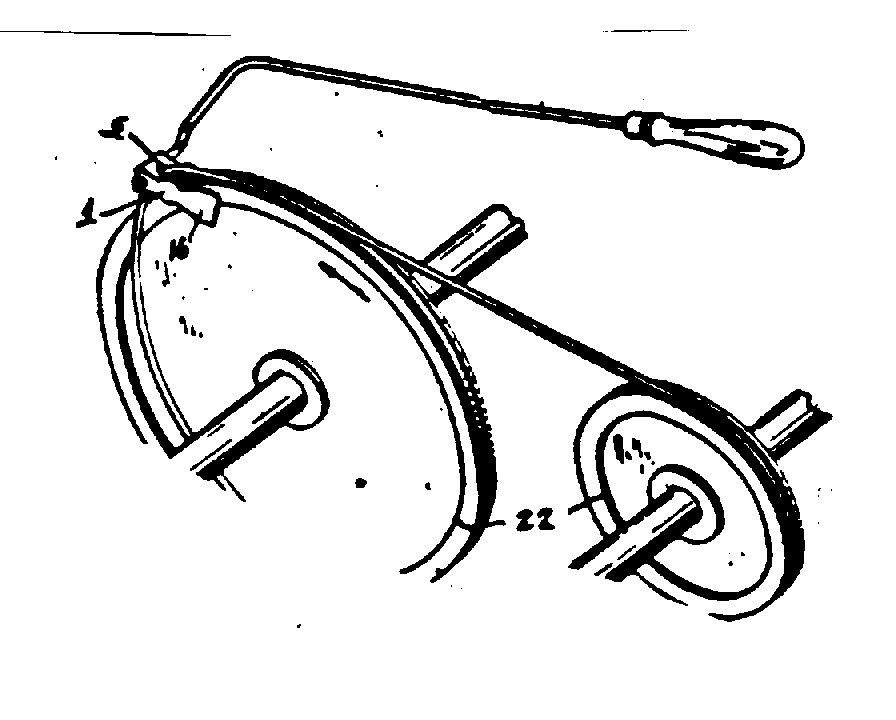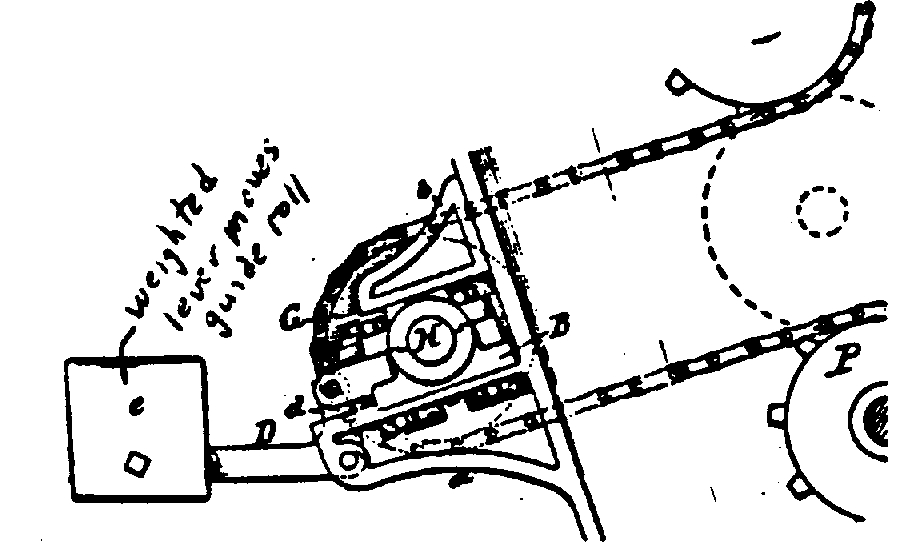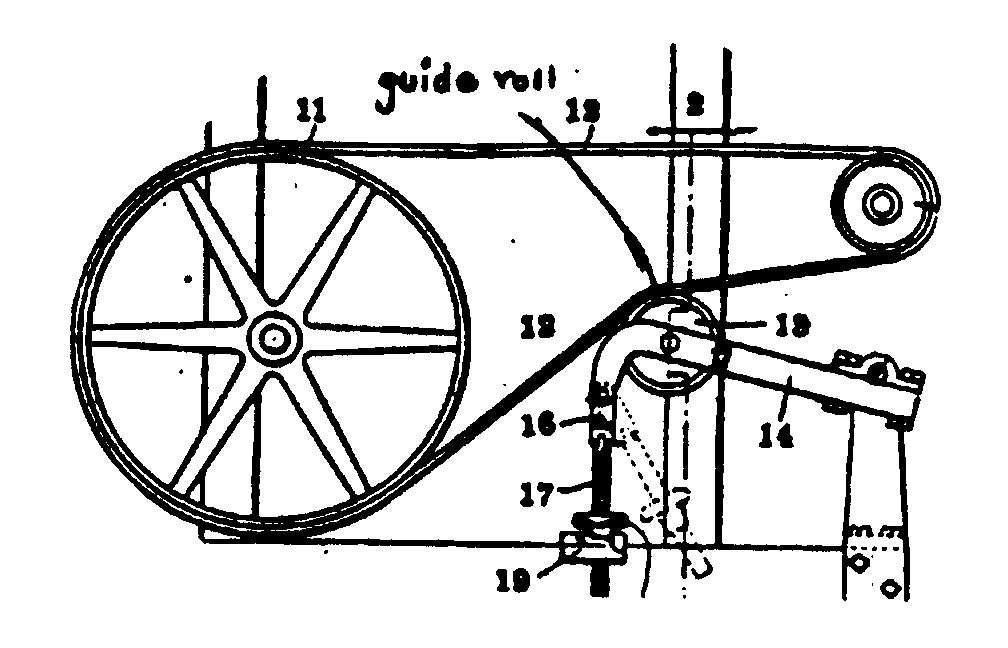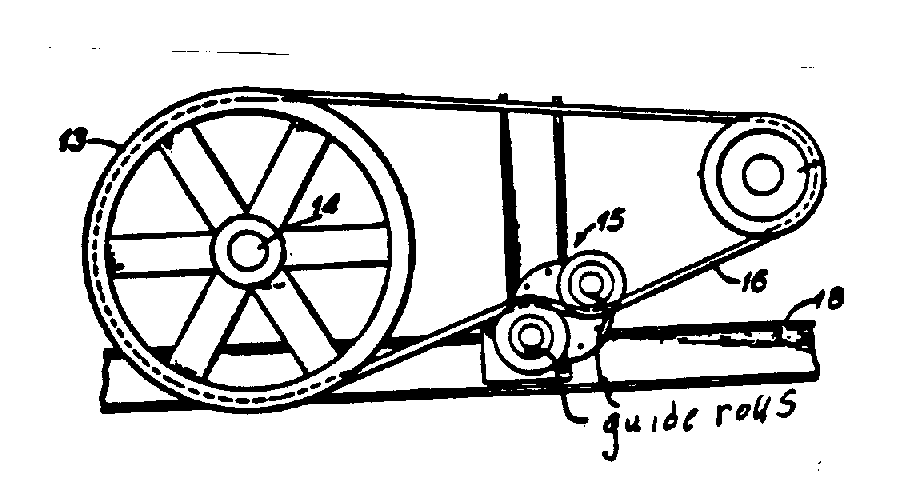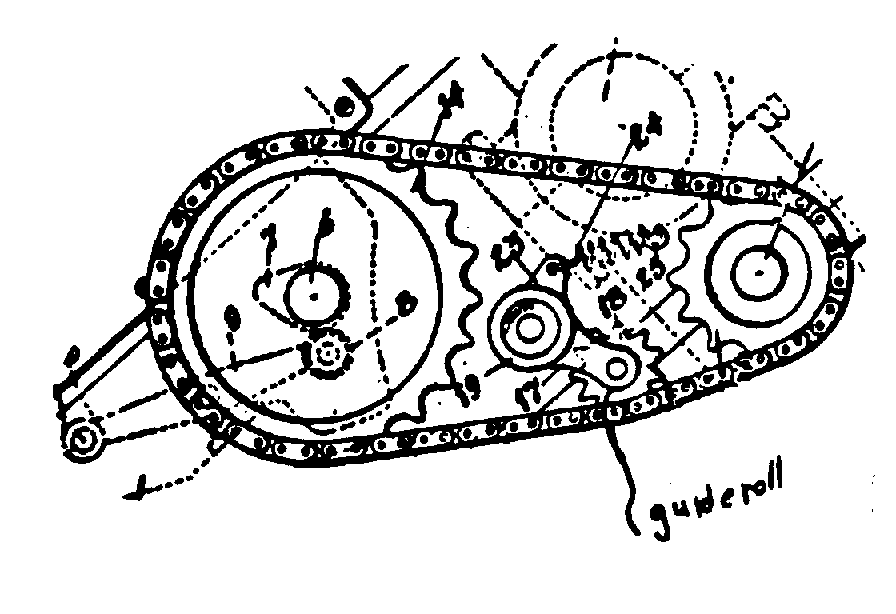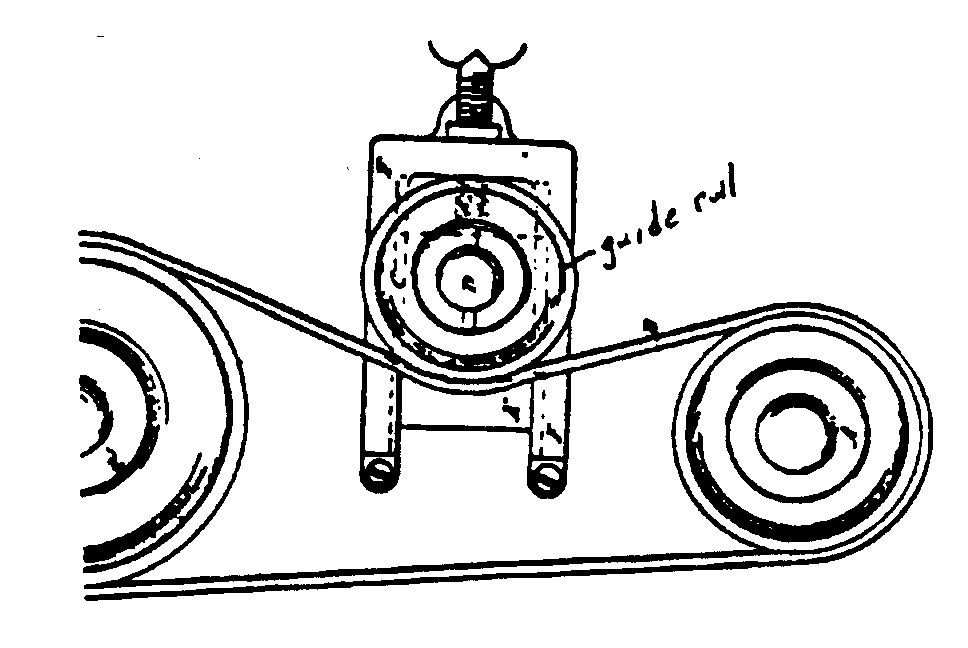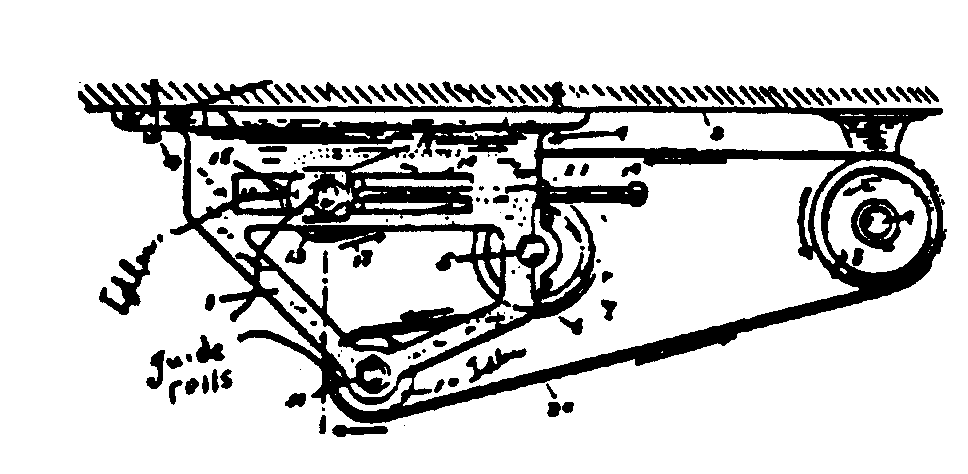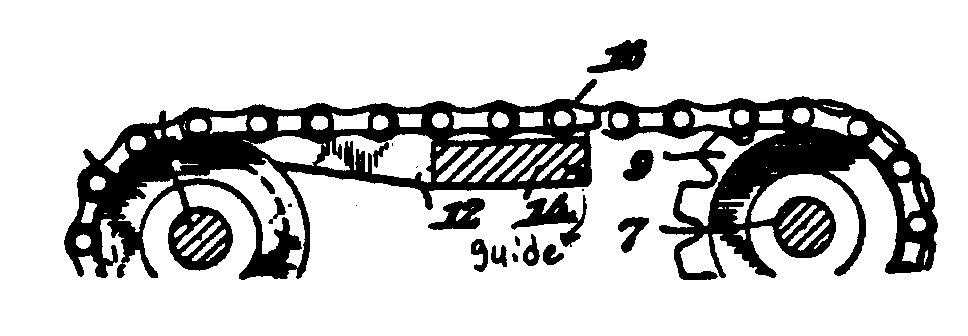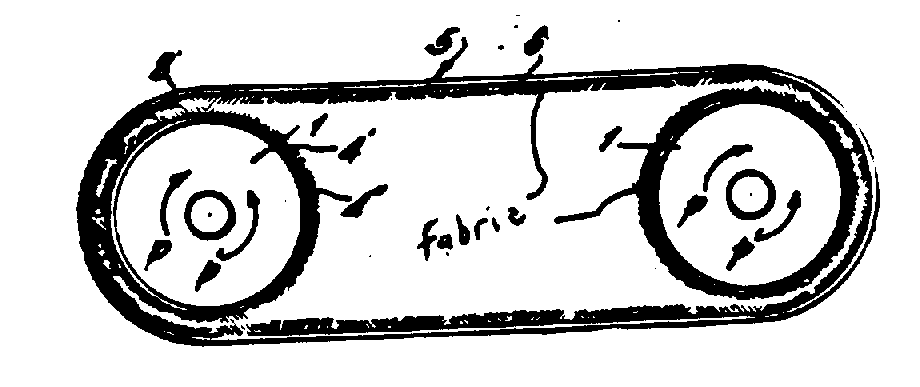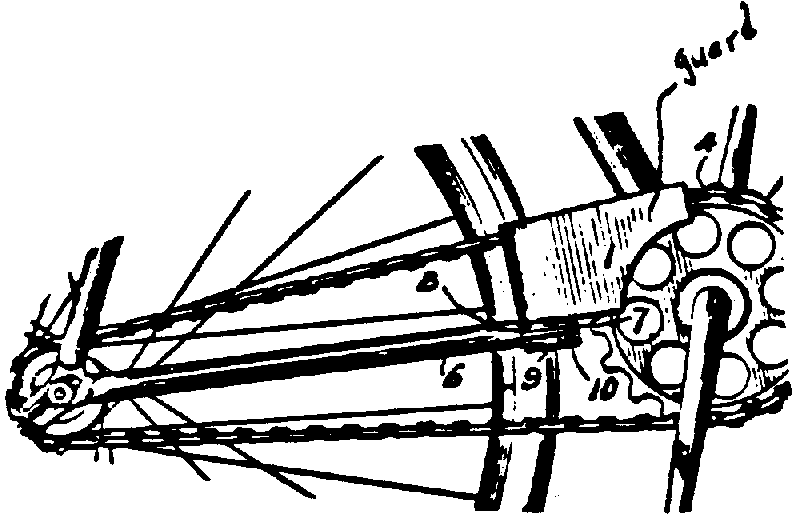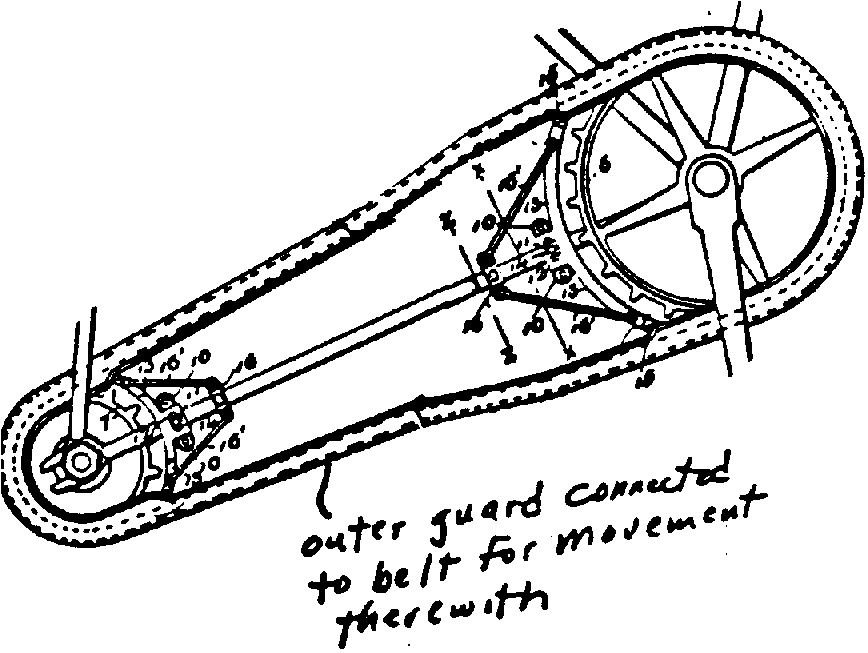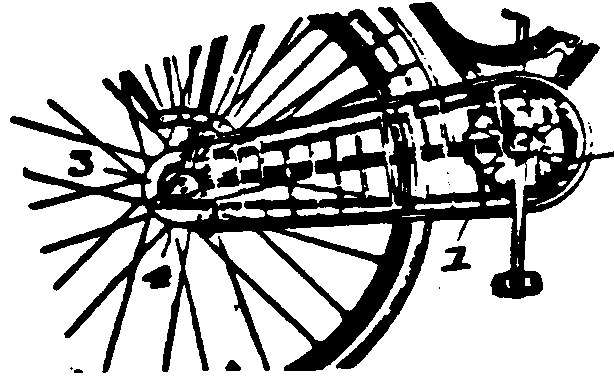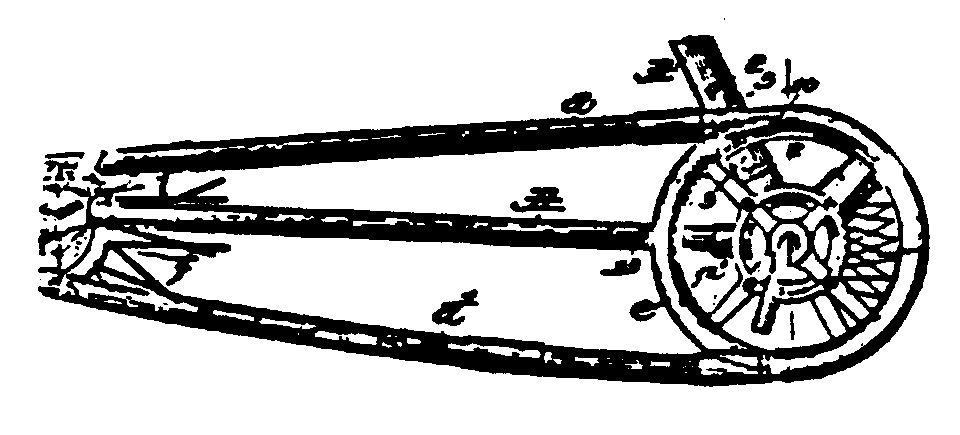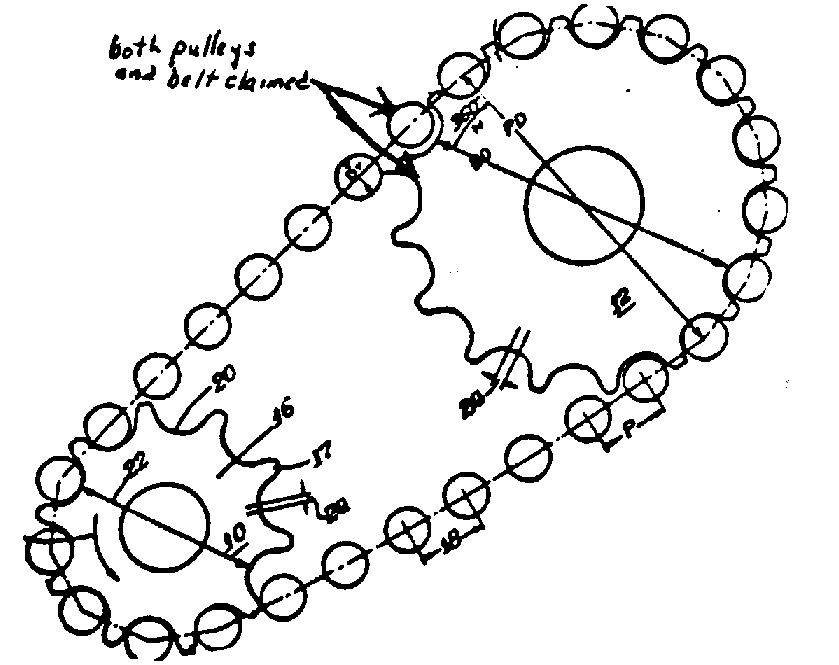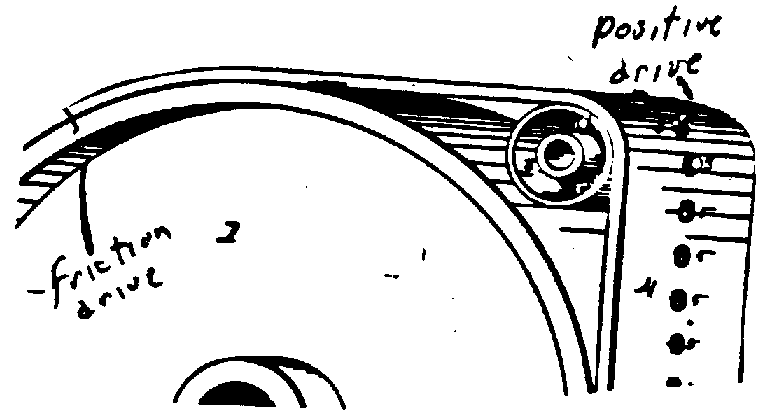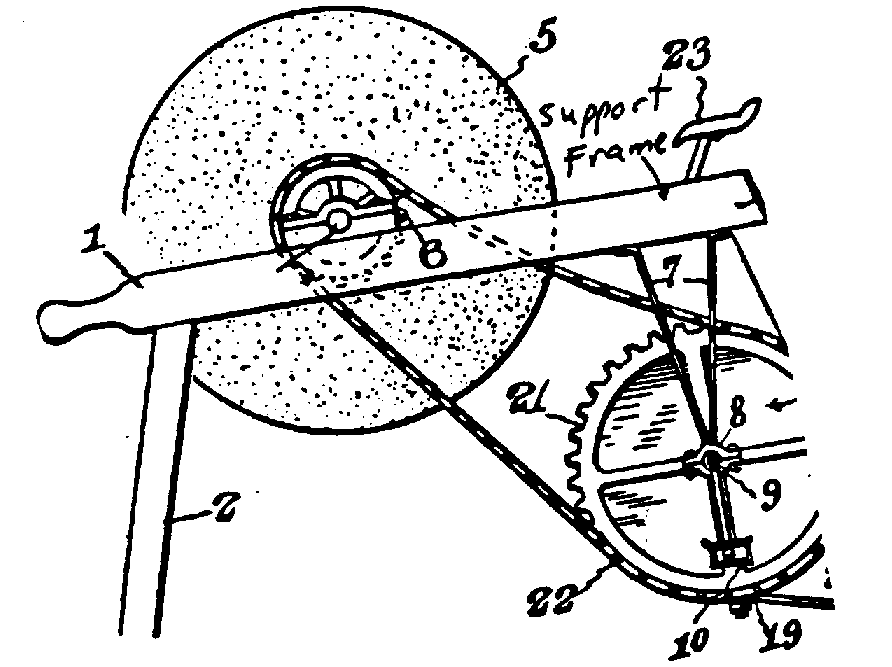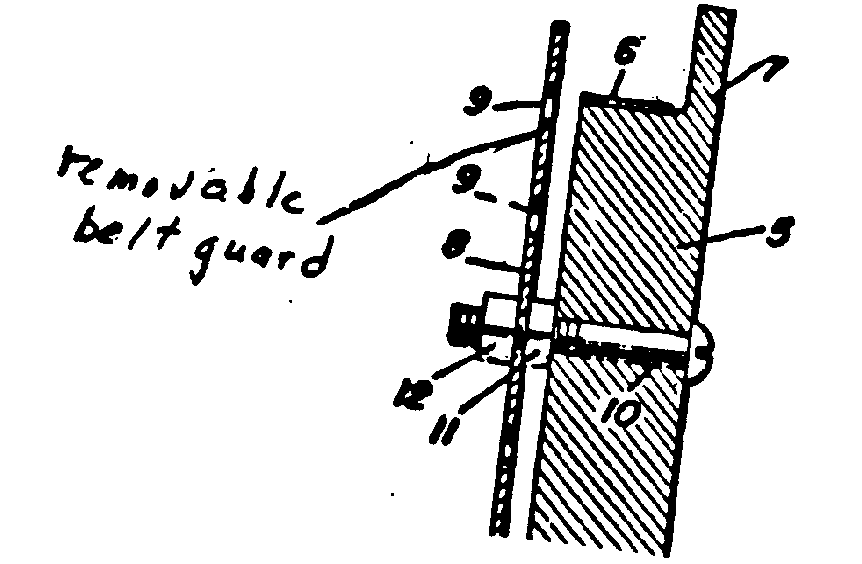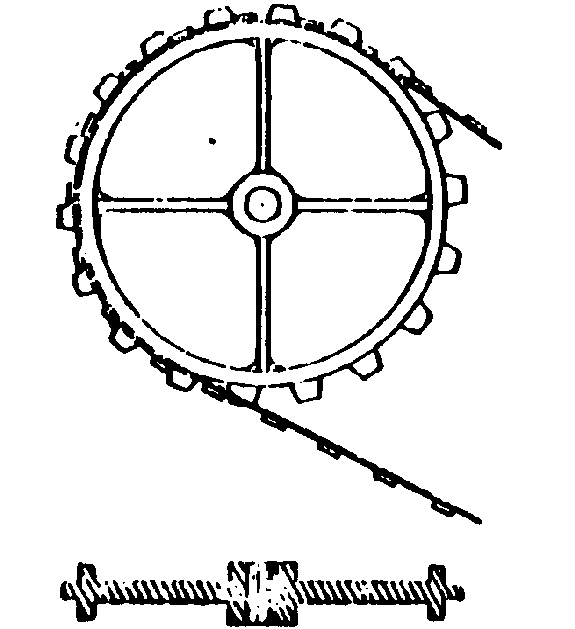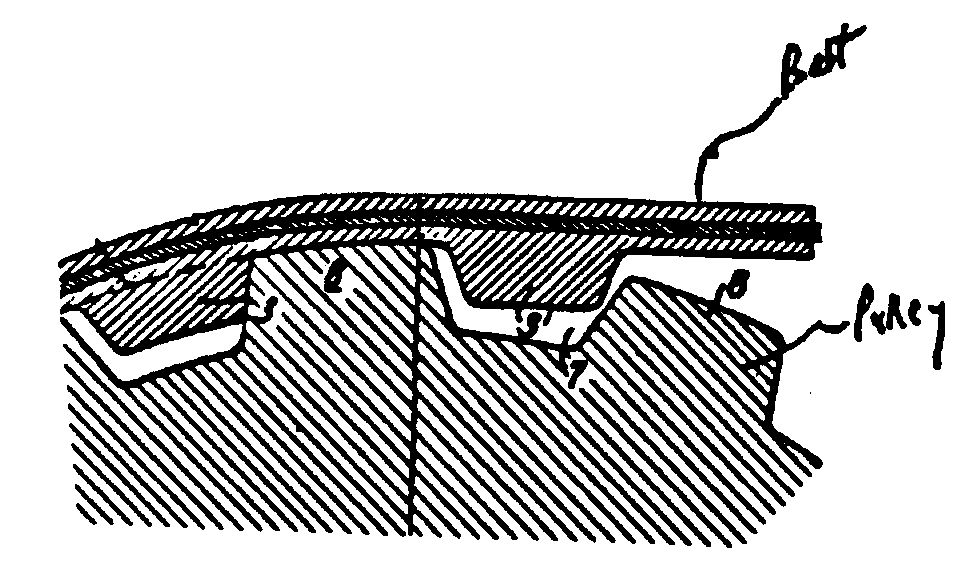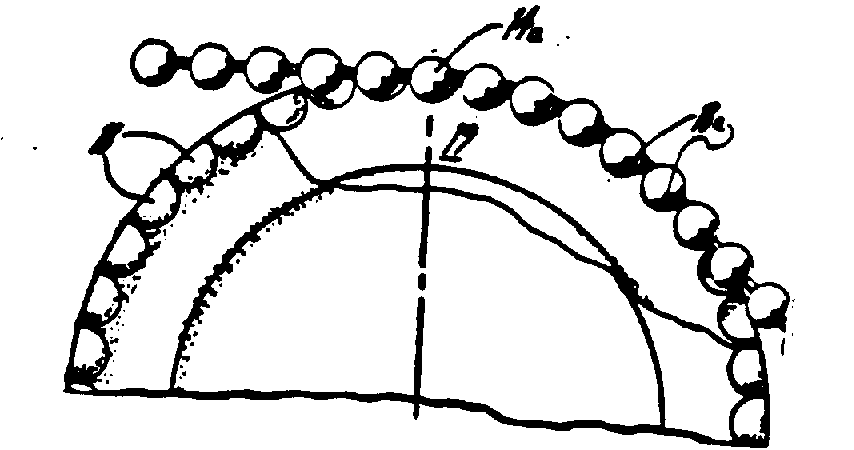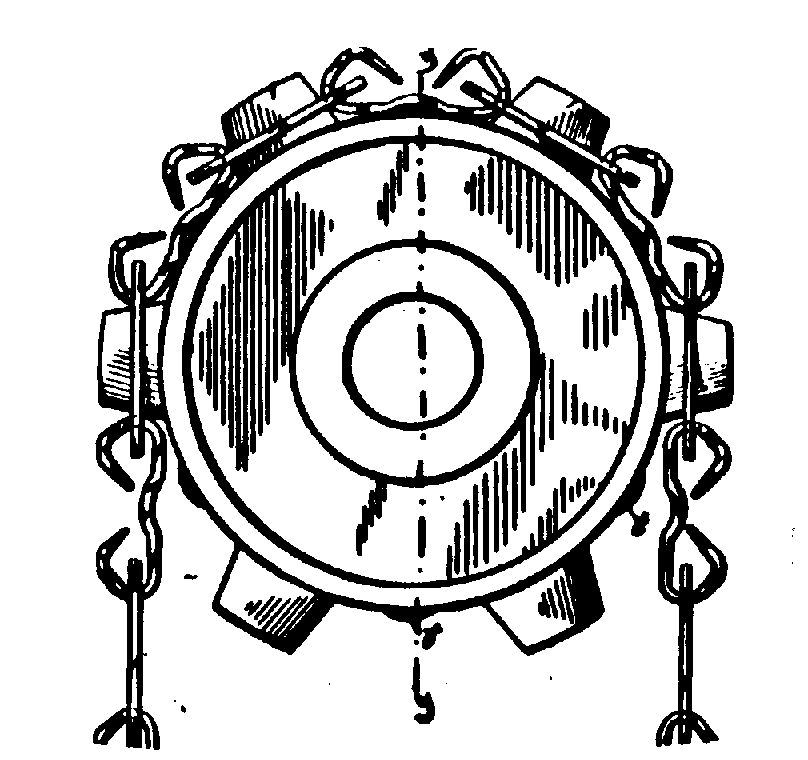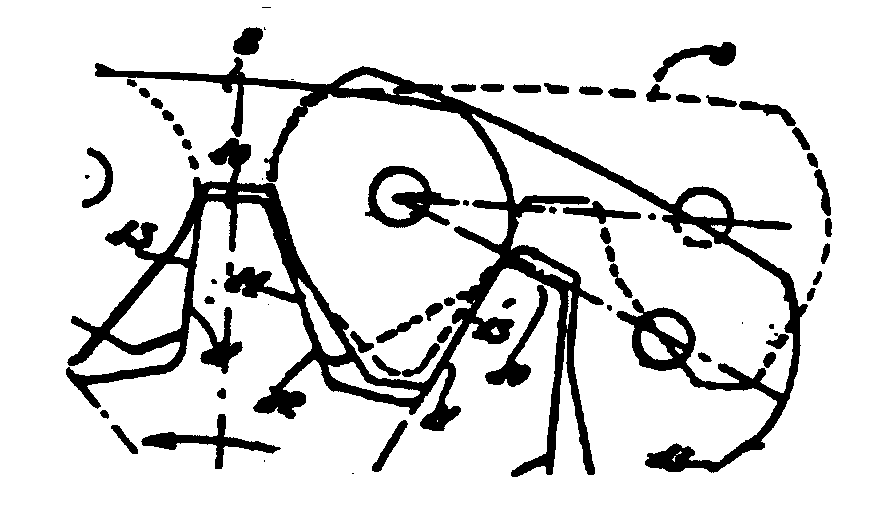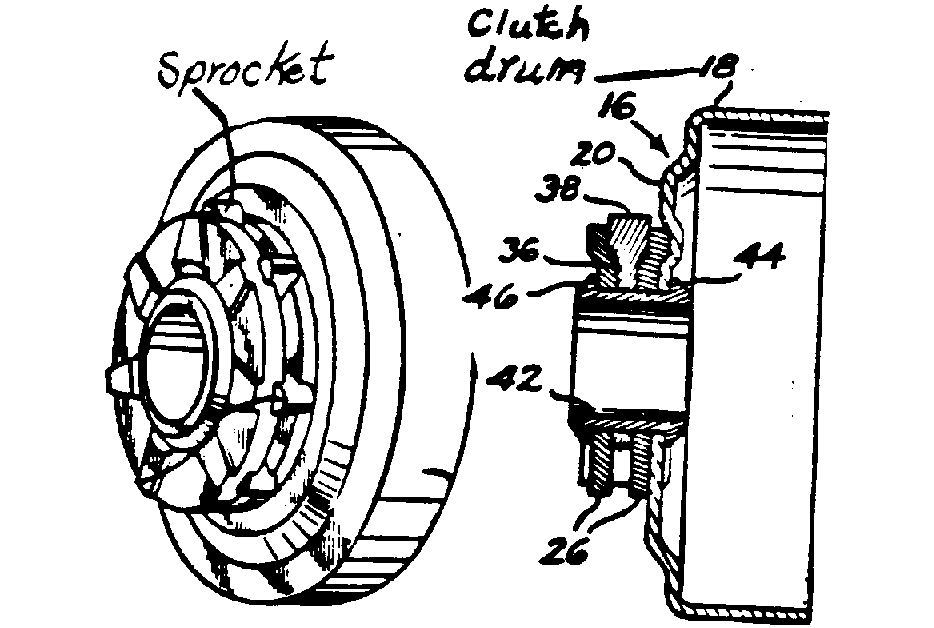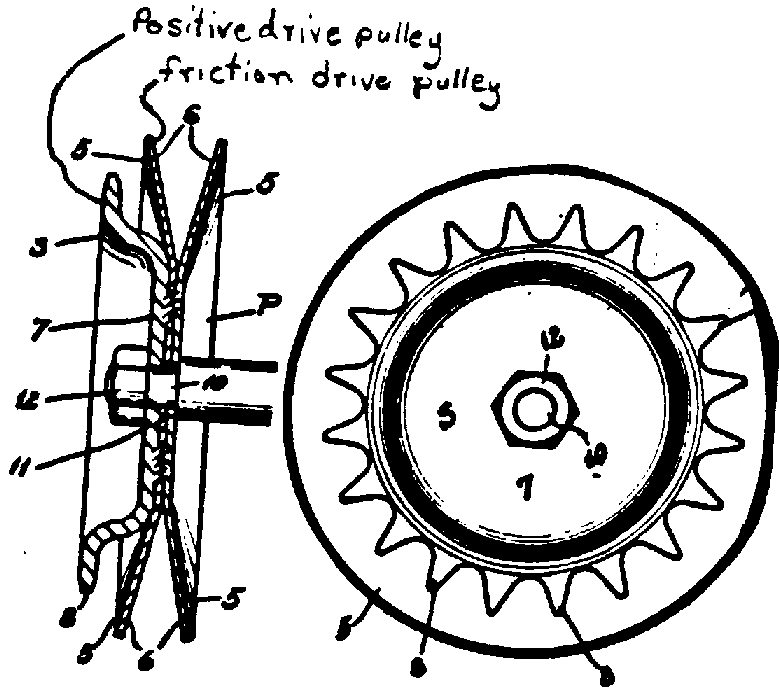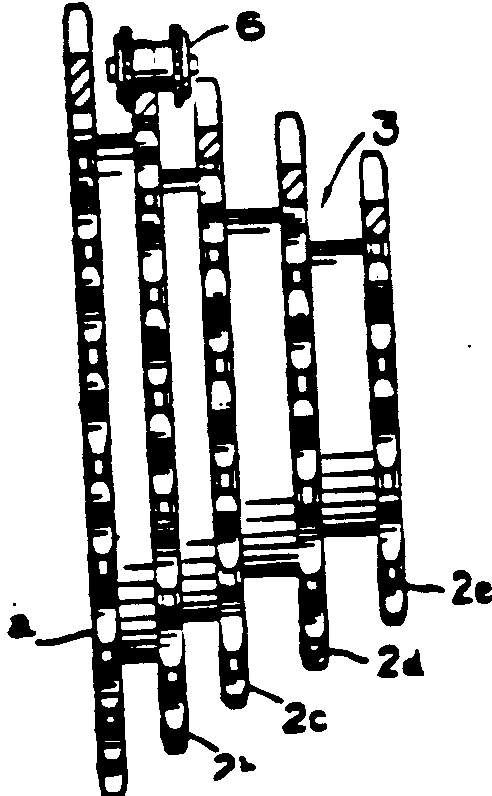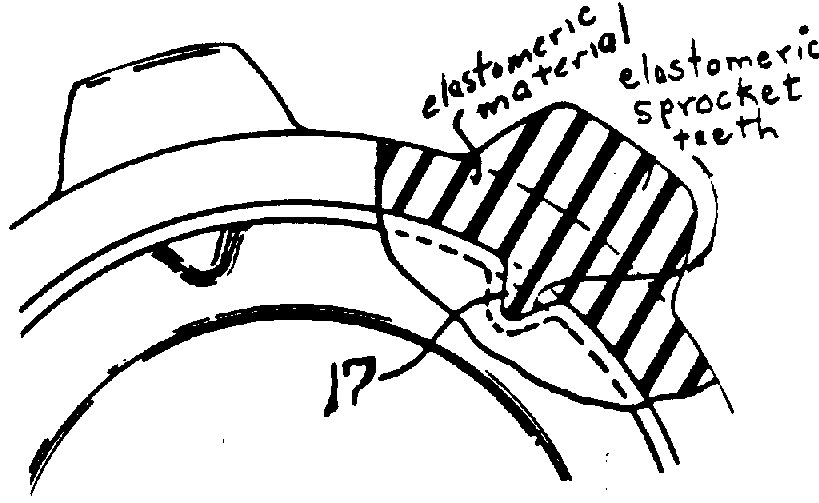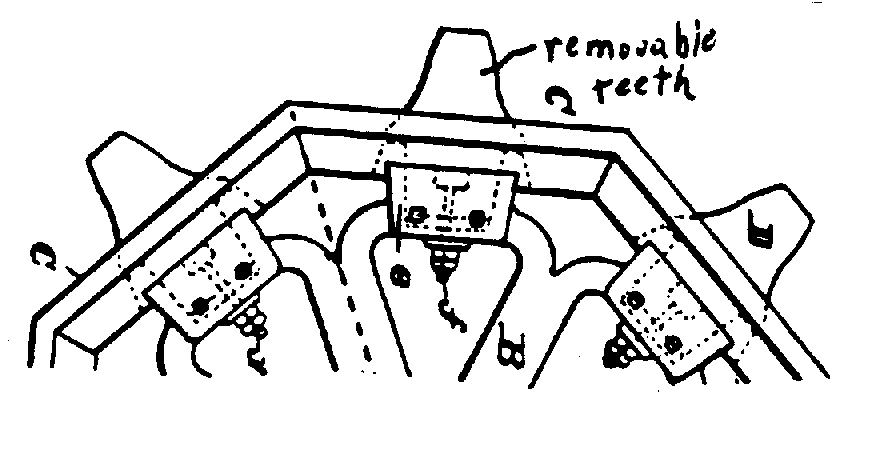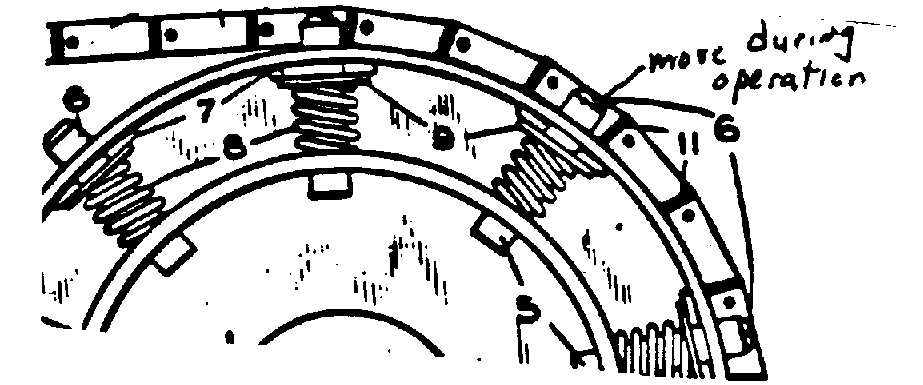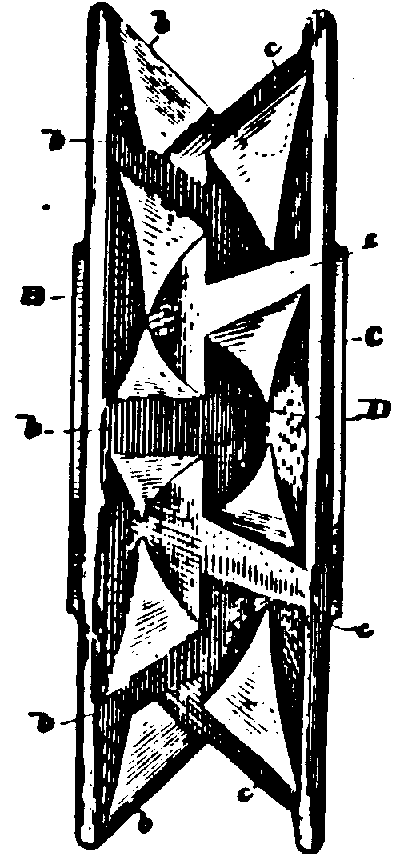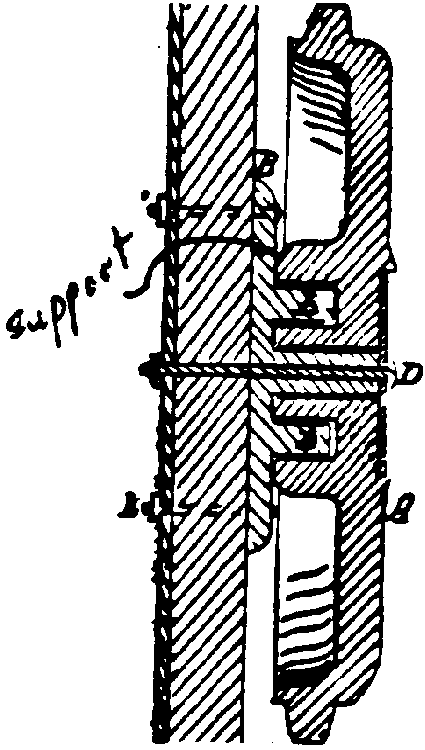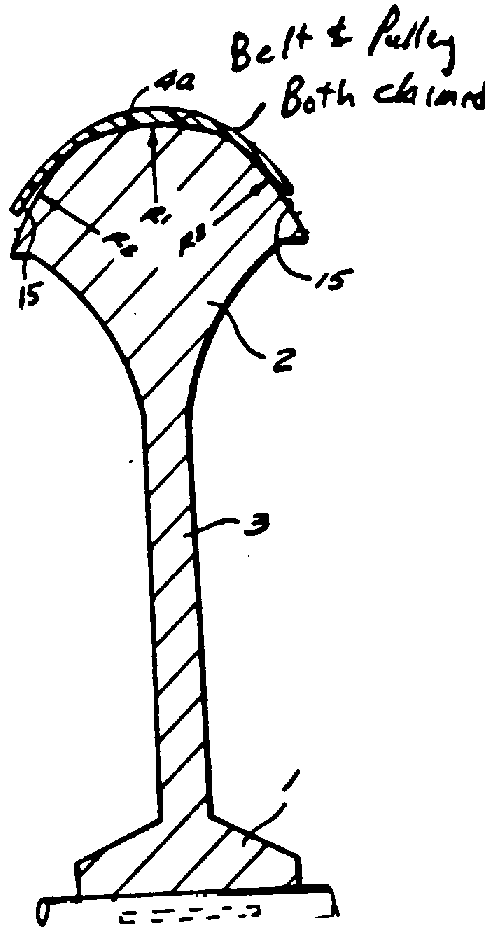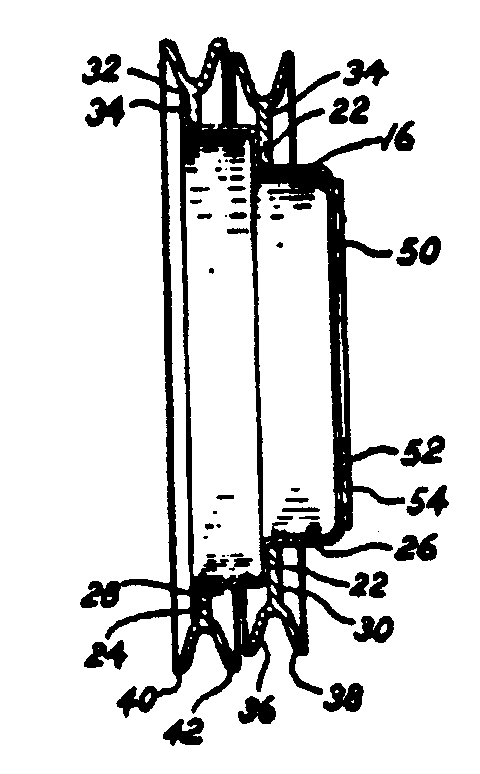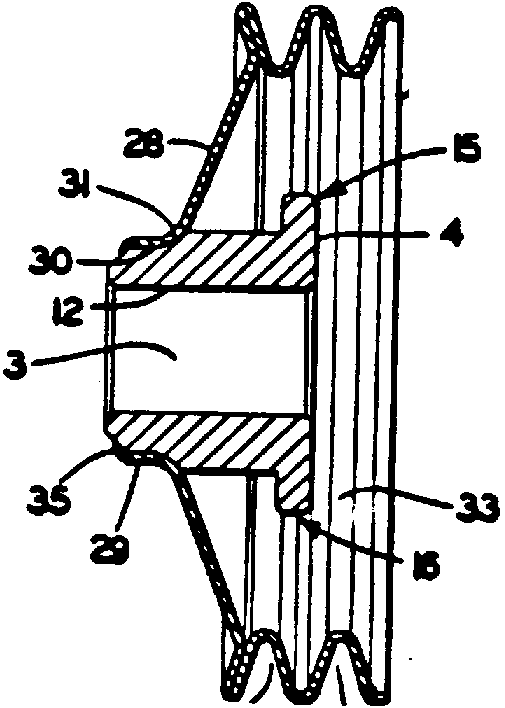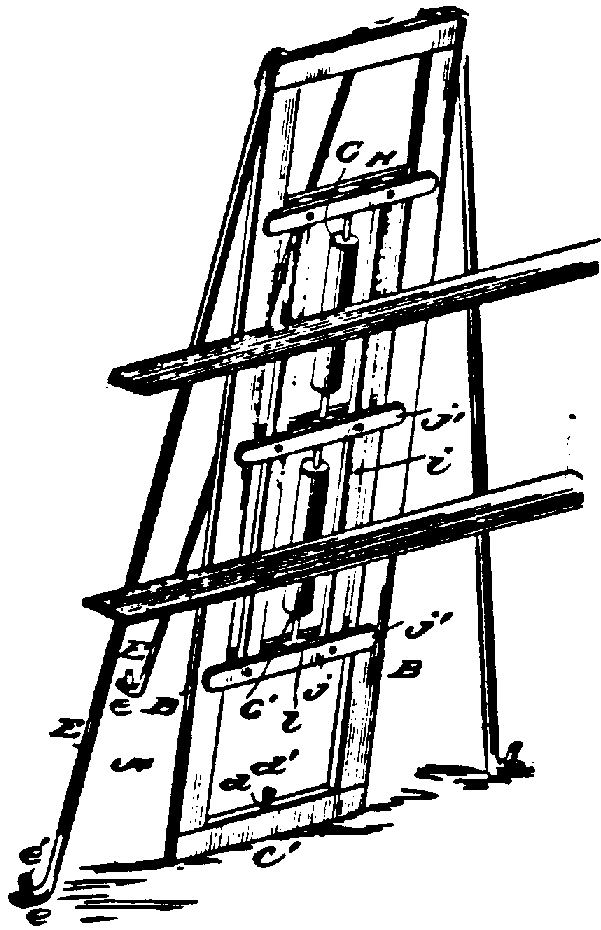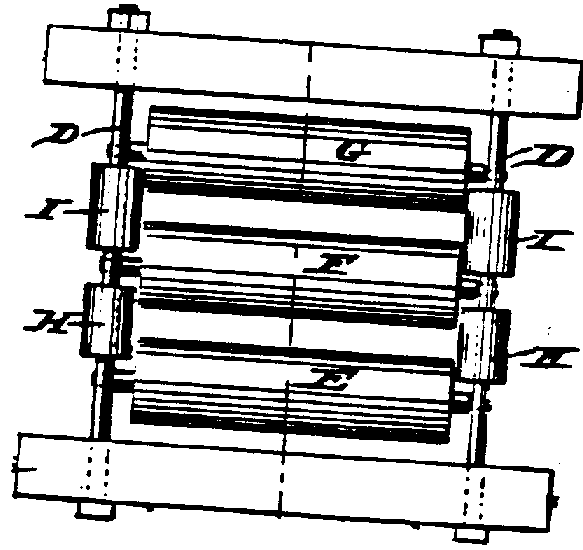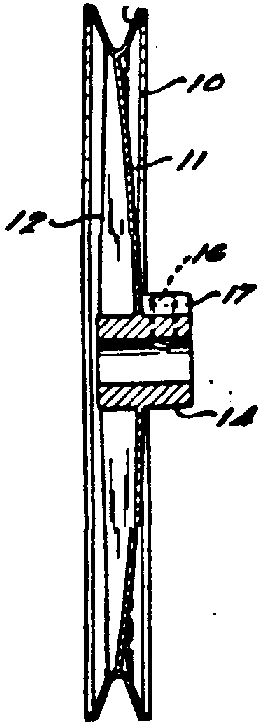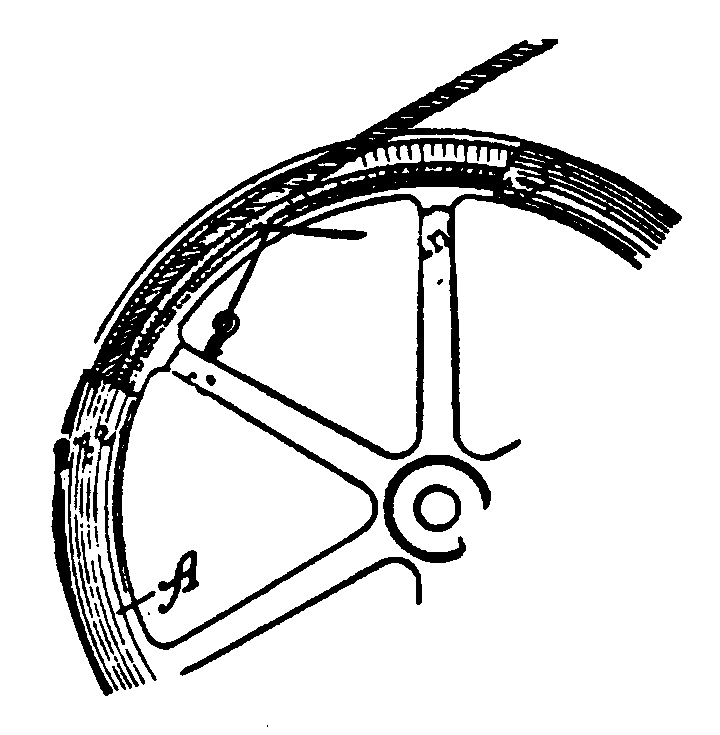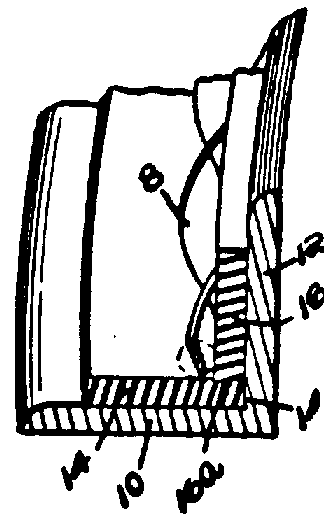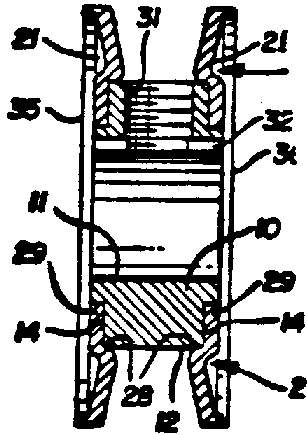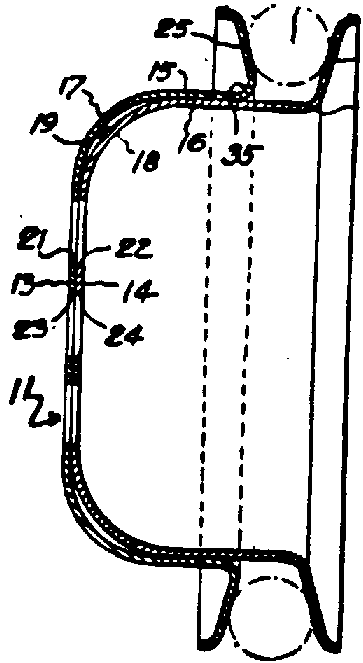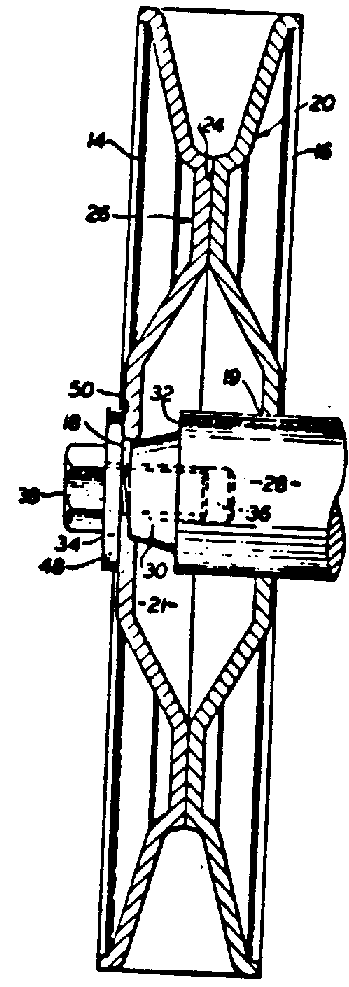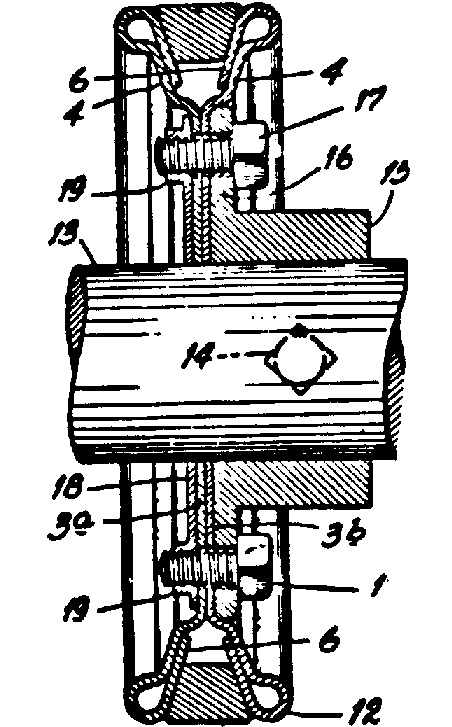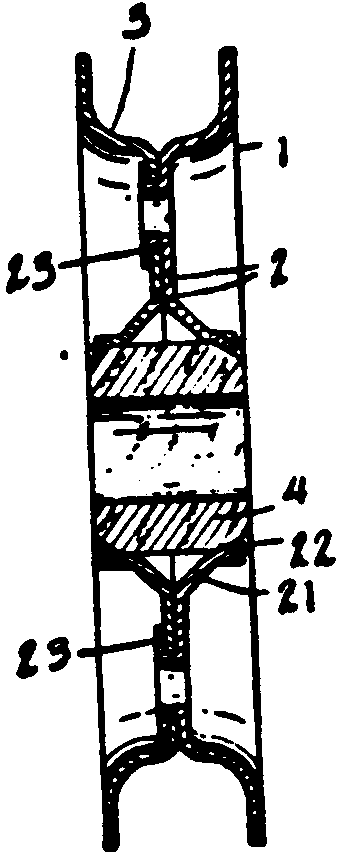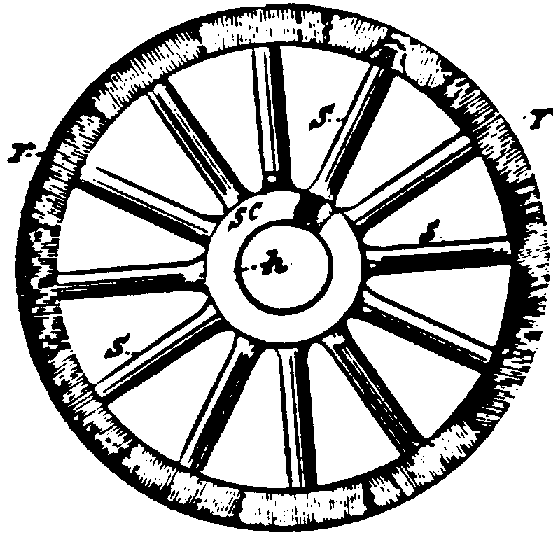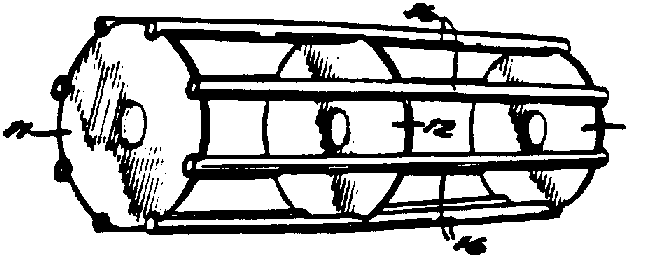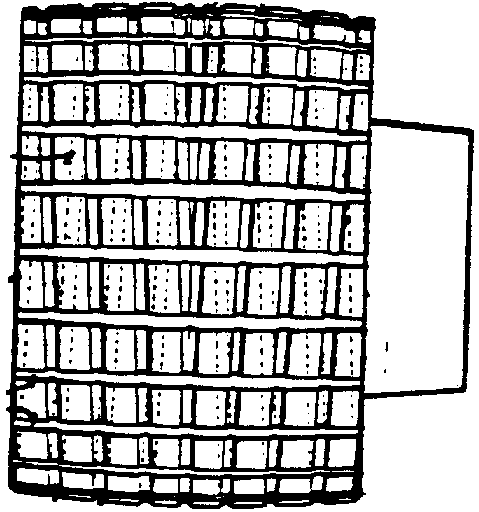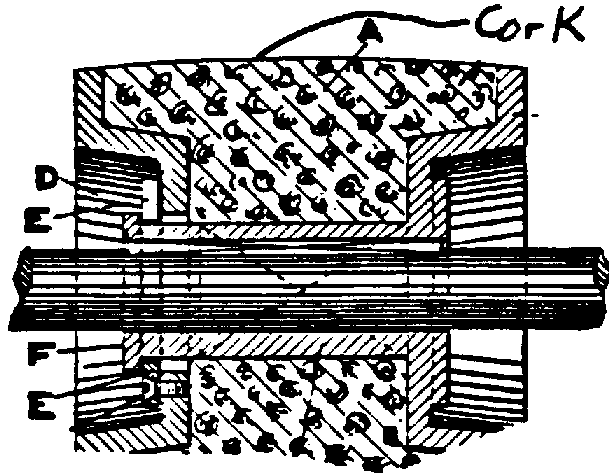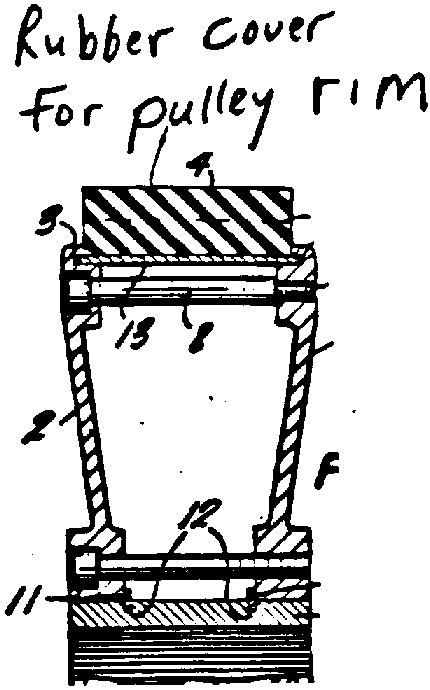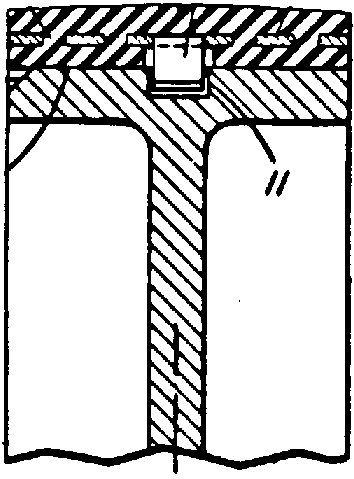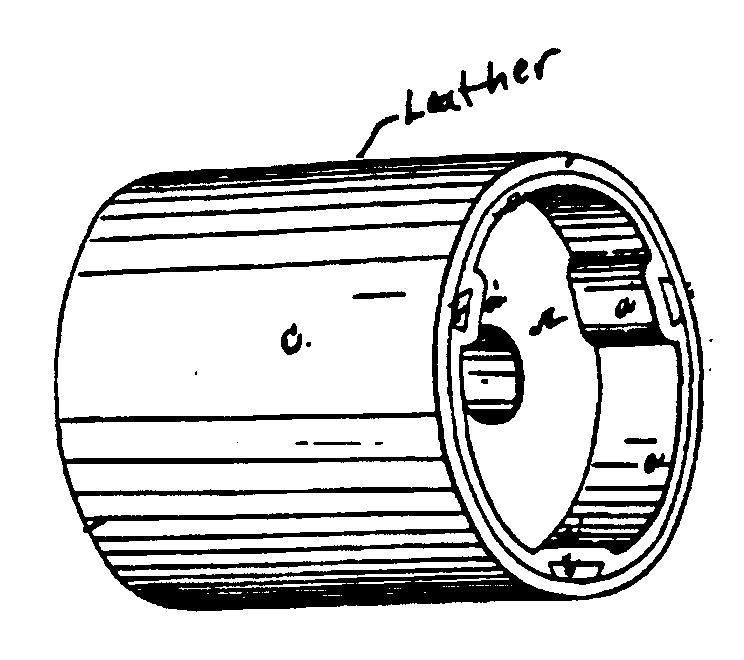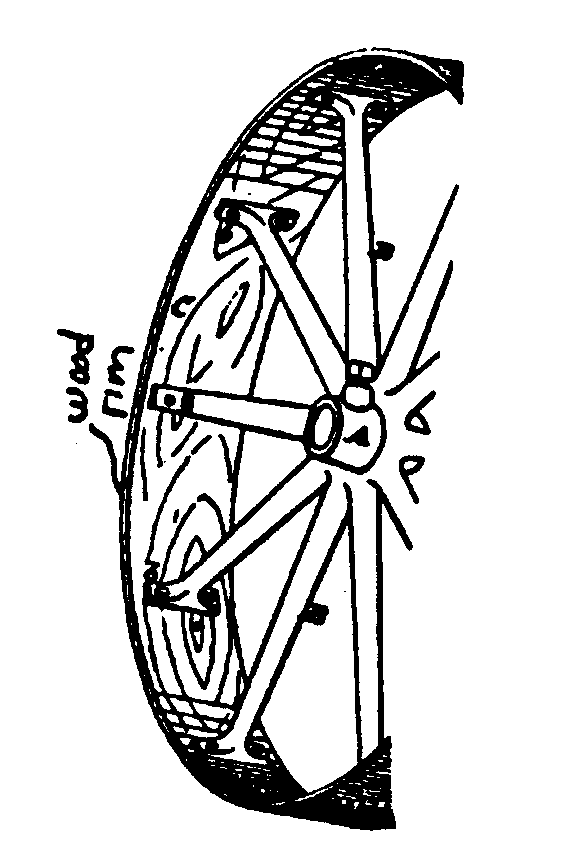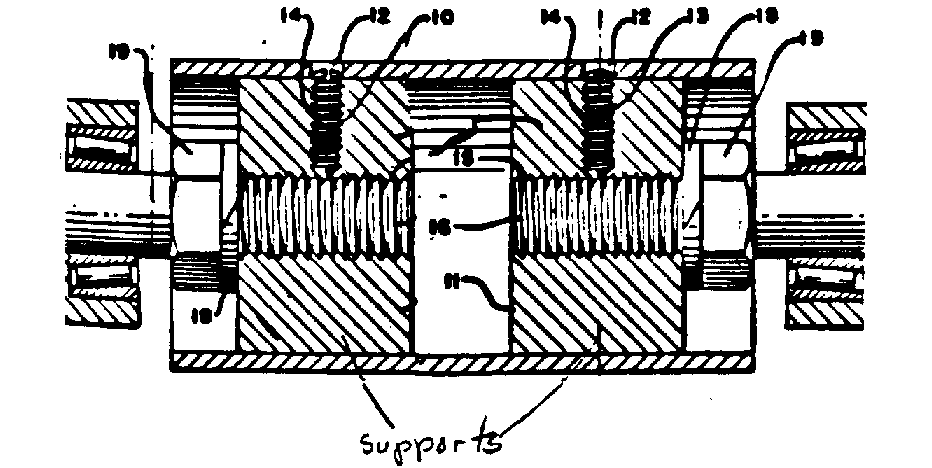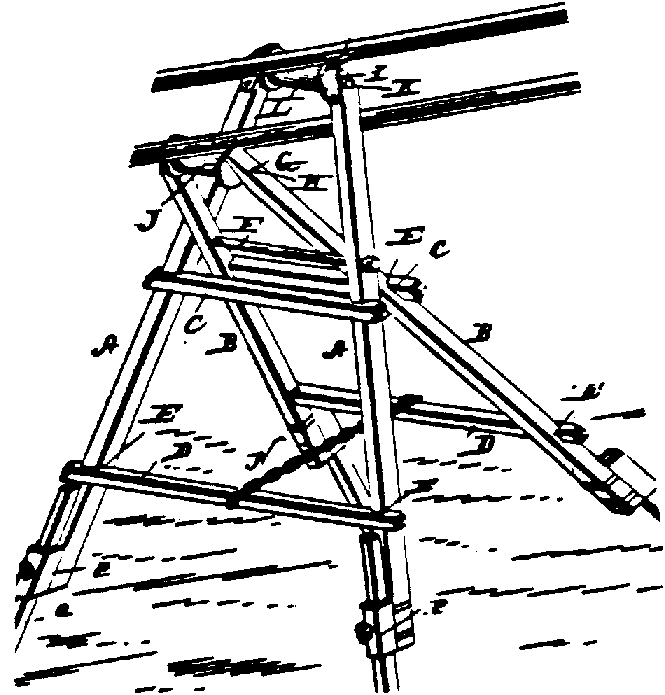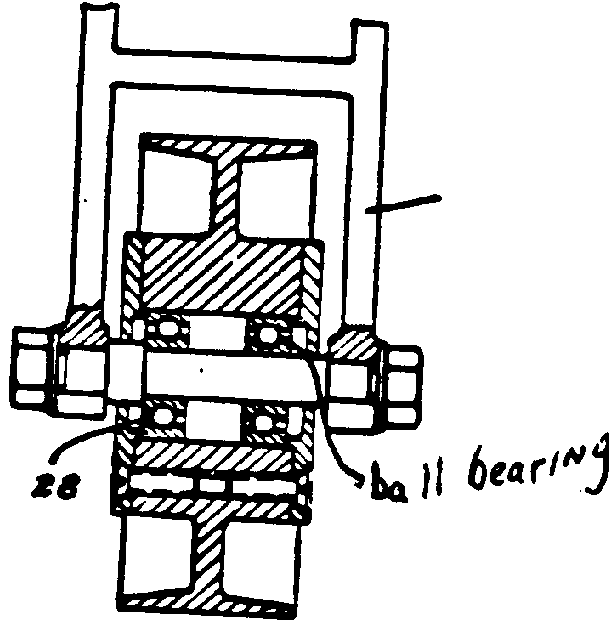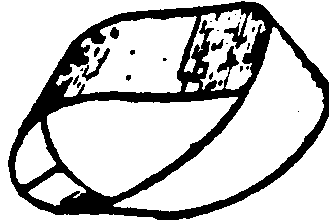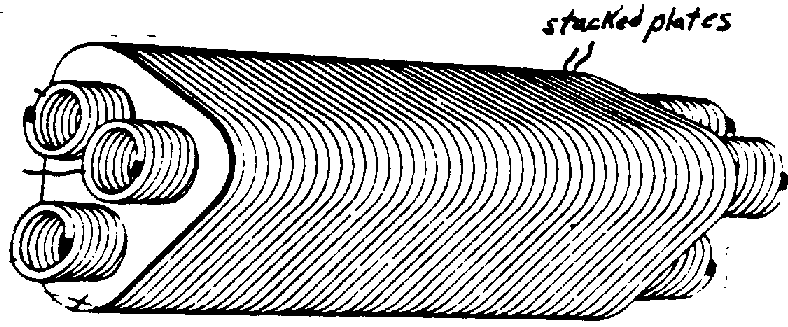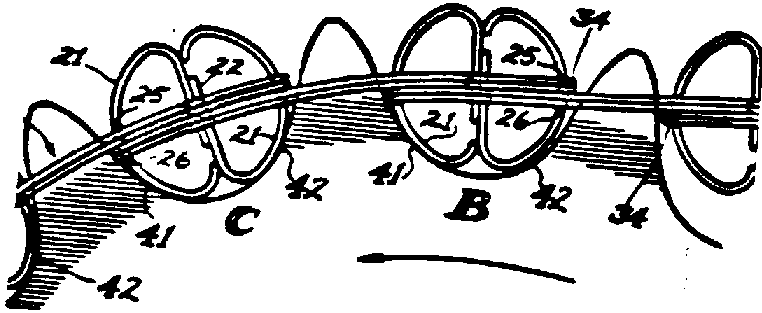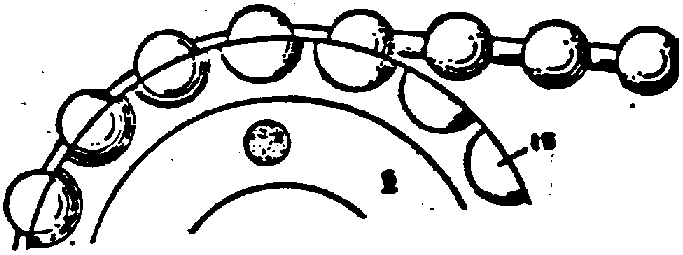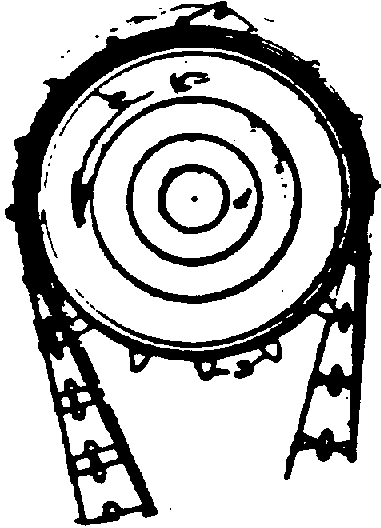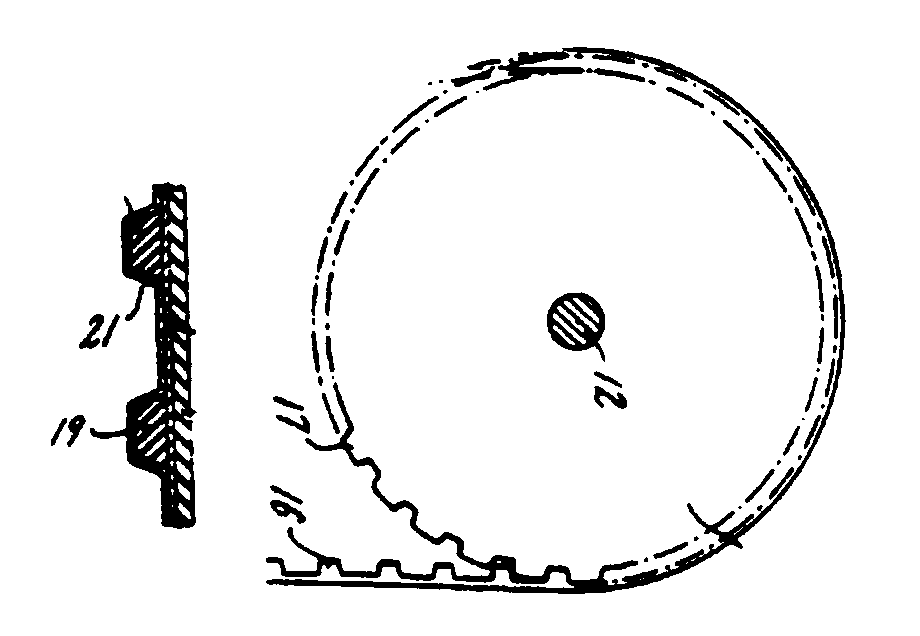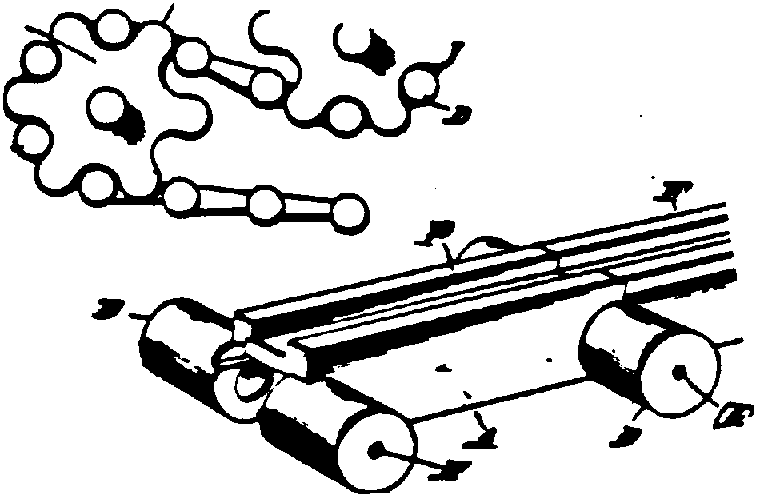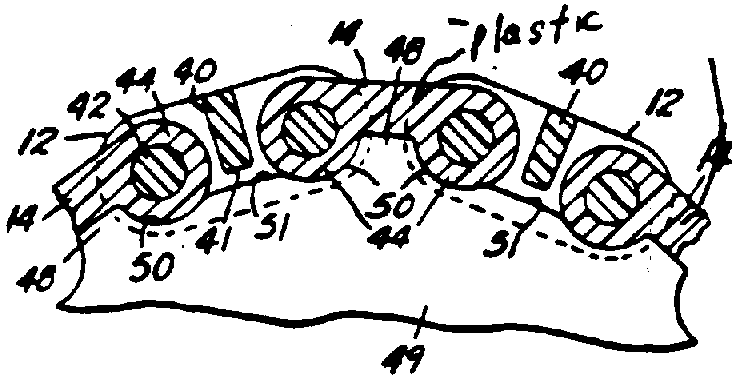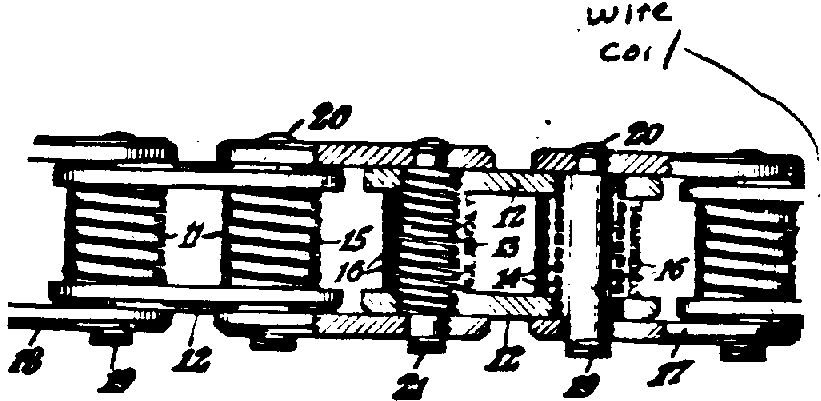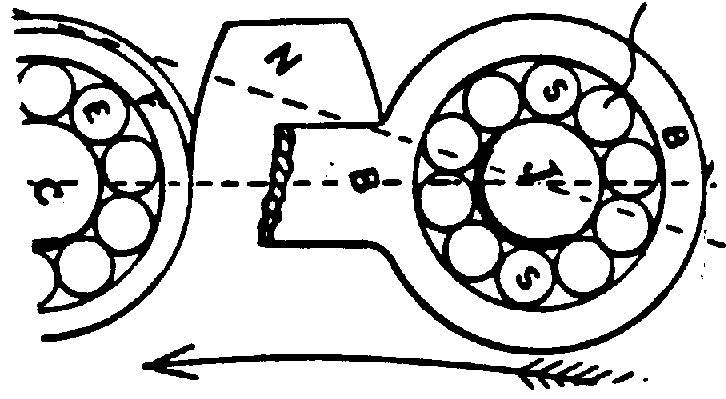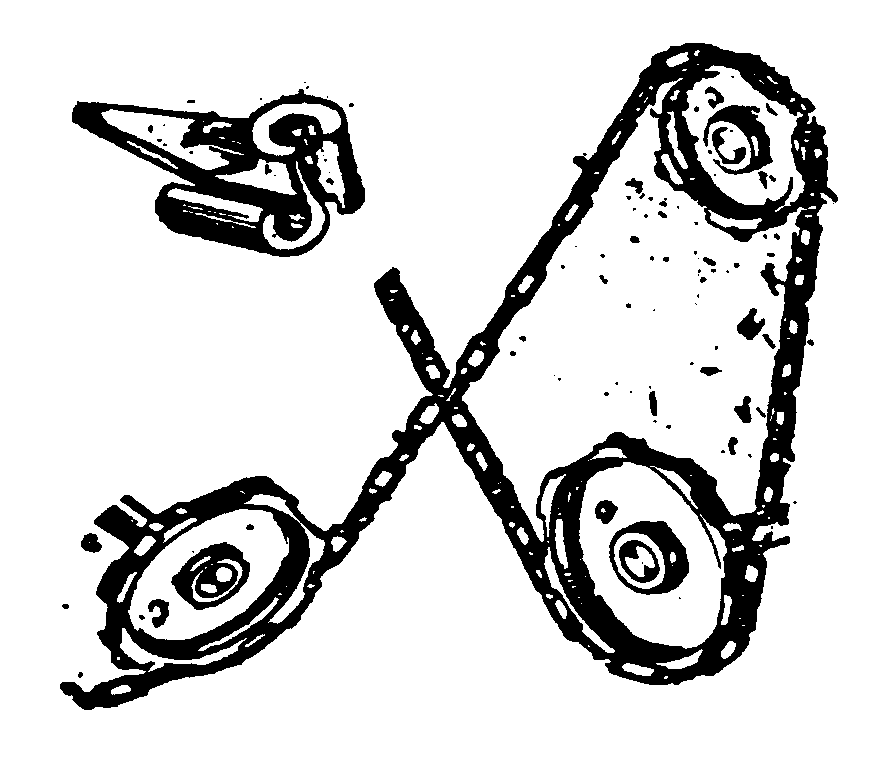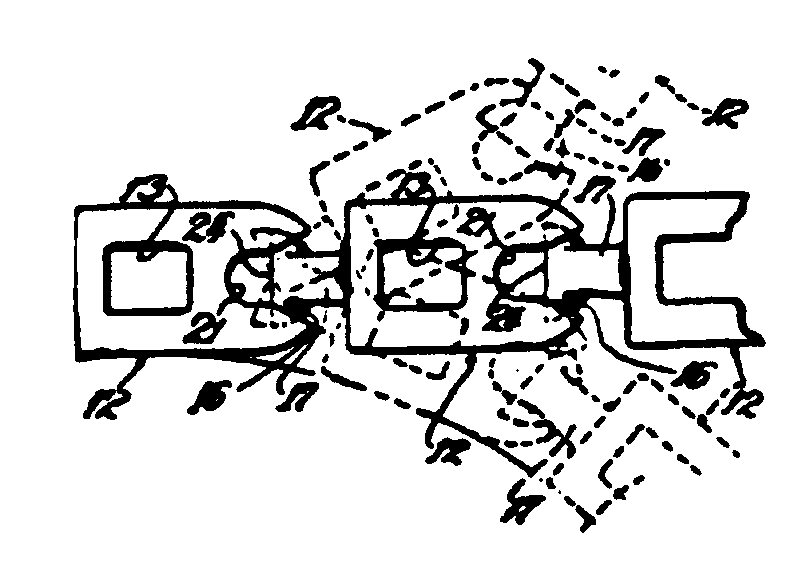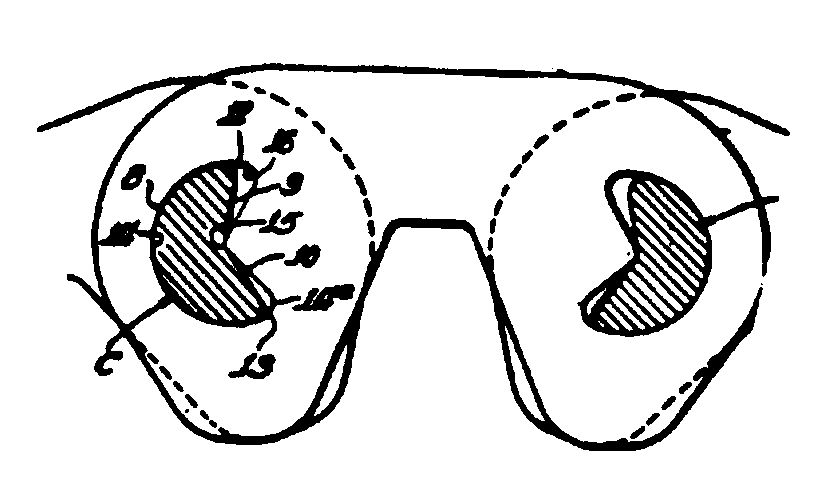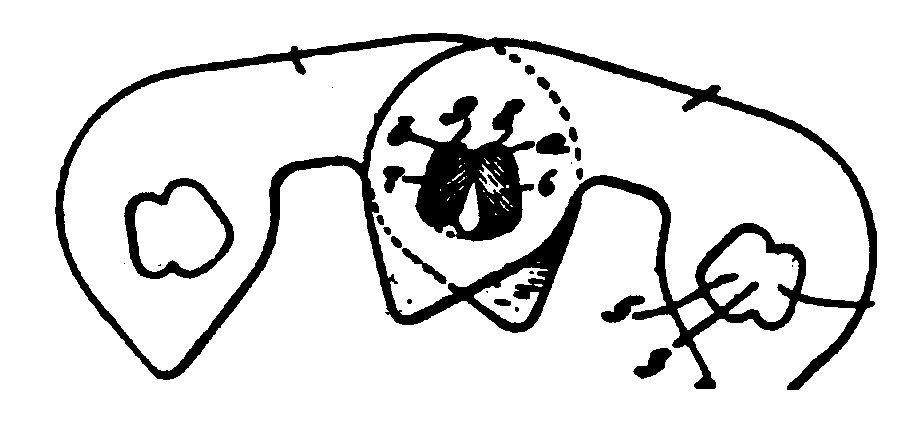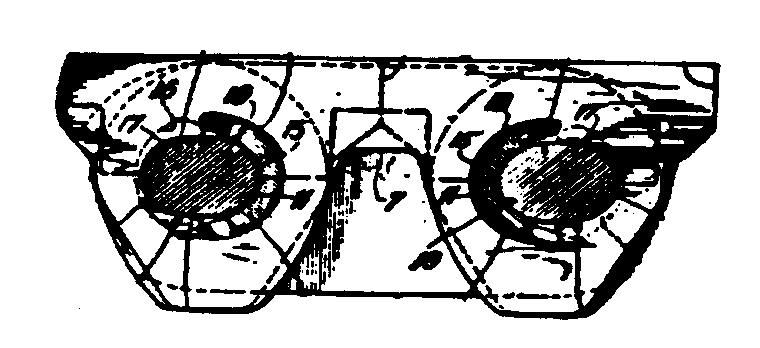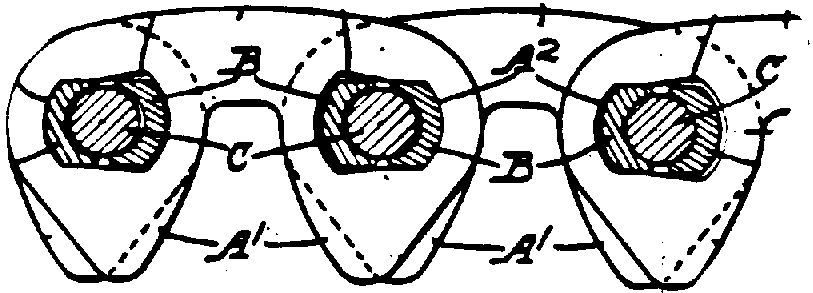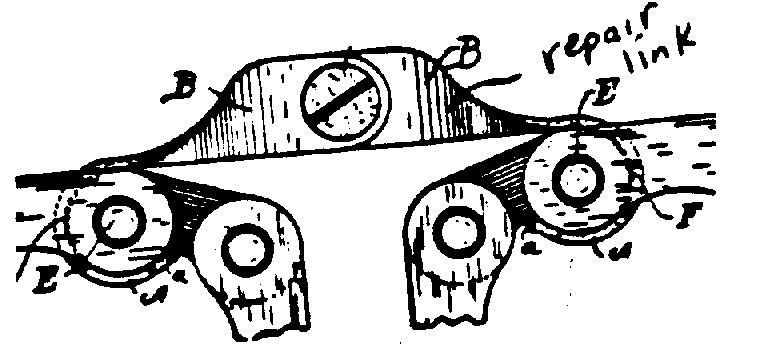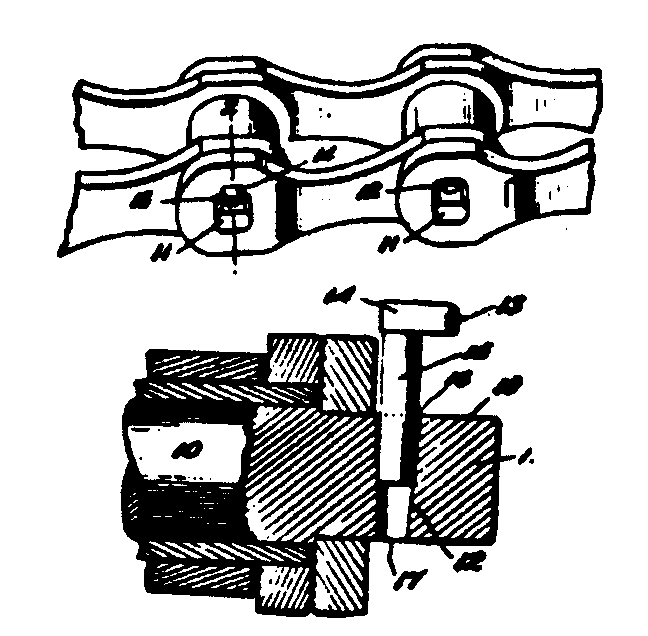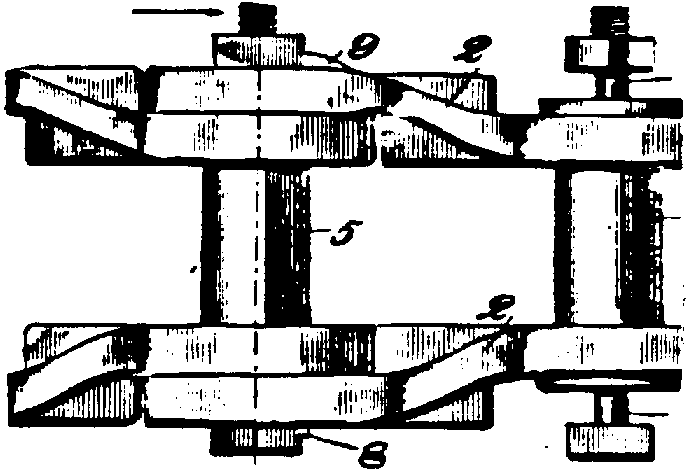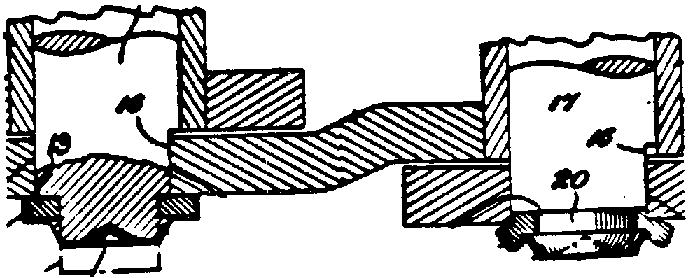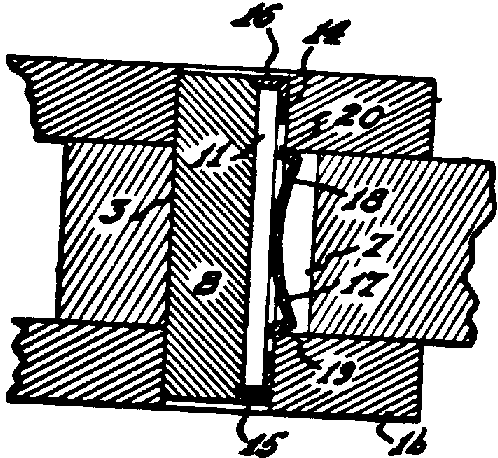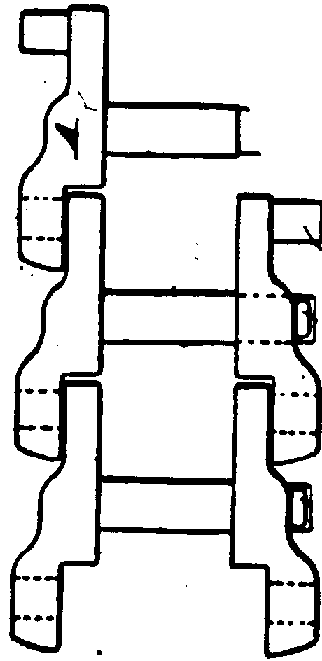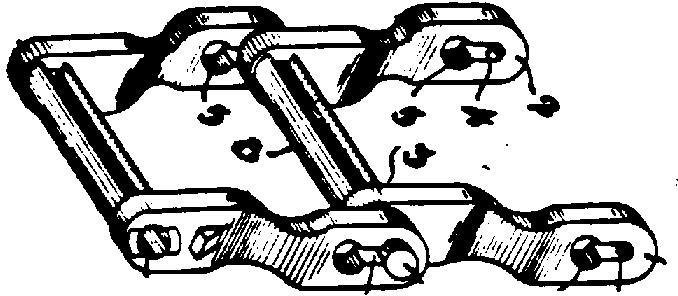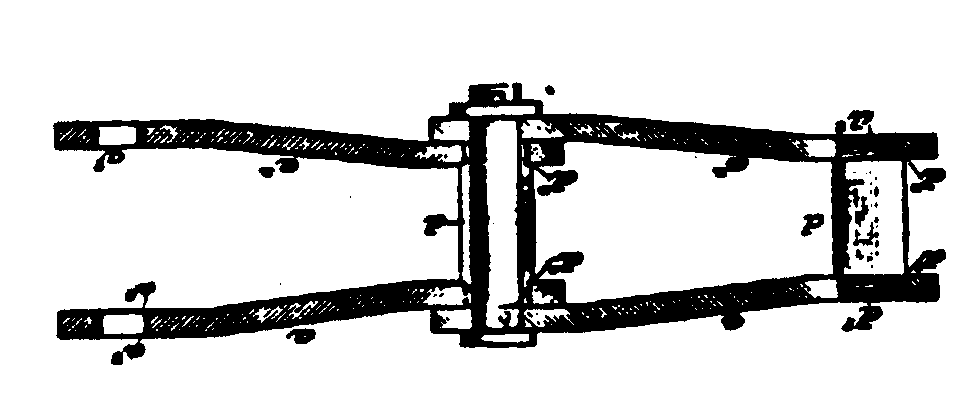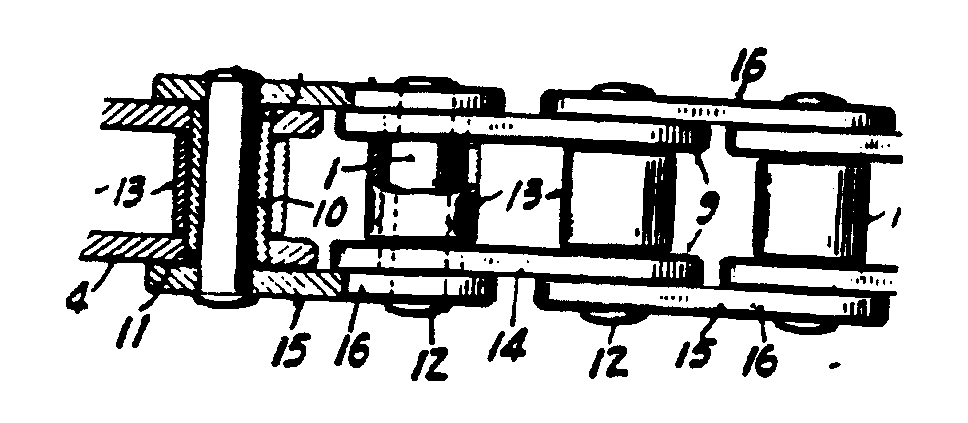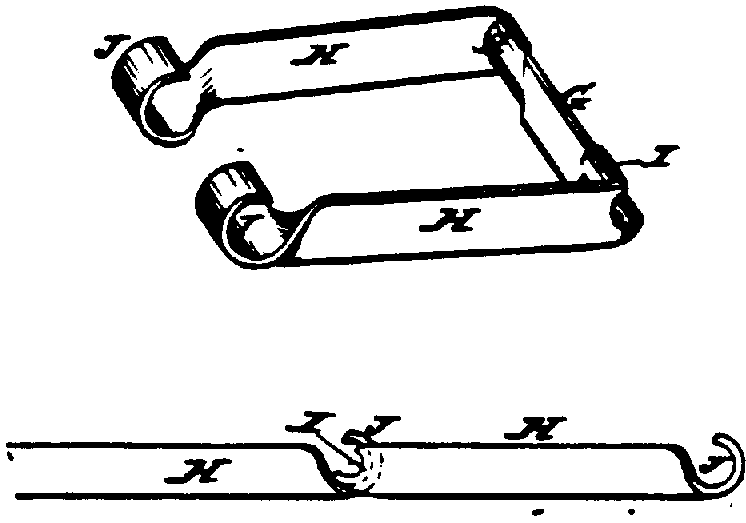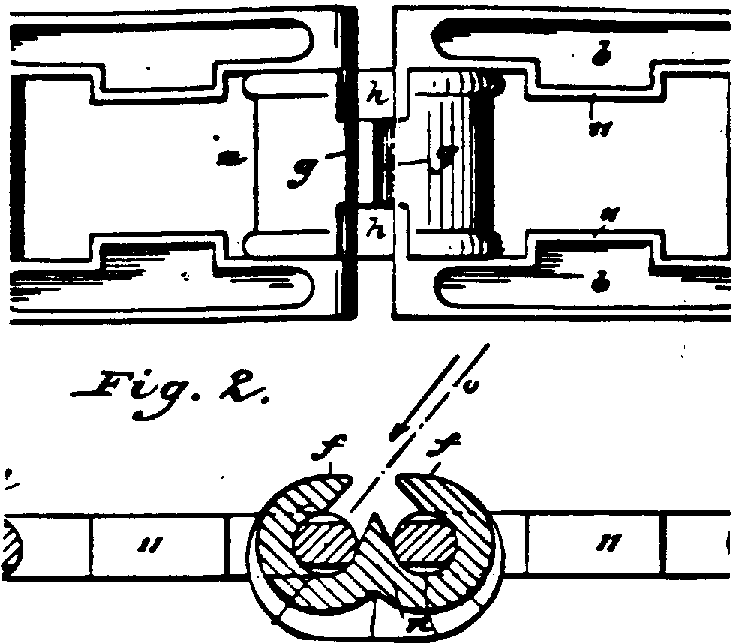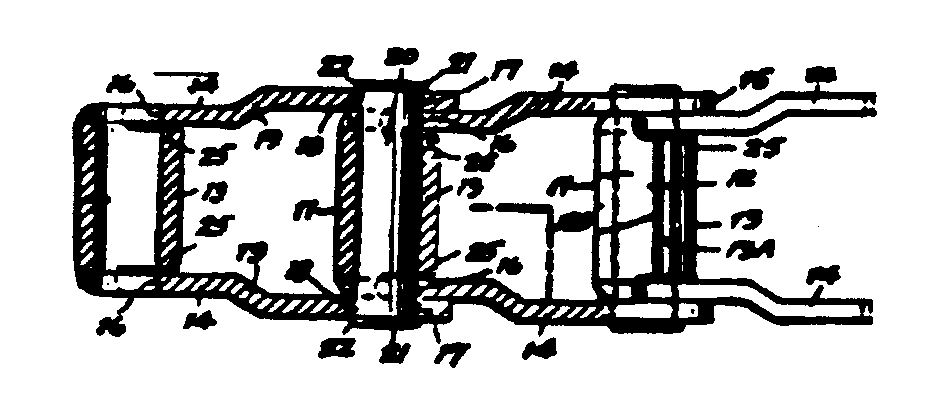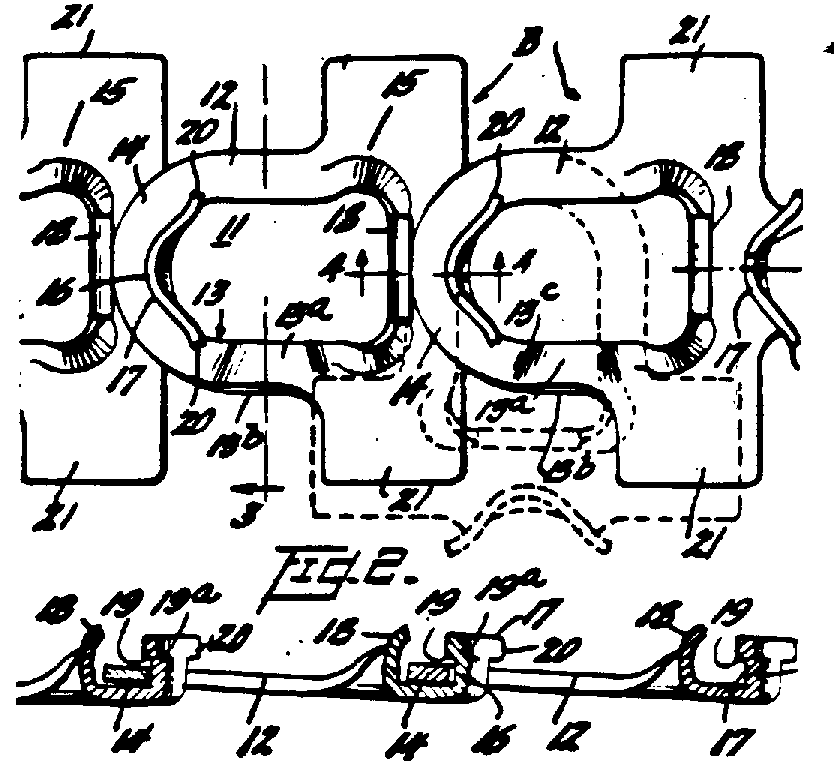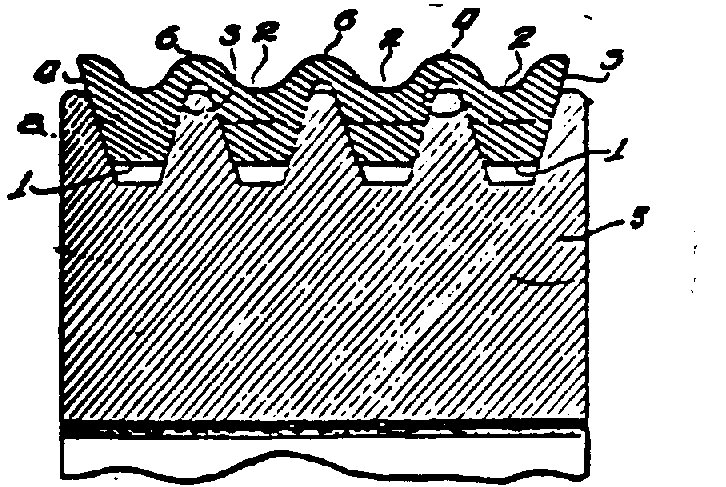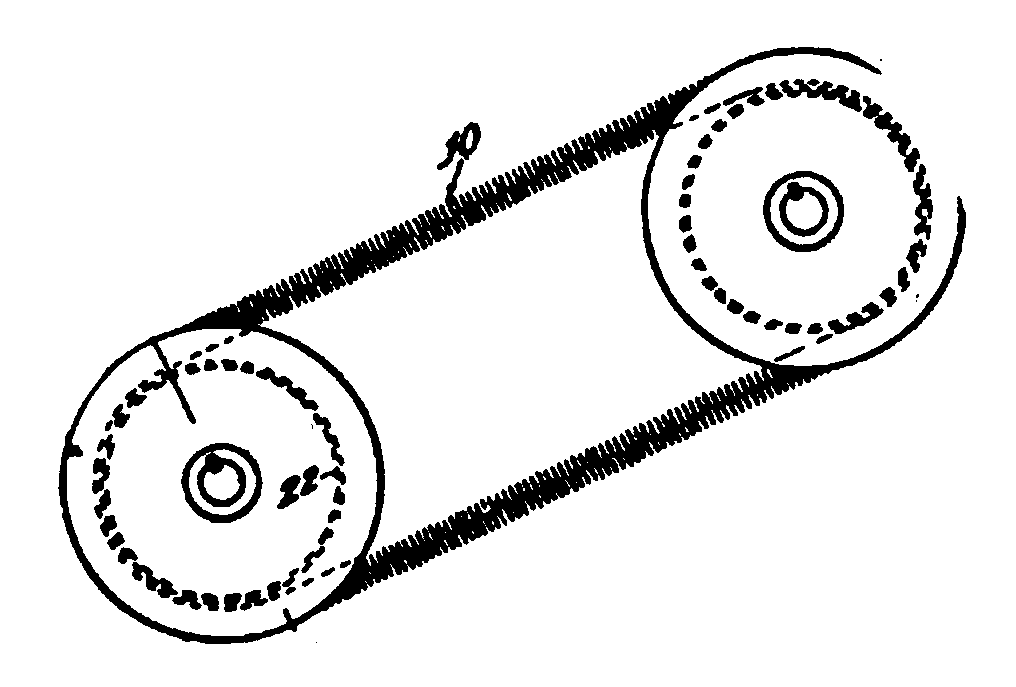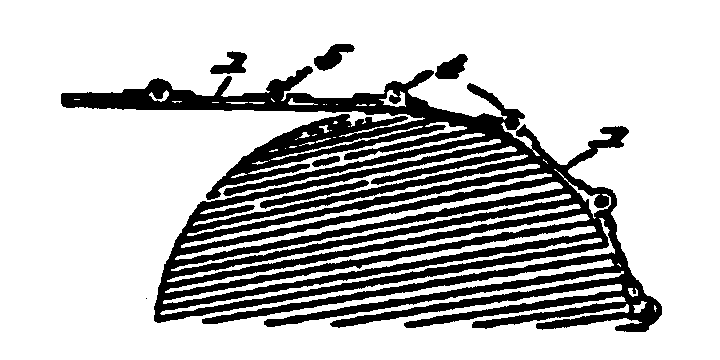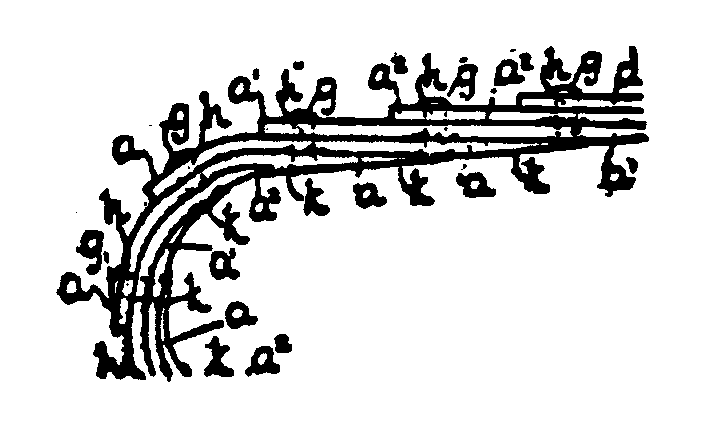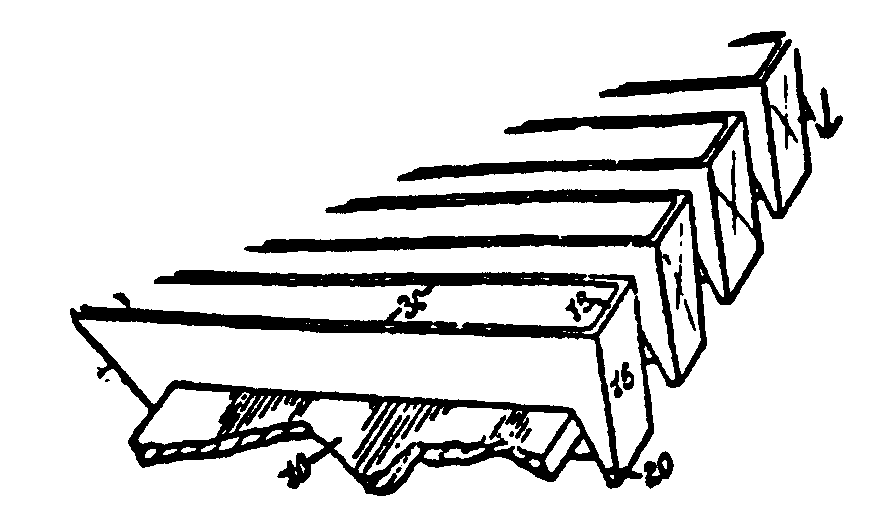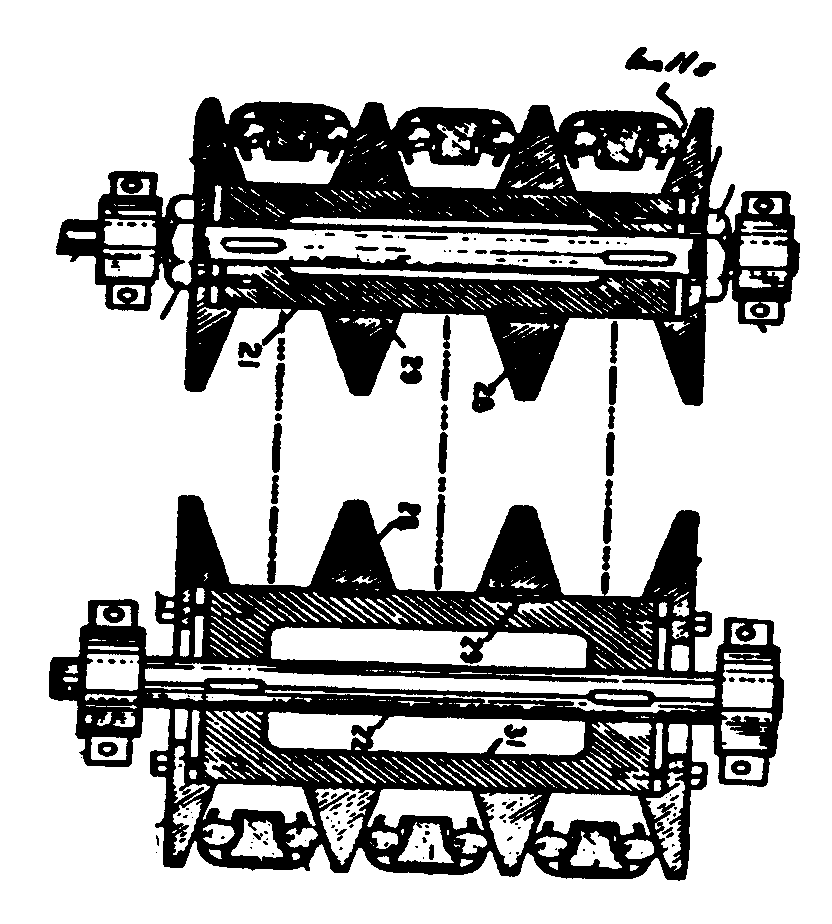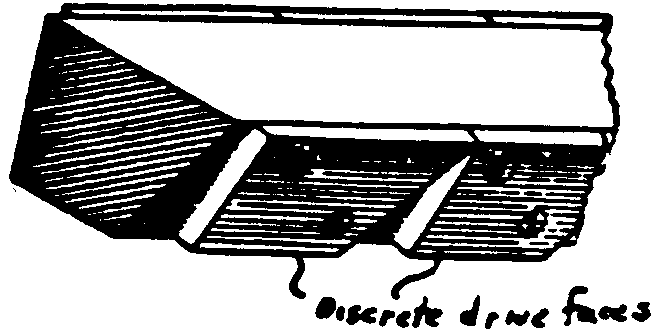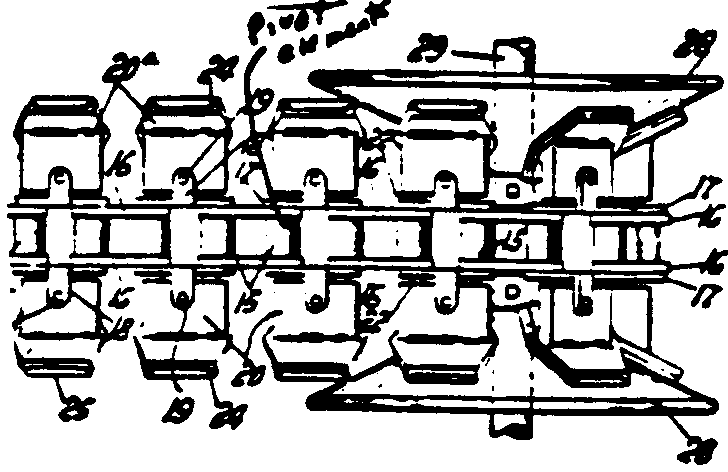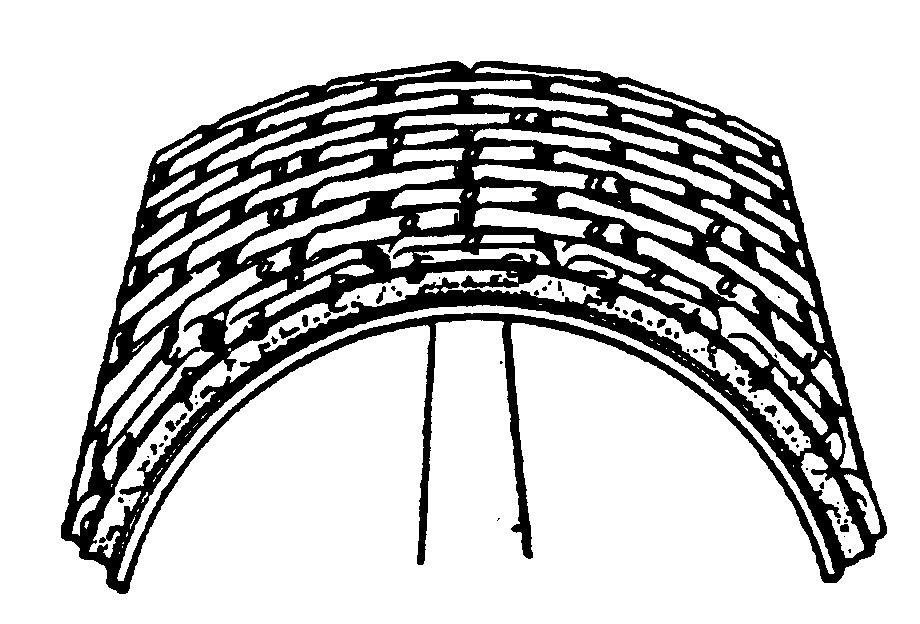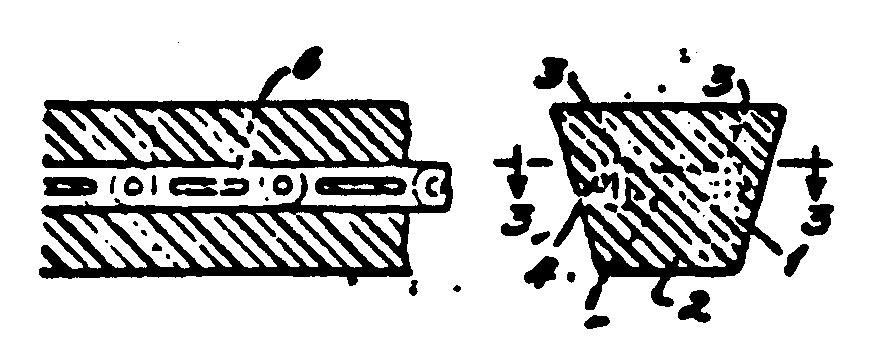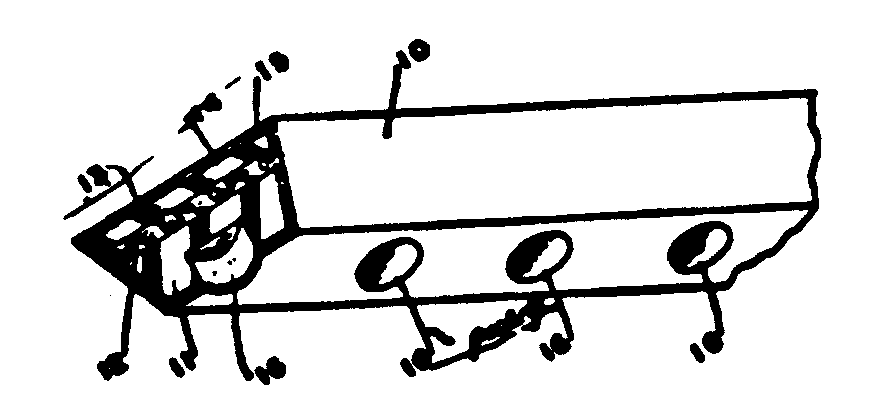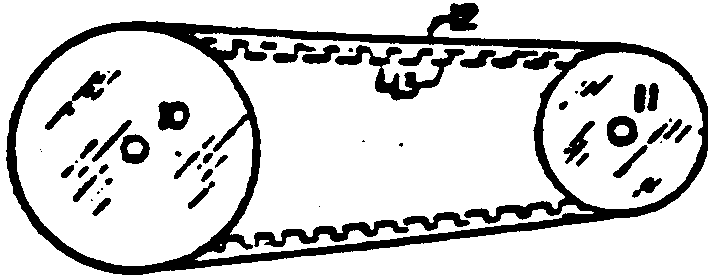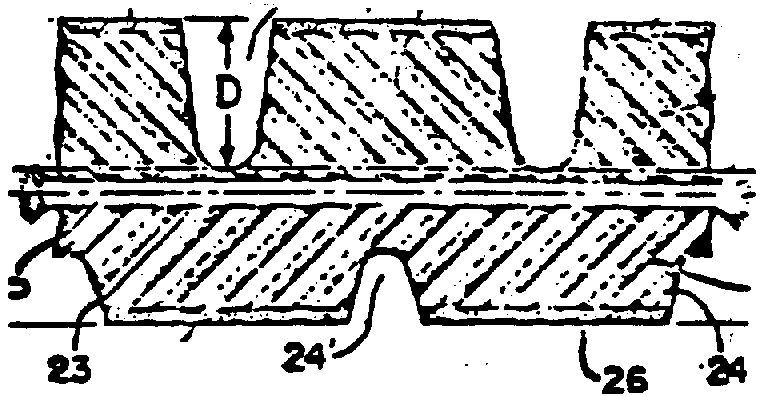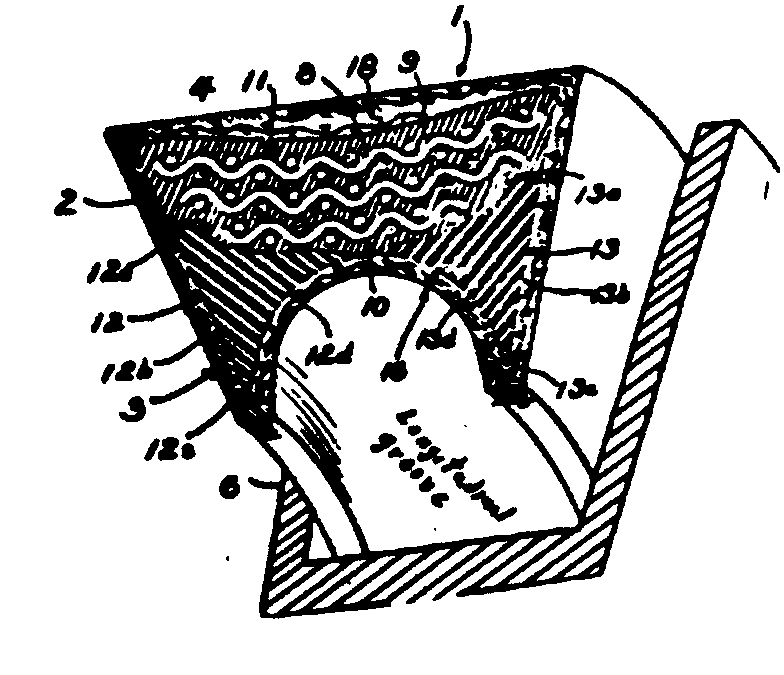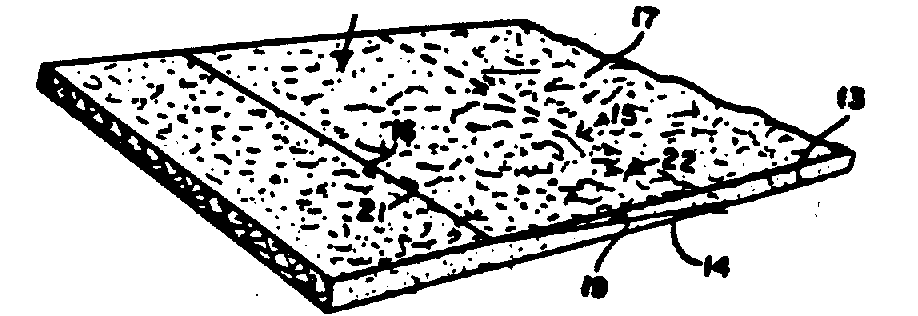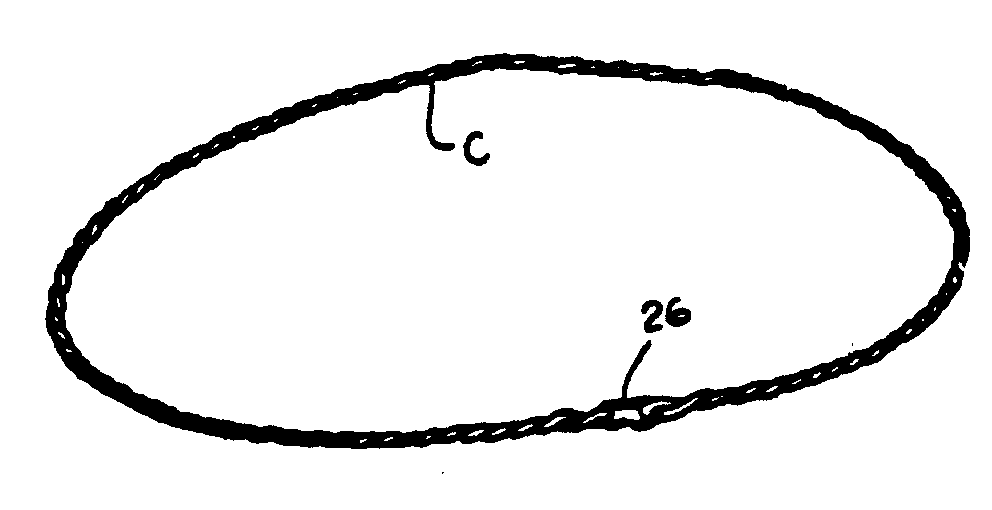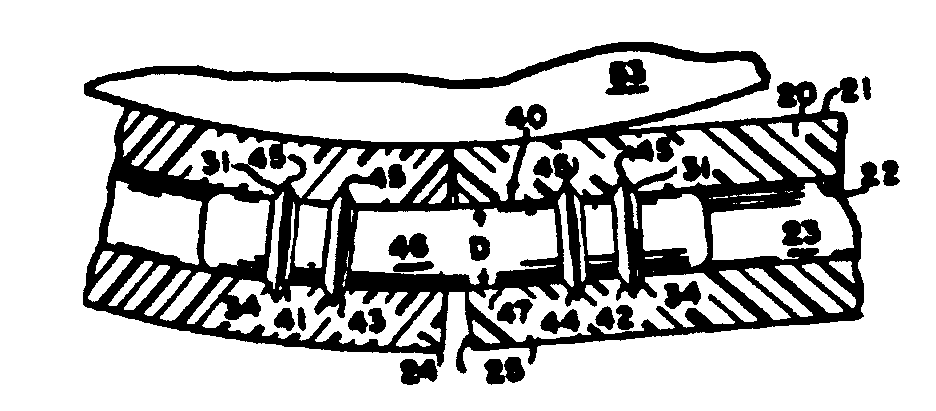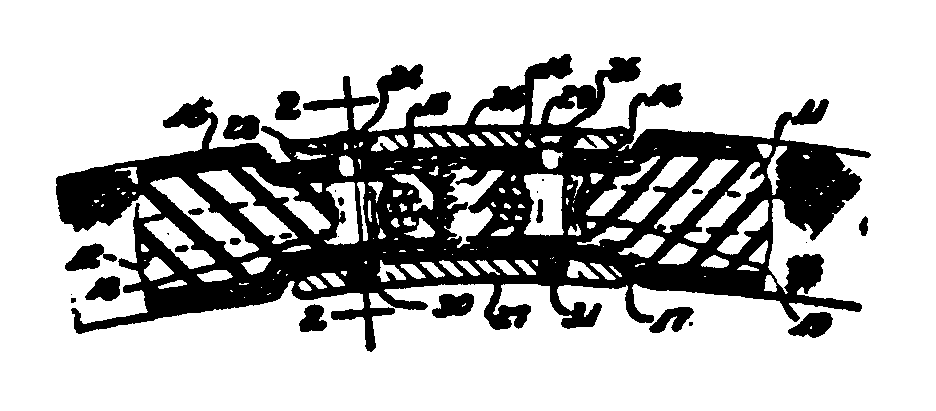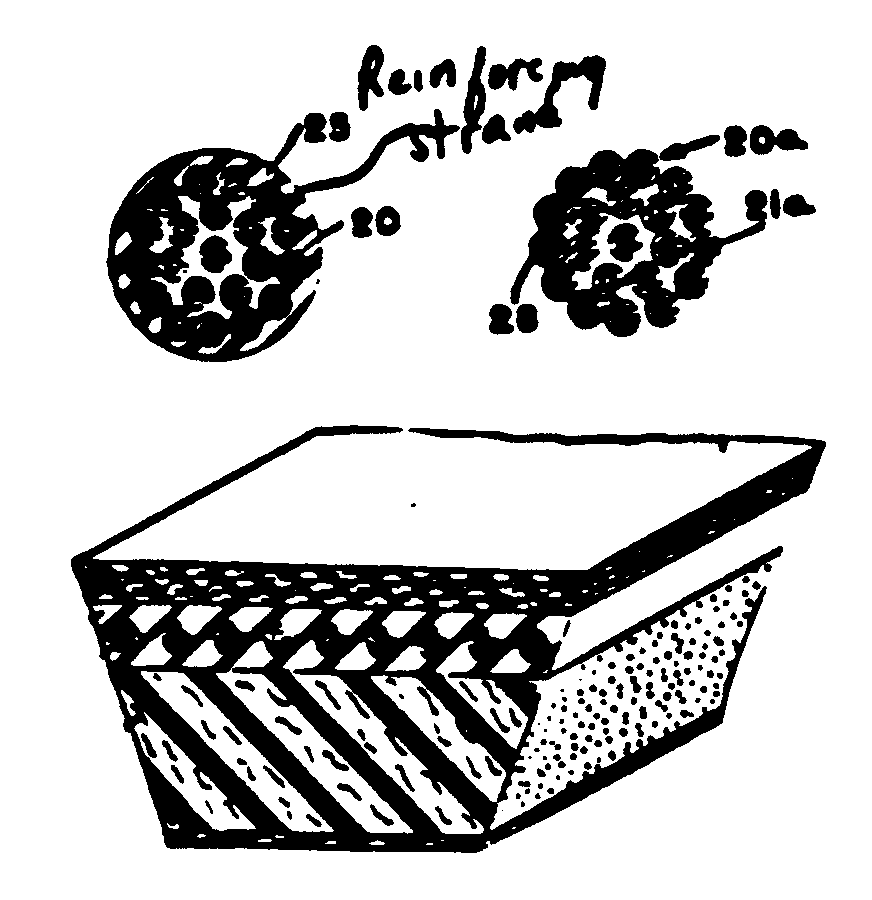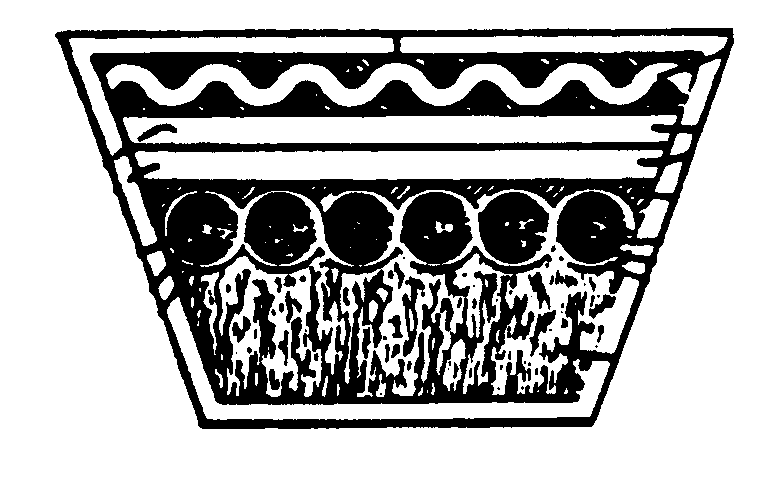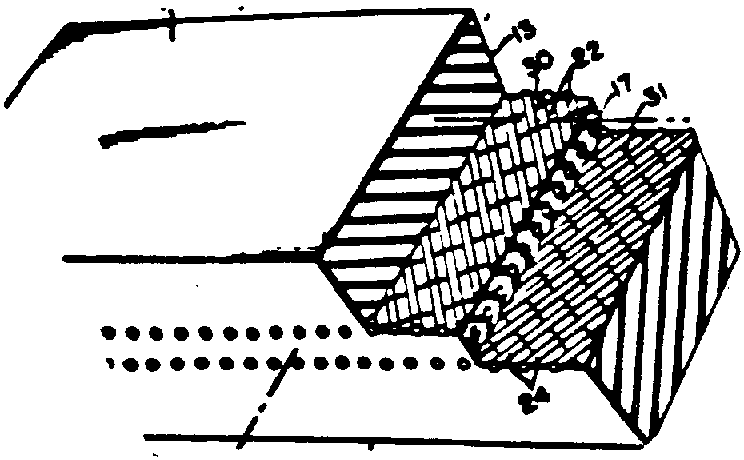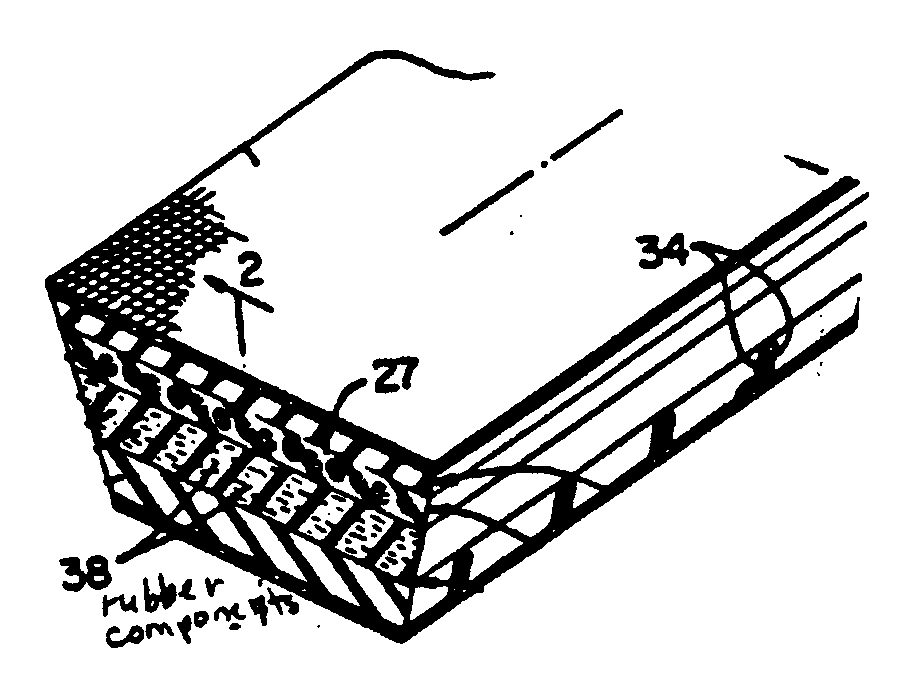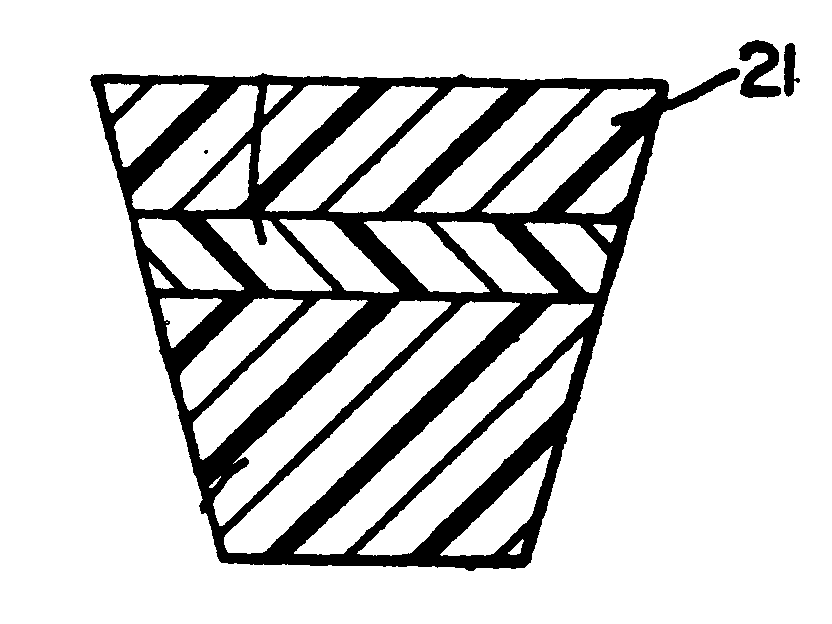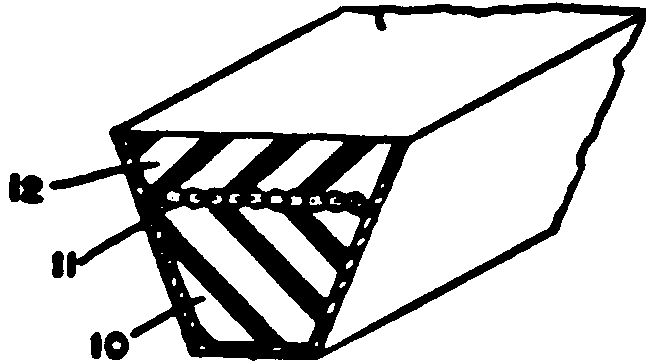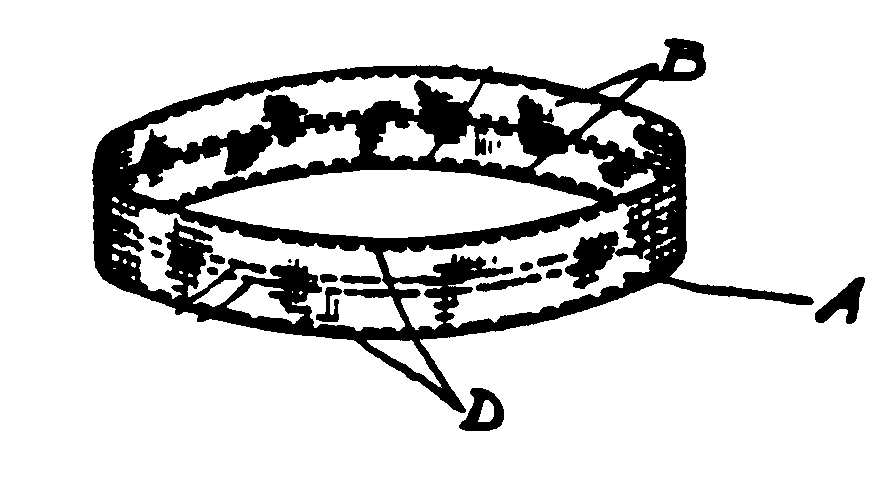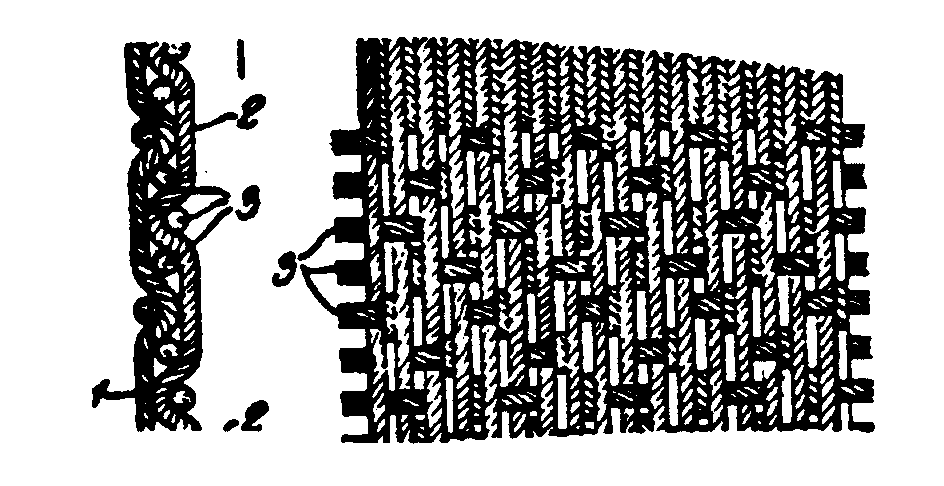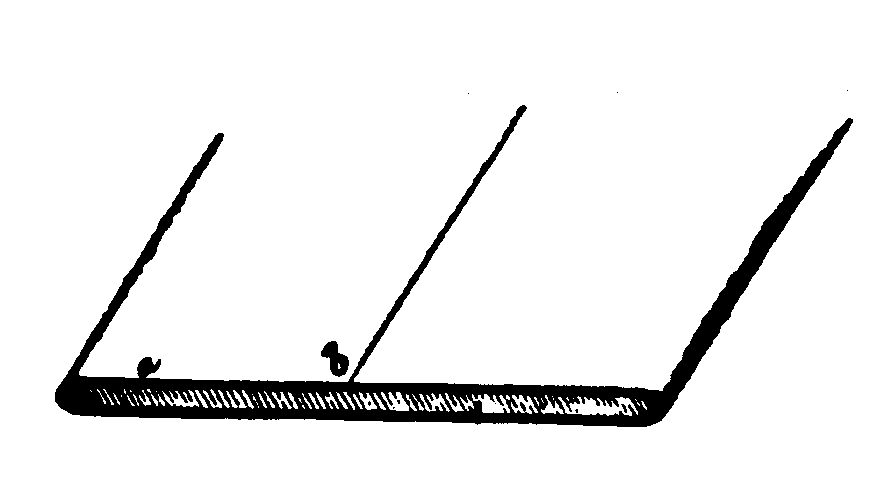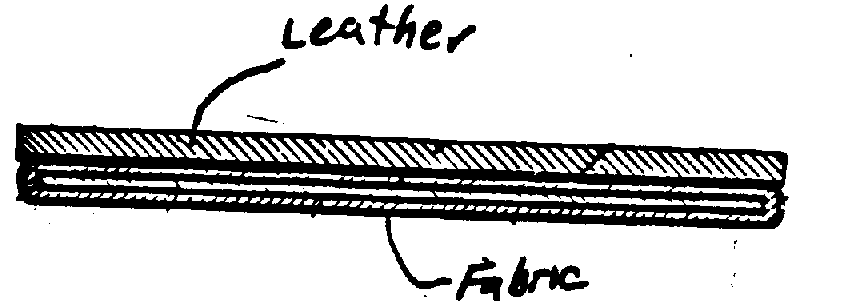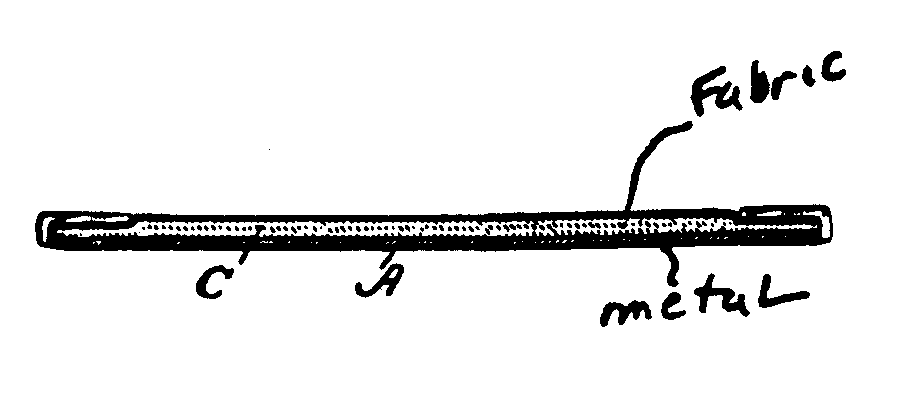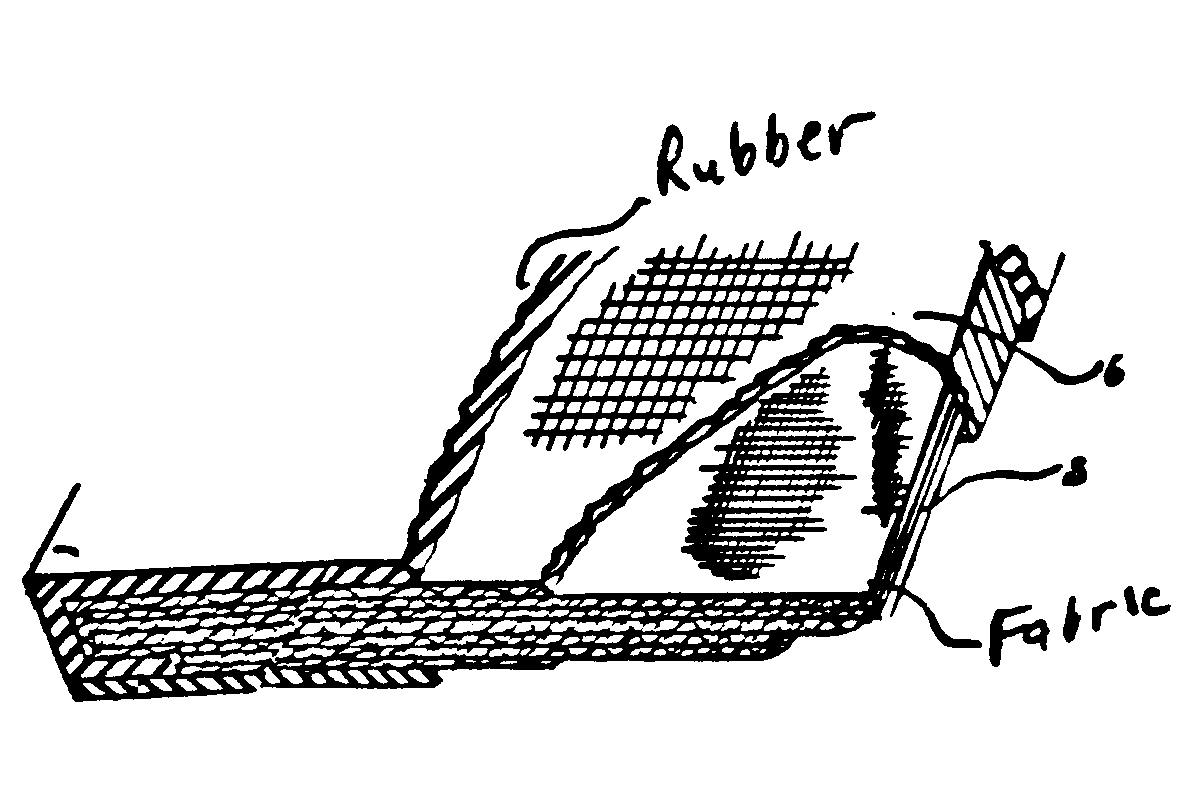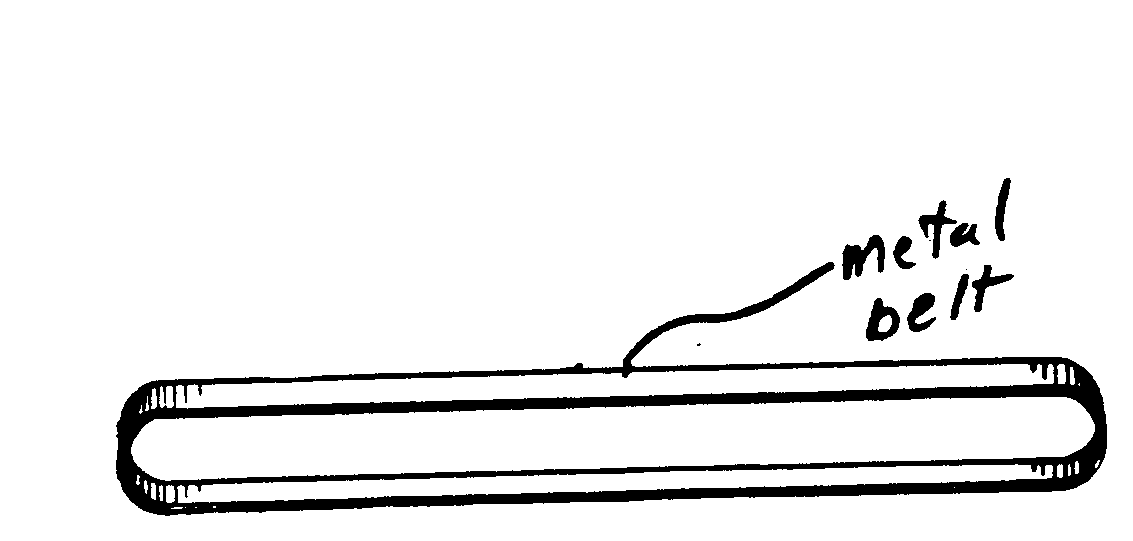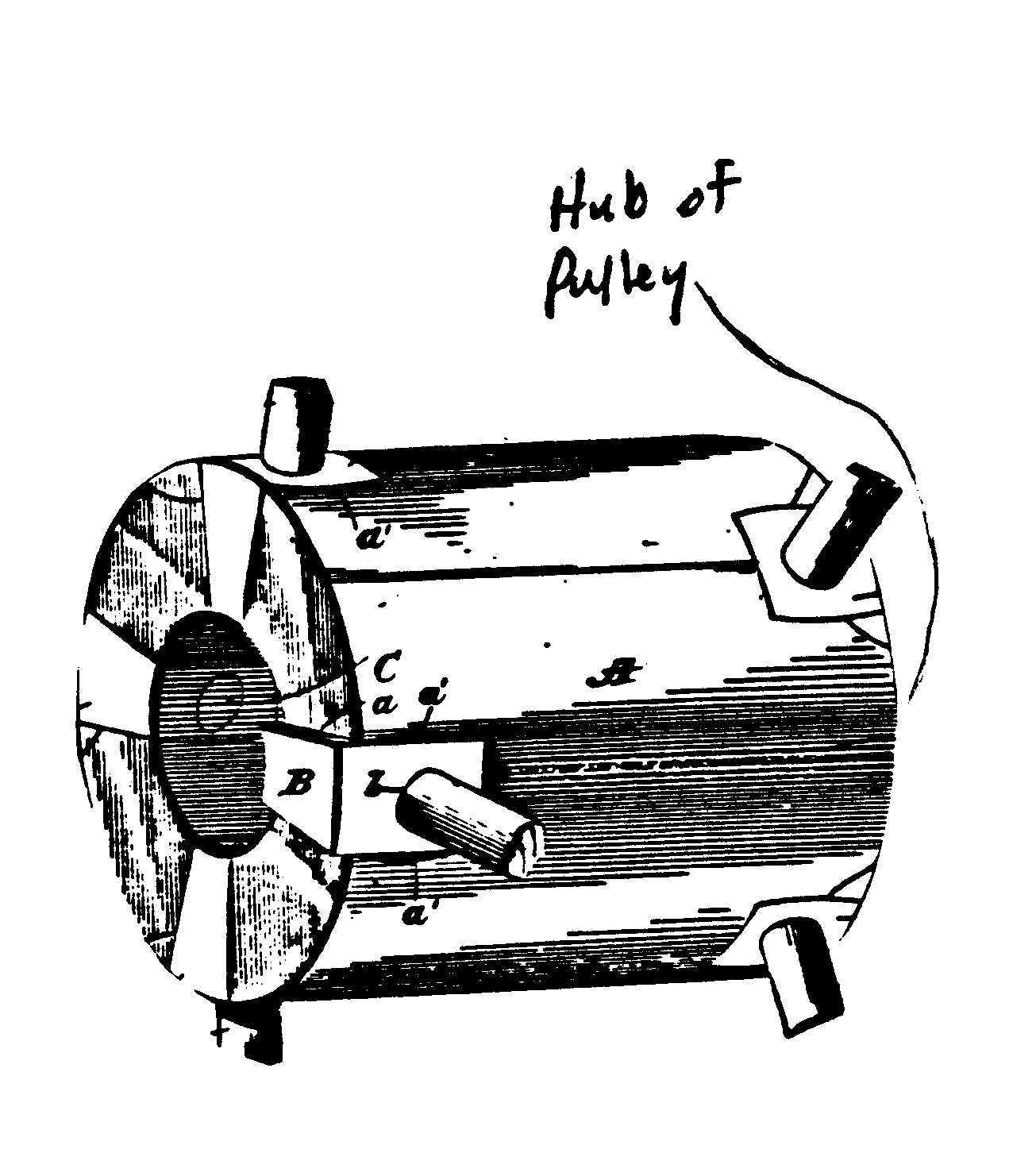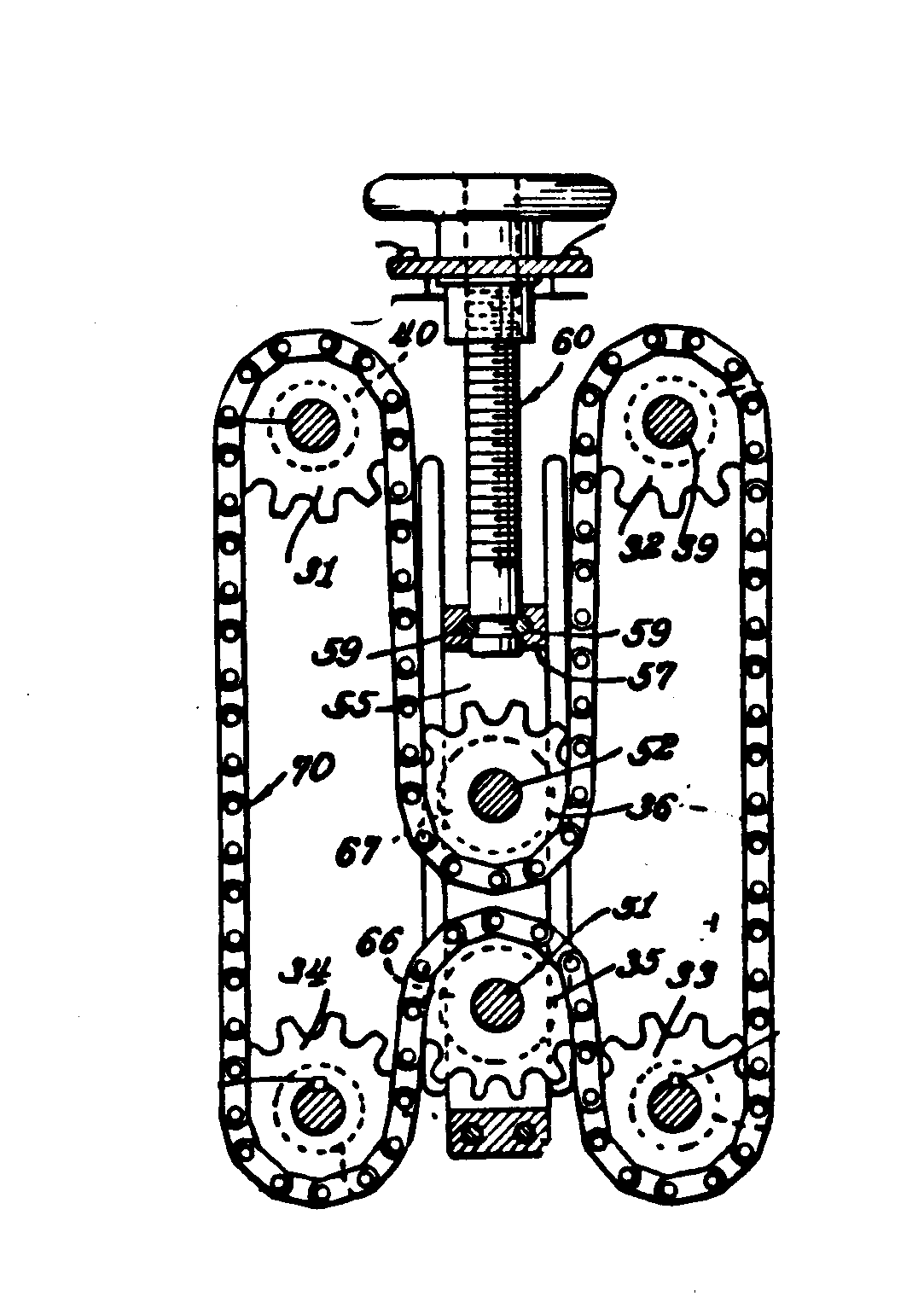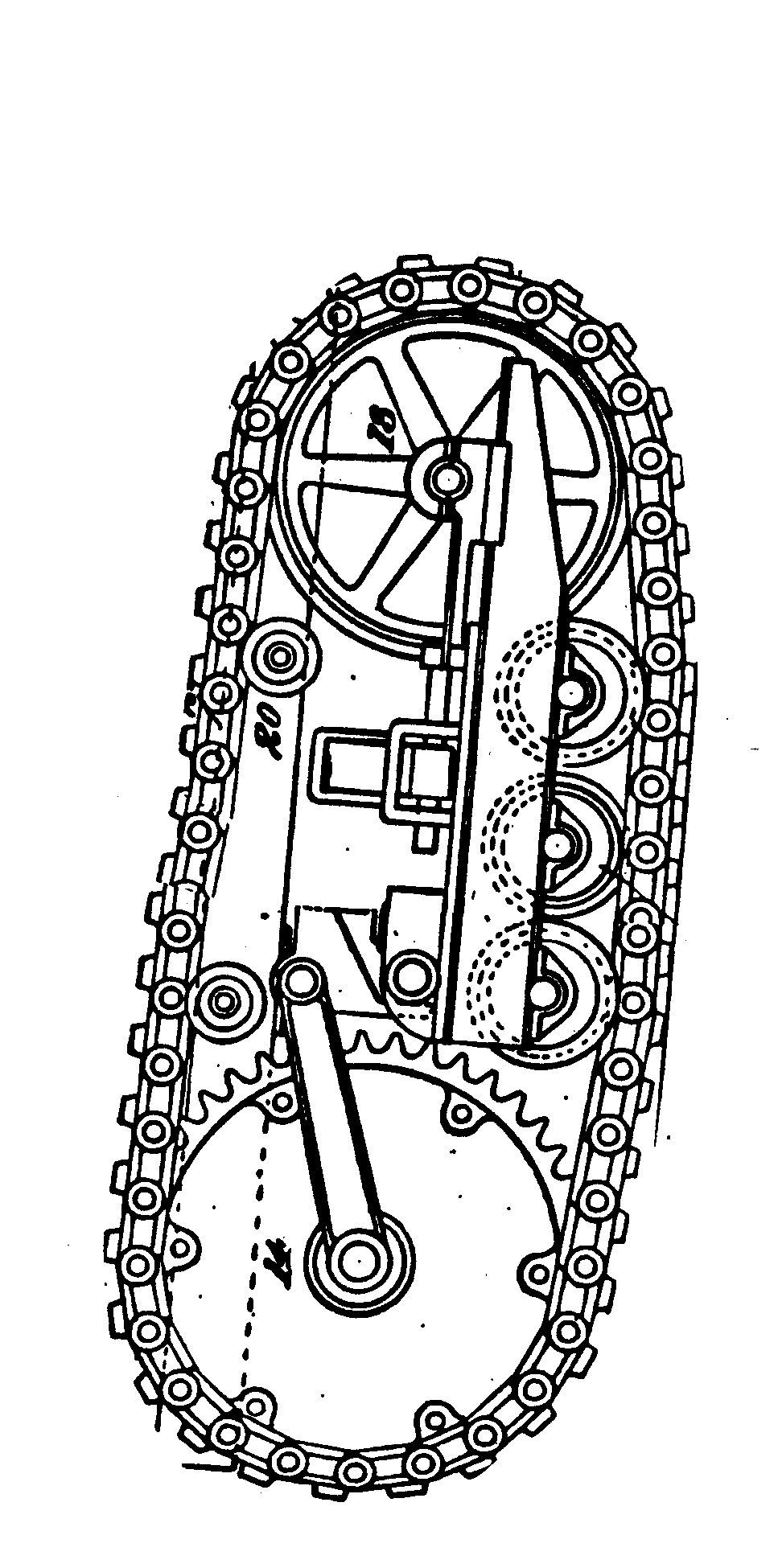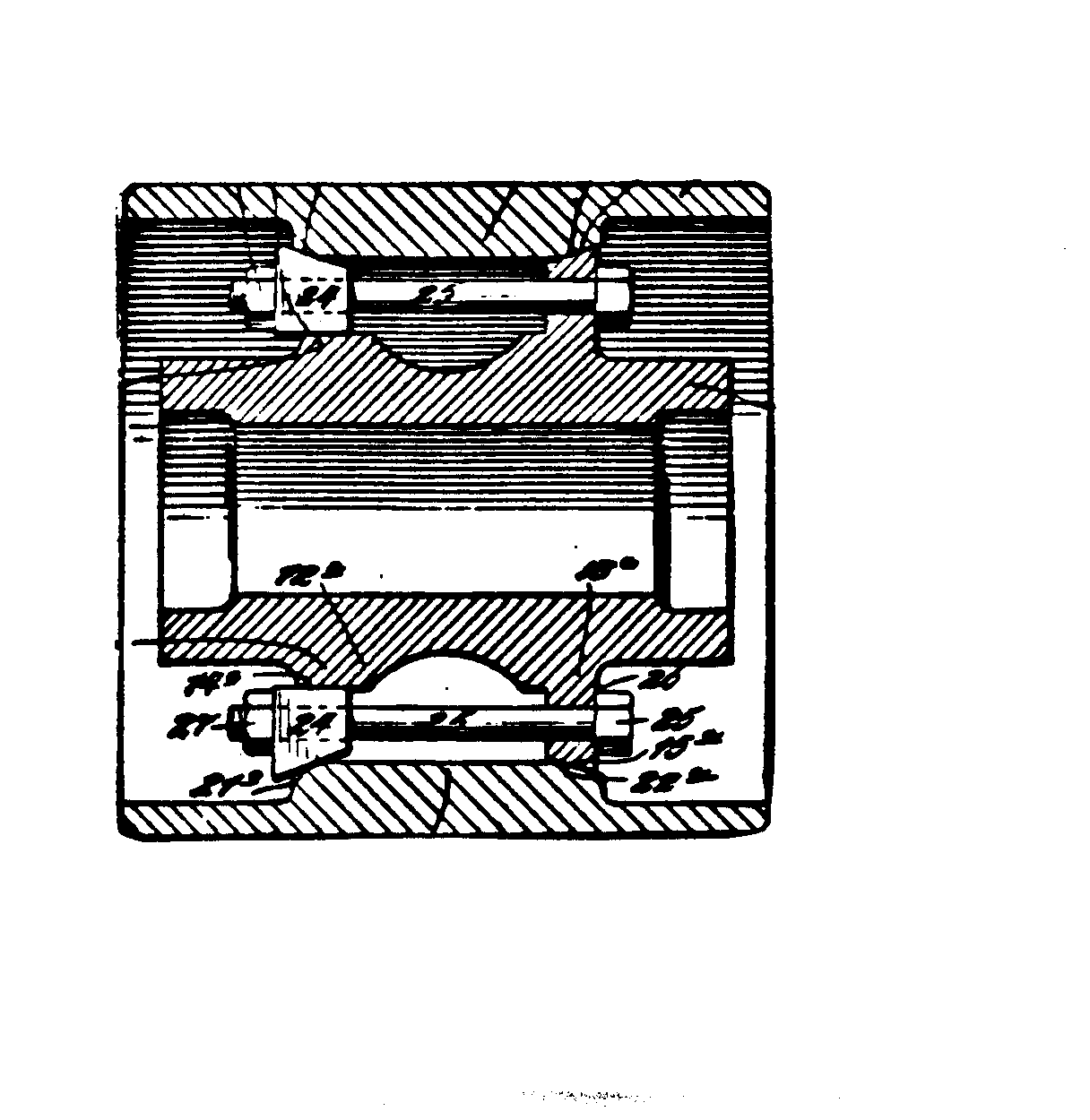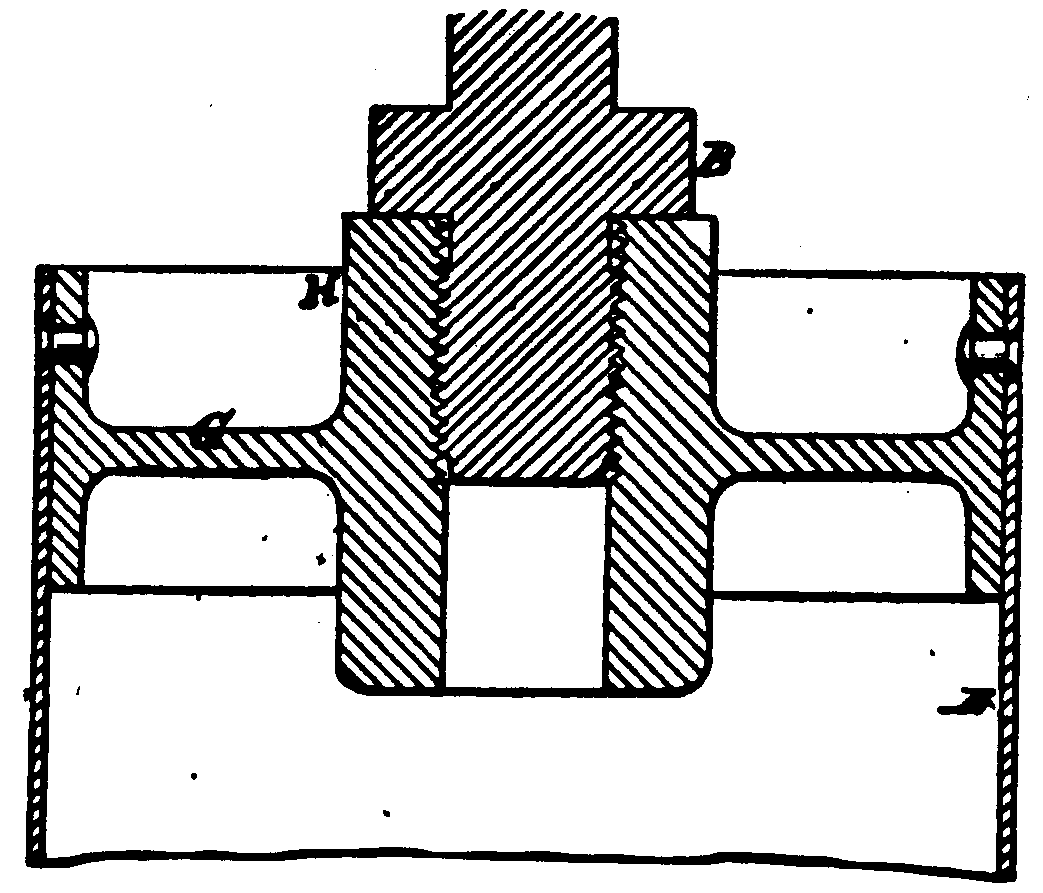![[Search a list of Patent Appplications for class 474]](../as.gif) CLASS 474, CLASS 474, | ENDLESS BELT POWER TRANSMISSION SYSTEMS OR COMPONENTS |
| Click here for a printable version of this file | |
SECTION I - CLASS DEFINITION
GENERAL STATEMENT OF CLASS SUBJECT MATTER
A. This is the generic class for a power transmission system wherein a power input pulley* is in driving engagement with a belt* for advancing the belt along an endless path of travel and wherein a power output pulley is engaged with the belt at a position along such endless path to be driven by the belt and supply power for driving a load; or for a component part or auxiliary device intended for use in such system and not provided for elsewhere.
B. This is also the generic class for structure, per se, in the form of a pulley*, guide roll* or other belt*-contacting structure for driving, guiding, tensioning, or shifting the belt, or for such structure in combination with a nominally claimed belt.
| (1) Note. A nominal recitation of a load device in combination with and driven by the power transmission system defined in the Class Definition, paragraph A of the General Statement of Class Subject Matter, above, will not exclude a patent from being placed in this class. |
SECTION II - LINES WITH OTHER CLASSES AND WITHIN THIS CLASS
A method or apparatus for manufacturing a device of this class is not found herein, but is found in an appropriate manufacturing class. See References to Other Classes, below.
A belt*, per se, is found in numerous classes as will be exemplified in the search and line notes below. Unless a line note is specifically provided in the SEARCH CLASS notes below, a patent claiming a belt, per se, is properly classified in this or another class providing for such belt if the sole disclosure is for subject matter provided for in such class, or in Class 428 depending on the line established between such class and Class 428. If there is disclosure for multiple intended uses for the belt, one of which is for a power transmission system as defined in the above paragraph A of the General Statement of Class Subject Matter, then the patent is properly classified in this class (474) unless there is at least one claim specific to the intended use in another class, in which instance classification is in the other class.
Class 198, Class 226, and Class 254 provide specifically for a device, per se, in the nature of a pulley*, guide roll*, or other device for advancing, guiding, or directing a cable or web of flexible or articulated material, which may be endless, along an intended path of travel. In Class 198, the intended use of such device is in connection with an endless conveyor. In Class 226, the intended use of such device is in connection with feeding of material of indefinite length to a station where an operation is to be performed on the material. In Class 254, the intended use of such device is in connection with a cable for applying a pushing or pulling force to an object to be moved. In each of these classes, line notes should be inspected as to the line between themselves or between other classes. However, the line between these other classes (198, 226, and 254) and this class (474) is as follows: (a) if the sole disclosure of the device, per se, mentioned above is for intended use in a system provided for in the Class Definition, paragraph A of the General Statement of Class Subject Matter of this class (474) or if the disclosure is unclear as to intended use but it is apparent that the device may be used in said system, classification is in this class (474); (b) if the sole disclosure of the device, per se, mentioned above is for intended use in connection with the kind of device identified above with regard to one of the other classes (198, 226, or 254), then classification is in such other classes; (c) if there is disclosure of multiple intended uses for the device, one of which is appropriate for the system provided for in the Class Definition, paragraph A of the General Statement of Class Subject Matter of this class (474), then classification is in this class unless there is at least one claim specific to the intended use in one of the other classes (198, 226, or 254), in which instance classification is in the other class.
This class was formed from patents in Class 74, subclasses 216.5-258 (inclusive), and in Class 74, subclasses 611 and 722. Regarding class superiority as between this class (474) and Class 74, all subclasses appearing in the Class 74 schedule above subclass 640 are superior to the class. Furthermore, a combination of a device of this subclass with a Class 74 device as may be found in Class 74, subclasses 650, 655, 661, 664, 670, 718, 720, 721, 745+, or 190-216.3 (inclusive) is considered superior to this class. This class is superior to all other subclasses in Class 74 indented under subclass 640 and to all other subclasses coordinate with Class 74, subclass 640, but lower in the Class 74 schedule than subclass 640.
Caveat. Other than the patents involved in the formation of this class as identified in above, no other subclasses in Class 74 or any other class were screened; and so, when appropriate other search areas in Class 74 and in the classes indentified in the Search Notes below should be given consideration.
SECTION III - REFERENCES TO OTHER CLASSES
SEE OR SEARCH CLASS:
| 15, | Brushing, Scrubbing, and General Cleaning, particularly subclasses 256.5+ for a cleaning device mounted to act on a moving surface, and see (1) Note following the definition of subclass 92 of this class (474) for a statement of the line. |
| 16, | Miscellaneous Hardware (e.g., Bushing, Carpet Fastener, Caster, Door Closer, Panel Hanger, Attachable or Adjunct Handle, Hinge, Window Sash Balance, etc.), particularly subclasses 210+ for sash cord guide. |
| 19, | Textiles: Fiber Preparation, particularly subclasses 244+ for a fiber drafting apron in the form of an endless band; and subclasses 240+ for a variable speed device operating in connection with a fiber drafting roll. |
| 24, | Buckles, Buttons, Clasps, etc., particularly subclasses 31+ for a device for connecting opposite ends of a band to form a belt*. A connector, per se, is in Class 24, but a connector claimed in combination with belt structure is in this class (474). |
| 29, | Metal Working, particularly subclasses 892+ for a method of making a pulley* or guide roll* (See Lines With Other Classes and Within This Class, above.). |
| 30, | Cutlery, particularly subclasses 380 and 381+ for a hand-manipulable cutting implement in the form of an endless band or chain. |
| 57, | Textiles: Spinning, Twisting, and Twining, particularly subclass 21 for an aparatus for forming an endless band by a twisting or twining operation; subclasses 104+ for a belt* power transmission for driving a spinning, twisting, or twining mechanism; and subclass 201 for an endless band formed by a spinning, twisting, or twining operation. |
| 59, | Chain, Staple, and Horseshoe Making, for a method or apparatus for manufacturing a device found in Class 474. (See Lines With Other Classes and Within This Class, above.) |
| 59, | Chain, Staple, and Horseshoe Making, particularly subclasses 1+ for a method or apparatus for making a chain; and subclasses 78+ for a general purpose or ornamental chain. |
| 72, | Metal Deforming, subclass 409.15 for apparatus to apply a deformable metal belt clip. |
| 74, | Machine Element or Mechanism, appropriate subclasses for other power transmission systems and components, and see Lines With Other Classes, and Within This Class, above. |
| 83, | Cutting, particularly subclasses 788+ for cutting device in the form of an endless band or chain. Regarding Class 83 or any other cutting class, a patent claiming a belt*, per se, for carrying a cutting element is classified in this class (474) unless there is a claim reciting a cutting element, such as a cutting tip or blade which is to perform a cutting function. |
| 104, | Railways, subclasses 172.1+ and 173.1+ for chain or cable car propelling means. |
| 105, | Railway Rolling Stock, particularly subclasses 101+ for a rolling stock wheel or axle drive system in the form of a belt* and pulley* drive; and subclasses 105+ for a belt tightener for such a drive system. |
| 106, | Compositions: Coating or Plastic, particularly subclass 36 for a coating or plastic composition used to enhance friction grip such as on a pulley*. |
| 156, | Adhesive Bonding and Miscellaneous Chemical Manufacture, particularly subclasses 137+ for a method of making a belt*, and see Lines With Other Classes and Within This Class, above. |
| 162, | Paper Making and Fiber Liberation, particularly subclasses 348+ for an endless band forming mold used in producing liquid laid fibrous products; subclass 257 for automatic control of transverse movement of such a forming mold; and subclass 273 for means to maintain a desired degree of tension in an endless forming surface. |
| 180, | Motor Vehicles, particularly subclasses 230 , 231, 239, 241, 251, 350+, 357, 366, and 373 for a motor vehicle including an endless band for transmitting drive to the wheels. |
| 184, | Lubrication, appropriate subclasses for lubrication systems in general, and particularly subclasses 15.1+ for a chain or cable lubricator. If the structure of a belt*, pulley* or guide roll* is modified for the purpose of facilitating admission of lubricant, classification is in Class 474, but lubrication devices and systems are in Class 184. |
| 185, | Motors: Spring, Weight, or Animal Powered, particularly subclass 16 for a belt* intended to be driven by an animal treading on the belt. |
| 187, | Elevator, Industrial Lift Truck, or Stationary Lift for Vehicle, subclasses 251+ for means for raising or lowering an elevator car which includes a car supporting cable. |
| 191, | Electricity: Transmission to Vehicles, particularly subclasses 63+ for a trolley head mounted for rolling contact with an electric conductor. |
| 198, | Conveyors: Power-Driven, particularly subclasses 804+ for an endless conveyor, and see the line notes in Lines With Other Classes and Within This Class, above. See also a listing of the other classes having structure pertinent to an endless conveyor following the definition of subclass 804 in Class 198, and a listing of classes pertinent to belt* tighteners following the definition of subclass 813 in Class 198. |
| 211, | Supports: Racks, particularly subclasses 119.02+ for an endless cable clothesline with supporting and tightening structure. |
| 226, | Advancing Material of Indeterminate Length, appropriate subclasses for structure for driving or guiding material of indeterminate length, and see the line note in Lines With Other Classes and Within This Class, above. |
| 242, | Winding and Reeling, appropriate subclasses for a reel, spool, guide, or tensioning device used in connection with winding of flexible material. |
| 248, | Supports, particularly subclasses 646+ for a support for a movable machine wherein adjustability may provide a belt*-tensioning feature. |
| 254, | Implements or Apparatus for Applying Pushing or Pulling Force, appropriate subclasses for a drum or guide intended to be used in connection with a cable for applying a pulling or pushing force to an object to be moved, and see the lines notes in Lines With Other Classes and Within This Class, above. |
| 280, | Land Vehicles, particularly subclass 250 and 261 for a land vehicle having a belt or chain power transmission. |
| 305, | Wheel Substitutes for Land Vehicles, appropriate subclasses for an endless track intended for use as a wheel substitute on a land vehicle. |
| 318, | Electricity: Motive Power Systems, for electric motor control, and particularly subclasses 6+ for control of tension in material being driven; subclass 10 for control of forward or reverse of a device being driven; subclass 11 for control for variable speed of a device being driven; and subclass 15 for electric motor driven gearing including belt and pulley drive systems. |
| 322, | Electricity: Single Generator Systems, subclass 42 for control for a belt drive in such a system; and subclass 43 for control of belt slip. |
| 384, | Bearings, appropriate subclasses for bearings, per se, which may be used with a pully* or guide roll*. |
| 399, | Electrophotography, subclasses 162+ for photoconductive belt members and subclasses 297+ for transfer, particularly subclass 313 for roller or belt electrostatic transfer. |
| 403, | Joints and Connections, appropriate subclasses for connections, per se, and particularly subclasses 230+ for a connection between the side of a member and a rod extending transverse thereto. |
| 428, | Stock Material or Miscellaneous Articles, appropriate subclasses for stock material, and see the reference to Class 474 in the Class Definition of Class 428. |
| 433, | Dentistry, subclasses 105 and 110+ for dental apparatus including an endless belt transmission. |
| 451, | Abrading, subclasses 296+ for an abrading tool comprising an endless band; and subclass 311 for a tightener for an abrading band. |
| 464, | Rotary Shafts, Gudgeons, Housings, and Flexible Couplings for Rotary Shafts, particularly subclasses 51+ for a flexible connection between a shaft and a driven member. |
| 475, | Planetary Gear Transmission Systems or Components, for planetary gear transmissions combined with a device of Class 474. |
| 477, | Interrelated Power Delivery Controls, Including Engine Control, especially subclasses 44+ for interrelated engine and belt-type transmission control. |
| 492, | Roll or Roller, for a roll, per se, not elsewhere provided for, and see the search notes thereunder. |
SECTION IV - GLOSSARY
The following Glossary will define certain terms used in the class and subclass definitions of this class so as to facilitate understanding and simplify such definitions.
BELT
A power transferring member forming an endless loop and constructed of flexible material or of articulated rigid links to permit the member to conform to a radius of curvature of a pulley* drive face and intended, in use, to be driven in an endless path; and, by contact with the pulley drive face, to transmit power to or extract power from the pulley.
PULLEY
A device rotatable about an axis and having a drive face radially spaced from the axis of rotation for intended power transferring engagement with a belt* to drive the belt on its endless path or to extract power from the belt to drive an output load device.
GUIDE ROLL
A device rotatable about an axis and having a belt*-contacting face radially spaced from the axis of rotation for intended engagement with the belt to aid in directing the belt along an intended path of travel. A guide roll, as distinguished from a pulley*, is not intended to provide driving power to, or extract power from, a belt.
SUBCLASSES
![[List of Patents for class 474 subclass 1]](../ps.gif) 1 1 | CONTROL FOR FORWARD AND REVERSE: | ||||||
| This subclass is indented under the class definition. Subject matter wherein mechanism is provided for changing
the direction of rotation of an output load driving member from
clockwise to counterclockwise or vice versa.
SEE OR SEARCH CLASS:
| |||||||
![[List of Patents for class 474 subclass 2]](../ps.gif) 2 2 | Cyclical or sequential (e.g., machine controlled, etc.): | ||
| This subclass is indented under subclass 1. Subject matter wherein the mechanism functions to periodically
change the direction of rotation of the load driving member according to
a predetermined program without operator intervention.
SEE OR SEARCH THIS CLASS, SUBCLASS:
| |||
![[List of Patents for class 474 subclass 3]](../ps.gif) 3 3 | Including device for shifting belt laterally of its direction of run: | ||
| This subclass is indented under subclass 2. Subject matter wherein the mechanism includes a member for
moving a belt* in either of opposite directions parallel
to the longitudinal extent of the rotational axis of a pulley*.
SEE OR SEARCH THIS CLASS, SUBCLASS:
| |||
![[List of Patents for class 474 subclass 4]](../ps.gif) 4 4 | Including separate belts for forward and reverse: | ||||
| This subclass is indented under subclass 1. Subject matter wherein separate belts* are selectively
engageable in power transmitting relationship between a power input
member and the power output load driving member, one of the belts
being engaged when it is desired to drive the load driving member
clockwise, and the other of the belts being engaged when it is desired
to drive the load driving member counterclockwise.
SEE OR SEARCH THIS CLASS, SUBCLASS:
| |||||
![[List of Patents for class 474 subclass 5]](../ps.gif) 5 5 | Belt selection by shifting or tightening belt: | ||||
| This subclass is indented under subclass 4. Subject matter wherein selective engagement or disengagement
of a belt* is accomplished by moving the belt into or from
power transmitting engagement with a pulley*.
SEE OR SEARCH THIS CLASS, SUBCLASS:
| |||||
![[List of Patents for class 474 subclass 6]](../ps.gif) 6 6 | Including device for shifting belt laterally of its direction of run: | ||
| This subclass is indented under subclass 5. Subject matter wherein the mechanism includes a member for
moving a belt* in either of opposite directions parallel
to the longitudinal extent of the rotational axis of a pulley*.
SEE OR SEARCH THIS CLASS, SUBCLASS:
| |||
![[List of Patents for class 474 subclass 7]](../ps.gif) 7 7 | Including coaxial pulleys rotated in opposite directions by single endless belt simultaneously engaging both pulleys: |
| This subclass is indented under subclass 1. Subject matter including two pulleys* mounted for
rotation about a common axis and wherein a single endless belt* is
in driving engagement with both pulleys, the belt being so arranged relative
to the pulleys that movement of the belt along its path of travel
concurrently drives one pulley in a clockwise direction and the other
pulley in a counterclockwise direction.
| |
![[List of Patents for class 474 subclass 8]](../ps.gif) 8 8 | PULLEY WITH BELT-RECEIVING GROOVE FORMED BY DRIVE FACES ON RELATIVELY AXIALLY MOVABLE COAXIAL CONFRONTING MEMBERS (E.G., EXPANSIBLE CONE PULLEY, ETC.): |
| This subclass is indented under the class definition. Subject matter wherein a pulley* includes a pair
of separate components having belt*-engaging surfaces facing
each other for receiving a belt in the space between such surfaces,
the components being mounted for relative adjustment toward and
away from each other in directions generally parallel to the longitudinal
extent of the axis of rotation of the pulley to increase or decrease
the extent of gripping force exerted by the surfaces on the belt
or to increase or decrease the effective diameter of the pulley.
| |
![[List of Patents for class 474 subclass 9]](../ps.gif) 9 9 | Members are gripping jaws actuated during each rotation of pulley: |
| This subclass is indented under subclass 8. Subject matter wherein during each full revolution of the
pulley* there is a first period of time when opposed belt*-engaging
surfaces are in driving engagement with the belt, and a second period
of time when opposed belt-engaging surfaces are out of driving engagement
with the belt, and wherein the components are mounted for relative
cyclical movement accomplished by interaction with the belt or by
an auxiliary device, whereby during the second period of time the
belt-engaging surfaces are separated to facilitate exit and entrance
of the belt from and to the space between the surfaces, and whereby the
belt engaging surfaces have relative movement to a position toward
each other during the first period of time to increase the engagement force
of the surfaces with the belt.
| |
![[List of Patents for class 474 subclass 10]](../ps.gif) 10 10 | Via relatively rotating cam and follower: |
| This subclass is indented under subclass 9. zSubject matter including relatively rotating elements having
actuating surfaces in rolling or sliding engagement with each other,
said actuating surfaces being so contoured with respect to each
other, and so associated with respect to one of said belt*-engaging
components that relative rotation between such actuating surfaces
is converted into said relative cyclical movement of said one of
said belt-engaging components.
| |
![[List of Patents for class 474 subclass 11]](../ps.gif) 11 11 | Speed responsive: | ||
| This subclass is indented under subclass 8. Subject matter including means for sensing velocity or change
of velocity of a load device or of a member operating in a drive
train to drive the load device; and, responsive to such sensed velocity
or change of velocity, said means acts to alter the relative axial
position of said components.
SEE OR SEARCH THIS CLASS, SUBCLASS:
| |||
![[List of Patents for class 474 subclass 12]](../ps.gif) 12 12 | And load responsive: | ||
| This subclass is indented under subclass 11. Subject matter further including means for sensing resistance
to movement or change in resistance to movement of a load device
or of a member in a drive train to drive the load device; and, in
response to such sensed resistance or change of resistance to movement, said
means acts to alter the relative axial position of said components.
SEE OR SEARCH THIS CLASS, SUBCLASS:
| |||
![[List of Patents for class 474 subclass 13]](../ps.gif) 13 13 | To centrifugal force: |
| This subclass is indented under subclass 11. Subject matter wherein the means for sensing the velocity
or change of velocity is mounted for rotation with a rotatable member
and includes a material or part movable outwardly by inertial force
from the axis of rotation of the rotatable member.
| |
![[List of Patents for class 474 subclass 14]](../ps.gif) 14 14 | Via pivoted weight: |
| This subclass is indented under subclass 13. Subject matter wherein the part movable outwardly by inertial
force comprises a device pivotal about a fixed axis.
| |
![[List of Patents for class 474 subclass 15]](../ps.gif) 15 15 | Via ball: |
| This subclass is indented under subclass 13. Subject matter wherein the part movable outwardly by inertial
force comprises one or more spherically shaped devices.
| |
![[List of Patents for class 474 subclass 16]](../ps.gif) 16 16 | Via liquid: |
| This subclass is indented under subclass 13. Subject matter wherein the material movable outwardly by
inertial force is a liquid.
| |
![[List of Patents for class 474 subclass 17]](../ps.gif) 17 17 | Load responsive: | ||||
| This subclass is indented under subclass 8. Subject matter including means for sensing resistance to
movement or change in resistance to movement of a load device or
of a member in a drive train to drive the load device; and, in response
to such sensed resistance or change of resistance to movement, said
means acts to alter the relative axial position of said components.
SEE OR SEARCH THIS CLASS, SUBCLASS:
| |||||
![[List of Patents for class 474 subclass 18]](../ps.gif) 18 18 | With actuator driven by electrical or fluid motor: | ||
| This subclass is indented under subclass 17. Subject matter wherein the means for altering the relative
axial position of the components is accomplished with the help of
force derived from or transmitted via electrical energy or the exertion
of force upon a fluid.
SEE OR SEARCH THIS CLASS, SUBCLASS:
| |||
![[List of Patents for class 474 subclass 19]](../ps.gif) 19 19 | Via relatively rotating cam and follower: |
| This subclass is indented under subclass 17. Subject matter wherein the means responsive to the sensed
resistance or change of resistance to movement includes relatively
rotating elements having actuating surfaces in rolling or sliding
engagement with each other, said actuating surfaces being so contoured
with respect to each other, and so associated with respect to one
of said belt*-engaging components that relative rotation
between such actuating surfaces is converted into axial movement
of one of said belt-engaging components.
| |
![[List of Patents for class 474 subclass 20]](../ps.gif) 20 20 | Including interengaged threads: |
| This subclass is indented under subclass 19. Subject matter wherein each of the relatively rotating elements
is generally cylindrical in cross sectional configuration, a cylindrical
wall of one of the elements having an external helical ridge forming
an actuating surface, and a cylindrical wall of the other of the
elements having an internal helical ridge forming a cooperating
actuating surface; the two cylindrical elements being coaxially
mounted with the external ridge of one interengaged with the internal
ridge of the other so that relative rotation of the elements also
causes relative axial movement of the elements and axial movement of
a component associated with the axially moved element.
| |
![[List of Patents for class 474 subclass 21]](../ps.gif) 21 21 | Including plural separate cam and follower pairs for adjusting plural members: |
| This subclass is indented under subclass 19. Subject matter including an additional pair of relatively
rotating elements having actuating surfaces in rolling or sliding
engagement with each other, the additional pair of actuating surfaces
being so contoured with respect to each other, and so associated
with respect to an additional belt*-engaging component
that relative rotation between such additional pair of actuating
surfaces is converted into axial movement of the additional belt-engaging component.
| |
![[List of Patents for class 474 subclass 22]](../ps.gif) 22 22 | Temperature responsive: |
| This subclass is indented under subclass 8. Subject matter including means to sense a condition or change
of condition as regards heat or coldness of a member operating in
a pulley* drive train or in the environment surrounding the
drive train; and, in response to such sensed condition, or change
of condition, said means acts to alter the relative axial position
of said components.
| |
![[List of Patents for class 474 subclass 23]](../ps.gif) 23 23 | Adjusted by power from pulley drive train: | ||||
This subclass is indented under subclass 8. Subject matter wherein an auxiliary device is constantly
rotated during rotation of the pulley* by the same source
which causes rotation of the pulley, and such device supplies the force
for relative adjustment of the pulley components.
| |||||
![[List of Patents for class 474 subclass 24]](../ps.gif) 24 24 | And member has plural, relatively axially movable drive faces: |
| This subclass is indented under subclass 8. Subject matter wherein at least one of the components is
formed of a plurality of elements each having a belt-engaging surface,
the elements of each component being adjustable with respect to
each other in directions generally parallel to the longitudinal
extent of the pulley* axis.
| |
![[List of Patents for class 474 subclass 25]](../ps.gif) 25 25 | And pulley shiftable laterally of its axis of rotation: |
| This subclass is indented under subclass 8. Subject matter wherein a pulley* is mounted for
movement in a direction perpendicular to the longitudinal extent
of the pulley axis of rotation, the pulley which is so mounted either being
the pulley having adjustable components or another pulley in the
drive train.
| |
![[List of Patents for class 474 subclass 26]](../ps.gif) 26 26 | Mounted on laterally shiftable motor: | ||
| This subclass is indented under subclass 25. Subject matter wherein the pulley* is mounted on
the shaft of a device which supplies the primary source of power
for driving the pulley, said device with its shaft and pulley being movable
in a direction perpendicular to the longitudinal extent of this
shaft axis.
SEE OR SEARCH THIS CLASS, SUBCLASS:
| |||
![[List of Patents for class 474 subclass 27]](../ps.gif) 27 27 | Mounted on laterally shiftable countershaft: | ||
| This subclass is indented under subclass 25. Subject matter wherein first and second belts* in
a drive train are arranged in series driving relationship via an
intermediate shaft carrying first and second pulleys*,
and wherein said intermediate shaft is mounted for movement in a
direction perpendicular to the longitudinal extent of the axis of
the intermediate shaft.
SEE OR SEARCH THIS CLASS, SUBCLASS:
| |||
![[List of Patents for class 474 subclass 28]](../ps.gif) 28 28 | Fluid pressure actuator for adjustment of member: | ||
| This subclass is indented under subclass 8. Subject matter wherein the relative adjustment of said belt*-engaging
components is accomplished by energy derived from or transmitted via
the exertion of force upon a fluid.
SEE OR SEARCH THIS CLASS, SUBCLASS:
| |||
![[List of Patents for class 474 subclass 29]](../ps.gif) 29 29 | Including actuator interconnecting plural pulleys on spaced shafts for simultaneous adjustment: | ||
| This subclass is indented under subclass 8. Subject matter wherein each of a pair of spaced shafts carries
a pulley* having adjustable belt*-engaging components
and wherein a common motion-inducing member is interlinked with each
pulley to provide concurrent axial adjustment of at least one of
the adjustable components on each of the pulleys.
SEE OR SEARCH THIS CLASS, SUBCLASS:
| |||
![[List of Patents for class 474 subclass 30]](../ps.gif) 30 30 | For axial adjustment of each member on each pulley: |
| This subclass is indented under subclass 29. Subject matter wherein the motion-inducing member is interlinked
with the pulleys* to provide concurrent axial adjustment
of each of the pair of belt*-engaging components on each
of the pulleys.
| |
![[List of Patents for class 474 subclass 31]](../ps.gif) 31 31 | By dual lever mechanism: |
| This subclass is indented under subclass 30. Subject matter wherein the motion-inducing member includes
a pair of arms each mounted for pivotal movement about its own axis;
and wherein one of the arms is connected to one of the movable belt*-engaging
components on each of the spaced pulleys*, and the other
arm is connected to the other of the belt-engaging components on
each of the spaced pulleys, so that simultaneous pivoting of the
arms causes concurrent adjustment of each pair of belt-engaging
components on each pulley.
| |
![[List of Patents for class 474 subclass 32]](../ps.gif) 32 32 | Plural members forming plural belt-receiving grooves on common axis: |
| This subclass is indented under subclass 8. Subject matter including at least three coaxial components
having belt*engaging surfaces arranged at intervals to
define at least two circumferentially extending belt-receiving spaces between
such surfaces along the axis of rotation of the components.
| |
![[List of Patents for class 474 subclass 33]](../ps.gif) 33 33 | With member common to plural grooves: |
| This subclass is indented under subclass 32. Subject matter wherein at least one of the components has
belt*-engaging surfaces on each of opposite sides thereof
so as to form a wall for two adjacent belt-receiving spaces.
| |
![[List of Patents for class 474 subclass 34]](../ps.gif) 34 34 | Plural members common to plural grooves: |
| This subclass is indented under subclass 33. Subject matter wherein at least two of the components each
have belt*-engaging surfaces on each of opposite sides
thereof.
| |
![[List of Patents for class 474 subclass 35]](../ps.gif) 35 35 | Axially spaced members simultaneously adjustable: |
| This subclass is indented under subclass 32. Subject matter wherein at least two of the components are
mounted for concurrent movement in a direction parallel to the longitudinal
extent of the axis of rotation.
| |
![[List of Patents for class 474 subclass 36]](../ps.gif) 36 36 | On bolt radially spaced from pulley axis: |
| This subclass is indented under subclass 35. Subject matter wherein means interconnecting said components
includes one or more rodlike members extending in a direction generally parallel
to the longitudinal extent of the axis of rotation and spaced radially
from a shaft upon which the components are mounted.
| |
![[List of Patents for class 474 subclass 37]](../ps.gif) 37 37 | By manual actuator for one or both confronting members: |
| This subclass is indented under subclass 8. Subject matter having manually operated motion-inducing
means for causing relative adjustment of said components toward
and away from each other.
| |
![[List of Patents for class 474 subclass 38]](../ps.gif) 38 38 | With neutral condition of drive: |
| This subclass is indented under subclass 37. Subject matter wherein said components are adjustable to
a position where neither of the facing belt*-engaging surfaces
are engaged with the belt, and wherein structure is provided separate
from said components to facilitate supporting the belt to allow
relative motion between the belt and the components.
| |
![[List of Patents for class 474 subclass 39]](../ps.gif) 39 39 | Screw actuated: |
| This subclass is indented under subclass 37. Subject matter wherein the motion-inducing means comprises
two relatively rotatable members having interengaged helical threads,
one of such members being fixed and the other rectilinearly movable
in a direction parallel to the axis of rotation so that relative
rotation between the members causes such rectilinear movement, and
one of said members forming a part of or being interconnected to
one of said adjustable components so that said rectilineal movement
causes said relative adjustment of said components.
| |
![[List of Patents for class 474 subclass 40]](../ps.gif) 40 40 | With additional linkage in actuator drive train: |
| This subclass is indented under subclass 39. Subject matter wherein rectilineal motion is transmitted
from said rectilinearly movable member to said axially adjustable
component via a pivotally mounted lever.
| |
![[List of Patents for class 474 subclass 41]](../ps.gif) 41 41 | By opposite-handed screw threads engaging adjacent members: |
| This subclass is indented under subclass 39. Subject matter wherein each of the relatively axially adjustable
components includes helical threads cooperating with helical threads
of the relatively rotatable member, the helical threads being so
arranged that relative rotation between the threaded members causes
both components to move simultaneously axially toward each other
or both to move simultaneously axially away from each other depending
on the direction of rotation.
| |
![[List of Patents for class 474 subclass 42]](../ps.gif) 42 42 | With means to positively lock members in adjusted position: |
| This subclass is indented under subclass 39. Subject matter including an auxiliary device actuatable
between hold and release positions for preventing relative rotation
between said relatively movable motion-inducing members when said
device is actuated to a hold position and for permitting relative
rotation between said relatively movable motion-inducing members
when said device is in a release position.
| |
![[List of Patents for class 474 subclass 43]](../ps.gif) 43 43 | Including lubrication or particular guide or bearing for movable member: | ||||
| This subclass is indented under subclass 8. Subject matter wherein (1) structure is provided to facilitate
lubrication of a surface of the movable component, or (23) wherein
a separate device is mounted between the movable component and its
support, (a) said separate device serving to guide movement of the
movable component along a predetermined axial path relative to its
support, or (b) said device comprises bearing structure facilitating
relative movement between the movable component and its support.
SEE OR SEARCH CLASS:
| |||||
![[List of Patents for class 474 subclass 44]](../ps.gif) 44 44 | Self-lubricated bearing: |
| This subclass is indented under subclass 43. Subject matter wherein said device comprises a self-sustaining
sleeve which inherently has a low coefficient of friction, or which
has been impregnated with a lubricant.
| |
![[List of Patents for class 474 subclass 45]](../ps.gif) 45 45 | With lubrication of support for movable member: | ||
| This subclass is indented under subclass 43. Subject matter wherein the structure is to facilitate injection
of lubricant from an auxiliary source to a surface of the movable
component.
SEE OR SEARCH THIS CLASS, SUBCLASS:
| |||
![[List of Patents for class 474 subclass 46]](../ps.gif) 46 46 | With spring device: |
| This subclass is indented under subclass 8. Subject matter wherein significance is attributed to the
structure of an auxiliary resilient device which engages a movable
one of said relatively adjustable to components to bias said movable
component in a direction generally parallel to the longitudinal
extent of the axis of rotation of the pulley*.
| |
![[List of Patents for class 474 subclass 47]](../ps.gif) 47 47 | PULLEY WITH EXPANSIBLE RIM MEANS OR PULLEYS WITH ALTERNATELY USEABLE NESTABLE RIMS: | ||
| This subclass is indented under the class definition. Subject matter wherein a pulley* includes a belt*-engaging
surface of surfaces adjustably movable in a direction radially outward
of the axis of rotation of the pulley to increase the effective
diameter of the pulley; or wherein plural alternately usable pulleys
are arrangeable with respect to each other in a manner such that
a common radial line from the axis of rotation passes first through
the belt-engaging surface of the inactive pulley then through the
belt-engaging surface of the active pulley.
SEE OR SEARCH CLASS:
| |||
![[List of Patents for class 474 subclass 48]](../ps.gif) 48 48 | Nestable rims of diverse kind (e.g., one grooved and the other cylindrical, etc.): |
| This subclass is indented under subclass 47. Subject matter wherein at least two of plural alternately
useable pulleys* are different kinds of pulleys, the different
kinds being: (a) those having a cylindrical belt-engaging surface,
(b) those having a circumferentially grooved belt-engaging surface,
or (c) those having circumferentially spaced belt-engaging teeth.
| |
![[List of Patents for class 474 subclass 49]](../ps.gif) 49 49 | Structure for variably adjusting radius of rim section: |
| This subclass is indented under subclass 47. Subject matter including motion-inducing mechanism for moving
the belt*-engaging surface or surfaces of the pulley* radially
outward.
| |
![[List of Patents for class 474 subclass 50]](../ps.gif) 50 50 | By actuator responsive to speed or load: | ||
| This subclass is indented under subclass 49. Subject matter including means for sensing a condition of
velocity, change of velocity, resistance to movement, or change
of resistance to movement of a load device or of a member operating
in a drive train to drive the load device; and, in response to such
sensed condition or change of condition, said means acts to actuate
said motion-inducing mechanism.
SEE OR SEARCH THIS CLASS, SUBCLASS:
| |||
![[List of Patents for class 474 subclass 51]](../ps.gif) 51 51 | By fluid pressure actuator or inflatable rim: | ||
| This subclass is indented under subclass 49. Subject matter wherein the motion-inducing mechanism is
actuated by energy derived from or transmitted via the exertion
of force upon a fluid; or wherein the belt*-engaging surface
is expandible by introduction of a fluid therein to increase the
effective diameter of the pulley*.
SEE OR SEARCH THIS CLASS, SUBCLASS:
| |||
![[List of Patents for class 474 subclass 52]](../ps.gif) 52 52 | Including means interconnecting plural pulleys for simultaneous adjustment: | ||
| This subclass is indented under subclass 49. Subject matter wherein plural pulleys* each include
adjustable belt*-engaging surface or surfaces, and wherein
mechanism is provided for concurrently adjusting the surface or
surfaces of each of the pulleys to increase or decrease the effective
diameter of the pulleys.
SEE OR SEARCH THIS CLASS, SUBCLASS:
| |||
![[List of Patents for class 474 subclass 54]](../ps.gif) 54 54 | By actuator having collar concentric with, and movable axially on, pulley axis: |
| This subclass is indented under subclass 49. Subject matter wherein the motion-inducing mechanism includes
a ringlike member positioned around the axis of rotation of the
pulley* and movable in a direction parallel to the longitudinal
extent of the pulley axis.
| |
![[List of Patents for class 474 subclass 55]](../ps.gif) 55 55 | Collar interconnected with rim sections via pivoted link: |
| This subclass is indented under subclass 54. Subject matter wherein the ringlike member is connected
to the adjustable movable belt*-engaging surfaces via pivotable
connecting means.
| |
![[List of Patents for class 474 subclass 56]](../ps.gif) 56 56 | By actuator having collar concentric with, and rotatable in plane perpendicular to pulley axis: |
| This subclass is indented under subclass 49. Subject matter wherein the motion-inducing mechanism includes
a ringlike member positioned around the axis of rotation of the
pulley*, and rotatable around the pulley axis but fixed
in regard to any movement in a direction parallel to the longitudinal
extent of the pulley axis.
| |
![[List of Patents for class 474 subclass 57]](../ps.gif) 57 57 | Collar interconnected with rim sections via pivoted link: |
| This subclass is indented under subclass 56. Subject matter wherein the ringlike member is connected
to the adjustably movable belt*-engaging surfaces via pivotable
connecting means.
| |
![[List of Patents for class 474 subclass 58]](../ps.gif) 58 58 | POWER OUTPUT PULLEY SELECTIVELY SHIFTABLE TO DIFFERENT POWER OUTPUT LOCATIONS RELATIVE TO INPUT PULLEY: | ||||||||
This subclass is indented under the class definition. Subject matter which includes a final driven pulley* in
a drive train supplied with power via a power input pulley and a
belt* or belts, the final driven pulley supplying power to
drive a load device and being movably supported in such a manner
as to facilitate moving the pulley to provide output power at different locations
relative to the power input pulley.
SEE OR SEARCH THIS CLASS, SUBCLASS:
SEE OR SEARCH CLASS:
| |||||||||
![[List of Patents for class 474 subclass 59]](../ps.gif) 59 59 | Pivotable about plural axes: |
| This subclass is indented under subclass 58. Subject matter wherein the final drive pulley* is
mounted for pivotable movement about more than a single axis.
| |
![[List of Patents for class 474 subclass 60]](../ps.gif) 60 60 | Nonparallel axes: |
| This subclass is indented under subclass 59. Subject matter wherein the plural axes about which the final
drive pulley* is pivoted, are angularly related with respect
to each other.
| |
![[List of Patents for class 474 subclass 61]](../ps.gif) 61 61 | POWER INPUT AND OUTPUT PULLEYS ON NONPARALLEL AXES: | ||
| This subclass is indented under the class definition. Subject matter which includes a driven pulley* in
a drive train supplied with power via a power input pulley and a
belt* or belts, and wherein the axis about which the driven
pulley rotates is disposed at an angle relative to the axis about
which the power input pulley rotates.
SEE OR SEARCH THIS CLASS, SUBCLASS:
| |||
![[List of Patents for class 474 subclass 62]](../ps.gif) 62 62 | With common belt engaging both pulleys: |
| This subclass is indented under subclass 61. Subject matter wherein a single belt* is in driving
engagement with both of the angularly related pulleys*.
| |
![[List of Patents for class 474 subclass 63]](../ps.gif) 63 63 | And shiftable guide roll engaging belt run: |
| This subclass is indented under subclass 62. Subject matter including a guide roll* for contacting
the belt at a location between the pulleys*, and wherein
said guide roll is movably mounted for adjustment of its position
relative to the angularly related pulleys.
| |
![[List of Patents for class 474 subclass 64]](../ps.gif) 64 64 | PLURAL TURNS OF SAME BELT ABOUT PULLEY AXIS: |
| This subclass is indented under the class definition. Subject matter including a belt* and a pulley* or
a belt and plural coaxially mounted pulleys, wherein the belt has
multiple turns about rotational axis of the pulley or coaxial pulleys.
| |
![[List of Patents for class 474 subclass 65]](../ps.gif) 65 65 | With flexible belt-tracking guide helically coiled about pulley: |
| This subclass is indented under subclass 64. Subject matter and further including an auxiliary endless
member capable of conforming to the curvature of a pulley* drive
face, and being helically wound about the pulley axis and positioned
between the belt* and pulley drive face to cause the belt
turns to follow an intended path circumferentially about the pulley.
| |
![[List of Patents for class 474 subclass 66]](../ps.gif) 66 66 | Plural turns of same belt about axis of each of laterally spaced pulleys: |
| This subclass is indented under subclass 64. Subject matter including an additional pulley* or
coaxial pulleys mounted for rotation about an axis spaced in a direction
perpendicular to the longitudinal extent of the axis of the first-mentioned
pulley or pulleys, and wherein a single belt* has multiple
turns extending about each of the spaced axes.
| |
![[List of Patents for class 474 subclass 67]](../ps.gif) 67 67 | With guide roll: |
| This subclass is indented under subclass 66. Subject matter and further including a guide roll* for
contacting the belt*.
| |
![[List of Patents for class 474 subclass 68]](../ps.gif) 68 68 | Plural guide rolls: |
| This subclass is indented under subclass 67. including an additional guide roll* mounted for rotation
about an axis spaced from the axis of the first-mentioned guide
roll.
| |
![[List of Patents for class 474 subclass 69]](../ps.gif) 69 69 | CONTROL FOR VARIABLE INPUT TO OUTPUT SPEED-RATIO: | ||||||||||||||
| Subject matter under the class difinition wherein the mechanism
is provided for changing the number or fractional number of revolutions
made by an output load driving member for each revolution made by
an input member, the output and input members being interconnected
via a belt*.
SEE OR SEARCH THIS CLASS, SUBCLASS:
SEE OR SEARCH CLASS:
| |||||||||||||||
![[List of Patents for class 474 subclass 70]](../ps.gif) 70 70 | Condition responsive (e.g., responsive to speed, load, etc.): | ||
| This subclass is indented under subclass 69. Subject matter including means which senses a condition
or change of condition; and, in response thereto, said means acts
to change the number or fractional number of revolutions made by
the output load driving member for each revolution of the input
member.
SEE OR SEARCH THIS CLASS, SUBCLASS:
| |||
![[List of Patents for class 474 subclass 71]](../ps.gif) 71 71 | Cyclical or sequential (e.g., machine controlled, etc.): | ||
| This subclass is indented under subclass 69. Subject matter wherein the mechanism functions to periodically
change the number of fractional number of revolutions made by the output
load driving member for each revolution made by the input member
according to a predetermined program without operator intervention.
SEE OR SEARCH THIS CLASS, SUBCLASS:
| |||
![[List of Patents for class 474 subclass 72]](../ps.gif) 72 72 | Including intermeshing gears in one drive train: |
| This subclass is indented under subclass 69. Subject matter wherein motion transmitting means between
the input and output members includes cooperating wheellike members
with intermeshing drive teeth, the cooperating wheel-like members
being arranged in series or parallel drive relation with a belt* and
pulley* drive.
| |
![[List of Patents for class 474 subclass 73]](../ps.gif) 73 73 | Including separate belt on each of coaxial pulleys selectively engaged in drive train: | ||||
| This subclass is indented under subclass 69. Subject matter including plural pulleys* mounted
for rotation about a common axis, each of said pulleys having its
own belt* in driving engagement therewith so that the belts provide
parallel drive paths between the input and output members, and said
mechanism including means permitting operator selection as to which
drive path is active to drive the output member.
SEE OR SEARCH THIS CLASS, SUBCLASS:
| |||||
![[List of Patents for class 474 subclass 74]](../ps.gif) 74 74 | With overrunning clutch: |
| This subclass is indented under subclass 73. Subject matter which further includes structure for coupling
together first and second motion-transmitting members in the drive
train in such a manner that the second member is driven by the first
member for concurrent movement at the same rotational speed in a
particular direction; but which structure enables, without operator
intervention, relative rotation between the first and second members
when the second member is driven or tends to be driven by auxiliary
force in the particular direction at a rotational speed greater
than the speed imported to the first member in the particular direction.
| |
![[List of Patents for class 474 subclass 75]](../ps.gif) 75 75 | Selection by tightening belt on selected pulley: | ||||
| This subclass is indented under subclass 73. Subject matter wherein the operator selection means includes
a device movable by the operator to increase the tension exerted
on the belt* in the active drive path.
SEE OR SEARCH THIS CLASS, SUBCLASS:
| |||||
![[List of Patents for class 474 subclass 76]](../ps.gif) 76 76 | Selection by axially movable pin engaged in opening through selected pulley: |
| This subclass is indented under subclass 73. Subject matter wherein the operator selection means includes
one or more rodlike elements shiftable in a direction parallel to
the longitudinal extent of the axis of rotation of the pulleys*,
and said pulleys include apertures for receiving said rod-like elements
to couple a particular selected pulley in active driving engagement
in the drive path.
| |
![[List of Patents for class 474 subclass 77]](../ps.gif) 77 77 | Including coaxial pulleys shiftable axially to align selected pulley with drive belt: | ||
| This subclass is indented under subclass 69. Subject matter including plural pulleys* mounted
for rotation about a common axis and wherein means is provided for
moving the pulleys in a direction parallel to the longitudinal extent
of the common axis to properly position a selected pulley in a drive
path.
SEE OR SEARCH THIS CLASS, SUBCLASS:
| |||
![[List of Patents for class 474 subclass 78]](../ps.gif) 78 78 | Including belt shiftable axially from one to another surface of stepped pulley or coaxial pulleys of different diameter: |
| This subclass is indented under subclass 69. Subject matter including a pulley* or plural coaxial
pulleys mounted for rotation about an axis, said pulley or pulleys
providing separate axially spaced belt* drive faces located
different radial distances from the rotational axis; and further
including a belt* mounted for movement in a direction parallel
to the longitudinal extent of the rotational axis to permit selective
placement of the belt on one or another of the separate axially
spaced drive faces on the pulley or pulleys.
| |
![[List of Patents for class 474 subclass 79]](../ps.gif) 79 79 | And pulley pivotally mounted to facilitate belt shift: | ||
| This subclass is indented under subclass 78. Subject matter wherein the pulley* or pulleys is/are
mounted for pivotable movement in a direction generally perpendicular
to the longitudinal extent of the axis of rotation of the pulley
to facilitate selective placement of the belt*.
SEE OR SEARCH THIS CLASS, SUBCLASS:
| |||
![[List of Patents for class 474 subclass 80]](../ps.gif) 80 80 | And including belt-shifter mechanism: | ||||
| This subclass is indented under subclass 78. Subject matter and further including a device for moving
the belt* in the direction parallel to the longitudinal
extent of the axis of rotation of the pulley.
SEE OR SEARCH THIS CLASS, SUBCLASS:
SEE OR SEARCH CLASS:
| |||||
![[List of Patents for class 474 subclass 81]](../ps.gif) 81 81 | For shifting belt from both power input and power output pulleys: |
| This subclass is indented under subclass 80. Subject matter wherein the belt*-moving device
includes structure for moving the belt along spaced parallel axes
in a direction parallel to the longitudinal extent of the axes,
one of the axes being the rotational axis of a pulley* or
pulleys for the driving belt, and the other of the axes being the
rotational axis of a pulley or pulleys driven by the belt.
| |
![[List of Patents for class 474 subclass 82]](../ps.gif) 82 82 | Shifter mechanism including parallelogram linkage: |
| This subclass is indented under subclass 80. Subject matter wherein the belt-moving device includes four
arms pivotally interconnected to form a four-sided figure, and wherein
opposite sides of the device remain parallel to each other when
the device is actuated to move the belt*.
| |
![[List of Patents for class 474 subclass 83]](../ps.gif) 83 83 | Including mechanism for shifting belt axially on spaced pulleys with tapering drive face: | ||
| This subclass is indented under subclass 69. Subject matter including separate pulleys* mounted
for rotation about axes spaced from each other, the belt*-driving
face of at least one of the pulleys being inclined at a substantially constant
angle of inclination relative to the pulley axis; and further including
a device for moving the belt in a direction parallel to the longitudinal
extent of the axis of each pulley.
SEE OR SEARCH THIS CLASS, SUBCLASS:
| |||
![[List of Patents for class 474 subclass 84]](../ps.gif) 84 84 | PLURAL BELTS OR PLURAL OUTPUT LOADS: | ||||
| This subclass is indented under the class definition. Subject matter wherein power is extracted from plural locations
in a belt* and pulley* drive to provide power
for driving a plurality of devices; or wherein a belt and pulley
drive includes a plurality of separate belts.
SEE OR SEARCH THIS CLASS, SUBCLASS:
| |||||
![[List of Patents for class 474 subclass 85]](../ps.gif) 85 85 | Plural belts having interengaged drive surfaces: | ||||||
This subclass is indented under subclass 84. Subject matter wherein plural belts* have surface
portions contacting each other so that one belt drives the other.
SEE OR SEARCH THIS CLASS, SUBCLASS:
SEE OR SEARCH CLASS:
| |||||||
![[List of Patents for class 474 subclass 86]](../ps.gif) 86 86 | Plural output loads: |
| This subclass is indented under subclass 84. Subject matter wherein power is extracted from plural locations
in a belt* and pulley* drive to provide power
for driving a plurality of devices.
| |
![[List of Patents for class 474 subclass 87]](../ps.gif) 87 87 | With common belt concurrently engaging input and plural output pulleys: |
| This subclass is indented under subclass 86. Subject matter wherein a belt* is driven by a power
input pulley, and this same belt concurrently engages and drives
plural output pulleys to provide power for driving a plurality of devices
associated with the output pulleys.
| |
![[List of Patents for class 474 subclass 88]](../ps.gif) 88 88 | Plural belts in series via countershaft: |
| This subclass is indented under subclass 84. Subject matter wherein first and second belts* in
a drive train are arranged in series driving relationship via an
intermediate shaft carrying first and second pulleys* or
carrying a single pulley having axially spaced belt-engaging surfaces.
| |
![[List of Patents for class 474 subclass 89]](../ps.gif) 89 89 | Countershaft laterally shiftable: | ||
| This subclass is indented under subclass 88. Subject matter wherein said intermediate shaft is mounted
for movement in a direction perpendicular to the longitudinal extent
to the axis of the intermediate shaft.
SEE OR SEARCH THIS CLASS, SUBCLASS:
| |||
![[List of Patents for class 474 subclass 90]](../ps.gif) 90 90 | STATIC ELECTRICITY ELIMINATOR: |
| This subclass is indented under the class definition. Subject matter wherein significance is attributed to structure
for dissipating or preventing accumulation of electrical charges
in a belt* or pulley*.
| |
![[List of Patents for class 474 subclass 91]](../ps.gif) 91 91 | STRUCTURE FACILITATING LUBRICATION OF BELT, PULLEY, OR GUIDE ROLL: | ||||||||
| This subclass is indented under the class definition. Subject matter wherein the sturcture of a belt*,
pulley*, or guide roll* is provided to facilitate
the admission of grease, oil, or other lubricant to the interface
between relatively moving parts in the belt, pulley, or guide roll.
SEE OR SEARCH THIS CLASS, SUBCLASS:
SEE OR SEARCH CLASS:
| |||||||||
![[List of Patents for class 474 subclass 92]](../ps.gif) 92 92 | CLEANING DEVICE FOR BELT, PULLEY, OR GUIDE ROLL: | ||||||||||||||
This subclass is indented under the class definition. Subject matter wherein significance is attributed to an
auxiliary device mounted for association with a belt* and
pulley* drive train for maintaining the cleanliness of
the belt, pulley, or guide roll* during power transmission to
a load device.
SEE OR SEARCH THIS CLASS, SUBCLASS:
SEE OR SEARCH CLASS:
| |||||||||||||||
![[List of Patents for class 474 subclass 93]](../ps.gif) 93 93 | FLUID-IMPELLING MEANS (E.G., FOR COOLING, ETC.): | ||||||||
This subclass is indented under the class definition. Subject matter wherein significance is attributed to an
auxillary device used in combination with a belt* and pulley* drive
train, or to a particular surface configuration of a belt or pulley;
which auxiliary device or particular surface configuration is for
inducing the flow of a fluid, such as air, within, through, or around
a belt or pulley.
SEE OR SEARCH THIS CLASS, SUBCLASS:
| |||||||||
![[List of Patents for class 474 subclass 94]](../ps.gif) 94 94 | RESILIENT CONNECTION BETWEEN PULLEY OR GUIDE-ROLL RIM AND MOUNT: | ||||||
This subclass is indented under the class definition. Subject matter wherein a separate member connects the circumferential
drive face fo a pulley* or guide roll* with its
hub or supporting shaft, said member having an elastic property
permitting limited relative movement between the pulley drive face
and the hub or supporting shaft.
SEE OR SEARCH THIS CLASS, SUBCLASS:
SEE OR SEARCH CLASS:
| |||||||
![[List of Patents for class 474 subclass 95]](../ps.gif) 95 95 | HUB FORMED IN SECTIONS AND SEPARABLE BY MOVING SECTIONS RADIALLY APART (E.G., SPLIT PULLEY TO FACILITATE INSTALLATION, ETC.): |
| This subclass is indented under the class definition. Subject matter wherein means defining an opening for receiving
a drive or support shaft through the center of a pulley* is
formed of discrete parts separable from each other by movement of
said parts radially outward from the longitudinal axis of the shaft.
| |
![[List of Patents for class 474 subclass 96]](../ps.gif) 96 96 | And severance lines for separable rim sections diametrically opposite each other: |
| This subclass is indented under subclass 95. Subject matter wherein the pulley* has a belt*-engaging
face formed of the discrete members separable from each other, the
belt-engaging faces of each of the separable members extending 180
degrees about the circumference of the pulley face.
| |
![[List of Patents for class 474 subclass 97]](../ps.gif) 97 97 | With spokes connecting hub section and rim section: | ||
| This subclass is indented under subclass 96. Subject matter wherein circumferentially spaced, radially
extending arms interconnect the belt*-engaging members
with the shaft-opening defining parts.
SEE OR SEARCH THIS CLASS, SUBCLASS:
| |||
![[List of Patents for class 474 subclass 98]](../ps.gif) 98 98 | Plural integral spokes: |
| This subclass is indented under subclass 97. Subject matter wherein at least two of the circumferentially
spaced arms are formed as a unitary member, inseparable from each
other.
| |
![[List of Patents for class 474 subclass 99]](../ps.gif) 99 99 | With discrete means connecting outer ends of integral spokes to rim: |
| This subclass is indented under subclass 98. Subject matter wherein significance is attributed to a separate
connector device which is used to interconnect the radially outermost ends
of the circumferentially spaced arms to the circumferentially extending
belt*- engaging members.
| |
![[List of Patents for class 474 subclass 100]](../ps.gif) 100 100 | AUXILIARY ENDLESS BAND FOR GUIDING BELT OR HOLDING BELT ENGAGED WITH PULLEY: | ||||
| This subclass is indented under the class definition. Subject matter wherein a closed-loop flexible or articulated
member is provided to engage a belt* and cause the belt
to follow an intended path of travel or to press a belt between
the closed-loop member and a pulley* drive face to assure
proper engagement of the belt with the pulley drive face, said closed-loop member
following a different closed-loop path than said belt, or being
separably mounted in engagement with the exterior surface of the belt.
SEE OR SEARCH THIS CLASS, SUBCLASS:
| |||||
![[List of Patents for class 474 subclass 101]](../ps.gif) 101 101 | MEANS FOR ADJUSTING BELT TENSION OR FOR SHIFTING BELT, PULLEY, OR GUIDE ROLL: | ||||||||||||||||||||||||||||||||||||
| This subclass is indented under the class definition. Subject matter wherein the significance is attributed to:
(a) a member other than a pulley* engageable with a belt*,
and which is adjustable or relatively movable with respect to the
belt in a direction which causes an increase or decrease in tensile
stress in the belt or a take-up or any undesirable belt slack to
maintain a desirable drive traction between the belt and pulley
drive face; or (b) a device or structure for providing relative
movement between a belt and pulley, to remove the belt from the pulley,
to affect the extent of the drive traction between the belt and
pulley, or to correct any deviation of the belt from a centered
path of travel on the pulley.
SEE OR SEARCH THIS CLASS, SUBCLASS:
SEE OR SEARCH CLASS:
| |||||||||||||||||||||||||||||||||||||
![[List of Patents for class 474 subclass 102]](../ps.gif) 102 102 | With sensor for controlling operation of shifter to correct belt training deviation: | ||||||||
| This subclass is indented under subclass 101. Subject matter provided with auxiliary means which detects
deviation of a belt* from a desired path of travel on a
pulley*; and, in repsonse to such detection, actuates said
device for returning the belt to the desired path of travel.
SEE OR SEARCH THIS CLASS, SUBCLASS:
SEE OR SEARCH CLASS:
| |||||||||
![[List of Patents for class 474 subclass 103]](../ps.gif) 103 103 | Shifter driven by electrical or fluid motor: | ||||
| This subclass is indented under subclass 102. Subject matter wherein force for actuating said device is
derived from or transmitted via electrical energy or the extertion
of force upon a fluid.
SEE OR SEARCH THIS CLASS, SUBCLASS:
| |||||
![[List of Patents for class 474 subclass 104]](../ps.gif) 104 104 | Fluid motor: |
| This subclass is indented under subclass 103. Subject matter wherein force for actuating said device is
derived from or transmitted via the exertion of force upon a fluid.
| |
![[List of Patents for class 474 subclass 105]](../ps.gif) 105 105 | Sensor actuates pawl-and-ratchet mechanism to operate shifter: |
| This subclass is indented under subclass 102. Subject matter wherein force for actuating said device is
provided via a pawl-and-ratchet mechanism.
pawl & ratchet | |
![[List of Patents for class 474 subclass 106]](../ps.gif) 106 106 | Sensor includes rotatable belt-engaging surface: |
| This subclass is indented under subclass 102. Subject matter wherein the means for detecting belt* deviation
includes an element having a face for contacting the belt* when
the belt has deviated from a desired path of travel, said element
being rotated about its own axis of rotation when contacted by the
moving belt.
| |
![[List of Patents for class 474 subclass 107]](../ps.gif) 107 107 | Rotatable on same axis as shiftable guide roll or pulley: |
| This subclass is indented under subclass 106. Subject matter wherein axis of rotation of the rotatable
element is coaxial with the axis of rotation of a movable guide
roll* or pulley*.
| |
![[List of Patents for class 474 subclass 108]](../ps.gif) 108 108 | To initiate relative axial movement of belt-engaging surfaces of guide roll or pulley: |
| This subclass is indented under subclass 107. Subject matter wherein the guide roll* or pulley* includes
belt*-engaging faces movable with respect to each other
in a direction parallel to the longitudinal extent of the axis of
the guide roll or pulley, and wherein said rotation of said detector
member causes relative movement of said belt-engaging faces to return
the belt to a central path of travel.
| |
![[List of Patents for class 474 subclass 109]](../ps.gif) 109 109 | Load responsive tension adjuster or shifter: | ||
| This subclass is indented under subclass 101. Subject matter including means for sensing resistance to
movement or change in resistance to movement of a load device or
of a component in a drive train to drive the load device; and, in
response to such sensed resistance or change of resistance to movement,
said means acts to actuate said member or said device.
SEE OR SEARCH THIS CLASS, SUBCLASS:
| |||
![[List of Patents for class 474 subclass 110]](../ps.gif) 110 110 | Tension adjuster or shifter driven by electrical or fluid motor: | ||||
| This subclass is indented under subclass 101. Subject matter wherein force for actuating said device or
said member is derived from or transmitted via electrical energy
or the exertion of force upon a fluid.
SEE OR SEARCH THIS CLASS, SUBCLASS:
SEE OR SEARCH CLASS:
| |||||
![[List of Patents for class 474 subclass 111]](../ps.gif) 111 111 | Tension adjuster has surface in sliding contact with belt: | ||
| This subclass is indented under subclass 101. Subject matter wherein said member has a nonrotatable face
portion for contacting the belt*, whereby the belt slides
over the face portion.
SEE OR SEARCH THIS CLASS, SUBCLASS:
| |||
![[List of Patents for class 474 subclass 112]](../ps.gif) 112 112 | Pulley or guide roll has eccentric mount for shifting or tensioning movement: |
| This subclass is indented under subclass 101. Subject matter wherein a guide roll* or pulley* is
mounted on a support which is rotatably adjustable about an axis
located radially inwardly of the belt*-engaging drive face
of the pulley or guide roll, the axis of rotation of the pulley
or guide roll being parallel to, but spaced radially from, the axis
of rotation of the adjustable support so that movement of the support
about its axis causes a shift of the axis of rotation of the pulley
or guide roll.
| |
![[List of Patents for class 474 subclass 113]](../ps.gif) 113 113 | Pulley shifter: | ||
| This subclass is indented under subclass 101. Subject matter wherein said device is operatively associated
with a pulley* for changing the position of the pulley
relative to a belt*.
SEE OR SEARCH THIS CLASS, SUBCLASS:
| |||
![[List of Patents for class 474 subclass 114]](../ps.gif) 114 114 | Pulley on shaft of adjustably mounted drive motor: | ||||
| This subclass is indented under subclass 113. Subject matter wherein the pulley* is mounted on
the drive shaft of a drive motor, and the motor is movably mounted
to change the position of the pulley.
SEE OR SEARCH THIS CLASS, SUBCLASS:
SEE OR SEARCH CLASS:
| |||||
![[List of Patents for class 474 subclass 115]](../ps.gif) 115 115 | Spring biased in belt-tensioning direction: | ||||
| This subclass is indented under subclass 114. Subject matter wherein resilient means is provided to bias
the drive motor in a direction tending to increase tensile stress
in the belt*.
SEE OR SEARCH THIS CLASS, SUBCLASS:
SEE OR SEARCH CLASS:
| |||||
![[List of Patents for class 474 subclass 116]](../ps.gif) 116 116 | Pulley is vehicle drive pulley (e.g., bicycle sprocket, etc.): |
| This subclass is indented under subclass 113. Subject matter wherein the pulley* is a part of a
drive train for propelling a vehicle.
| |
![[List of Patents for class 474 subclass 117]](../ps.gif) 117 117 | Spring biased in belt-tensioning direction: | ||||
| This subclass is indented under subclass 113. Subject matter wherein resilient means is provided to bias
the pulley* in a direction tending to increase tensile
stress in the belt*.
SEE OR SEARCH THIS CLASS, SUBCLASS:
SEE OR SEARCH CLASS:
| |||||
![[List of Patents for class 474 subclass 118]](../ps.gif) 118 118 | Pulley shiftable into engagement with exterior of belt-surface: | ||||
| This subclass is indented under subclass 113. Subject matter wherein a inner surface of a belt* defines
an area within a closed loop, and said pulley* is located
outside of said area and has a drive face shiftable into and out
of contact with a surface of the belt opposite the inner surface.
SEE OR SEARCH THIS CLASS, SUBCLASS:
| |||||
![[List of Patents for class 474 subclass 119]](../ps.gif) 119 119 | Belt shifter for shifting belt laterally or for selective engagement and supported disengagement of belt with pulley: |
| This subclass is indented under subclass 101. Subject matter wherein said device or structure is operatively
associated with a belt* so as (a) to move the belt in a
direction generally parallel to the axis of rotation of a pulley* about which
the belt is entrained, or (b) to move the belt into and out of driving
contact with the drive face of a pulley and support the disengaged
belt completely removed from contact with the pulley face.
| |
![[List of Patents for class 474 subclass 120]](../ps.gif) 120 120 | Pulley has slot in groove-forming flange facilitating belt installation or removal: |
| This subclass is indented under subclass 119. Subject matter wherein a pulley* face includes opposed
surfaces defining a circumferential belt*-receiving groove,
and wherein at least one of said surfaces has a portion removed therefrom
to form a belt passageway to aid in mounting or removing the belt
into or from the groove.
| |
![[List of Patents for class 474 subclass 121]](../ps.gif) 121 121 | For shifting exterior surface of belt into engagement with pulley: | ||||
| This subclass is indented under subclass 119. Subject matter wherein an inner surface of the belt* defines
an area within a closed loop, and wherein said device is operatively
associated with the belt to move the belt in a manner to engage
or disengage a surface of the belt opposite the inner surface with
the drive face of a pulley* located outside of the enclosed
area.
SEE OR SEARCH THIS CLASS, SUBCLASS:
| |||||
![[List of Patents for class 474 subclass 122]](../ps.gif) 122 122 | For shifting belt laterally: | ||
| This subclass is indented under subclass 119. Subject matter wherein said device is so operatively associated
with the belt as to move the belt* in a direction generally
parallel to the axis of rotation of a pulley* about which
the belt is entrained.
SEE OR SEARCH THIS CLASS, SUBCLASS:
| |||
![[List of Patents for class 474 subclass 123]](../ps.gif) 123 123 | By adjusting axial inclination of belt guide roll: |
| This subclass is indented under subclass 122. Subject matter wherein a guide roll* rotatable about
its own axis is engaged with the belt*, and wherein said
belt movement is accomplished by adjusting the angular orientation
of the axis of rotation of the guide roll relative to the path of
travel of the belt.
| |
![[List of Patents for class 474 subclass 124]](../ps.gif) 124 124 | With idler support having circumferentially spaced rollers to receive shifted belt: |
| This subclass is indented under subclass 122. Subject matter provided with a belt* support axially
aligned with a pulley* to receive a belt* which
has been removed from the pulley, said support including a plurality
of members rotatable about their own axis and radially spaced in arcuate
array about a line forming a continuation of the pulley axis.
| |
![[List of Patents for class 474 subclass 125]](../ps.gif) 125 125 | Including means for selectively clutching coaxial idler support to pulley: |
| This subclass is indented under subclass 122. Subject matter provided with a belt support axially aligned
with a pulley* to receive a belt* which has been
removed from the pulley, said support being mounted for rotation
about an axis forming a continuation of the pulley axis; and said
pulley and support including surfaces relatively movable between
engaged and disengaged positions to cause the pulley and support to
rotate as a unit when engaged or to permit independent rotation
of the pulley and support when disengaged.
| |
![[List of Patents for class 474 subclass 126]](../ps.gif) 126 126 | Shifter actuated by screw or gear drive: |
| This subclass is indented under subclass 122. Subject matter wherein motion is transmitted to the device
for moving the belt* via relatively movable components
having interengaged helical threads or intermeshing teeth.
| |
![[List of Patents for class 474 subclass 127]](../ps.gif) 127 127 | Shifter actuated by flexible cable: |
| This subclass is indented under subclass 122. Subject matter wherein motion is transmitted to the device
for moving the belt* via a flexible, elongated ropelike
member.
| |
![[List of Patents for class 474 subclass 128]](../ps.gif) 128 128 | Shifter actuated by handle pivoted about fixed axis: |
| This subclass is indented under subclass 122. Subject matter wherein motion is transmitted to the device
for moving the belt* via a lever intended to be grasped
by an operator, said lever being mounted for pivotable movement about
a fixed axis.
| |
![[List of Patents for class 474 subclass 129]](../ps.gif) 129 129 | And connector link between handle and shifter pivotable about spaced fixed axis: |
| This subclass is indented under subclass 128. Subject matter and further including an additional component
interconnecting said lever with the device for moving the belt*,
said component being mounted for pivotable movement about an axis
spaced from the pivotable axis of the lever.
| |
![[List of Patents for class 474 subclass 130]](../ps.gif) 130 130 | Portable hand tool for removing or installing belt: |
| This subclass is indented under subclass 119. Subject matter wherein said device is to facilitate the
application or removal of the belt* to or from a pulley*,
said device being of a size and nature as to be readily transportable
by an operator to any of several locations where it is desired to
apply or remove a belt from a pulley.
| |
![[List of Patents for class 474 subclass 131]](../ps.gif) 131 131 | Guide roll forms belt-thickness gap with pulley: |
| This subclass is indented under subclass 101. Subject matter wherein said member is a guide roll*,
said guide roll being adjustable or biased to a position where it
is spaced from the drive face of a pulley* a distance no
greater than the thickness of a belt* passing between the
guide roll and pulley to urge the belt into firm driving engagement
with the pulley.
| |
![[List of Patents for class 474 subclass 132]](../ps.gif) 132 132 | Gravity actuated guide roll for tensioning belt: | ||
| This subclass is indented under subclass 101. Subject matter wherein said member is a guide roll* engaged
with the belt*; and wherein the weight of the guide roll,
or the weight of an auxiliary mass associated with the guide roll, causes
the guide roll to be continually biased in a direction to increase
the tensile stress in the belt or to take up any undesirable slack
in the belt.
SEE OR SEARCH CLASS:
| |||
![[List of Patents for class 474 subclass 133]](../ps.gif) 133 133 | Guide roll mounted for movement of its axis along arcuate path to tension belt: |
| This subclass is indented under subclass 101. Subject matter wherein said member is a guide roll* engaged
with the belt*; and wherein said guide roll is movably
supported for movement of its axis in a curved path to cause the
guide roll change the tensile stress in the belt or to take up any
undesirable slack in the belt.
| |
![[List of Patents for class 474 subclass 134]](../ps.gif) 134 134 | Plural guide rolls engaging single belt: |
| This subclass is indented under subclass 133. Subject matter wherein an additional guide roll* is
engaged with the belt*.
| |
![[List of Patents for class 474 subclass 135]](../ps.gif) 135 135 | Guide roll spring biased in belt-tensioning direction: | ||||
| This subclass is indented under subclass 133. Subject matter wherein resilient means is provided to bias
guideroll *in the direction tending to increase tensil
stress in the belt. *
SEE OR SEARCH THIS CLASS, SUBCLASS:
SEE OR SEARCH CLASS:
| |||||
![[List of Patents for class 474 subclass 136]](../ps.gif) 136 136 | Guide roll mounted for movement of its axis along rectilinial path to tension belt: |
| This subclass is indented under subclass 101. Subject matter wherein said member is a guide roll * engaged
with the belt *, and whererin said guide roll is moveably
supported for movement of its axis in a straight-line path to cause
the guide roll to change the tensil stress in the belt or to take
up any undesireable slack in the belt.
| |
![[List of Patents for class 474 subclass 137]](../ps.gif) 137 137 | Plural guide rolls engaging single belt: |
| This subclass is indented under subclass 136. Subject matter wherein an additional guide roll* is
engaged with the belt*.
| |
![[List of Patents for class 474 subclass 138]](../ps.gif) 138 138 | Guide roll spring biased in belt-tensioning direction: | ||||
| This subclass is indented under subclass 136. Subject matter wherein resilient means is provided to bias
the guide roll* in a direction tending to increase tensile
stress in the belt*.
SEE OR SEARCH THIS CLASS, SUBCLASS:
SEE OR SEARCH CLASS:
| |||||
![[List of Patents for class 474 subclass 139]](../ps.gif) 139 139 | PULLEY ENGAGES EXTERIOR SURFACE OF BELT: | ||||
| This subclass is indented under the class definition. Subject matter wherein an inner surface of a belt* defines
an area within a closed loop; and wherein a pulley* is
located outside of said area and has a drive face in contact with
a surface of the belt opposite the inner surface.
SEE OR SEARCH THIS CLASS, SUBCLASS:
| |||||
![[List of Patents for class 474 subclass 140]](../ps.gif) 140 140 | BELT GUIDE HAS SURFACE IN SLIDING CONTACT WITH BELT: | ||||||
| This subclass is indented under the class definition. Subject matter including a member having a nonrotatable
face portion engageable with a belt* for guiding the belt
along an intended path of travel whereby the belt slides over the face
portion of the member.
SEE OR SEARCH THIS CLASS, SUBCLASS:
SEE OR SEARCH CLASS:
| |||||||
![[List of Patents for class 474 subclass 141]](../ps.gif) 141 141 | PULLEY HAVING CIRCUMFERENTIALLY SPACED PORTIONS OF DRIVE FACE SPACED UNEQUAL DISTANCES FROM PULLEY AXIS OF ROTATION (E.G., ELLIPTICAL PULLEY, ETC.): |
| This subclass is indented under the class definition. Subject matter wherein a first distance between the axis
of rotation of a pulley* and a first point on the pulley
where a belt* is drivingly engaged is less than a second
distance between the axis of the pulley and a second circumferentially
spaced point on the pulley periphery where the belt is drivingly
engaged.
| |
![[List of Patents for class 474 subclass 142]](../ps.gif) 142 142 | MAGNETIC ATTRACTION BETWEEN BELT AND PULLEY: | ||
| This subclass is indented under the class definition. Subject matter wherein the engagement between the pulley* and
belt* is enhanced by magnetic force.
SEE OR SEARCH CLASS:
| |||
![[List of Patents for class 474 subclass 143]](../ps.gif) 143 143 | FABRIC DRIVE FACE ON BELT AND PULLEY: |
| This subclass is indented under the class definition. Subject matter wherein interengaging faces on a belt* and
a pulley* are each of a material from interlaced or felted
strands or fibers.
| |
![[List of Patents for class 474 subclass 144]](../ps.gif) 144 144 | GUARD OR HOUSING FOR BELT OR PULLEY: | ||||||
| This subclass is indented under the class definition. Subject matter wherein a shield is associated with a belt* or
pulley* to prevent injury or inadvertent contact with the
belt or pulley or to protect the driven train from introduction
of foreign matter.
SEE OR SEARCH CLASS:
| |||||||
![[List of Patents for class 474 subclass 145]](../ps.gif) 145 145 | Connected to belt: |
| This subclass is indented under subclass 144. Subject matter wherein the shield is attached to a belt* for
movement therewith.
| |
![[List of Patents for class 474 subclass 146]](../ps.gif) 146 146 | Extending along entire length of belt run: |
| This subclass is indented under subclass 144. Subject matter wherein the shield has a longitudinal extent
at least approximating the distance between a point where a belt* leaves
a driving pulley* and a point where a belt engages a driven
pulley.
| |
![[List of Patents for class 474 subclass 147]](../ps.gif) 147 147 | Individual tubular housings for opposite belt runs: |
| This subclass is indented under subclass 146. Subject matter wherein the shield comprises separate ductlike
members, one of said ductlike members enclosing a belt* between
a point where the belt leaves a driving pulley* and a point
where the belt engages a driven pulley, and the other of said ductlike
members enclosing the belt between a point where the belt leaves
the driven pulley and a point where the belt engages the driving
pulley.
| |
![[List of Patents for class 474 subclass 148]](../ps.gif) 148 148 | SYSTEM INCLUDING SPACED PULLEYS INTERCONNECTED BY A BELT: |
| This subclass is indented under the class definition. Subject matter including a driving pulley*, a driven
pulley and a belt* engaged with the driving and driven
pulleys, whereby rotational power is transmitted from the driving
to the driven pulley via the belt.
| |
![[List of Patents for class 474 subclass 149]](../ps.gif) 149 149 | Positive drive pulley and friction drive pulley connected by same belt: |
| This subclass is indented under subclass 148. Subject matter wherein one of said pulleys* has
a drive face formed by circumferentially spaced, radially extending
teeth or ridges for driving engagement with radially extending surfaces
correspondingly spaced along the length of the belt*, and
the other of said pulleys has a drive face including a surface for
driving engagement with the same belt by frictional contact with
the belt.
| |
![[List of Patents for class 474 subclass 150]](../ps.gif) 150 150 | With frame or mount for system: |
| This subclass is indented under subclass 148. Subject matter wherein significance is attributed to means
by which the pulleys* and belt* are supported.
| |
![[List of Patents for class 474 subclass 151]](../ps.gif) 151 151 | AUXILIARY MEMBER REMOVABLY ATTACHED TO PULLEY OR GUIDE ROLL FOR PREVENTING LATERAL DISPLACEMENT OF BELT: |
| This subclass is indented under the class definition. Subject matter wherein a device is provided for detachable
mounting on a pulley* or guide roll* facilitating
placement of a belt* on the pulley or guide roll when the
device is detached and for preventing lateral displacement of the
belt on the pulley or guide roll when the device is mounted on the
pulley or guide roll.
| |
![[List of Patents for class 474 subclass 152]](../ps.gif) 152 152 | POSITIVE DRIVE PULLEY OR GUIDE ROLL: | ||||||
| This subclass is indented under the class definition. Subject matter wherein a pulley or guide roll structure
include a belt*-engaging drive face formed by circumferentially
spaced, radially extending teeth or ridges intended for driving
engagement with radially extending surfaces correspondingly spaced
along the length of a belt.
SEE OR SEARCH CLASS:
| |||||||
![[List of Patents for class 474 subclass 153]](../ps.gif) 153 153 | With particular belt: | ||
| This subclass is indented under subclass 152. Subject matter also including structure of a belt* engageable
with the pulley*.
SEE OR SEARCH THIS CLASS, SUBCLASS:
| |||
![[List of Patents for class 474 subclass 154]](../ps.gif) 154 154 | Belt has spherical or hemispherical drive faces: | ||
| This subclass is indented under subclass 153. Subject matter wherein spaced surfaces along the length
of the belt* have an approximate shape of a ball or a hemisphere,
said surfaces being received in corresponding recesses defined by
the pulley* or guide roll* ridges for driving
engagement between the ridges and said surfaces.
SEE OR SEARCH THIS CLASS, SUBCLASS:
| |||
![[List of Patents for class 474 subclass 155]](../ps.gif) 155 155 | Belt formed of rigid links: | ||
| This subclass is indented under subclass 153. Subject matter wherein the belt* is formed of inflexible
components which are joined together to permit relative movement
of the components so that the belt is capable of conforming to circumferential
curvature of a pulley* or guide roll* drive face.
SEE OR SEARCH THIS CLASS, SUBCLASS:
| |||
![[List of Patents for class 474 subclass 156]](../ps.gif) 156 156 | With sequential links pivoted about discrete pivot pin: |
| This subclass is indented under subclass 155. Subject matter wherein a separate rodlike member is inserted
through aligned openings in contiguous ends of adjacent inflexible
components, the longitudinal axis of said rodlike member providing
a pivotable axis permitting relative movement of the inflexible
components.
| |
![[List of Patents for class 474 subclass 157]](../ps.gif) 157 157 | And each link has integral surfaces forming inwardly opening groove: | ||
| This subclass is indented under subclass 156. Subject matter wherein each of the inflexible components
is a unitary member having side walls spaced from each other in
the direction of the longitudinal extent of the belt*,
said side walls being interconnected by a top wall to define a cavity
opening inwardly toward the drive face of the pulley* or
guide roll* to receive a pulley or guide roll ridge or
tooth.
SEE OR SEARCH THIS CLASS, SUBCLASS:
| |||
![[List of Patents for class 474 subclass 158]](../ps.gif) 158 158 | And additional coaxial surface for engaging same belt in shifted condition or for engaging auxiliary belt, brake, or clutch member: |
| This subclass is indented under subclass 152. Subject matter wherein, in addition to the belt*-engaging
drive face on the pulley* or guide roll*, an additional
operative face is provided, said additional operative face either being
formed integral with the pulley or guide roll or on a separate member
mounted coaxially with the pulley or guide roll, said additional
operative face operating either: (a) to receive a belt which has
been shifted from the pulley or guide roll drive face; or (b) to
receive an additional belt; or (c) to receive a member intended
to impede rotation of the pulley or guide roll; or (d) to receive
a member for selectively or intermittently engaging or disengaging
the pulley or guide roll with another device during operation of
the pulley.
| |
![[List of Patents for class 474 subclass 159]](../ps.gif) 159 159 | Coaxial surface is belt-engaging surface on friction drive pulley: |
| This subclass is indented under subclass 158. Subject matter wherein the additional operative face is
a belt*-engaging face of a pulley for driving a belt by
frictional contact between the belt and the drive face.
| |
![[List of Patents for class 474 subclass 160]](../ps.gif) 160 160 | Coaxial surface is belt-engaging surface on positive drive pulley of different circumference: |
| This subclass is indented under subclass 158. Subject matter wherein the additional operative face is
a belt*-engaging face of a second pulley* of the
same kind, and wherein the distance from the axis of rotation to
the drive face of one of the pulleys is different than the distance from
the axis of rotation to the drive face of the other of the pulleys.
| |
![[List of Patents for class 474 subclass 161]](../ps.gif) 161 161 | Having nonmetallic component: |
| This subclass is indented under subclass 152. Subject matter wherein the structure of the pulley* or
guide roll* includes a part which is formed from material
other than metal.
| |
![[List of Patents for class 474 subclass 162]](../ps.gif) 162 162 | Having belt-engaging surfaces on discrete circumferentially spaced, relatively movable or replaceable members: |
| This subclass is indented under subclass 152. Subject matter wherein the belt*-engaging drive
face of the pulley* or guide roll*, is formed
of separate components spaced circumferentially from each other
about the perimeter of the pulley or guide roll, said components being
mounted for relative motion or being so mounted as to facilitate
separate individual removal and installation of the components.
| |
![[List of Patents for class 474 subclass 163]](../ps.gif) 163 163 | Movable with respect to each other during operation: | ||
| This subclass is indented under subclass 162. Subject matter wherein the components are mounted for relative
motion with respect to each other while the pulley* or
guide roll* is in driving engagement with a belt*.
SEE OR SEARCH CLASS:
| |||
![[List of Patents for class 474 subclass 164]](../ps.gif) 164 164 | Having axially spaced sets of belt-engaging surfaces: |
| This subclass is indented under subclass 152. Subject matter wherein the drive face of the pulley* or
guide roll* includes plural sets of circumferentially spaced,
radially extending teeth or ridges intended for concurrent engagement
with a common belt*, one of said sets being spaced from
the other in a direction parallel to the longitudinal extent of
the axis of rotation or the pulley or guide roll.
| |
![[List of Patents for class 474 subclass 165]](../ps.gif) 165 165 | With stationary support for pulley or guide roll: |
| This subclass is indented under subclass 152. Subject matter wherein significance is attributed to stationary
mounting means for the pulley* or guide roll*.
| |
![[List of Patents for class 474 subclass 166]](../ps.gif) 166 166 | FRICTION DRIVE PULLEY OR GUIDE ROLL: | ||||||||||||||||
| This subclass is indented under the class definition. Subject matter wherein pulley* or guide roll* structure
includes a drive surface or drive surfaces for driving engagement
with a belt* by frictional contact with the belt.
SEE OR SEARCH CLASS:
| |||||||||||||||||
![[List of Patents for class 474 subclass 167]](../ps.gif) 167 167 | With particular belt: | ||
| This subclass is indented under subclass 166. Subject matter also including structure of a belt* engageable
with the pulley* or guide roll.
SEE OR SEARCH THIS CLASS, SUBCLASS:
| |||
![[List of Patents for class 474 subclass 168]](../ps.gif) 168 168 | Including plural, coaxial, circumferential belt-receiving grooves: | ||
This subclass is indented under subclass 166. Subject matter wherein two or more pairs of belt*-engaging
surfaces are provided for rotation about a common axis, each of
said pairs including circumferentially extending surfaces facing
each other in an axial direction to drivingly engage a belt received
in the space defined by such surfaces.
| |||
![[List of Patents for class 474 subclass 169]](../ps.gif) 169 169 | Plural grooves of different circumferences: |
| This subclass is indented under subclass 168. Subject matter wherein the distance from the axis of rotation
to a radially innermost point where a belt* engages one
pair of surfaces is different than the distance from the axis of rotation
to a radially innermost point where a belt engages another of the
pairs of surfaces.
| |
![[List of Patents for class 474 subclass 170]](../ps.gif) 170 170 | Plural grooves formed in unitary member: |
| This subclass is indented under subclass 168. Subject matter wherein at least four of the surfaces forming
two pairs of belt*-engaging surfaces are all integral parts
of a common member.
| |
![[List of Patents for class 474 subclass 171]](../ps.gif) 171 171 | And additional coaxial surface for engaging same belt in shifted condition or for engaging auxiliary belt, brake, or clutch member: |
| This subclass is indented under subclass 166. Subject matter wherein, in addition to the belt*-engaging
drive surface or drive surfaces on the pulley*, and additional
operative face is provided, said additional operative face either being
formed integral with the pulley or on a separate member mounted
coaxially with the pulley, said additional operative face operating either:
(a) to receive a belt which has been shifted from the pulley drive
surface or surfaces, or (b) to receive an additional belt; or (c) to
receive a member intended to impede rotation of the pulley; or (d)
to receive a member for selectively or intermittently engaging or disengaging
the pulley with another device during operation of the pulley.
| |
![[List of Patents for class 474 subclass 172]](../ps.gif) 172 172 | Guide roll on axis perpendicular to top surface of belt for engaging side edge of belt: |
| This subclass is indented under subclass 166. Subject matter wherein a guide roll* is mounted
for rotation about an axis extending at an angle of substantially
ninety degrees to the plane of the outer surface of a belt*,
said guide roll being positioned to contact a side edge of the belt.
| |
![[List of Patents for class 474 subclass 173]](../ps.gif) 173 173 | And additional guide roll for engaging top or bottom surface of belt: |
| This subclass is indented under subclass 172. Subject matter wherein another guide roll* is mounted
in position to contact one of the surfaces extending between opposite
side edges of the belt*.
| |
![[List of Patents for class 474 subclass 174]](../ps.gif) 174 174 | Pulley or guide roll including circumferential belt-receiving groove: | ||
This subclass is indented under subclass 166. Subject matter wherein a pair of belt*-engaging
surfaces are provided for rotation about a common axis, said pair
including circumferentially extending surfaces facing each other
in an axial direction to drivingly engage a belt received in the
space defined by such surfaces.
| |||
![[List of Patents for class 474 subclass 175]](../ps.gif) 175 175 | Groove formed by rugate or circumferen- tially spaced drive surfaces: |
| This subclass is indented under subclass 174. Subject matter wherein surfaces defining the belt*-receiving
space are on separate components circumferentially spaced from each other,
or wherein at least one of the surfaces defining the belt receiving
spaces is roughened or includes alternating ridges and valleys to increase
the extent of frictional grip on the belt.
| |
![[List of Patents for class 474 subclass 176]](../ps.gif) 176 176 | Groove formed by multiple, abutting, circumferentially connected members: |
| This subclass is indented under subclass 174. Subject matter wherein surfaces defining the belt*-receiving
space are on separate components arranged circumferentially in sequence, and
adjacent components abuting each other along a plane extending radially
from the axis of rotation of the pulley* or guide roll*.
| |
![[List of Patents for class 474 subclass 177]](../ps.gif) 177 177 | And circumferentially continuous belt-engaging layer or insert of diverse material added on or between groove-forming flanges: | ||
| This subclass is indented under subclass 174. Subject matter wherein a component which has been shaped
or arranged to provide the belt*-receiving space includes
an added coating on the component or an additional member inserted
into the belt-receiving space, said coating or additional member
being formed of a material different from the material from which
the component is formed, and said added coating or additional member
being for drivingly engaging the belt and extending uninterruptedly
around the circumference of the pulley* or guide roll*.
SEE OR SEARCH CLASS:
| |||
![[List of Patents for class 474 subclass 178]](../ps.gif) 178 178 | Layer or insert of resilient material: |
| This subclass is indented under subclass 177. Subject matter wherein the coating or additional member
is formed of a material having an elastic property.
| |
![[List of Patents for class 474 subclass 179]](../ps.gif) 179 179 | Including connected discrete axially spaced groove-forming flanges: |
| This subclass is indented under subclass 174. Subject matter wherein separate interconnected members have
outer peripheral portions spaced axially apart and facing each other
to provide the belt*-engaging surfaces.
| |
![[List of Patents for class 474 subclass 180]](../ps.gif) 180 180 | Connected via nesting cylindrical or conical surfaces integral with the flanges: |
| This subclass is indented under subclass 179. Subject matter wherein the separate members each has a conical
or cylindrical portion formed integral with, and spaced radially inwardly
from, the outer peripheral portion, the conical or cylindrical portion
of one of the members being received within the conical or cylindrical
portion of the other of the members.
| |
![[List of Patents for class 474 subclass 181]](../ps.gif) 181 181 | And abutting radial surfaces integral with the flanges: |
| This subclass is indented under subclass 179. Subject matter wherein the separate members each has a planar
face formed integral with, and extending radially inwardly from,
the outer peripherical portion, the planar face of one of the members
being mounted in abutting relationship with the planar face of the
other of the members.
| |
![[List of Patents for class 474 subclass 182]](../ps.gif) 182 182 | Including connector extending through opening in abutting surfaces: |
| This subclass is indented under subclass 181. Subject matter wherein the separate members are interconnected
by a connector device which extends through an opening in one or
both of the abutting planar faces of the members.
| |
![[List of Patents for class 474 subclass 183]](../ps.gif) 183 183 | Connector comprises tang integral with one of the surfaces: |
| Subject matter under subclass l82 wherein the connector
device comprises a tongue-like part formed integral with one of
the planar faces and received into an opening in the other of the planar
faces.
| |
![[List of Patents for class 474 subclass 184]](../ps.gif) 184 184 | Pulley or guide roll having plural, discrete belt-engaging faces for engaging flat belt: | ||
| This subclass is indented under subclass 166. Subject matter wherein a belt*-engaging surface
is provided on each of separate members, the belt-engaging surfaces
being so arranged as to provide a composite structure for intended engagement
with a belt having a planar inwardly facing drive face.
SEE OR SEARCH THIS CLASS, SUBCLASS:
| |||
![[List of Patents for class 474 subclass 185]](../ps.gif) 185 185 | Circumferentially spaced faces: |
| Subject matter under subclass l84 wherein the belt*-engaging
surfaces are spaced from each other in a direction extending circumferentially about
the axis of rotation of the pulley* or guide roll.
| |
![[List of Patents for class 474 subclass 186]](../ps.gif) 186 186 | And axially spaced faces: |
| This subclass is indented under subclass 185. Subject matter wherein belt*-engaging surfaces
are also spaced from each other in a direction parallel to the longitudinal
extent of the axis of rotation of the pulley* or guide roll*.
| |
![[List of Patents for class 474 subclass 187]](../ps.gif) 187 187 | Each face has continuous circumferential periphery: |
| This subclass is indented under subclass 184. Subject matter wherein the belt*-engaging surface
of each of the members extends for 360 degrees circumferentially
about the axis of rotation of the pulley* or guide roll*.
| |
![[List of Patents for class 474 subclass 188]](../ps.gif) 188 188 | Including grooves or openings in cylindrical belt-engaging surface (e.g., for escape of air, etc.): |
| This subclass is indented under subclass 166. Subject matter wherein the drive surface is on a generally
cylindrical unitary member, and wherein said drive surface has apertures
or grooves formed therein and arranged in a pattern extending about
the entire periphery of the member.
| |
![[List of Patents for class 474 subclass 189]](../ps.gif) 189 189 | Circumferentially extending grooves: |
| This subclass is indented under subclass 188. Subject matter wherein grooves in said drive surface extend
for at least 360 degrees circumferentially about the axis of rotation
of the pulley* or guide roll*.
| |
![[List of Patents for class 474 subclass 190]](../ps.gif) 190 190 | Including nonmetallic belt-engaging surface portion: | ||
| This subclass is indented under subclass 166. Subject matter wherein the surface intended for driving
engagement with the belt* includes a material other than
metal.
SEE OR SEARCH CLASS:
| |||
![[List of Patents for class 474 subclass 191]](../ps.gif) 191 191 | Rubber: |
| This subclass is indented under subclass 190. Subject matter wherein the surface intended for driving
engagement with the belt* is formed of rubber.
| |
![[List of Patents for class 474 subclass 192]](../ps.gif) 192 192 | With embedded metal layer: |
| This subclass is indented under subclass 191. Subject matter wherein a component made of rubber which
provides the driving surface has an additional metallic component
embedded therein.
| |
![[List of Patents for class 474 subclass 193]](../ps.gif) 193 193 | Leather: |
| This subclass is indented under subclass 190. Subject matter wherein the surface intended for driving
engagement with the belt* is formed of leather.
| |
![[List of Patents for class 474 subclass 194]](../ps.gif) 194 194 | Wood or paper: |
| This subclass is indented under subclass 190. Subject matter wherein the surface intended for driving
engagement with the belt* is formed of wood or paper.
| |
![[List of Patents for class 474 subclass 195]](../ps.gif) 195 195 | With spokes connecting rim to hub: | ||
| This subclass is indented under subclass 166. Subject matter wherein a set of circumferentially spaced,
radially extending arms extend between and interconnect a component
providing the belt*-engaging surface with component providing
the means by which the pulley* or guide roll* is
mounted on a drive or support shaft.
SEE OR SEARCH THIS CLASS, SUBCLASS:
| |||
![[List of Patents for class 474 subclass 196]](../ps.gif) 196 196 | Plural spoke sets axially spaced: |
| This subclass is indented under subclass 195. Subject matter including an additional set of circumferentially
spaced, radially extending arms which extend between and interconnect
a component providing the belt*-engaging surface with a
component providing the means by which the pulley* or guide
roll* is mounted on a drive or support shaft, the two sets
of arms being spaced from each other in a direction parallel to
the longitudinal extent of the axis of rotation of the pulley or
guide roll.
| |
![[List of Patents for class 474 subclass 197]](../ps.gif) 197 197 | Cylindrical rim interconnected to axially spaced support members: |
| This subclass is indented under subclass 166. Subject matter wherein a component has a belt*-engaging
surface which is generally cylindrical in shape, and wherein a pair
of separate members are provided with aligned openings for receiving
a drive or support shaft for the pulley* or guide roll*,
said members including radially extending surfaces spaced from each
other in a direction parallel to the longitudinal extent of the
shaft axis, and said members being rigidly connected to said component
to mount said component in radially spaced relation from said shaft.
| |
![[List of Patents for class 474 subclass 198]](../ps.gif) 198 198 | With stationary support for pulley or guide roll: |
| This subclass is indented under subclass 166. Subject matter including the structure of a member which
is immobile during operation of the pulley* or guide roll*,
and which serves to mount the pulley or guide roll in desired position
for engaging the belt*.
| |
![[List of Patents for class 474 subclass 199]](../ps.gif) 199 199 | And ball or roller bearing for mounting pulley or guide roll on support: | ||
| This subclass is indented under subclass 198. Subject matter wherein an antifriction device having balls
or rollers is interposed between the pulley* or guide roll* and
the mounting member.
SEE OR SEARCH CLASS:
| |||
![[List of Patents for class 474 subclass 200]](../ps.gif) 200 200 | MOBIOUS BELT: | ||
| This subclass is indented under the class definition. Subject matter wherein a belt* has a one-sided
pulley*-engaging surface formed by holding a first end
of an elongated band fixed, rotating the opposite end l80 degrees
about an axis coincident with a centerline of the elongated band
parallel to the long dimension thereof, and securing the opposite
end to the first end.
SEE OR SEARCH CLASS:
| |||
![[List of Patents for class 474 subclass 201]](../ps.gif) 201 201 | BELT HAVING DRIVE SURFACES ON OPPOSITE SIDE EDGES OF STACKED PLATES HAVING PLANAR FACES PERPENDICULAR TO DIRECTION OF BELT MOVEMENT: |
| This subclass is indented under the class definition. Subject matter wherein a belt* is formed of a plurality
of flat bodies; each of said bodies including narrow top, bottom
and side edges defining oppositely facing planar surfaces with planar
surfaces of adjacent bodies abutting each other, said side edges
being arranged for intended engagement with facing surfaces defining
a circumferentially extending groove in a pulley*.
| |
![[List of Patents for class 474 subclass 202]](../ps.gif) 202 202 | POSITIVE DRIVE BELT: | ||||||||||||||
| This subclass is indented under the class definition. Subject matter wherein belt* structure includes
means defining distinct pulley*-engaging surfaces spaced
along the length of the belt for intended driving engagement of such
surfaces sequentially with radially extending teeth or ridges of
the pulley correspondingly spaced about the circumference of the pulley.
SEE OR SEARCH THIS CLASS, SUBCLASS:
SEE OR SEARCH CLASS:
| |||||||||||||||
![[List of Patents for class 474 subclass 203]](../ps.gif) 203 203 | Drive surfaces on belt formed by spherical or hemispherical elements: | ||
| This subclass is indented under subclass 202. Subject matter wherein the pulley*-engaging surfaces
on the belt have an approximate shape of a ball or hemisphere.
SEE OR SEARCH THIS CLASS, SUBCLASS:
| |||
![[List of Patents for class 474 subclass 204]](../ps.gif) 204 204 | Drive surfaces on belt formed or interconnected by continuous flexible member: | ||
| This subclass is indented under subclass 202. Subject matter wherein the pulley*-engaging surfaces
are formed as an integral part of, or interconnected by, a unitary
band which extends the entire length to the belt*, said
band being formed of a pliant material to permit the band to conform
to the circumferential curvature of the pulley*.
SEE OR SEARCH THIS CLASS, SUBCLASS:
| |||
![[List of Patents for class 474 subclass 205]](../ps.gif) 205 205 | Drive surfaces on longitudinally spaced teeth formed integral with flexible member: |
| This subclass is indented under subclass 204. Subject matter wherein alternating ridges and grooves are
formed along the length of said band as an integral part thereof,
said ridges providing said pulley*-engaging surfaces.
| |
![[List of Patents for class 474 subclass 206]](../ps.gif) 206 206 | Belt formed of rigid links: | ||||
| This subclass is indented under subclass 202. Subject matter wherein the belt* is formed of inflexible
components which are joined together to permit relative movement
of the components so that the belt is capable of conforming to curvature
of a pulley* drive face.
SEE OR SEARCH THIS CLASS, SUBCLASS:
SEE OR SEARCH CLASS:
| |||||
![[List of Patents for class 474 subclass 207]](../ps.gif) 207 207 | Including nonmetallic part: |
| This subclass is indented under subclass 206. Subject matter wherein the belt* includes a part formed
of a material other than metal.
synthetic plastic material | |
![[List of Patents for class 474 subclass 208]](../ps.gif) 208 208 | Including wire member coiled about pivotal axis between links: |
| This subclass is indented under subclass 206. Subject matter including a part in the form of a thin strand
helically wound about a transverse pivotal axis between longitudinally
connected components forming the belt*.
| |
![[List of Patents for class 474 subclass 209]](../ps.gif) 209 209 | Including ball or roller bearing circumferentially spaced about pivotal axis between links: |
| This subclass is indented under subclass 206. Subject matter wherein a plurality of friction-reducing
members in the form of balls or rollers are space circumferentially
about the axis where longitudinally connected components are pivotally
attached to each other.
roller bearing | |
![[List of Patents for class 474 subclass 210]](../ps.gif) 210 210 | Links pivotable about diverse axes during operation (e.g., "universal" connection facilitating alignment with sprockets in diverse planes): |
| This subclass is indented under subclass 206. Subject matter wherein significance is attributed to a manner
of interconnecting components to permit relative movement about
more than one axis.
| |
![[List of Patents for class 474 subclass 211]](../ps.gif) 211 211 | Ball-and-socket connection: |
| This subclass is indented under subclass 210. Subject matter wherein a component is provided with a part having a spherical or hemispherical surface received in a correspondingly shaped recess in an adjacent component to permit relative movement through nonparallel planes. | |
![[List of Patents for class 474 subclass 212]](../ps.gif) 212 212 | Link including integral surface forming inwardly opening groove (e.g., silent chain, etc.): | ||||
| This subclass is indented under subclass 206. Subject matter wherein each of the inflexible components
is a unitary member having side walls spaced from each other in
the direction of the longitudinal extent of the belt*,
said side walls being interconnected by a wall to define a cavity
opening toward the drive face of the pulley* for receiving
a pulley ridge or tooth.
SEE OR SEARCH THIS CLASS, SUBCLASS:
| |||||
![[List of Patents for class 474 subclass 213]](../ps.gif) 213 213 | Plural links having laterally aligned groove-forming surfaces: |
| This subclass is indented under subclass 212. Subject matter wherein at least two of said components with
said inwardly opening cavities are arranged with the surfaces defining
the top and sidewalls aligned with each other in a direction traverse
to the longitudinal extent of the belt*.
| |
![[List of Patents for class 474 subclass 214]](../ps.gif) 214 214 | Connector or bearing member extending through or positioned in laterally aligned openings in adjacent links is noncircular in traverse cross section: | ||
| This subclass is indented under subclass 213. Subject matter wherein adjacent components are each provided
with an opening, the openings being aligned with each other in a
direction traverse to the longitudinal extent of the belt* for
receiving a separate connector or bearing member extending longitudinally through
or positioned in the aligned openings, and said connection or bearing
member having an external surface which is noncircular in a cross
section taken on a plane traverse to the longitudinal extent of
the connector or bearing member.
SEE OR SEARCH THIS CLASS, SUBCLASS:
| |||
![[List of Patents for class 474 subclass 215]](../ps.gif) 215 215 | Multiple connector or bearing members extend through or positioned in common opening: |
| This subclass is indented under subclass 214. Subject matter wherein a plurality of separate connector
or bearing members are arranged within a single opening.
| |
![[List of Patents for class 474 subclass 216]](../ps.gif) 216 216 | Concave surface of one connector or bearing member abuts convex surface of another connector or bearing member: |
| This subclass is indented under subclass 215. Subject matter wherein one of said connector or bearing
members has an inwardly curving surface which abuts an outwardly
curving surface connector or bearing member.
| |
![[List of Patents for class 474 subclass 217]](../ps.gif) 217 217 | Plural connector or bearing members with concave surface abut covex surface or surfaces on another connector or bearing member: |
| This subclass is indented under subclass 216. Subject matter wherein two of said connector or bearing
members have an inwardly curving surface which abuts an outwardly
curving surface or surfaces on another connector or bearing member.
| |
![[List of Patents for class 474 subclass 218]](../ps.gif) 218 218 | Including diverse member for interconnecting opposite ends to complete loop (e.g., repair link for broken chain, etc.): | ||
| This subclass is indented under subclass 206. Subject matter wherein a device is provided for interconnecting
opposite ends of a plurality of sequentially longitudinally connected
components to form a belt*, said device being different
in structure than said components, and different in structure than
other means interconnecting sequential components through the extent
of the belt.
SEE OR SEARCH CLASS:
| |||
![[List of Patents for class 474 subclass 219]](../ps.gif) 219 219 | Including separate locking member for retaining link-connector in laterally aligned openings through adjacent links: |
| This subclass is indented under subclass 206. Subject matter wherein a retainer device is separably fastened
to a laterally extending connector member for preventing inadvertent withdrawal
of the connector member from a position within openings in longitudinally
adjacent components, the openings being aligned in a lateral direction
perpendicular to the longitudinal extent of the belt*.
| |
![[List of Patents for class 474 subclass 220]](../ps.gif) 220 220 | Common locking member retains longitudinally spaced connectors: |
| This subclass is indented under subclass 219. Subject matter wherein a single retaining device is fastened
to at least two connector members spaced from each other in a direction parallel
to the longitudinal extent of the belt*.
| |
![[List of Patents for class 474 subclass 221]](../ps.gif) 221 221 | Strandlike locking member (e.g., wire, etc.): |
| This subclass is indented under subclass 220. Subject matter wherein the retaining device is in the form
of a thin strand.
| |
![[List of Patents for class 474 subclass 222]](../ps.gif) 222 222 | Threaded connection between connector and locking member: |
| This subclass is indented under subclass 219. Subject matter wherein the retaining device includes a surface
with a helically extending ridge which cooperates with a corresponding helically
extending ridge on the connector member.
| |
![[List of Patents for class 474 subclass 223]](../ps.gif) 223 223 | Locking member received in annular groove extending entirely around circumference of connector: |
| This subclass is indented under subclass 219. Subject matter wherein the connector member has an outer
surface provided with a groove extending 360 degrees about the longitudinal axis
of the connector, and wherein said retaining device is received
within said groove.
| |
![[List of Patents for class 474 subclass 224]](../ps.gif) 224 224 | Locking member includes portion disposed within opening which receives connector: |
| This subclass is indented under subclass 219. Subject matter wherein at least a portion of a surface on
the retaining device extends within walls defining the opening or
openings which receive the connector member.
| |
![[List of Patents for class 474 subclass 225]](../ps.gif) 225 225 | Locking member extends through all aligned openings: |
| This subclass is indented under subclass 224. Subject matter wherein the retaining device extends substantially
the entire length of a passageway defined by the aligned openings.
| |
![[List of Patents for class 474 subclass 226]](../ps.gif) 226 226 | Link including discrete members forming laterally spaced sides of opening for pulley tooth: |
| This subclass is indented under subclass 206. Subject matter wherein a pulley*-tooth-receiving
component is formed of separate parts spaced from each other in
a direction transverse to the longitudinal extent of the belt* to define
opposite sides of an opening intended to receive the tooth of the
pulley.
| |
![[List of Patents for class 474 subclass 227]](../ps.gif) 227 227 | With particular structure facilitating disassembly of adjacent links: | ||
| This subclass is indented under subclass 226. Subject matter wherein significance is attributed to structure
which facilitates dismantling sequentially arranged components from
each other.
SEE OR SEARCH THIS CLASS, SUBCLASS:
| |||
![[List of Patents for class 474 subclass 228]](../ps.gif) 228 228 | With discrete connector extending through laterally aligned apertures in adjacent links: | ||||
| This subclass is indented under subclass 226. Subject matter wherein components forming the belt* each
include means defining an aperture or apertures therein, the axis
of said aperture or apertures being a line extending transversely
perpendicular to the longitudinal extent of the belt, the aperture
or apertures in one component being axially aligned with the aperture
or apertures in an adjacent component, and said belt further including
a separate connector member extending through the aligned apertures
to interconnect adjacent components.
SEE OR SEARCH THIS CLASS, SUBCLASS:
SEE OR SEARCH CLASS:
| |||||
![[List of Patents for class 474 subclass 229]](../ps.gif) 229 229 | Connector has bearing surface which is noncircular in transverse cross section: | ||
| This subclass is indented under subclass 228. Subject matter wherein said connector member has an external
surface which is noncircular in a cross section taken on a plane
transverse to the longitudinal extent of the connector member, said
external surface being arranged for relative oscillatory movement
on a face of another member during operation of the belt.
SEE OR SEARCH THIS CLASS, SUBCLASS:
| |||
![[List of Patents for class 474 subclass 230]](../ps.gif) 230 230 | Connector connects sequential links each having discrete members forming laterally spaced sides: |
| This subclass is indented under subclass 228. Subject matter wherein sequential components are each formed
of separate parts spaced from each other in a direction transverse
to the longitudinal extent of the belt* to define an opening intended
to receive the tooth of a pulley*, and wherein said connector
member extends through axially aligned apertures in both of said
sequential components to interconnect the components.
| |
![[List of Patents for class 474 subclass 231]](../ps.gif) 231 231 | With sleeve rotatable with respect to each link for engaging pulley tooth: |
| This subclass is indented under subclass 230. Subject matter wherein a generally cylindrical member is
positioned coaxially with and around said connector member, said
cylindrical member being relatively movable with respect to each
of said components to provide a surface for engaging the tooth of
a pulley*.
| |
![[List of Patents for class 474 subclass 232]](../ps.gif) 232 232 | Link including common member forming laterally spaced sides of opening for pulley tooth: |
| This subclass is indented under subclass 206. Subject matter wherein a pulley*-tooth-receiving
component includes surface portions facing each other in a direction
transverse to the longitudinal extent of the belt* to provide
opposite sides of a pulley-tooth-receiving opening, said surface
portions being formed as integral parts of a unitary member.
| |
![[List of Patents for class 474 subclass 233]](../ps.gif) 233 233 | With discrete member interconnecting sequential pulley-tooth-receiving links: |
| This subclass is indented under subclass 232. Subject matter wherein a separately attached connector member
is used to connect sequential components having openings for receiving a
pulley* tooth.
| |
![[List of Patents for class 474 subclass 234]](../ps.gif) 234 234 | Connector member inserted through lateral opening in pulley-tooth-receiving links: | ||
| This subclass is indented under subclass 233. Subject matter wherein a component having a pulley*-tooth-receiving
opening is provided with an aperture extending through the component
in a direction transverse to the longitudinal extent of the belt,
and said connector member being received in said aperture.
SEE OR SEARCH THIS CLASS, SUBCLASS:
| |||
![[List of Patents for class 474 subclass 235]](../ps.gif) 235 235 | Common member surrounds opening for pulley tooth on all sides: |
| This subclass is indented under subclass 232. Subject matter wherein surface portions of a unitary member
form an opening intended to completely surround the tooth of a pulley*.
| |
![[List of Patents for class 474 subclass 236]](../ps.gif) 236 236 | Member formed of sheet metal: |
| This subclass is indented under subclass 235. Subject matter wherein the member is constructed from a
web or sheet of metal having a relatively thin uniform dimension
between relatively broad planar faces.
| |
![[List of Patents for class 474 subclass 237]](../ps.gif) 237 237 | FRICTION DRIVE BELT: | ||||||||||||||||
| This subclass is indented under the class definition. Subject matter wherein belt structure includes a drive surface
or drive surfaces for driving engagement with a pulley* by
frictional contact with the pulley.
SEE OR SEARCH THIS CLASS, SUBCLASS:
SEE OR SEARCH CLASS:
| |||||||||||||||||
![[List of Patents for class 474 subclass 238]](../ps.gif) 238 238 | Including plural interconnected and transversely spaced pairs of oppositely facing side-drive surfaces (e.g., plural "V-belts", etc.): | ||||
| This subclass is indented under subclass 237. Subject matter wherein the belt* includes plural
pairs of driving surfaces, each pair including surfaces facing in
opposite directions for intended engagement within a circumferentially
extending pulley* groove defined by spaced belt-engaging
faces, first and second pairs of surfaces being interconnected with each
other, and said second pair of surfaces being spaced from said first
pair of surfaces in a direction parallel to the longitudinal extent
of the axis of the pulley with which the belt is intended to be
engaged.
SEE OR SEARCH THIS CLASS, SUBCLASS:
| |||||
![[List of Patents for class 474 subclass 239]](../ps.gif) 239 239 | Having drive surface on helically coiled wire or cord: | ||
| This subclass is indented under subclass 237. Subject matter wherein the drive surface is formed as an
integral part of an elongated strand helically wound about an axis
so that the external surface of the belt has sequential ridges formed
by sequential turns of the helix.
SEE OR SEARCH THIS CLASS, SUBCLASS:
| |||
![[List of Patents for class 474 subclass 240]](../ps.gif) 240 240 | Including plural interconnected members each having a drive surface facing in a common direction: |
| This subclass is indented under subclass 237. Subject matter wherein plural drive surfaces are each formed
as integral parts of separate components, said components being
interconnected so that a drive surface on one component faces in
the same direction as the drive surface on an adjacent component.
| |
![[List of Patents for class 474 subclass 241]](../ps.gif) 241 241 | Forming imbricate structure: |
| This subclass is indented under subclass 240. Subject matter wherein the components are sequentially interconnected
in shingled fashion with a first integral extension of each component
overlapping one adjacent component on one side, and with a second
integral extension of each component underlapping another adjacent
component on the opposite side.
| |
![[List of Patents for class 474 subclass 242]](../ps.gif) 242 242 | Belt has oppositely facing side drive surfaces (e.g., "V-belt", etc.): | ||||
| This subclass is indented under subclass 240. Subject matter wherein said drive surfaces on said belt* are
for intended engagement within a circumferentially extending pulley* groove defined
by spaced belt-engaging faces, said belt including plural drive
surfaces along one side thereof for intended engagement with a pulley
face forming one side of the groove, and said belt also including
plural drive surfaces along the opposite side thereof for intended engagement
with a pulley face forming the other side of the groove.
SEE OR SEARCH THIS CLASS, SUBCLASS:
| |||||
![[List of Patents for class 474 subclass 243]](../ps.gif) 243 243 | Surfaces on ball or roller elements: |
| This subclass is indented under subclass 242. Subject matter wherein said drive surfaces are on components
in the form of balls or rollers rotatable about their own axis.
| |
![[List of Patents for class 474 subclass 244]](../ps.gif) 244 244 | Oppositely facing surfaces are on pair of discrete elements: |
| This subclass is indented under subclass 242. Subject matter wherein a pair of said drive surfaces includes
one surface formed as an integral surface of one component facing
toward one side of said groove, and said pair includes another drive
surface spaced directly across from said one surface in a direction
parallel to the longitudinal extent of the pulley* axis
and formed as integral surface of a separate component facing toward
the other side of the groove.
| |
![[List of Patents for class 474 subclass 245]](../ps.gif) 245 245 | And sequential pairs are interconnected longitudinally by distinct pivot elements: |
| This subclass is indented under subclass 244. Subject matter wherein first and second pairs of components
are interconnected by means allowing said first and second pair
to pivot relative to each other about an axis extending perpendicular
to the longitudinal extent of the belt*.
| |
![[List of Patents for class 474 subclass 246]](../ps.gif) 246 246 | Plural, inwardly facing drive surfaces along the direction transverse to longitudinal extent of belt: |
| This subclass is indented under subclass 240. Subject matter wherein the drive surfaces together form
the innermost face of a closed loop of the belt*, and wherein
separate components are interconnected and disposed relative to
each other in a direction perpendicular to the longitudinal extent
of the belt.
| |
![[List of Patents for class 474 subclass 247]](../ps.gif) 247 247 | And plural, inwardly facing drive surfaces along the direction parallel to longitudinal extent of belt: |
| This subclass is indented under subclass 246. Subject matter wherein separate components are interconnected
and also disposed relative to each other in a direction along the
longitudinal extent of the belt*.
| |
![[List of Patents for class 474 subclass 248]](../ps.gif) 248 248 | Including link-chain with coextensive continuous surface belt: | ||
| This subclass is indented under subclass 237. Subject matter wherein a drive surface is formed as an integral
surface on a unitary component extending the entire length of the
belt*, and wherein an elongated member formed of rigid
pivotally connected links is embedded or fixedly connected to said
component, said elongated member also extending the entire length
of the belt.
SEE OR SEARCH THIS CLASS, SUBCLASS:
| |||
![[List of Patents for class 474 subclass 249]](../ps.gif) 249 249 | Including groove openings or pockets formed in belt surface and arranged along entire length of belt (e.g., for flexibility, air escape, etc.): | ||
| This subclass is indented under subclass 237. Subject matter wherein a component providing an otherwise
imperforate exposed face of the belt* has a groove, plural
grooves, apertures, or depressions formed in such exposed face and arranged
in a pattern, or extending, along substantially the entire length
of the belt.
SEE OR SEARCH THIS CLASS, SUBCLASS:
| |||
![[List of Patents for class 474 subclass 250]](../ps.gif) 250 250 | Grooves transversely extending on belt surface: |
| This subclass is indented under subclass 249. Subject matter wherein at least one exposed face of said
component has plural grooves formed therein spaced along the length
of the belt*, and said grooves extend in a direction substantially
perpendicular to the longitudinal extent of the belt.
| |
![[List of Patents for class 474 subclass 251]](../ps.gif) 251 251 | And additional groove on opposite surface: |
| This subclass is indented under subclass 250. Subject matter wherein a face on said component opposite
from said one face also has a groove or grooves formed therein.
| |
![[List of Patents for class 474 subclass 252]](../ps.gif) 252 252 | Groove continuous and longitudinally extending: |
| This subclass is indented under subclass 249. Subject matter wherein an exposed face of said component
has a groove formed therein which extends substantially the entire
length of the belt*.
| |
![[List of Patents for class 474 subclass 253]](../ps.gif) 253 253 | Including particular means connecting opposite ends to form loop: |
| This subclass is indented under subclass 237. Subject matter wherein the belt* is formed by interconnecting
opposite ends of an elongated member, and wherein significance is
attributed to the manner by which said opposite ends are interconnected.
| |
![[List of Patents for class 474 subclass 254]](../ps.gif) 254 254 | Connected by adhering surface on one end to surface on other end (e.g., by adhesive heat, seal, etc.): |
| This subclass is indented under subclass 253. Subject matter wherein the opposite ends are interconnected
via a chemical bond.
| |
![[List of Patents for class 474 subclass 255]](../ps.gif) 255 255 | Including discrete connector: | ||
| This subclass is indented under subclass 253. Subject matter wherein the opposite ends are interconnected
via a separate connector component.
SEE OR SEARCH CLASS:
| |||
![[List of Patents for class 474 subclass 256]](../ps.gif) 256 256 | Connector comprises element inserted into longitudinal openings in belt ends: |
| This subclass is indented under subclass 255. Subject matter wherein each end of the member includes walls
defining an opening which has an axial extent parallel to the direction
of the longitudinal extent of the member, said openings in said
opposite ends being axially aligned with each other when the ends
are brought together, and wherein said connector component comprises
a device inserted into the aligned openings.
| |
![[List of Patents for class 474 subclass 257]](../ps.gif) 257 257 | Connector comprises plate clamped externally of belt ends: |
| This subclass is indented under subclass 255. Subject matter wherein said connector component is in the
form of a thin, flat device which overlaps and is interconnected
with opposite ends of the member when the ends are brought together
to form the loop.
| |
![[List of Patents for class 474 subclass 258]](../ps.gif) 258 258 | Connector comprises cord sewn through belt ends: |
| This subclass is indented under subclass 255. Subject matter wherein the connector component is the form
of a separate strand which is interlaced through opposite ends of
the member when the ends are brought together to form the loop.
| |
![[List of Patents for class 474 subclass 259]](../ps.gif) 259 259 | Drive surface on single sheet or web wound in plural, completely overlying convolutions: |
| This subclass is indented under subclass 237. Subject matter wherein the drive surface is formed as an
integral surface on a thin, flat elongated piece of material, said
material being wound or folded upon itself to include at least two
complete wraps of the same piece of material about itself, and wherein
the second wrap of the material completely covers the first wrap.
| |
![[List of Patents for class 474 subclass 260]](../ps.gif) 260 260 | Including embedded elongated strand having multiple components or layers of diverse materials: |
| This subclass is indented under subclass 237. Subject matter wherein separate cordlike member embedded
interiorly of the drive surfaces of the belt and extending through
substantially the entire length of the belt, said cordlike member being
formed of separate interwound filaments of different materials or
being impregnated or coated, prior to being embedded in the belt, with
a material different from the material forming the cordlike member.
| |
![[List of Patents for class 474 subclass 261]](../ps.gif) 261 261 | Including plural superposed layers each having strands particularly oriented relative to belt dimension: |
| This subclass is indented under subclass 237. Subject matter wherein the belt* includes a first
group of plural cords arranged at a first level in the belt, and
a second group of plural cords arranged at a second level in the
belt, the second level being disposed relative to the first level
in a direction toward the outermost periphery of the belt, and the
cords in the first level being formed as a part of a separate web or
as separate components from the cords in the second level, and wherein
significance is attributed to the directional orientation of the cords
in each group as related to a length, width, or thickness dimension
of the belt.
| |
![[List of Patents for class 474 subclass 262]](../ps.gif) 262 262 | Strand in the layers are oblique to longitudinal run of belt (e.g., plural layers of bias fabric, etc.): | ||
| This subclass is indented under subclass 261. Subject matter wherein the longitudinal centerline of the
cords in each of the first and second layers is at an angle less
than ninety degrees relative to the longitudinal centerline of the belt*.
SEE OR SEARCH THIS CLASS, SUBCLASS:
| |||
![[List of Patents for class 474 subclass 263]](../ps.gif) 263 263 | Including discrete embedded fibers: | ||
This subclass is indented under subclass 237. Subject matter wherein said belt* includes multiple,
slender, flexible elements dispersed within a plastic or rubberlike
material, said elements having a length shorter than a width or thickness
dimension of said belt, and said elements being noninterlinked with
each other prior to being dispersed in the plastic or rubberlike
material.
| |||
![[List of Patents for class 474 subclass 264]](../ps.gif) 264 264 | Including plural layers of different elastomeric materials: |
| This subclass is indented under subclass 237. Subject matter wherein the belt* includes at least
two layers of material having an elastic, rubberlike property, the
material in one of the layers being of different chemical composition than
the material in the other of the layers.
| |
![[List of Patents for class 474 subclass 265]](../ps.gif) 265 265 | Having trapezodial cross section (e.g., "V-belt", etc.): | ||||
| This subclass is indented under subclass 237. Subject matter wherein a cross section of the belt*,
taken on a plane perpendicular to the longitudinal extent of the
belt, has the approximate shape of a trapezoid.
SEE OR SEARCH THIS CLASS, SUBCLASS:
| |||||
![[List of Patents for class 474 subclass 266]](../ps.gif) 266 266 | Including fabric web (e.g., knit, woven, etc.): | ||||
| This subclass is indented under subclass 237. Subject matter wherein said belt* is formed from
or includes a flat, elongated unitary piece of material, said material
being formed of strands or fibers which have been knitted, woven,
felted, or otherwise interlaced with each other to form said unitary
piece of material.
SEE OR SEARCH THIS CLASS, SUBCLASS:
SEE OR SEARCH CLASS:
| |||||
![[List of Patents for class 474 subclass 267]](../ps.gif) 267 267 | Fabric having particular knit or weave: |
| This subclass is indented under subclass 266. Subject matter wherein the material is formed from interlaced
strands, and wherein significance is attributed to the manner in
which such strands are arranged relative to each other.
| |
![[List of Patents for class 474 subclass 268]](../ps.gif) 268 268 | And additional coating, layer or reinforcement of diverse kind of material: |
| This subclass is indented under subclass 266. Subject matter wherein an additional material of different
chemical construction than said elongated, unitary piece of material
is coated or otherwise formed as a layer on said elongated, unitary
piece of material.
fabric coated with oil bar compound | |
![[List of Patents for class 474 subclass 269]](../ps.gif) 269 269 | Additional material is leather: |
| This subclass is indented under subclass 268. Subject matter wherein the additional material is leather.
| |
![[List of Patents for class 474 subclass 270]](../ps.gif) 270 270 | Additional material is metal: | ||
| This subclass is indented under subclass 268. Subject matter wherein the additional material is metal.
SEE OR SEARCH THIS CLASS, SUBCLASS:
| |||
![[List of Patents for class 474 subclass 271]](../ps.gif) 271 271 | Additional material is rubber: |
| This subclass is indented under subclass 268. Subject matter wherein the additional material is rubber.
| |
![[List of Patents for class 474 subclass 272]](../ps.gif) 272 272 | Including metallic drive face: | ||||
| This subclass is indented under subclass 237. Subject matter wherein the drive surface is formed of metal.
SEE OR SEARCH THIS CLASS, SUBCLASS:
| |||||
![[List of Patents for class 474 subclass 273]](../ps.gif) 273 273 | MISCELLANEOUS: |
| This subclass is indented under the class definition. Subject matter not provided for in the previous subclasses.
| |
CROSS-REFERENCE ART COLLECTIONS
![[List of Patents for class 474 subclass 900]](../ps.gif) 900 900 | PHASE VARIATOR: |
| Structure wherein at rest or during operation a point on
the periphery of a drive pulley* has a first positional
relationship with respect to a point on the periphery of a driven
pulley, and wherein means is provided for changing the positional
relationship from said first positional relationship to a second
positional relationship without changing effective drive circumference of
either pulley.
| |
![[List of Patents for class 474 subclass 901]](../ps.gif) 901 901 | PULLEY OR GUIDE ROLL FOR TRACK OF ENDLESS TRACK VEHICLE: |
| A pulley* or guide roll* intended to be
used to drive or to guide a flexible or articulated endless member
used as a wheel substitute for a land vehicle.
| |
![[List of Patents for class 474 subclass 902]](../ps.gif) 902 902 | PARTICULAR CONNECTION BETWEEN RIM AND HUB: |
| Structure wherein significance is attributed to the manner
in which a belt*-engaging component of a pulley* or
guide roll* is interconnected to a component having an
opening for receiving a drive or support shaft.
| |
![[List of Patents for class 474 subclass 903]](../ps.gif) 903 903 | PARTICULAR CONNECTION BETWEEN HUB AND SHAFT: | ||
| Structure wherein significance is attributed to the manner
of interconnecting a drive or support shaft with a component of
a pulley* or guide roll receiving such shaft.
SEE OR SEARCH CLASS:
| |||

